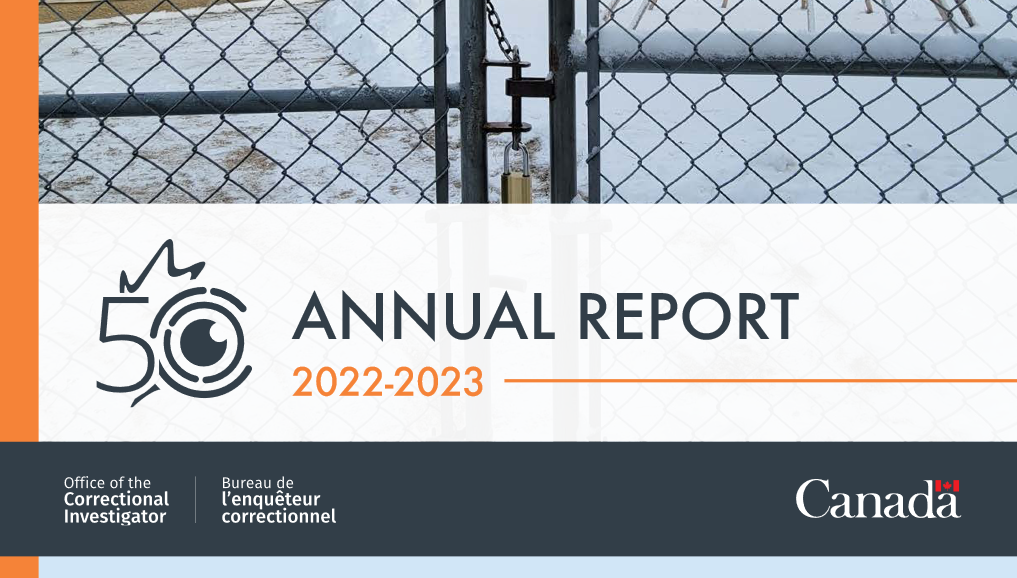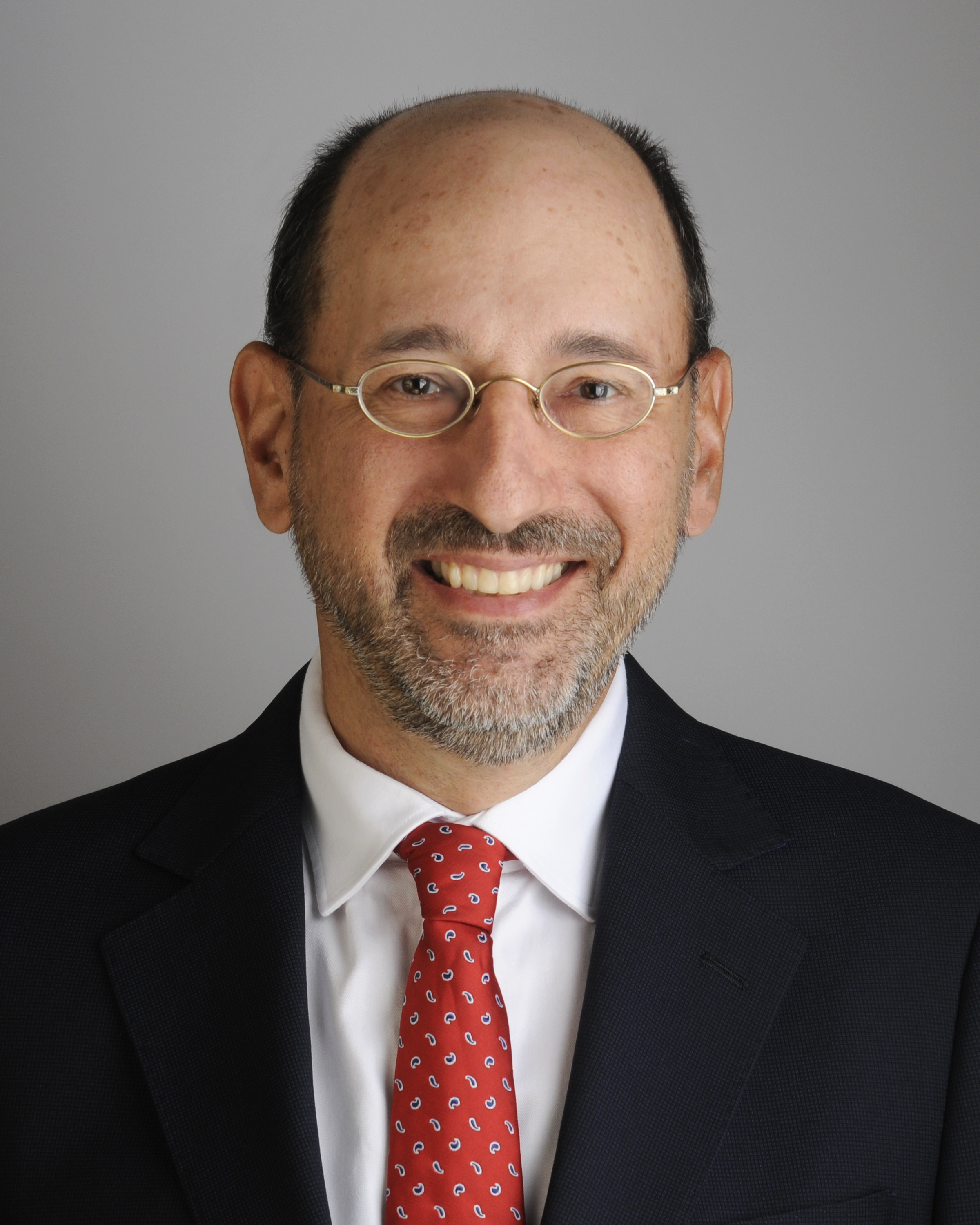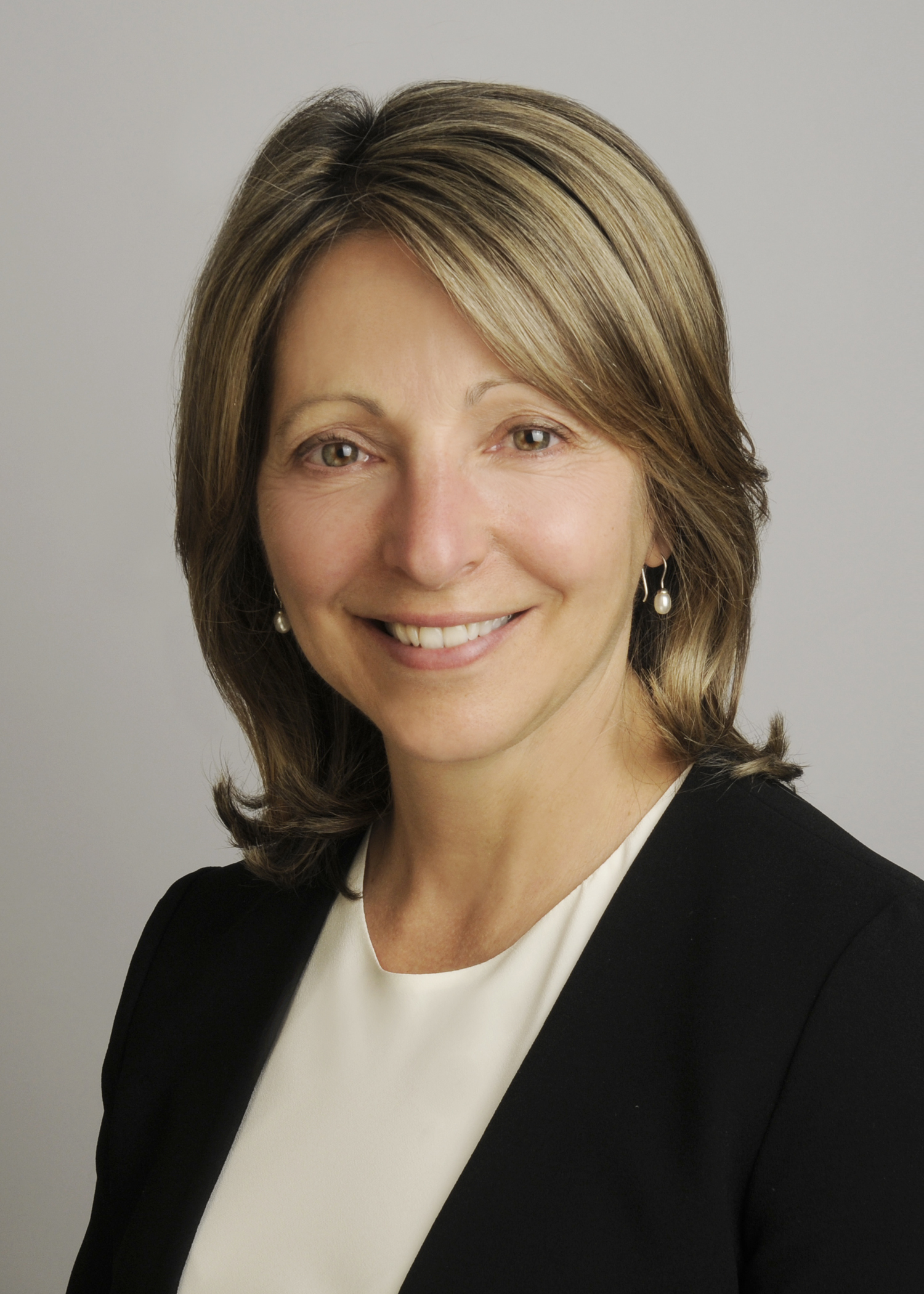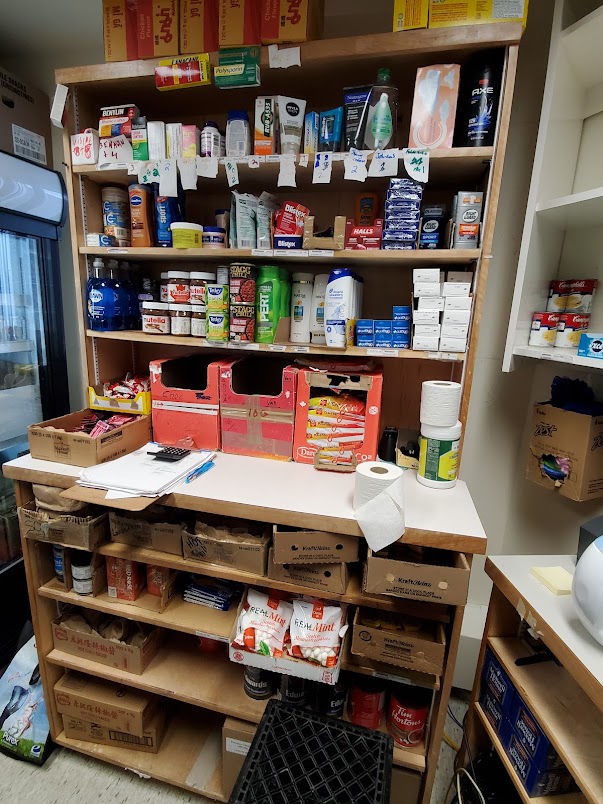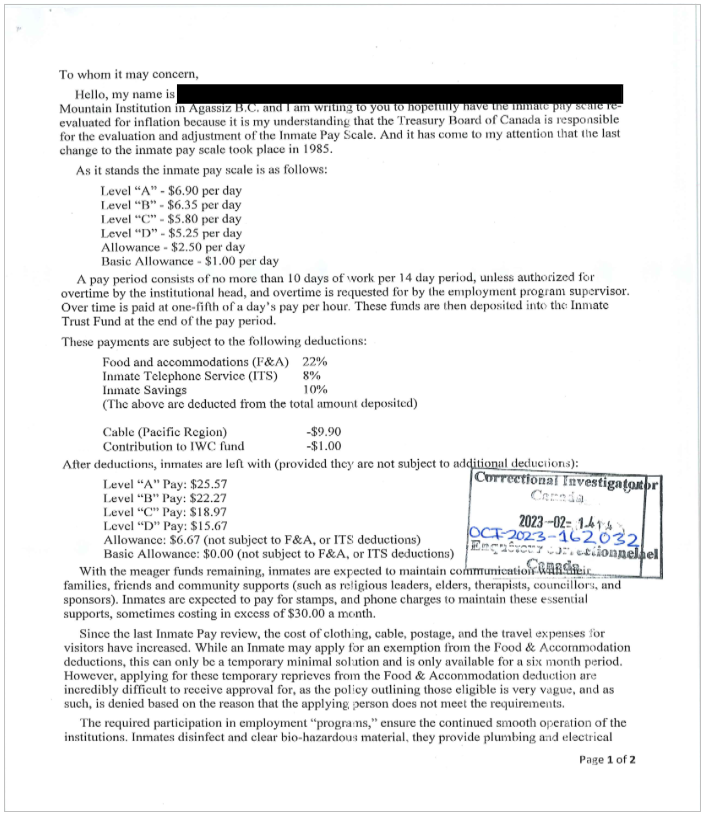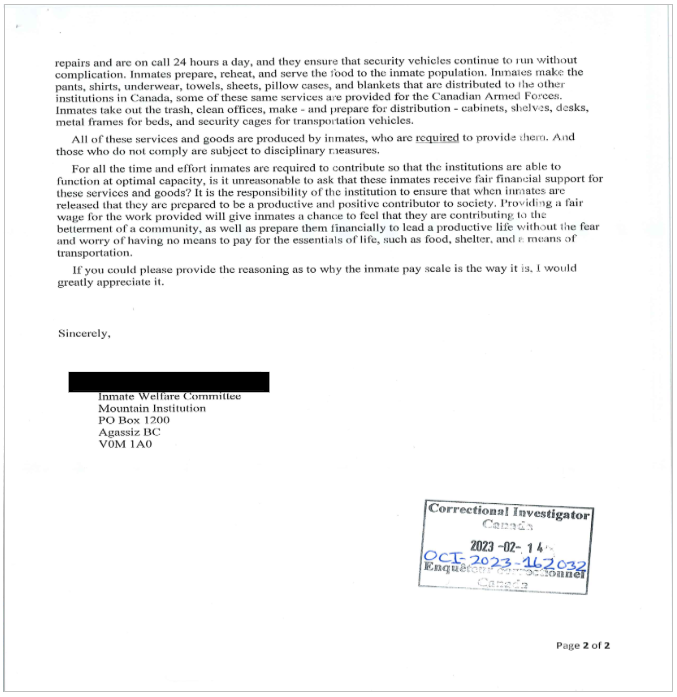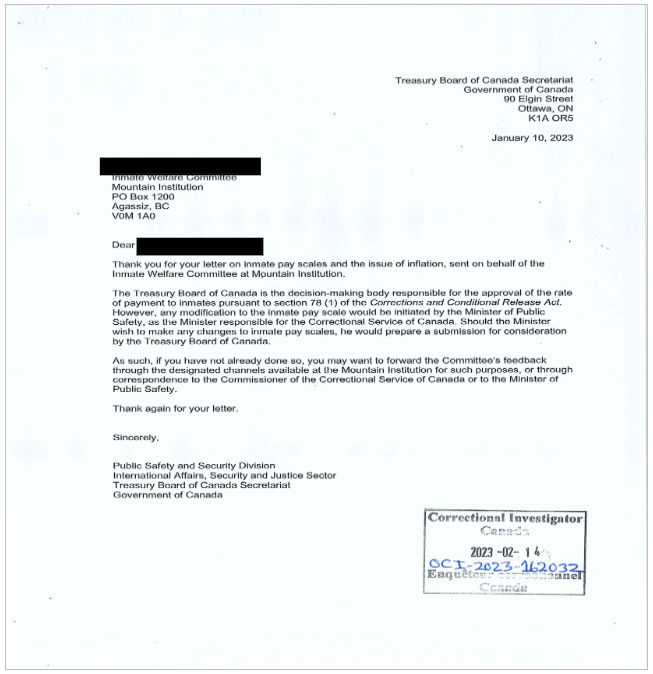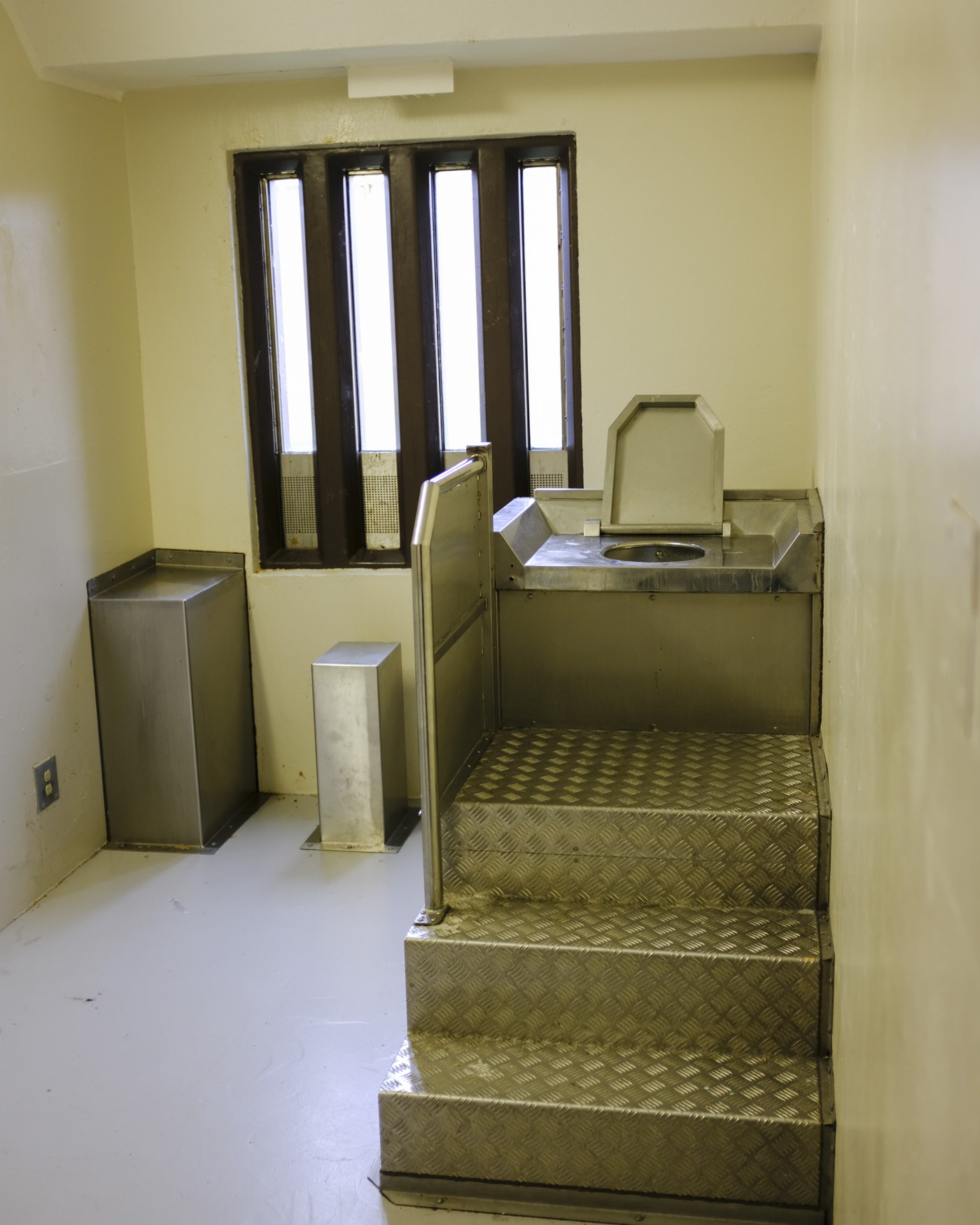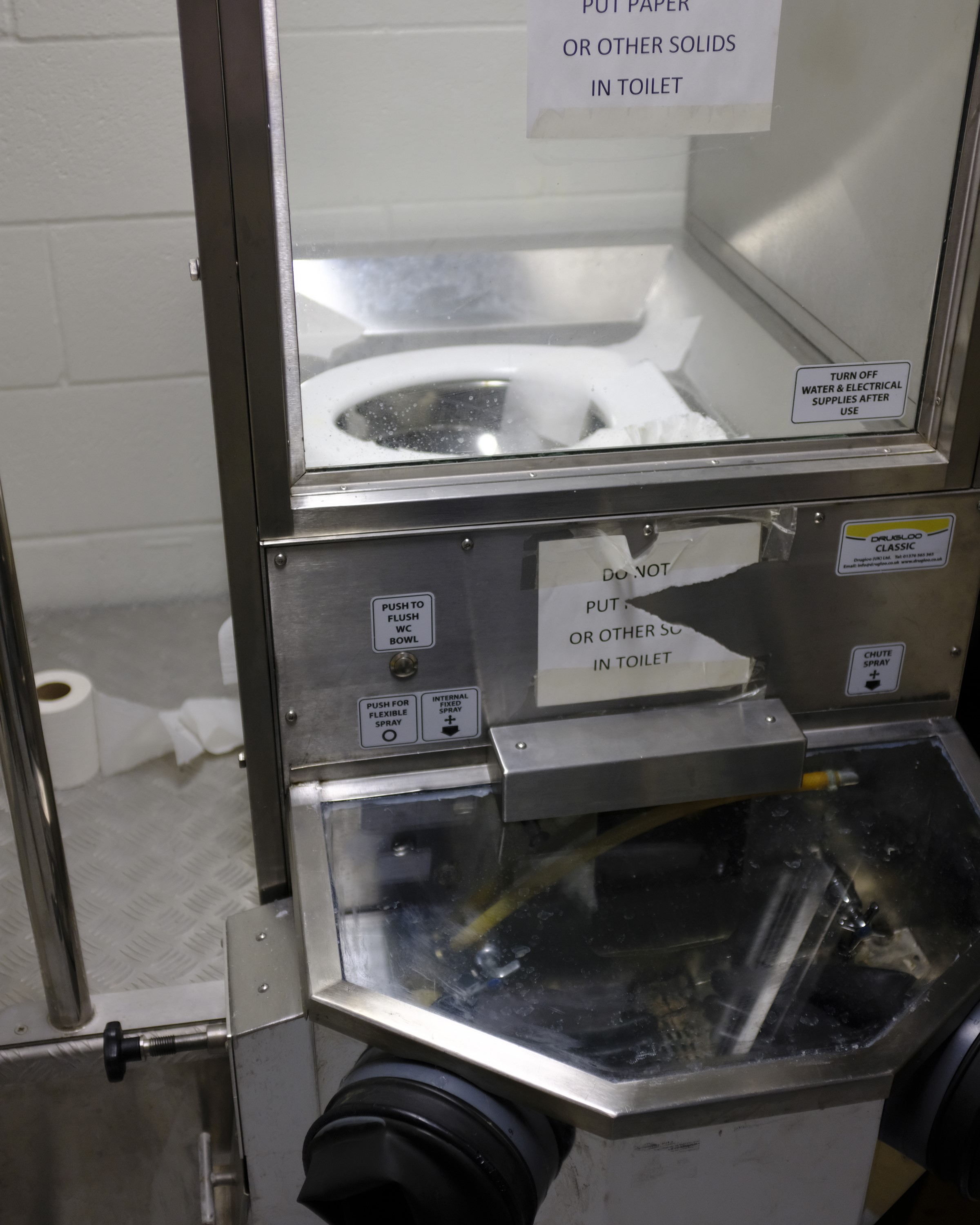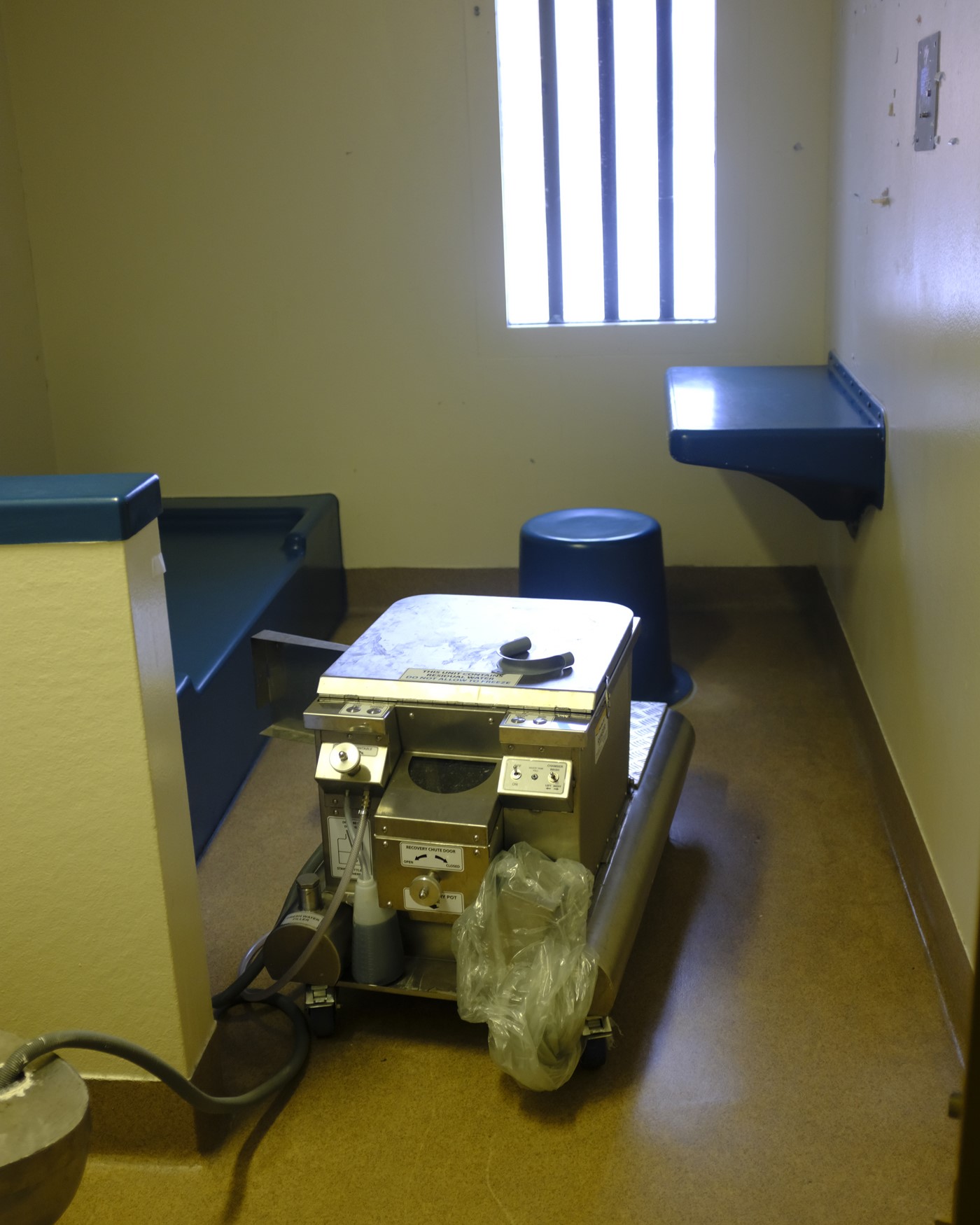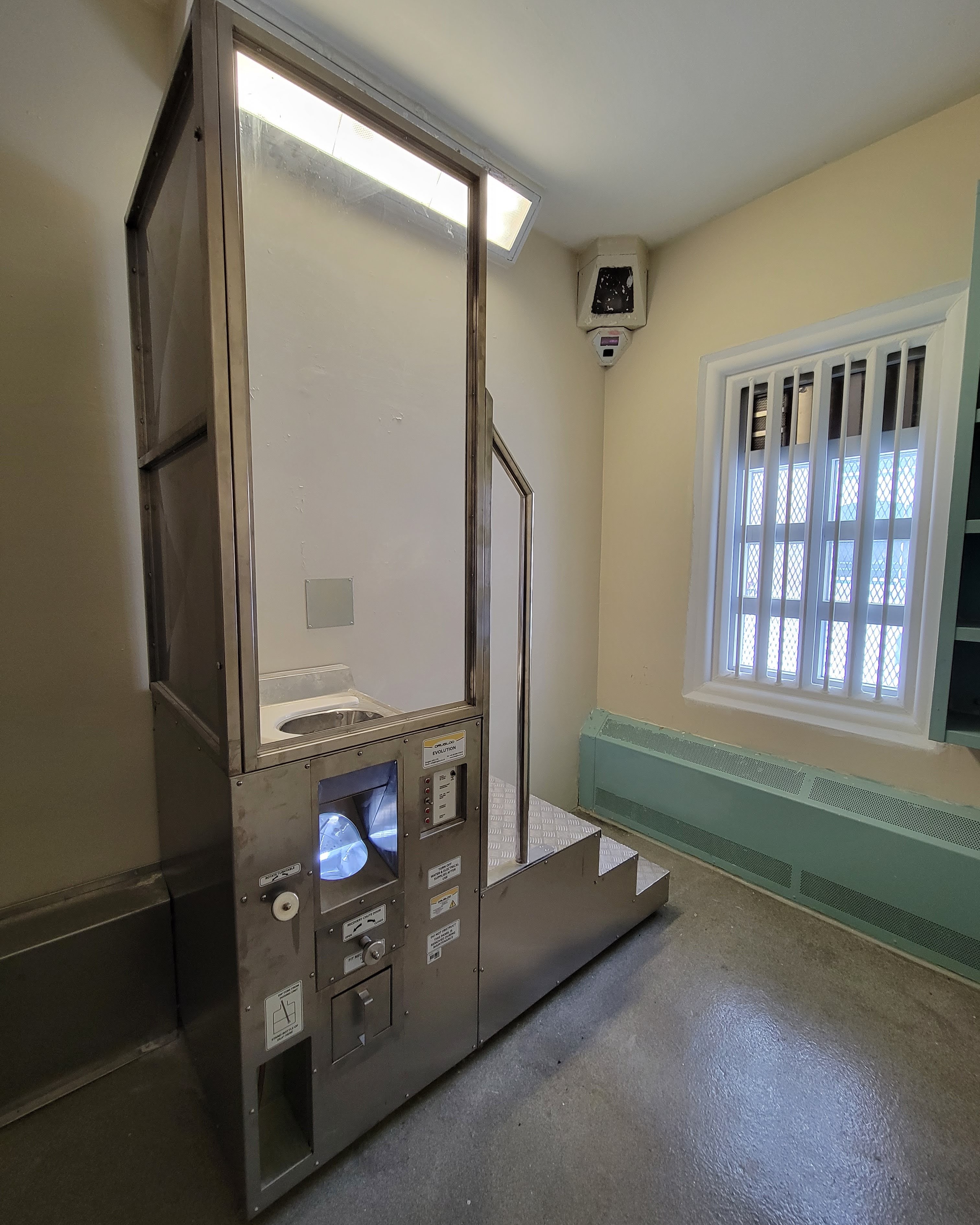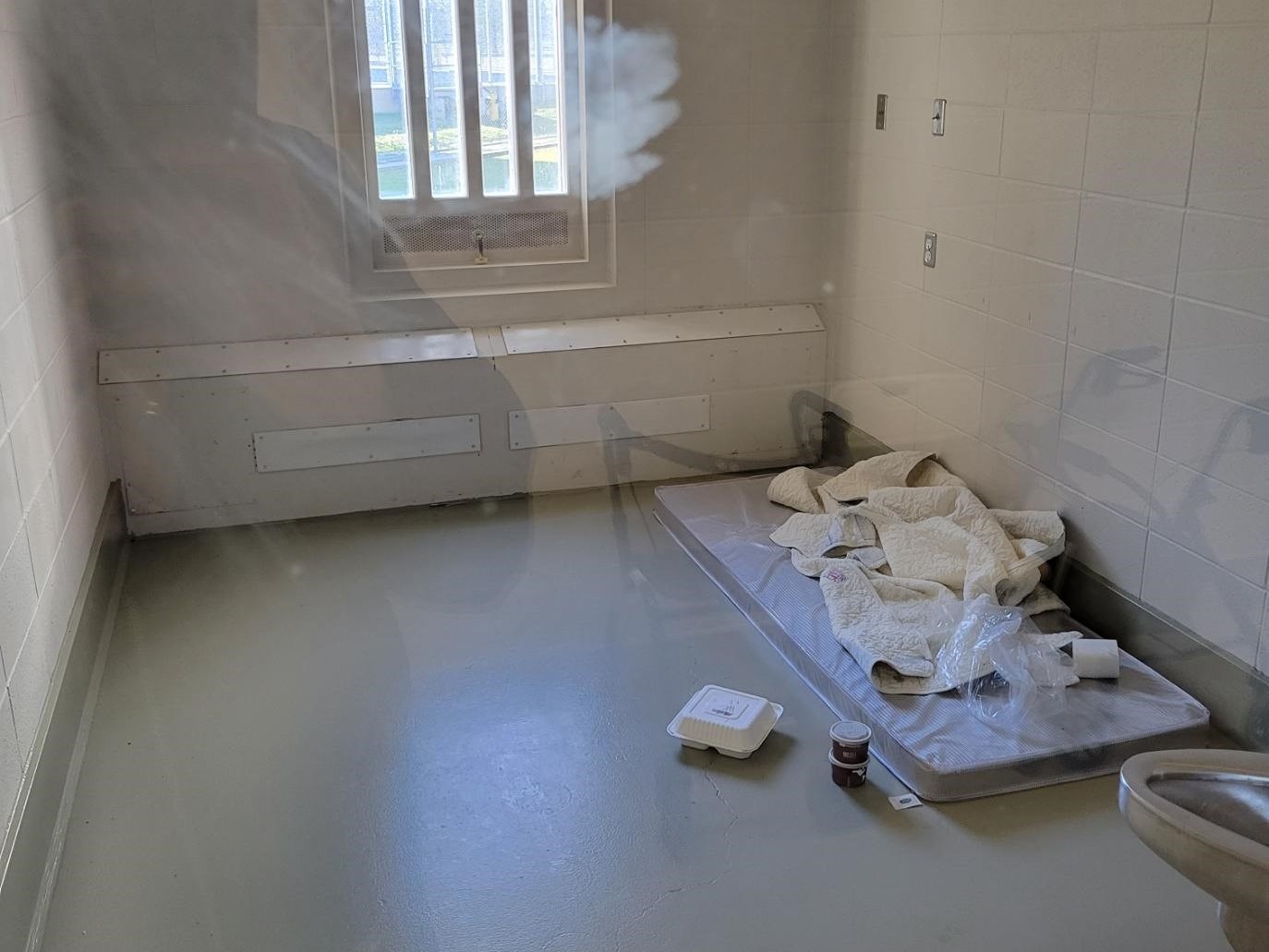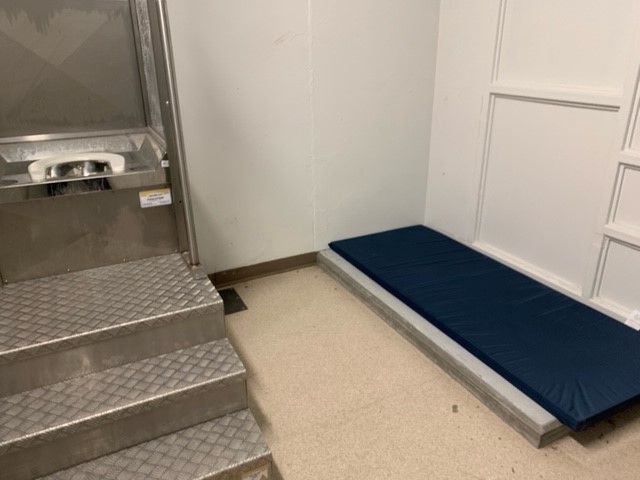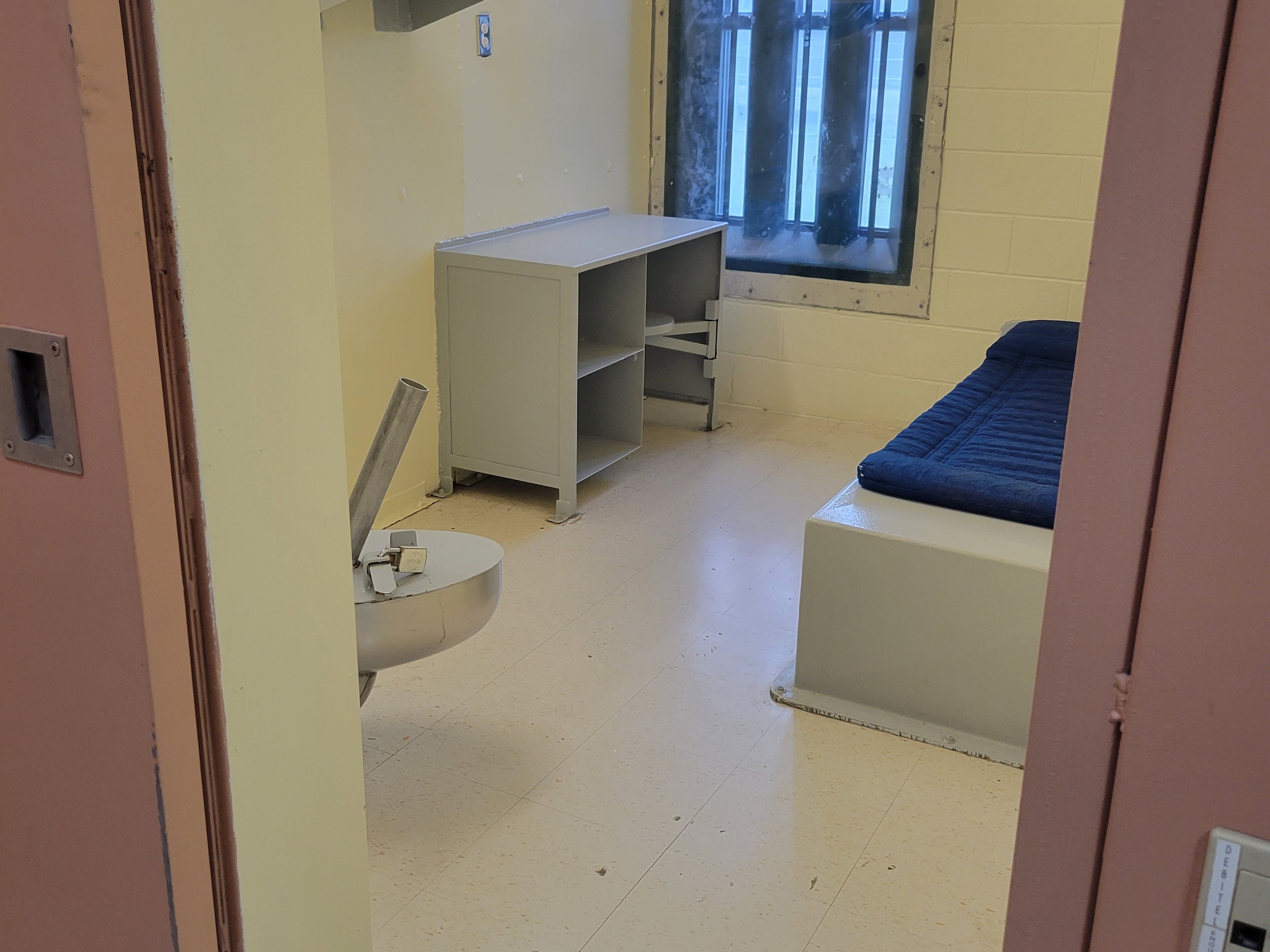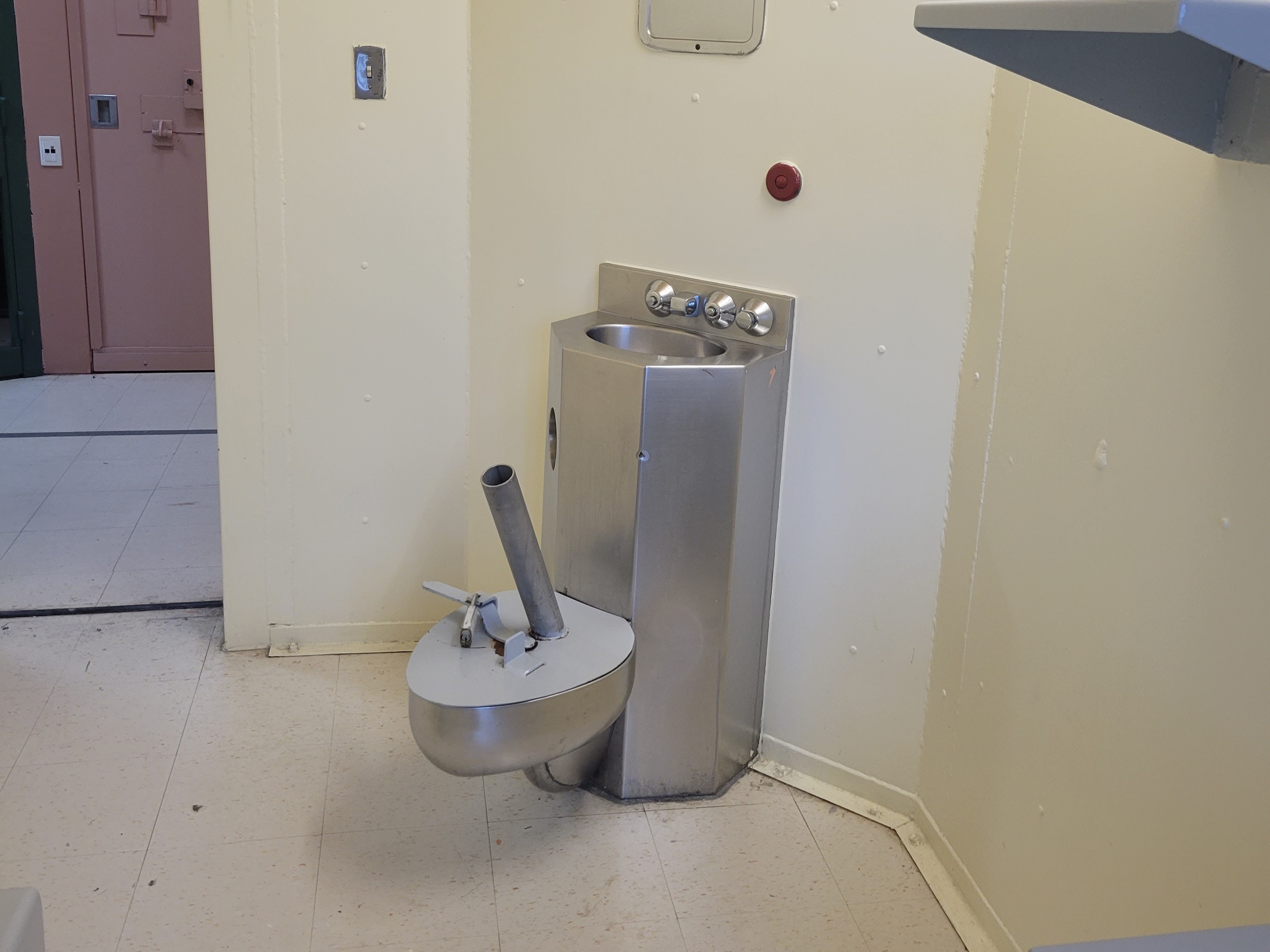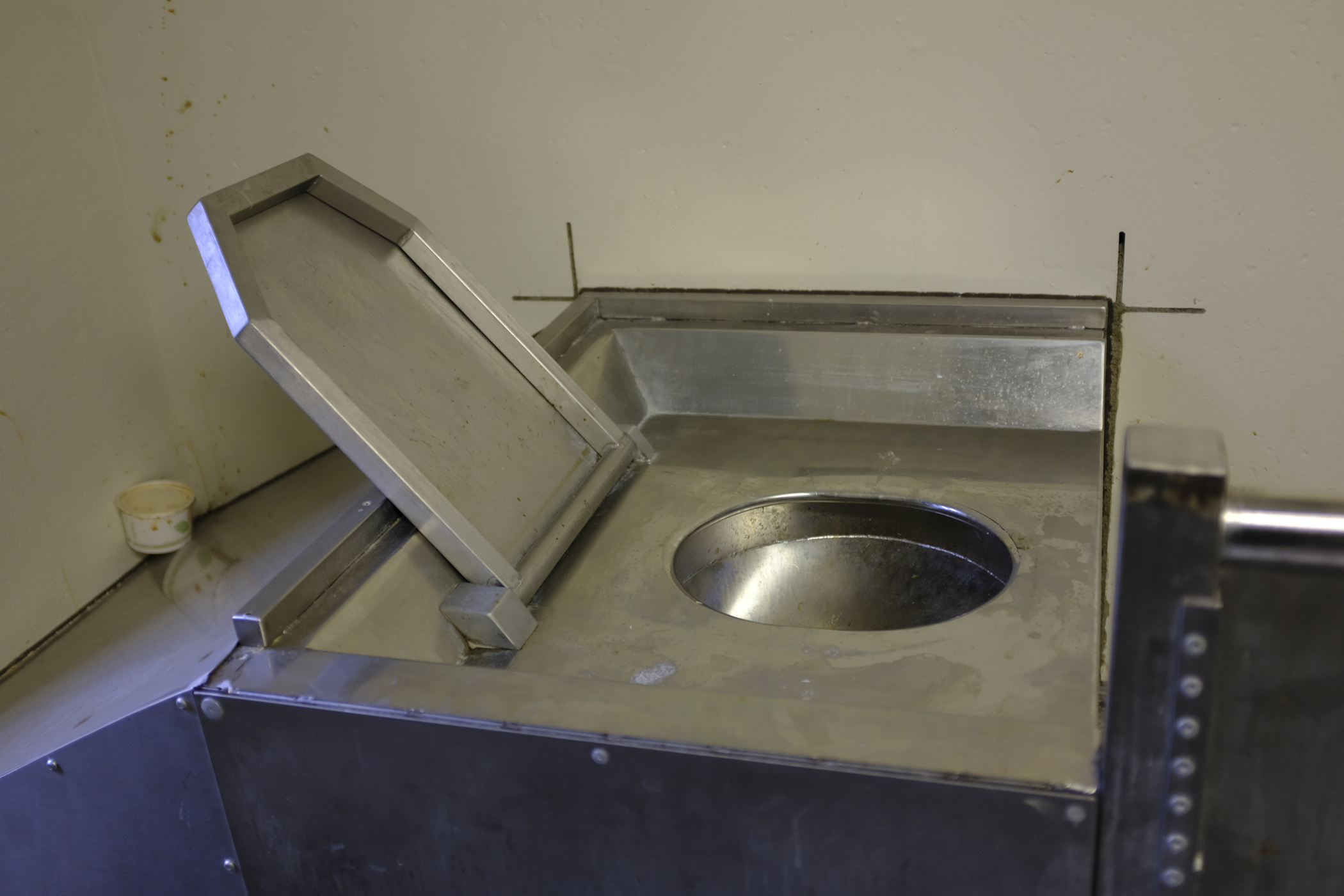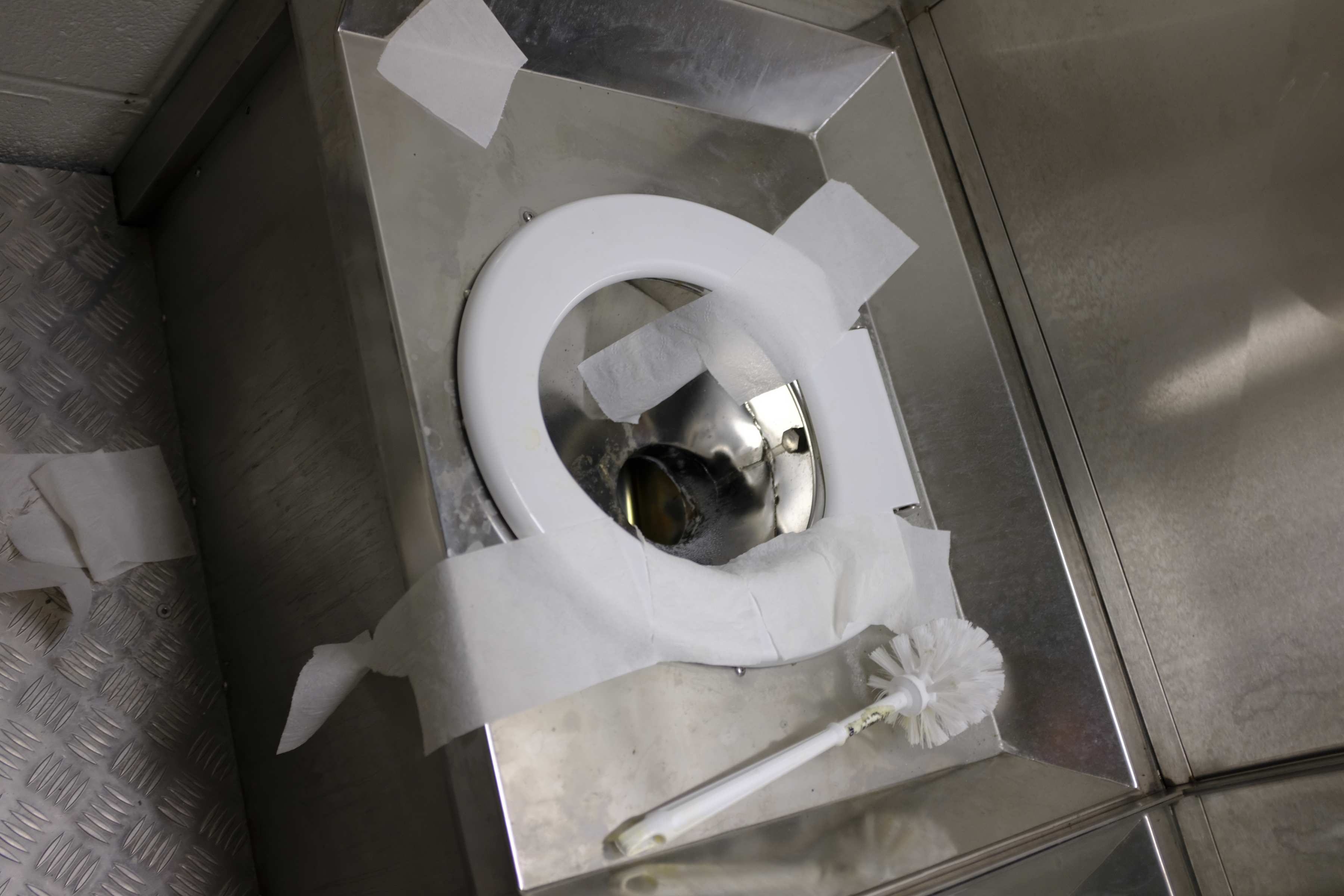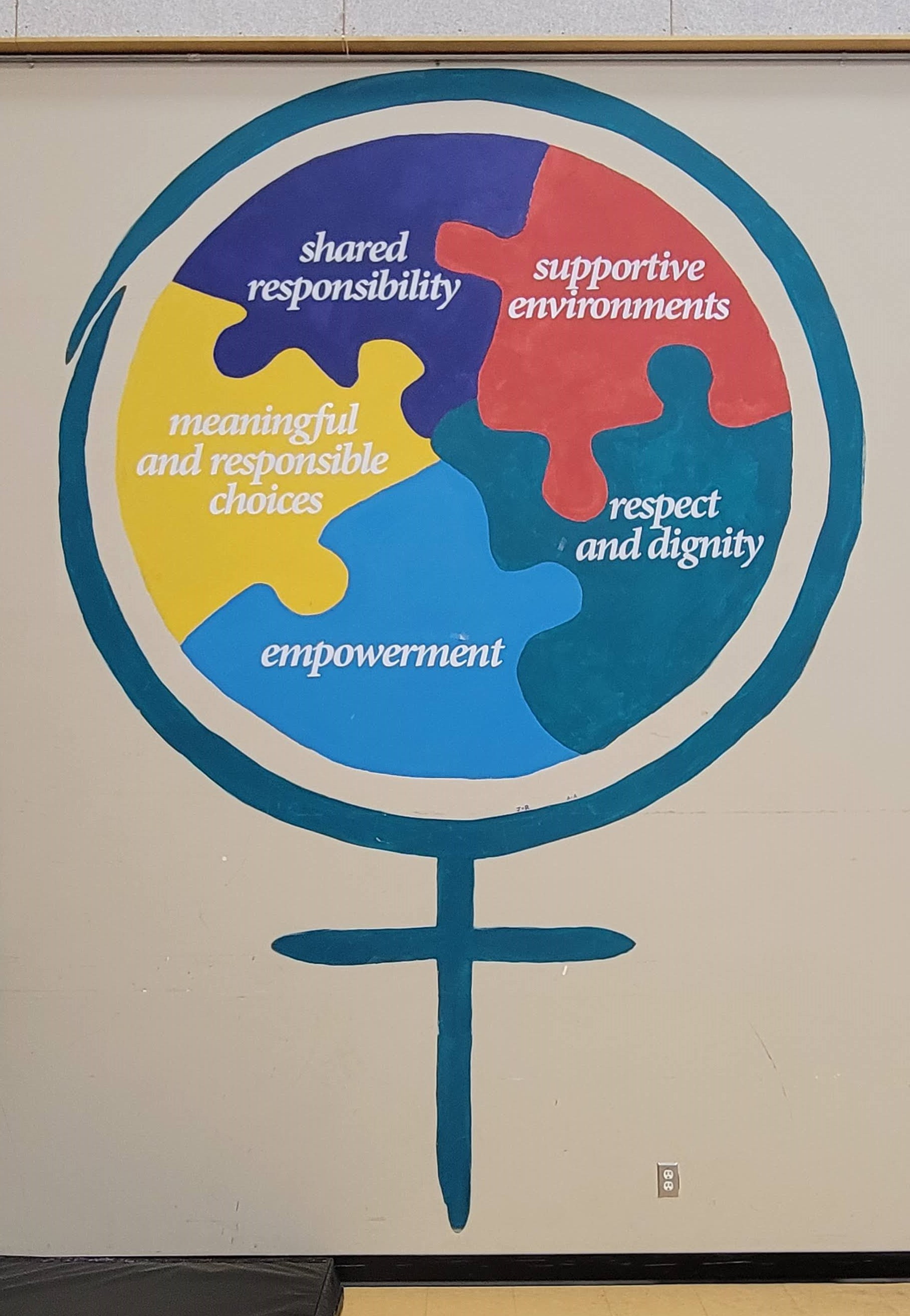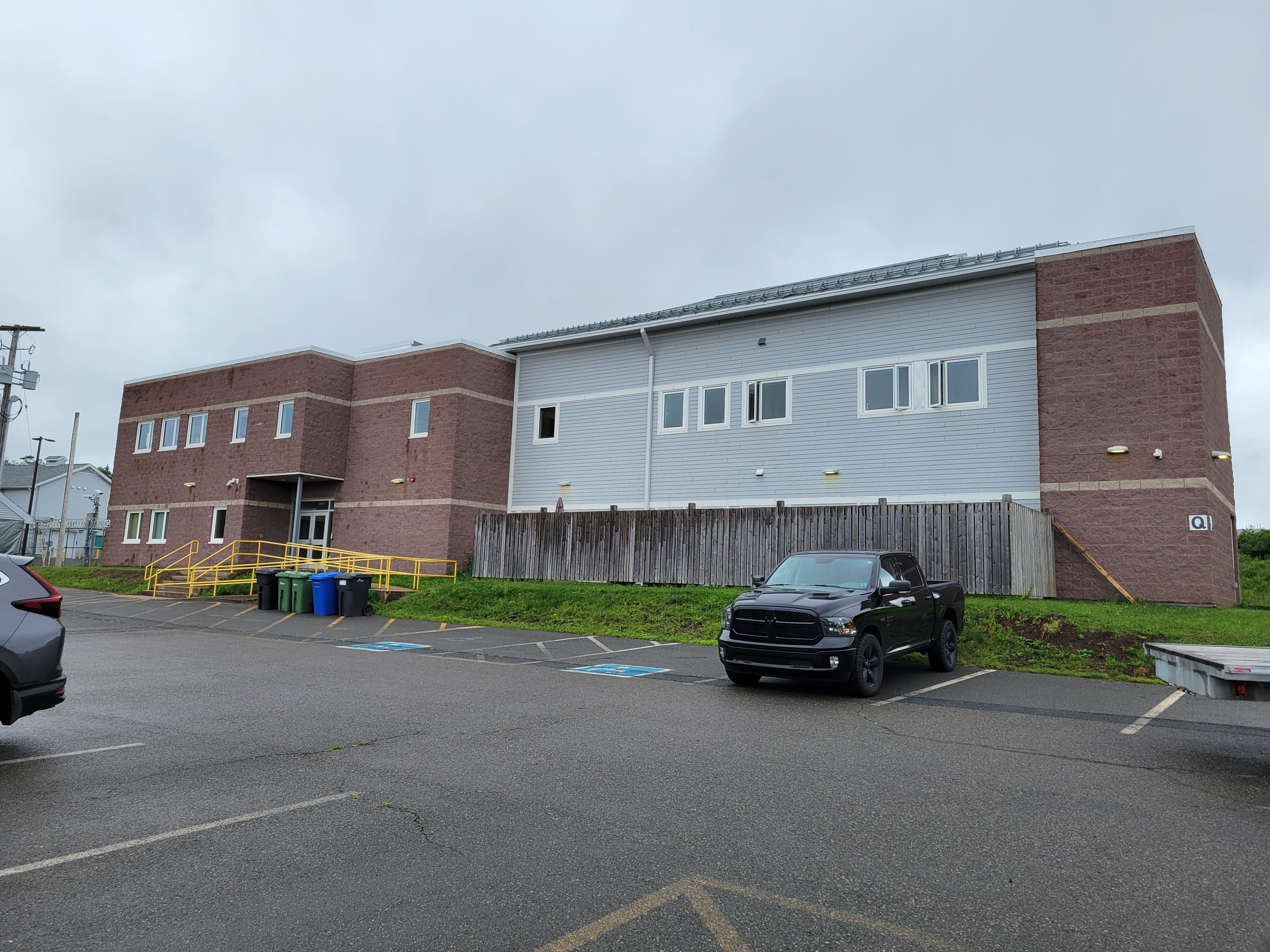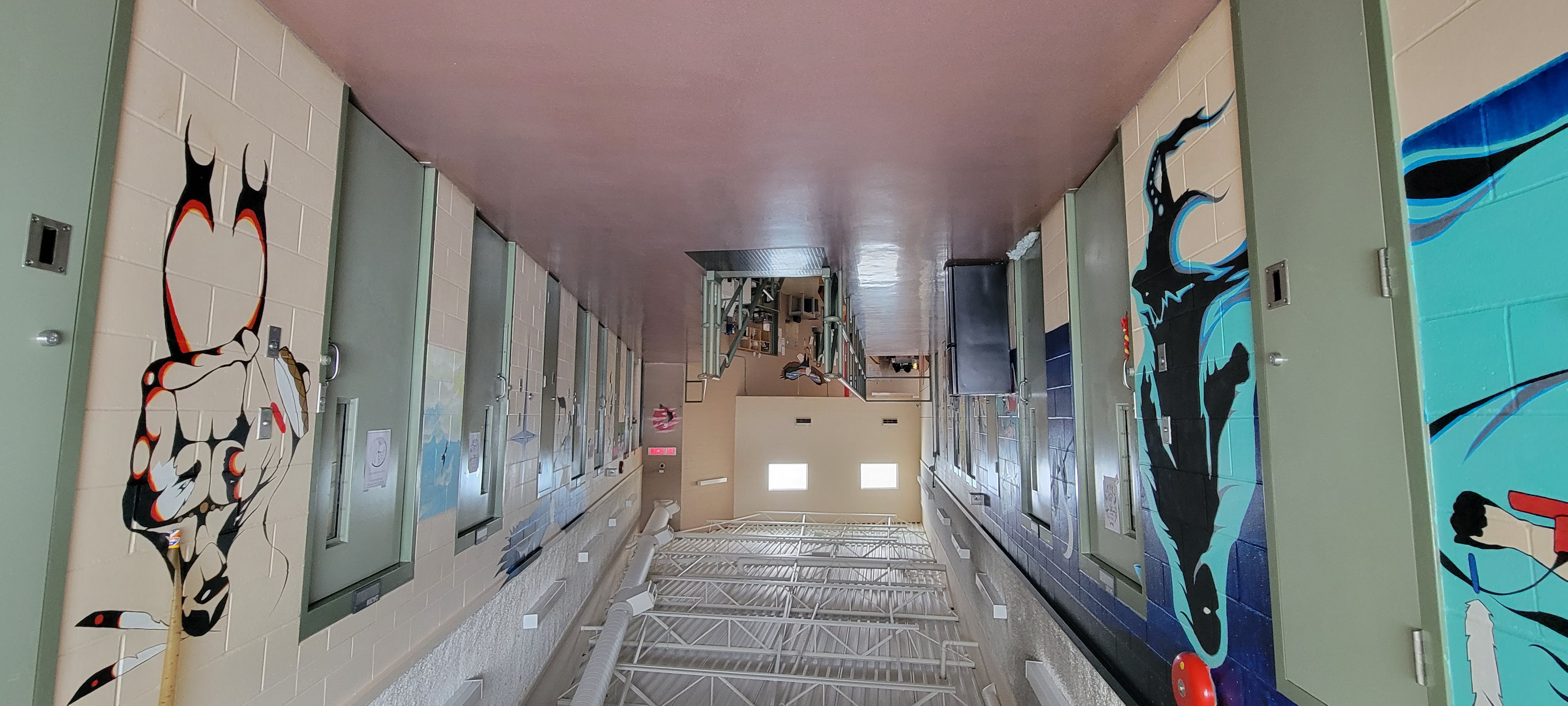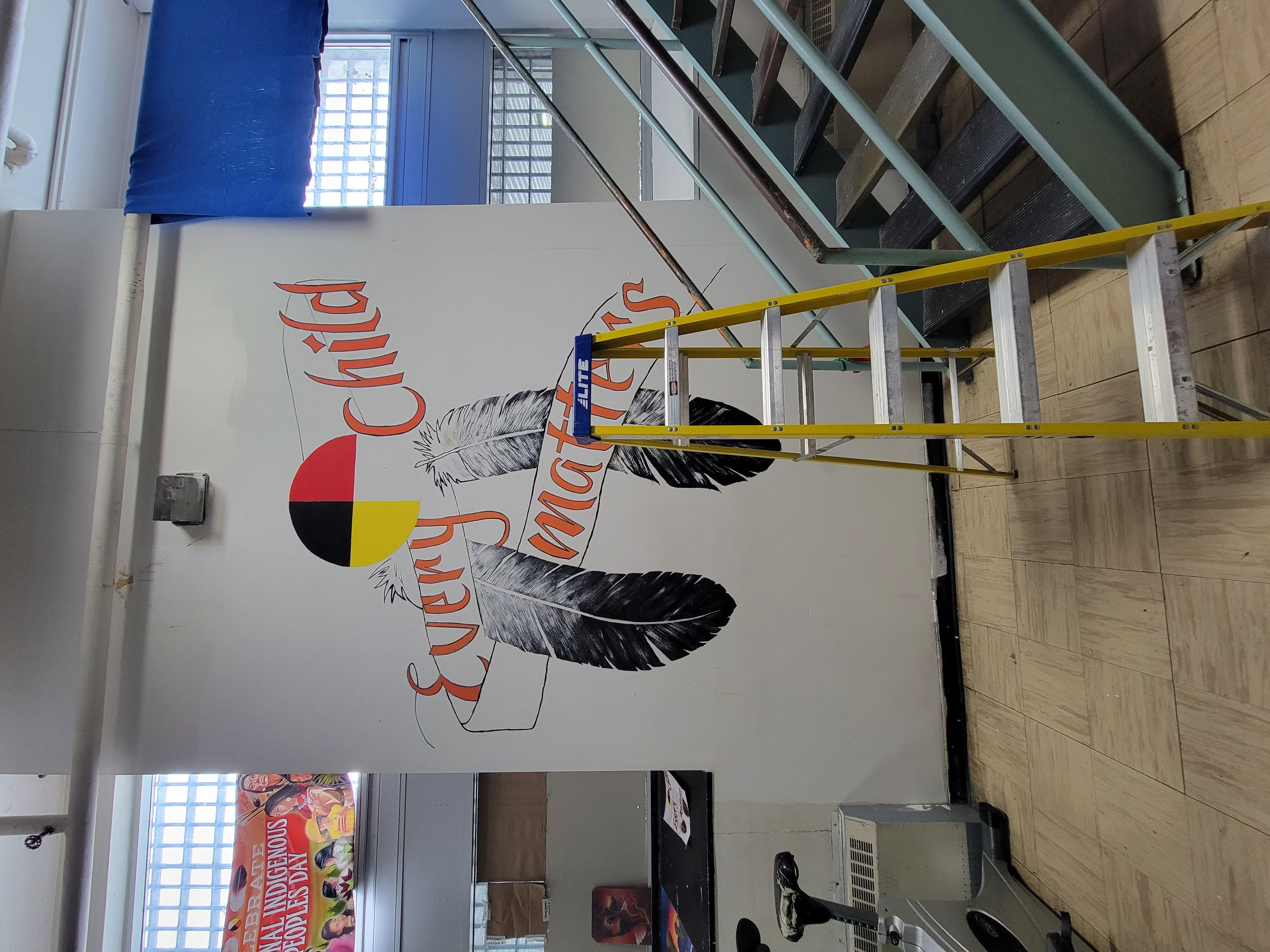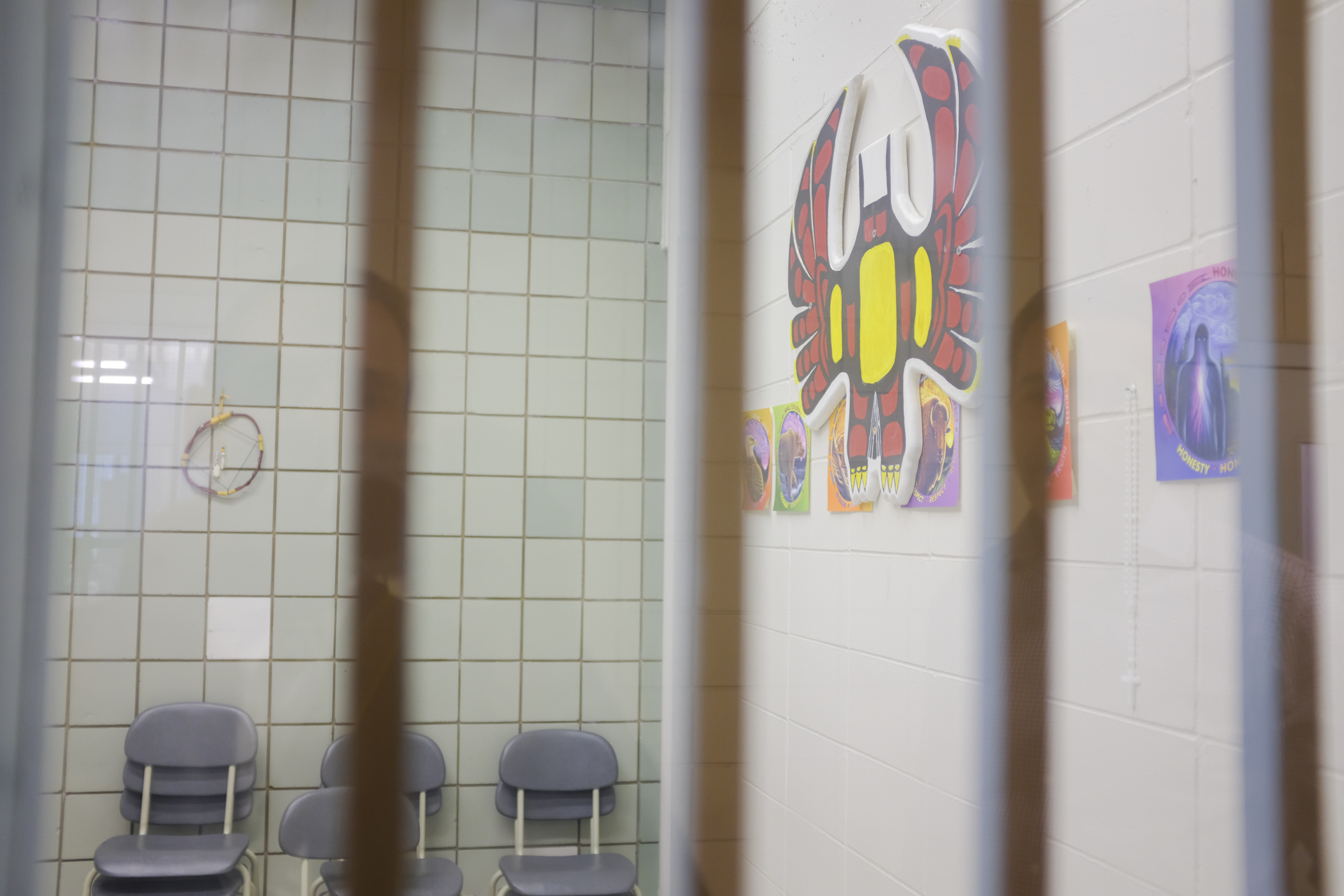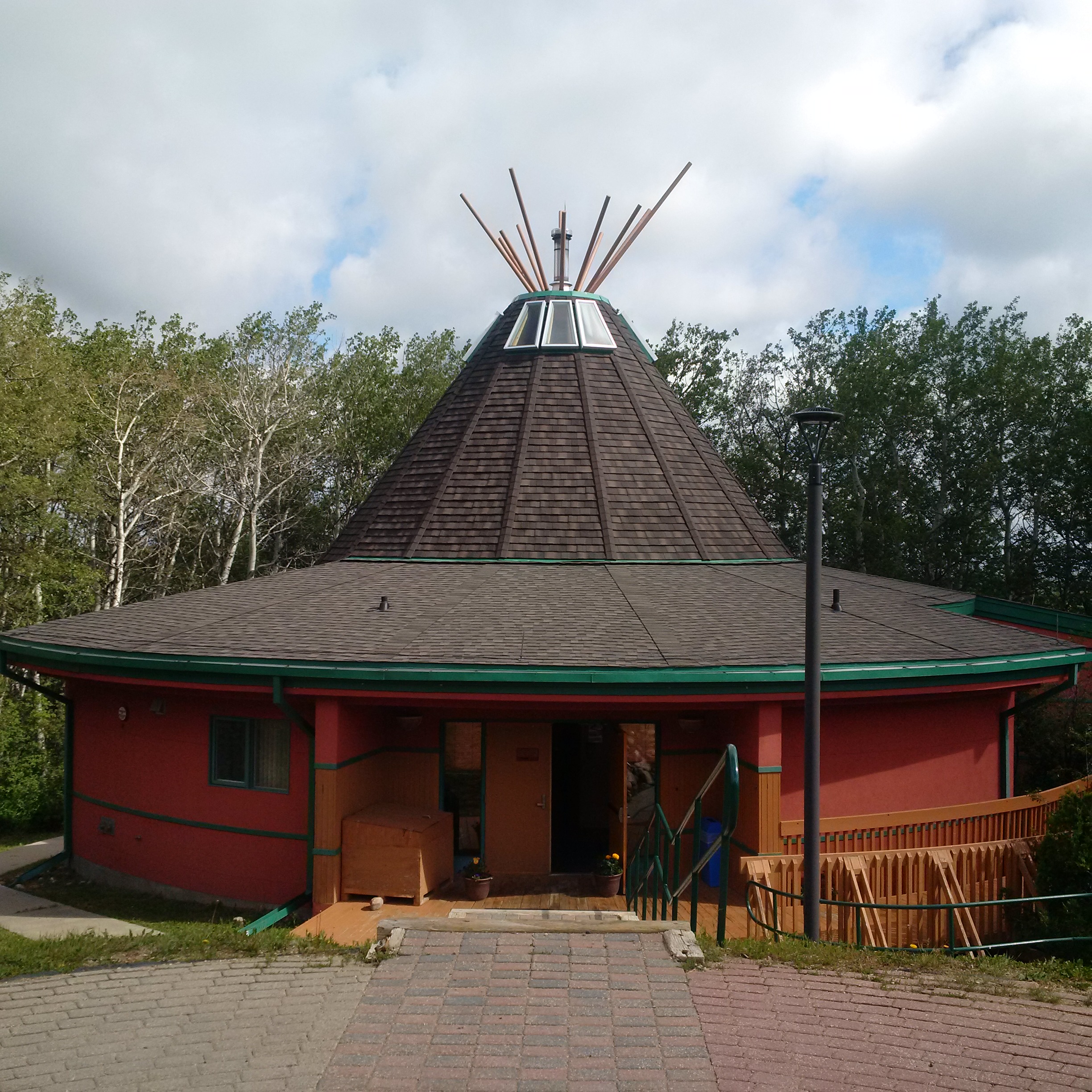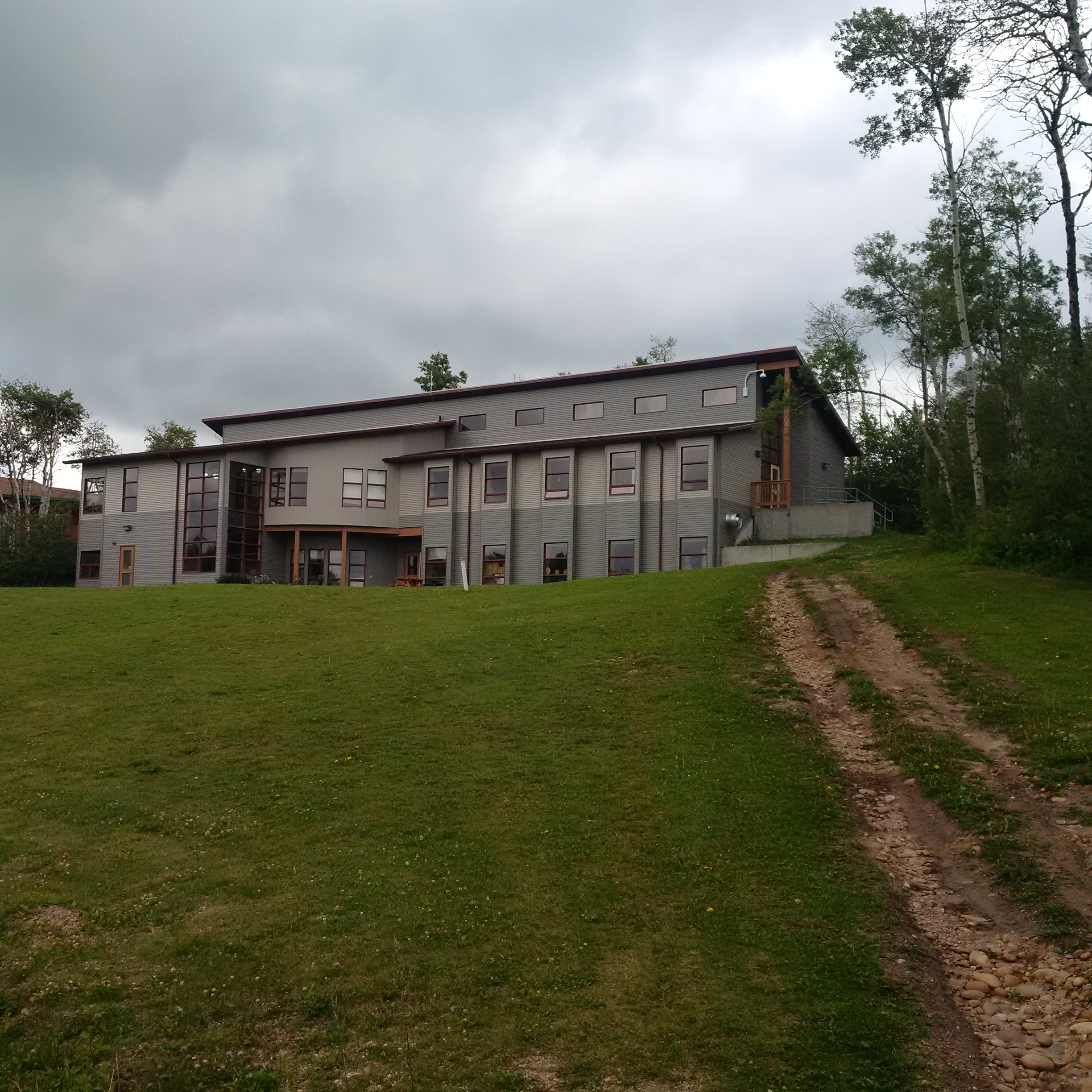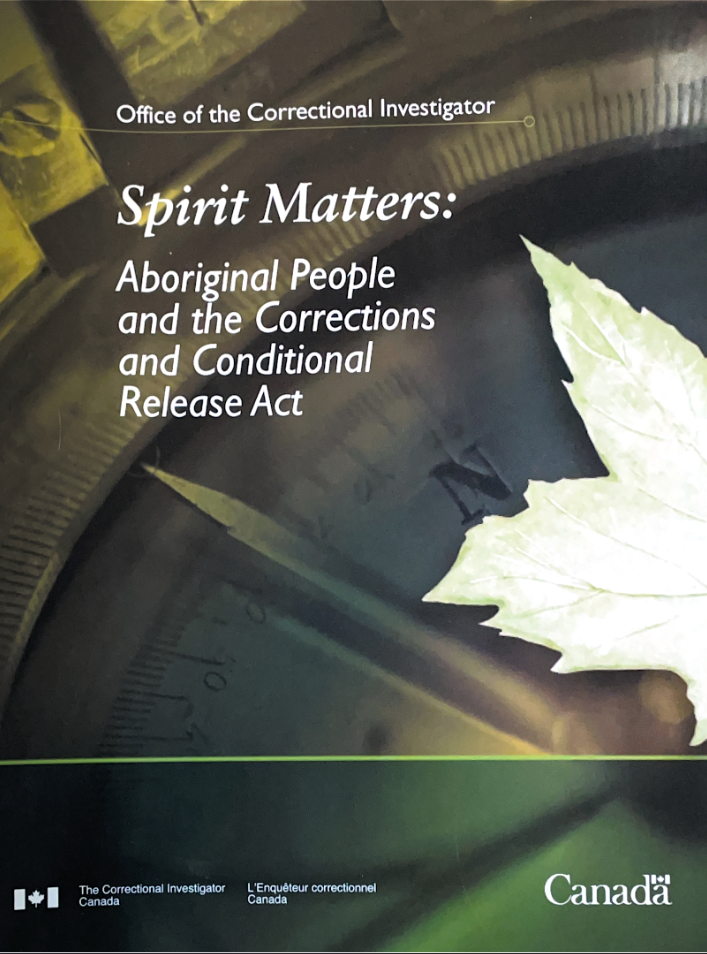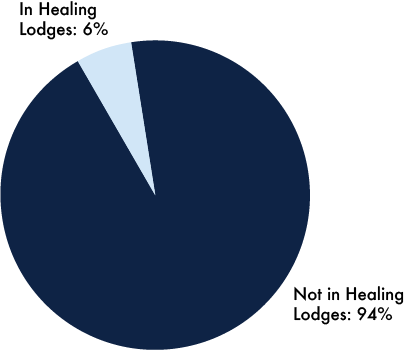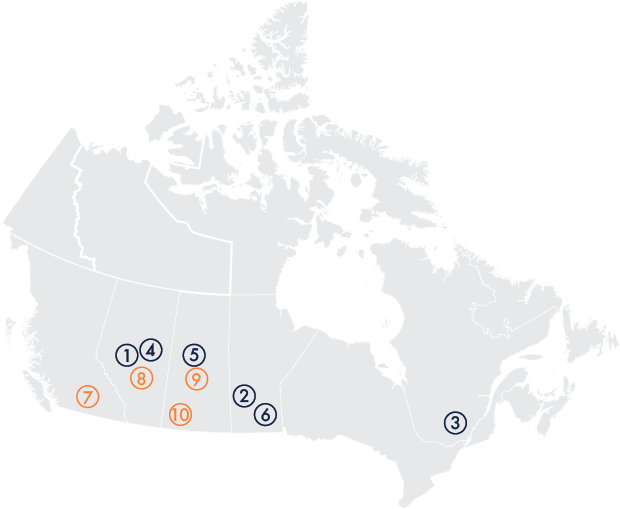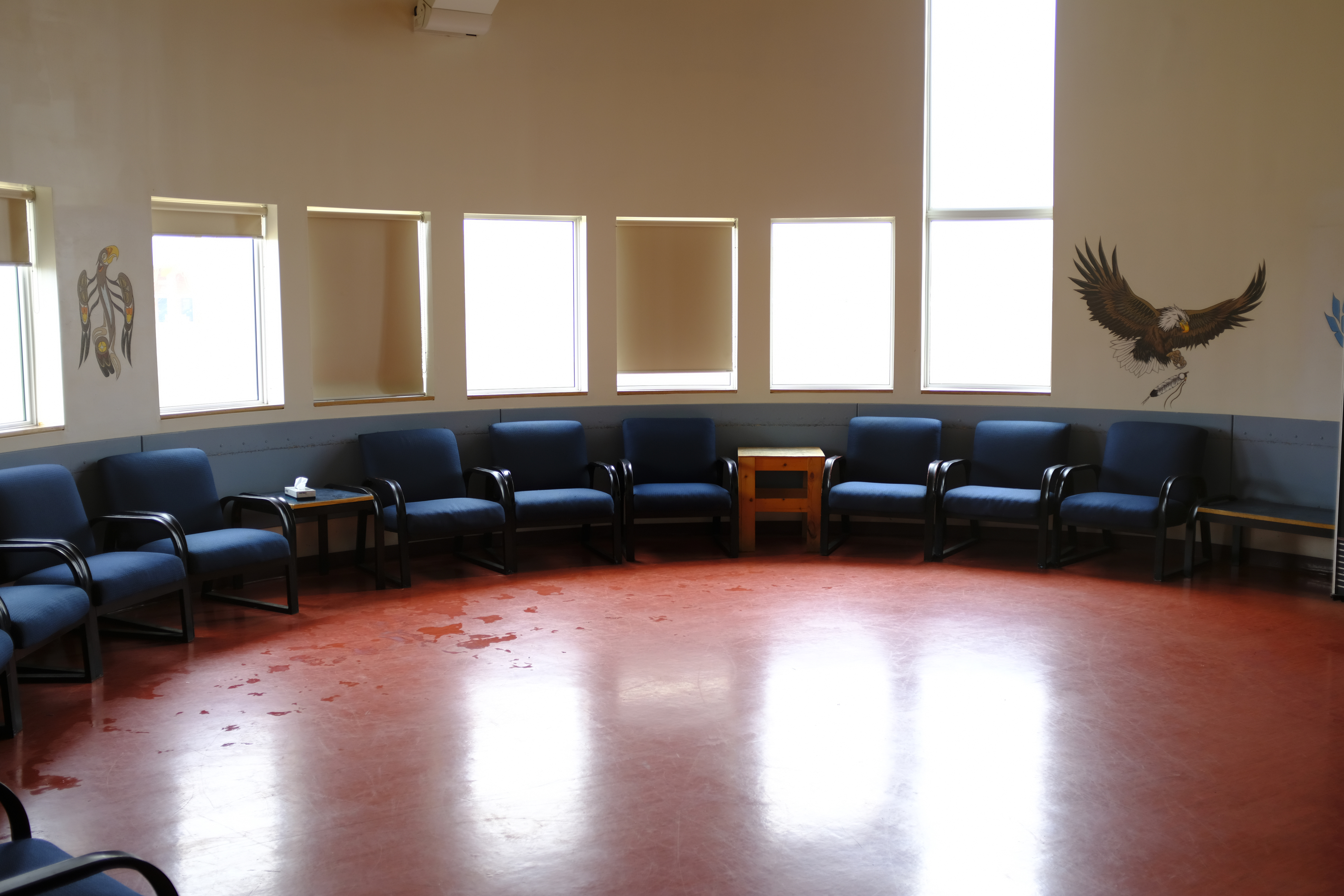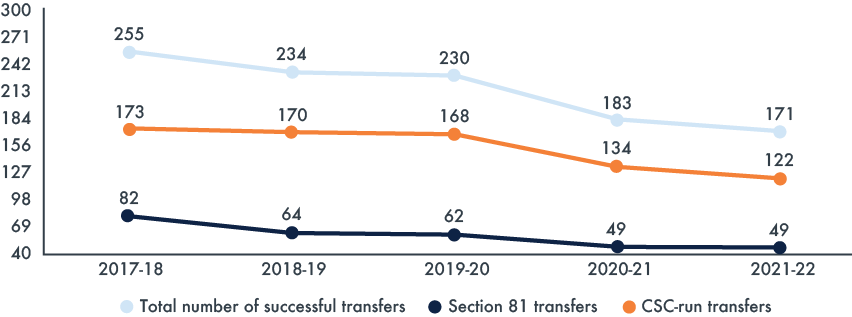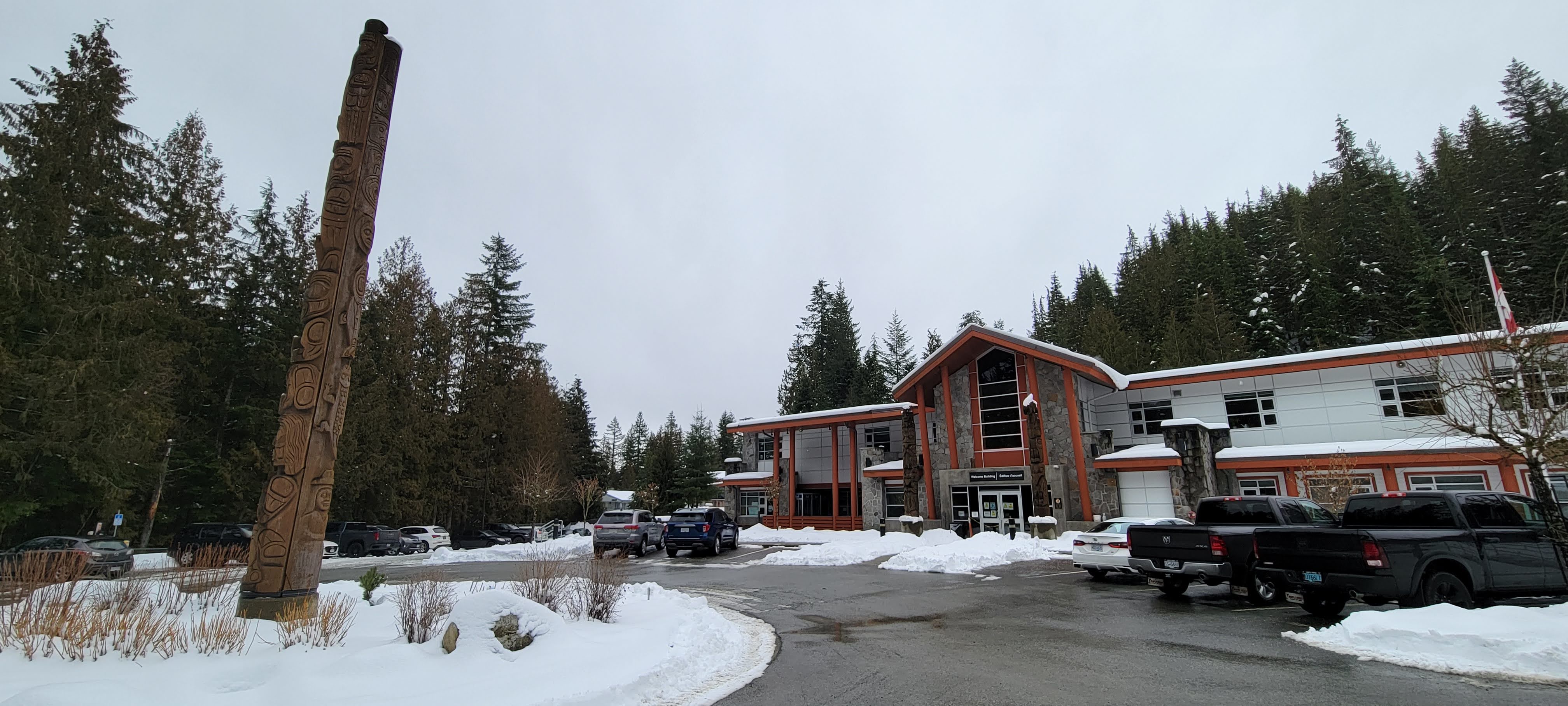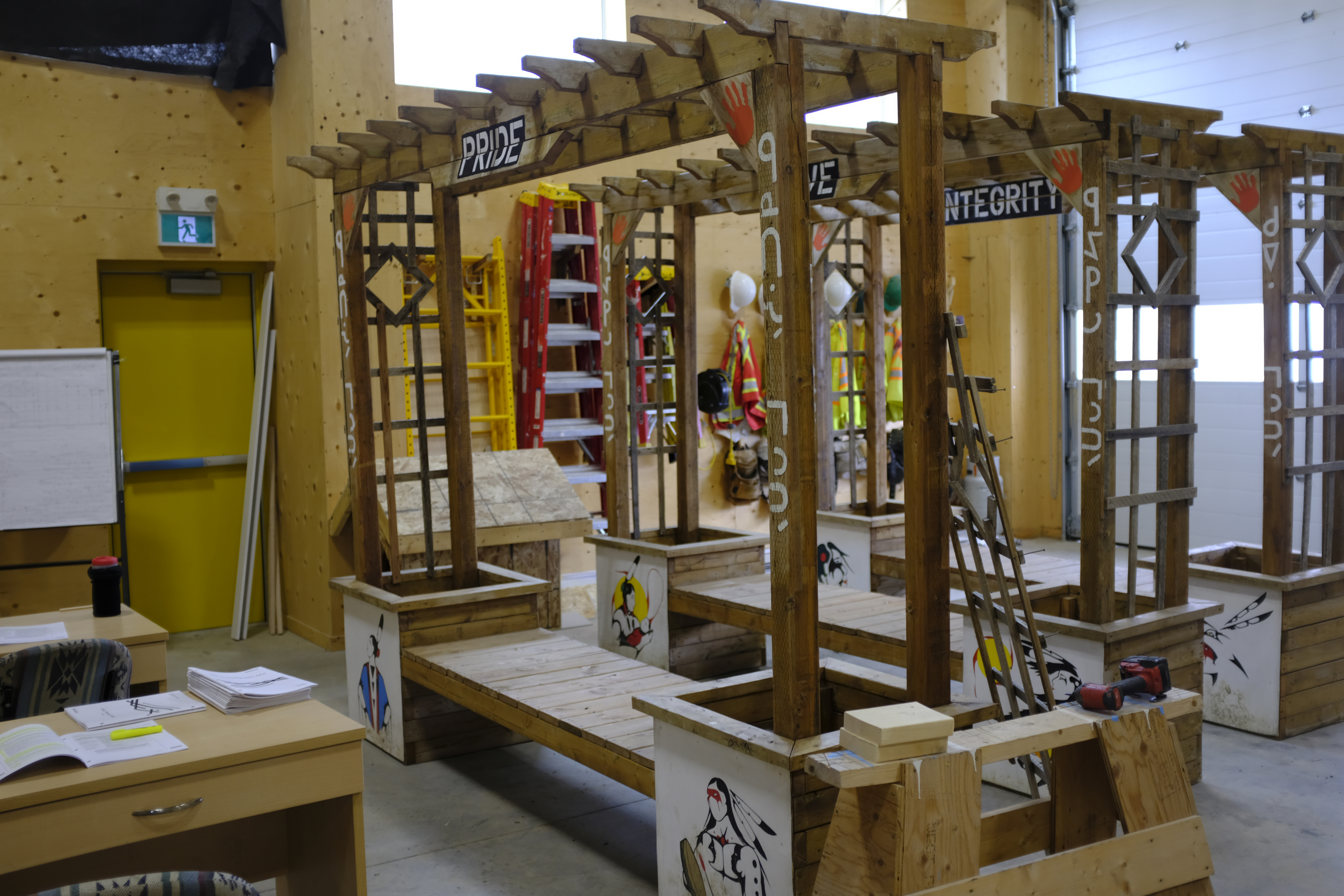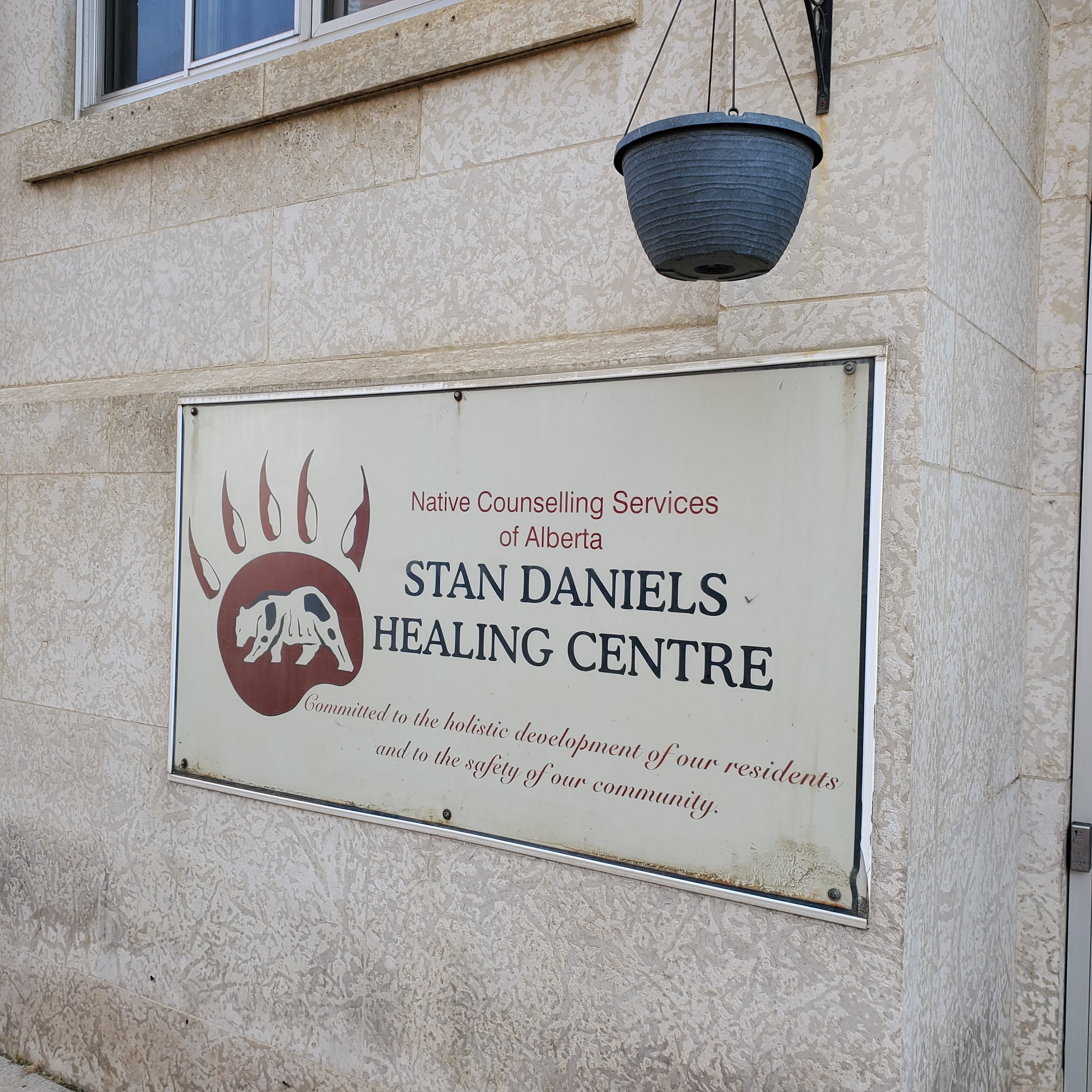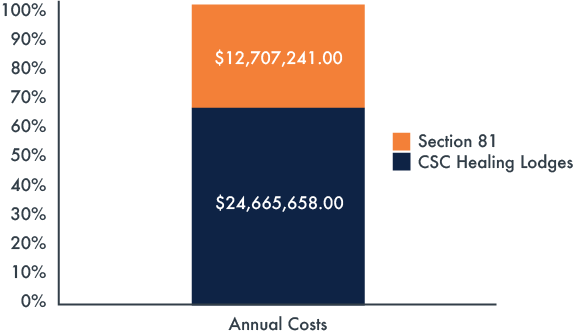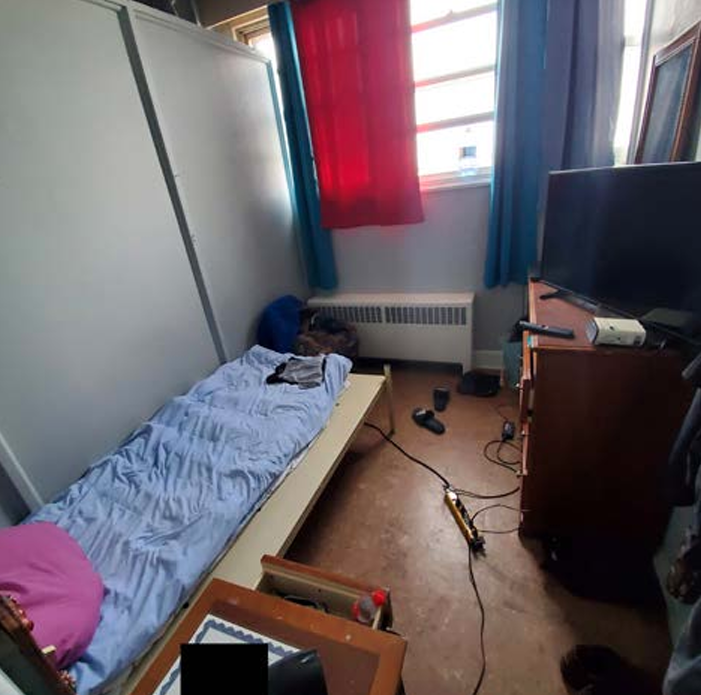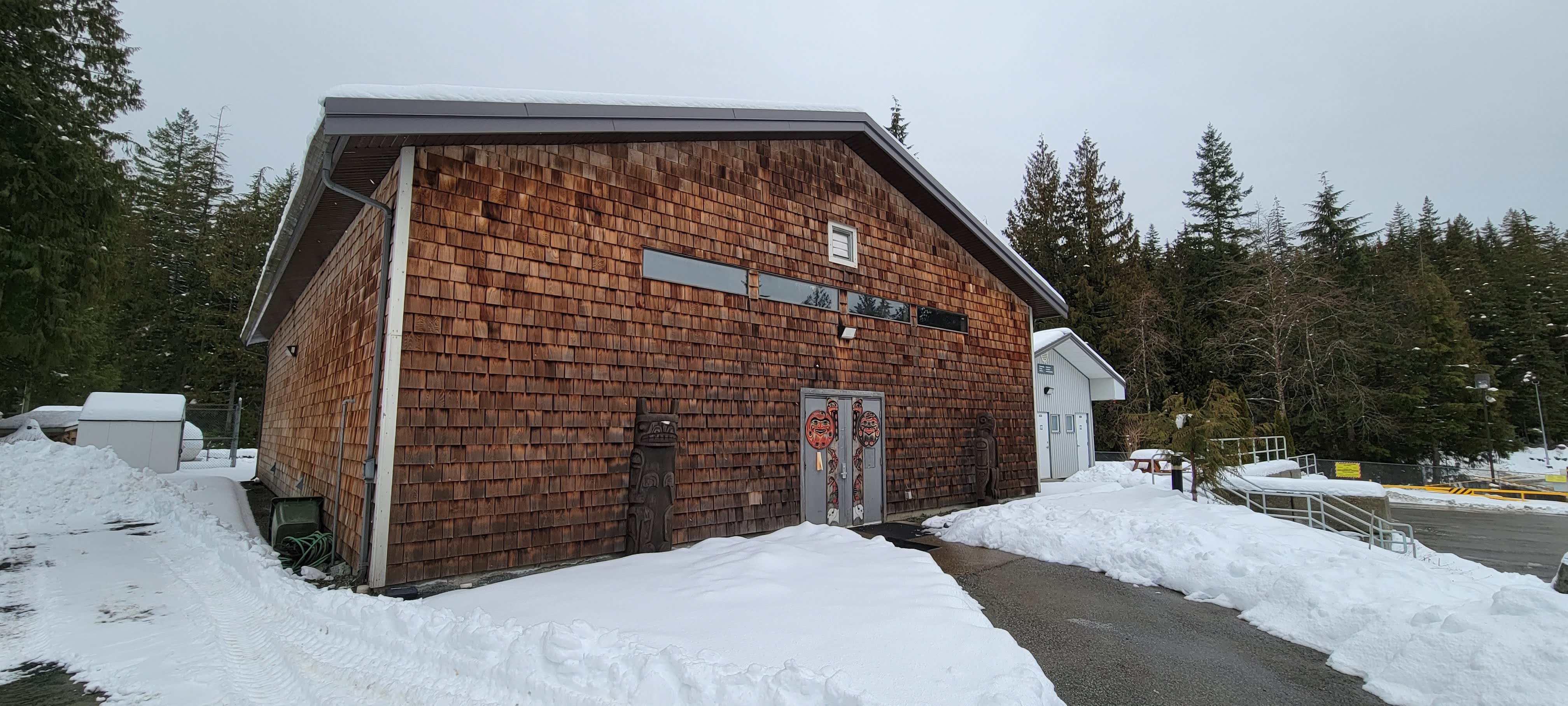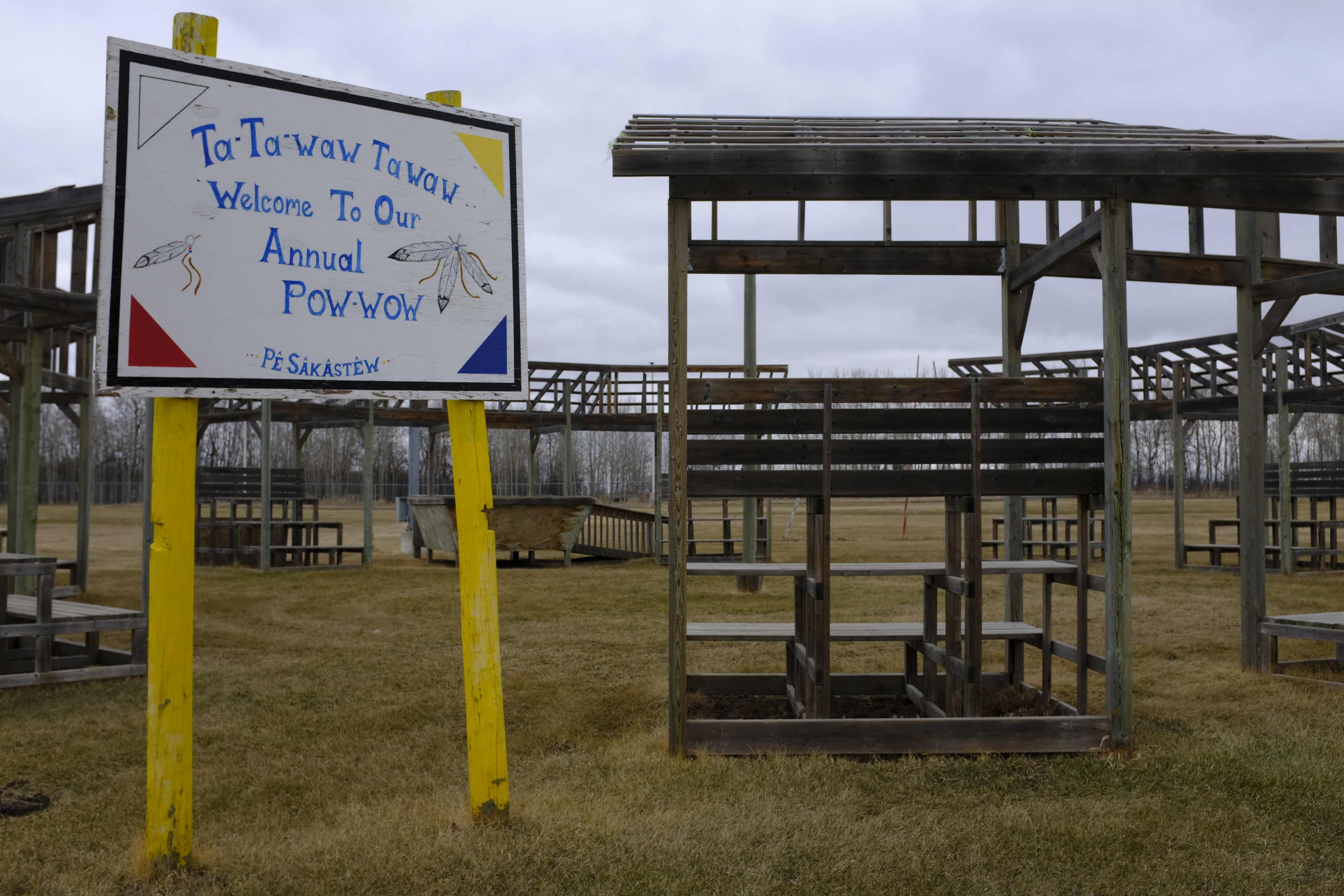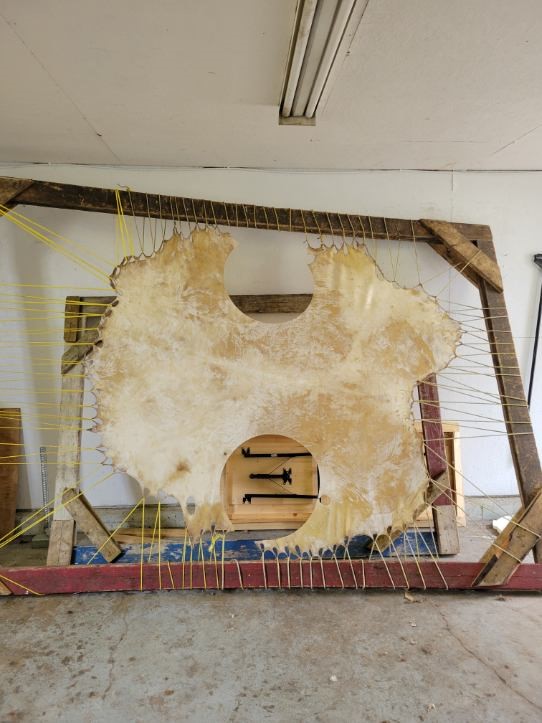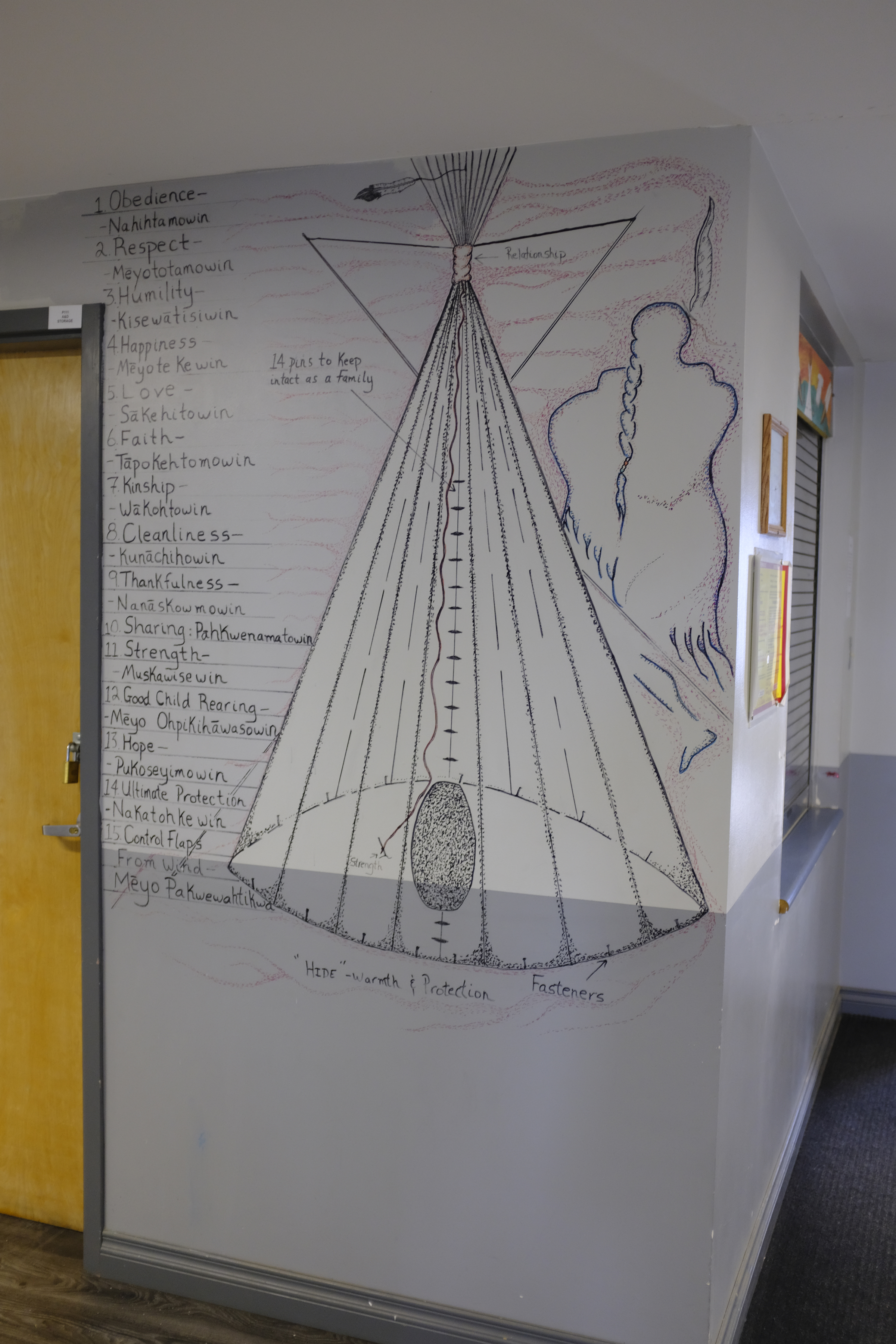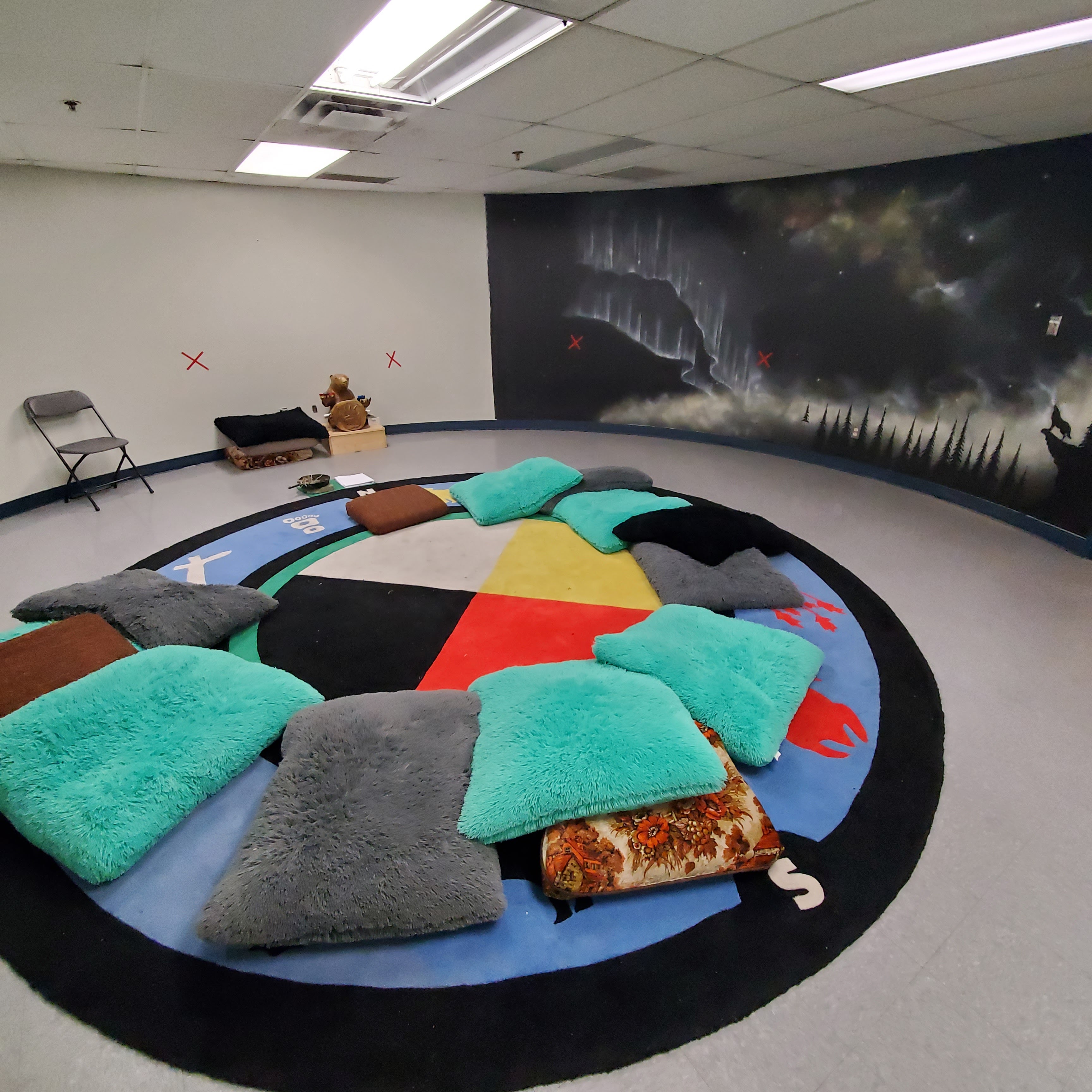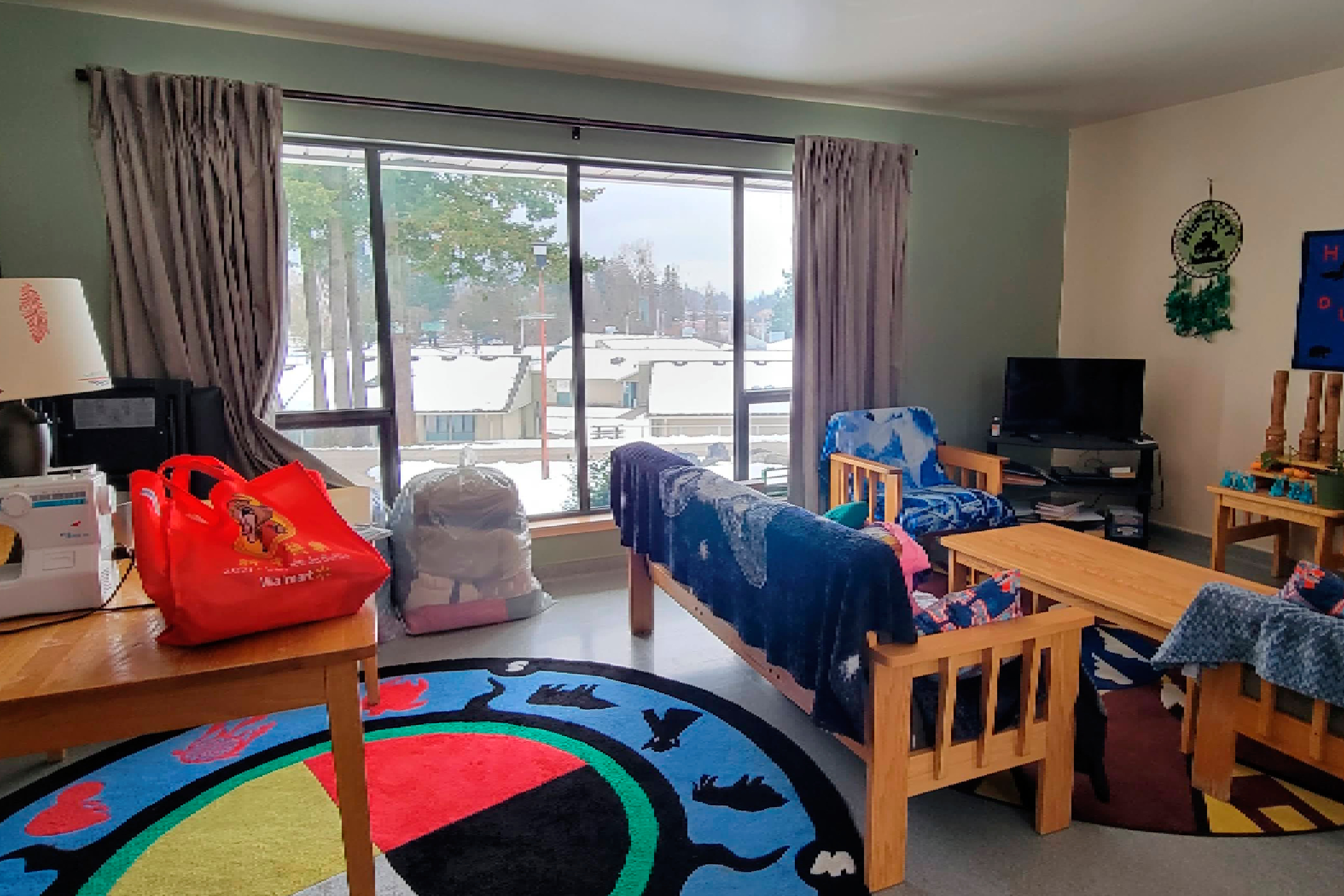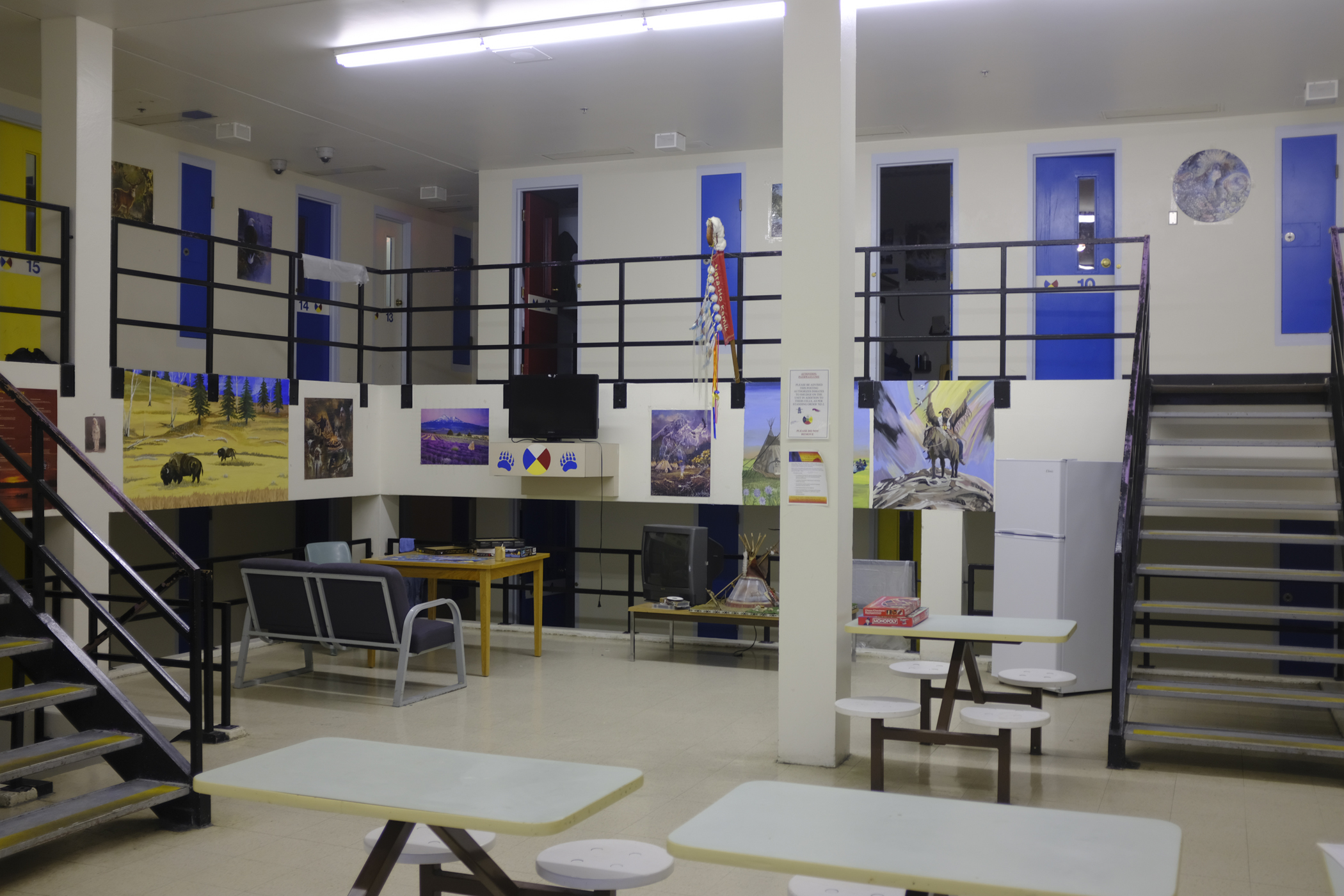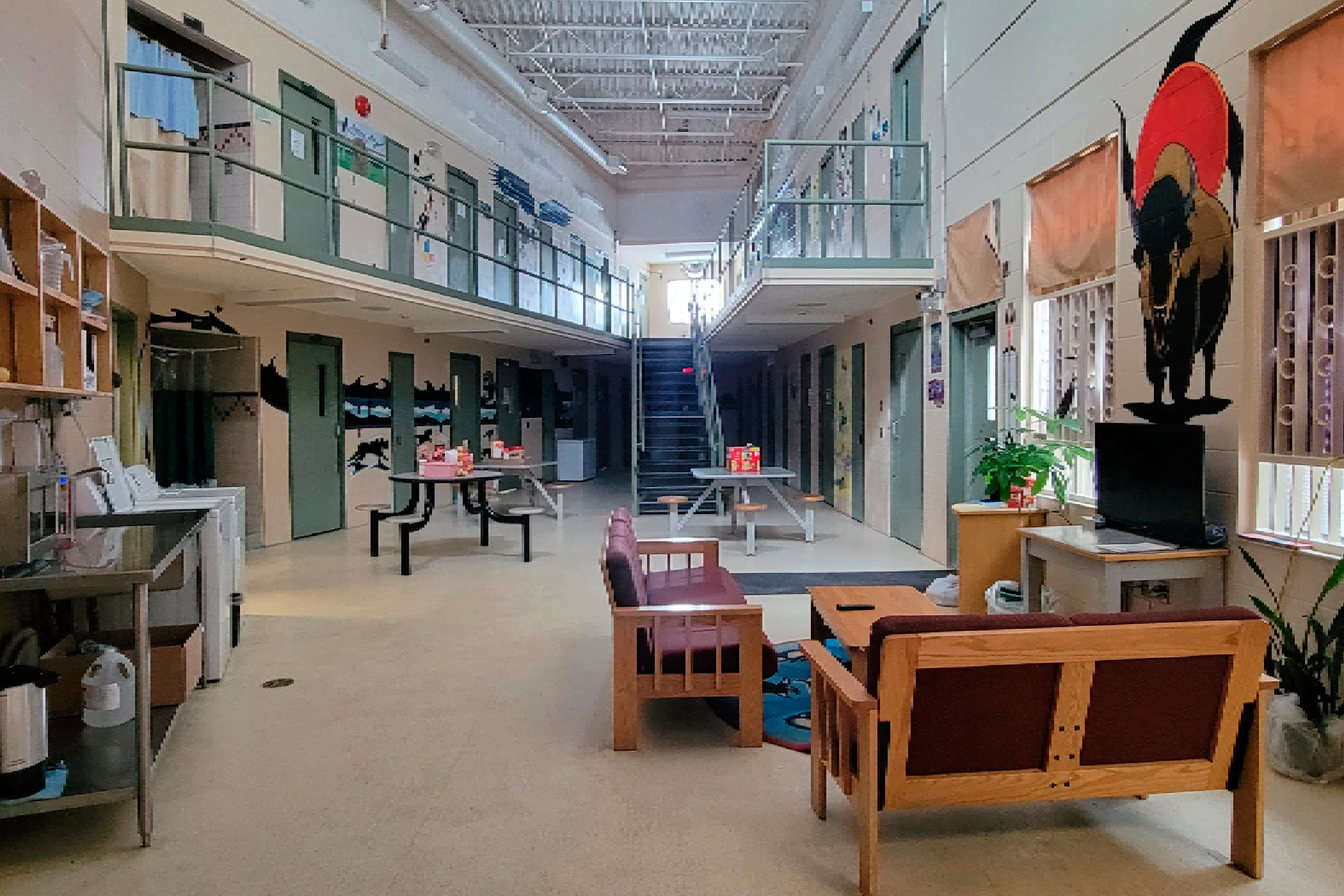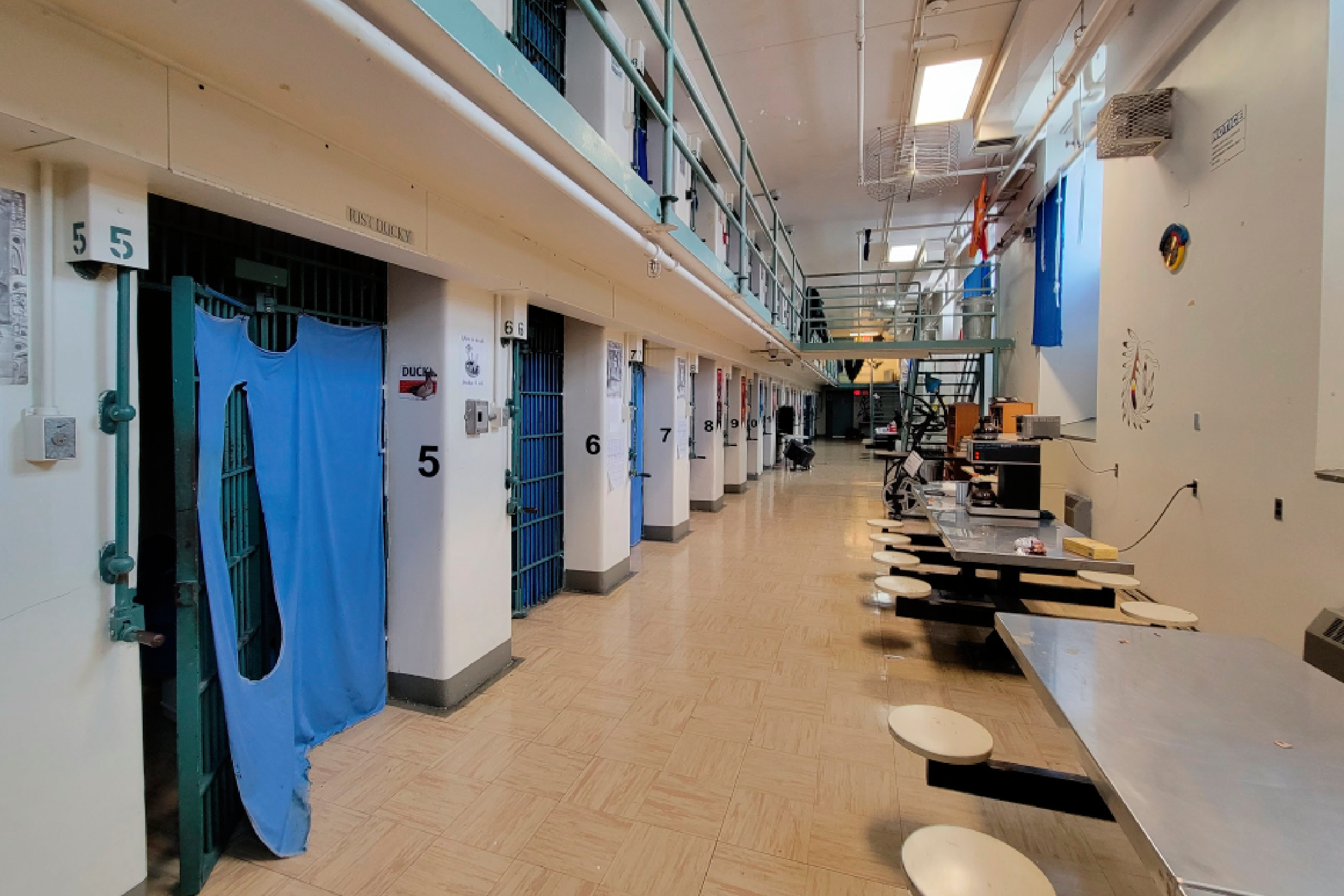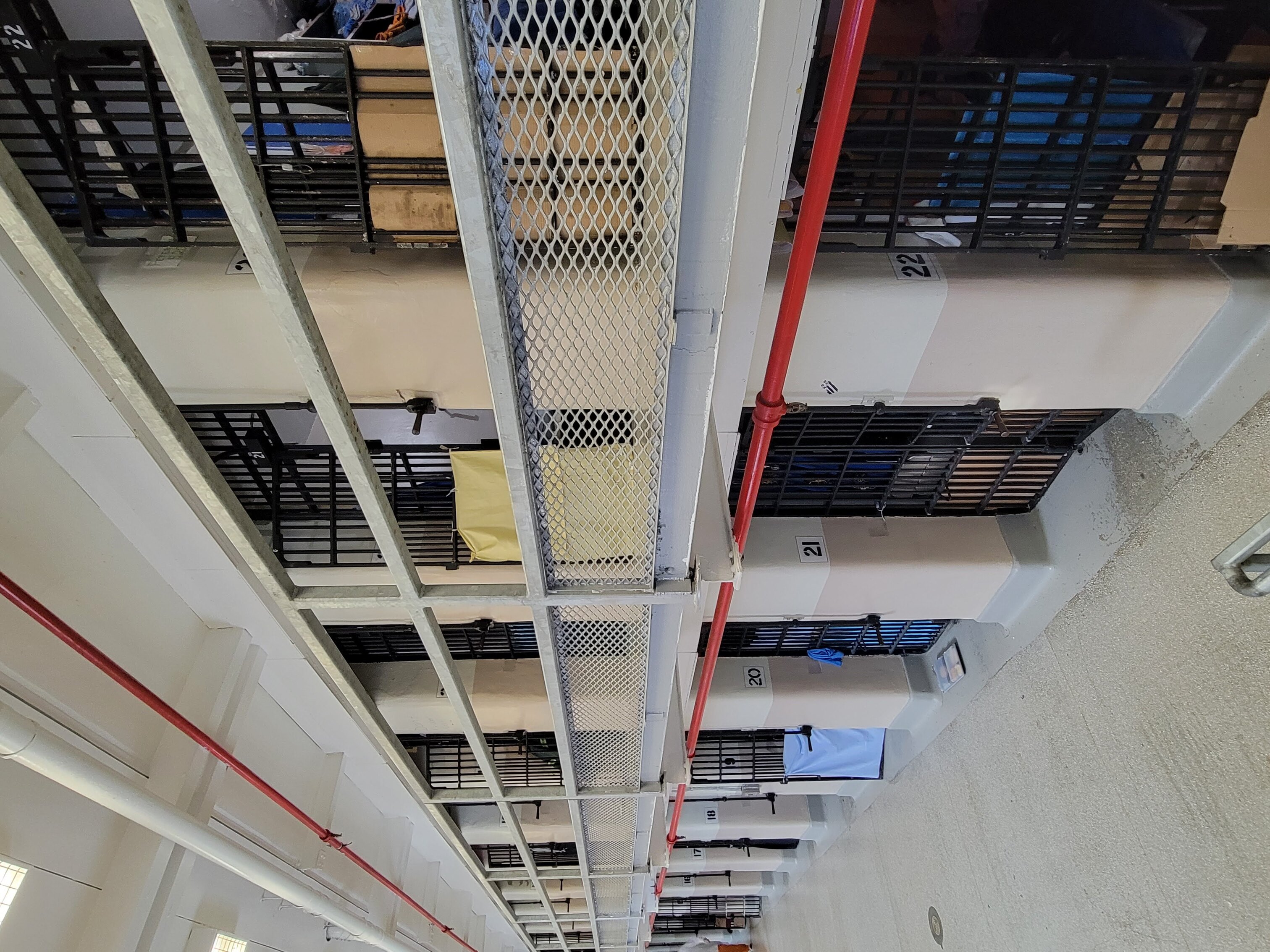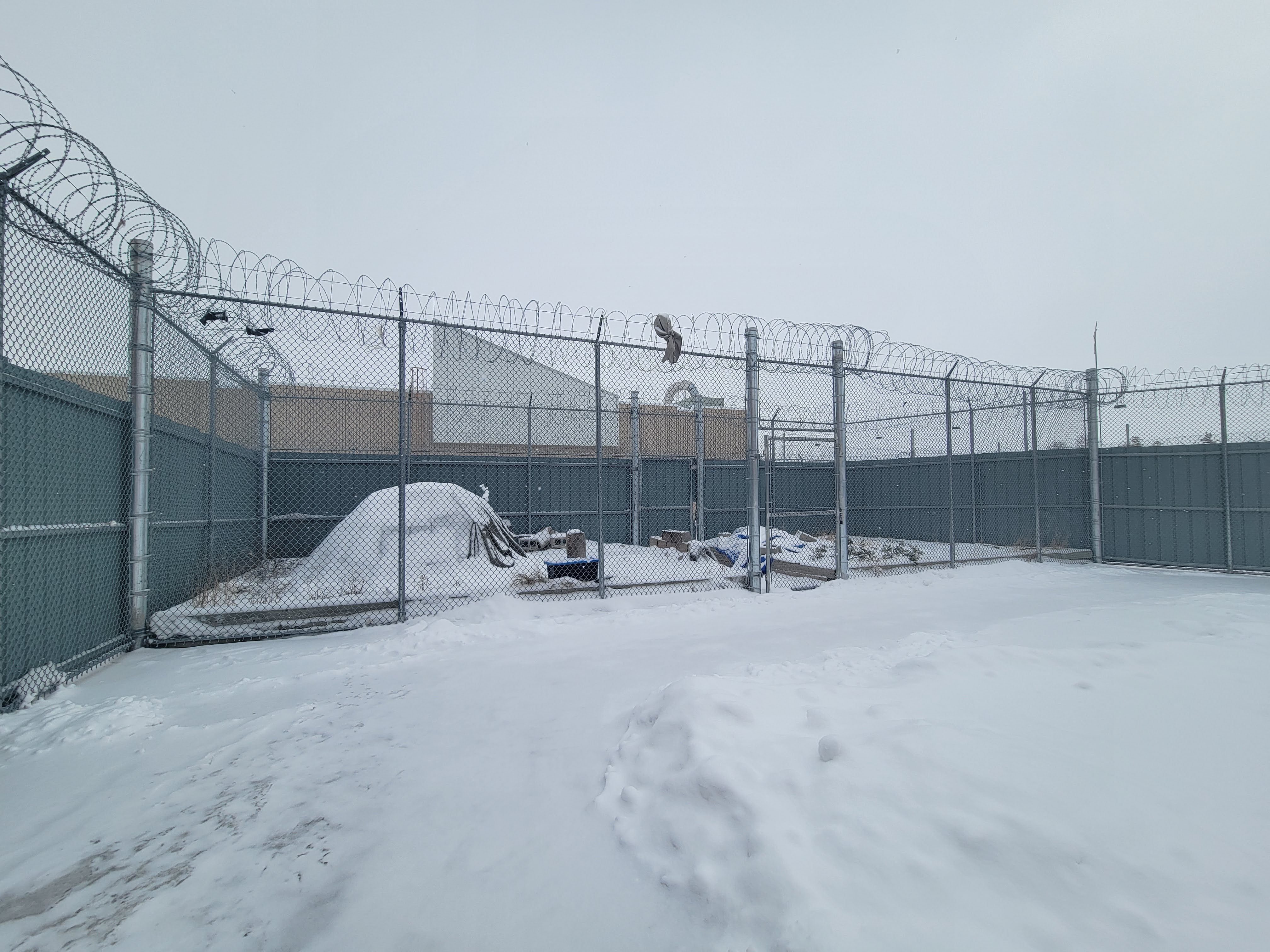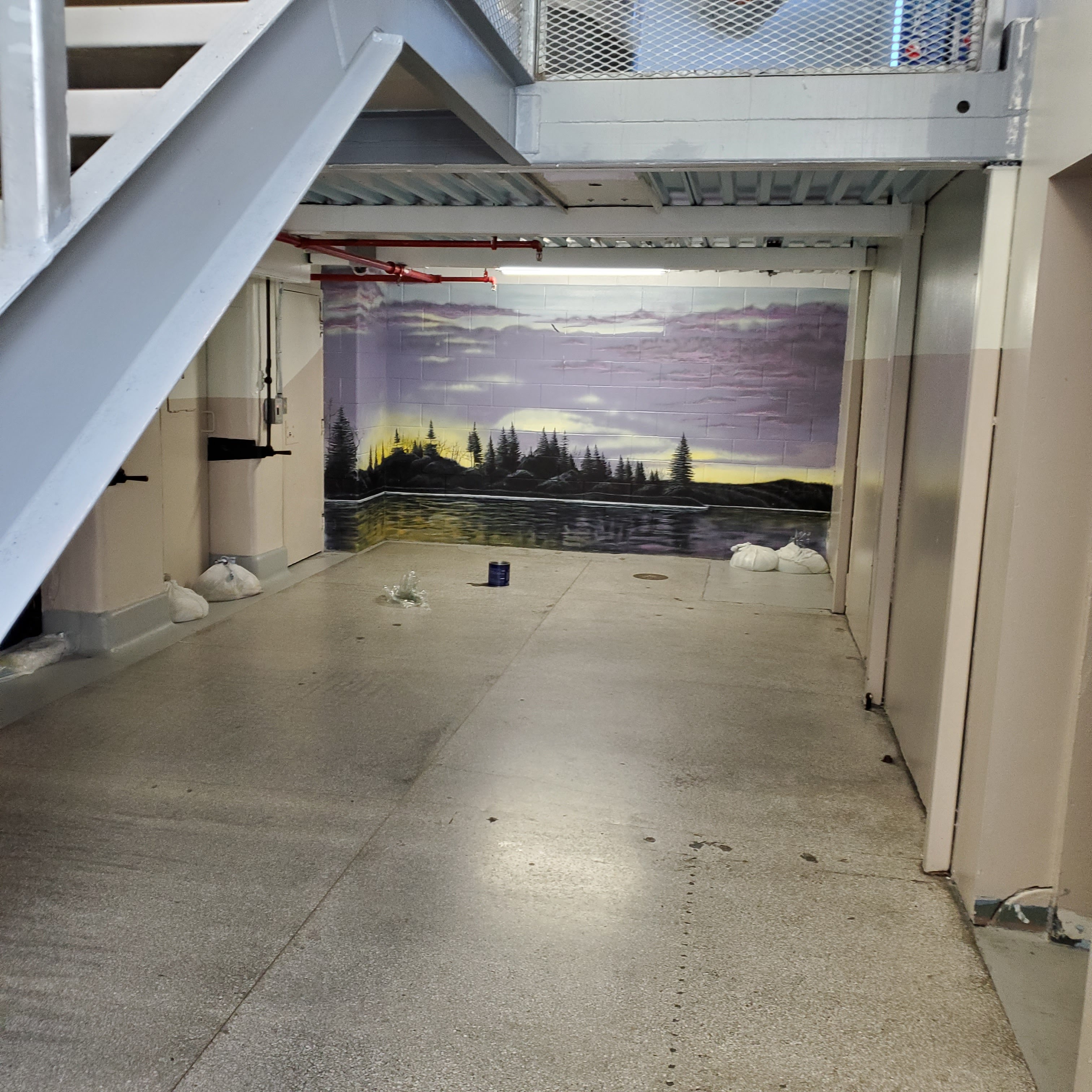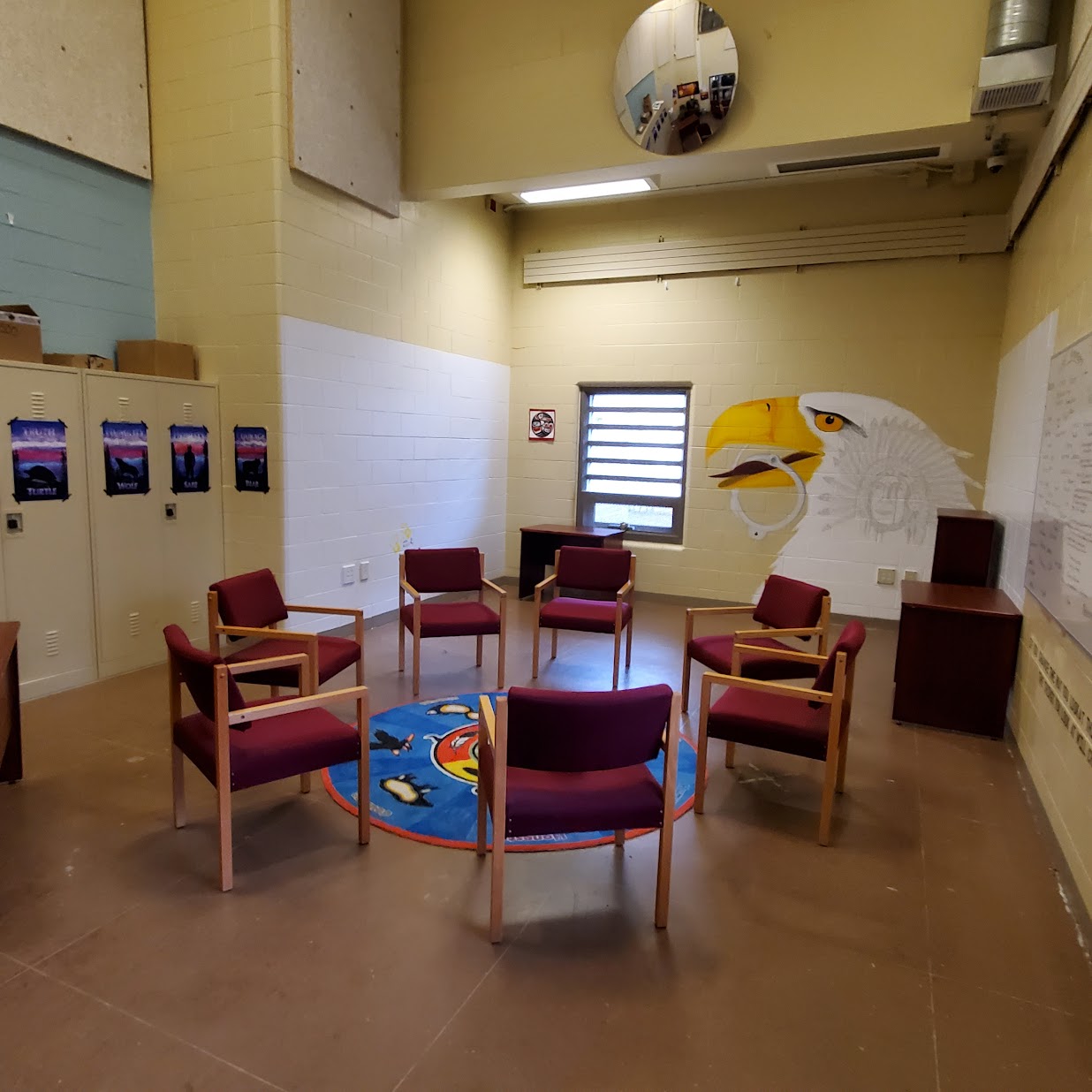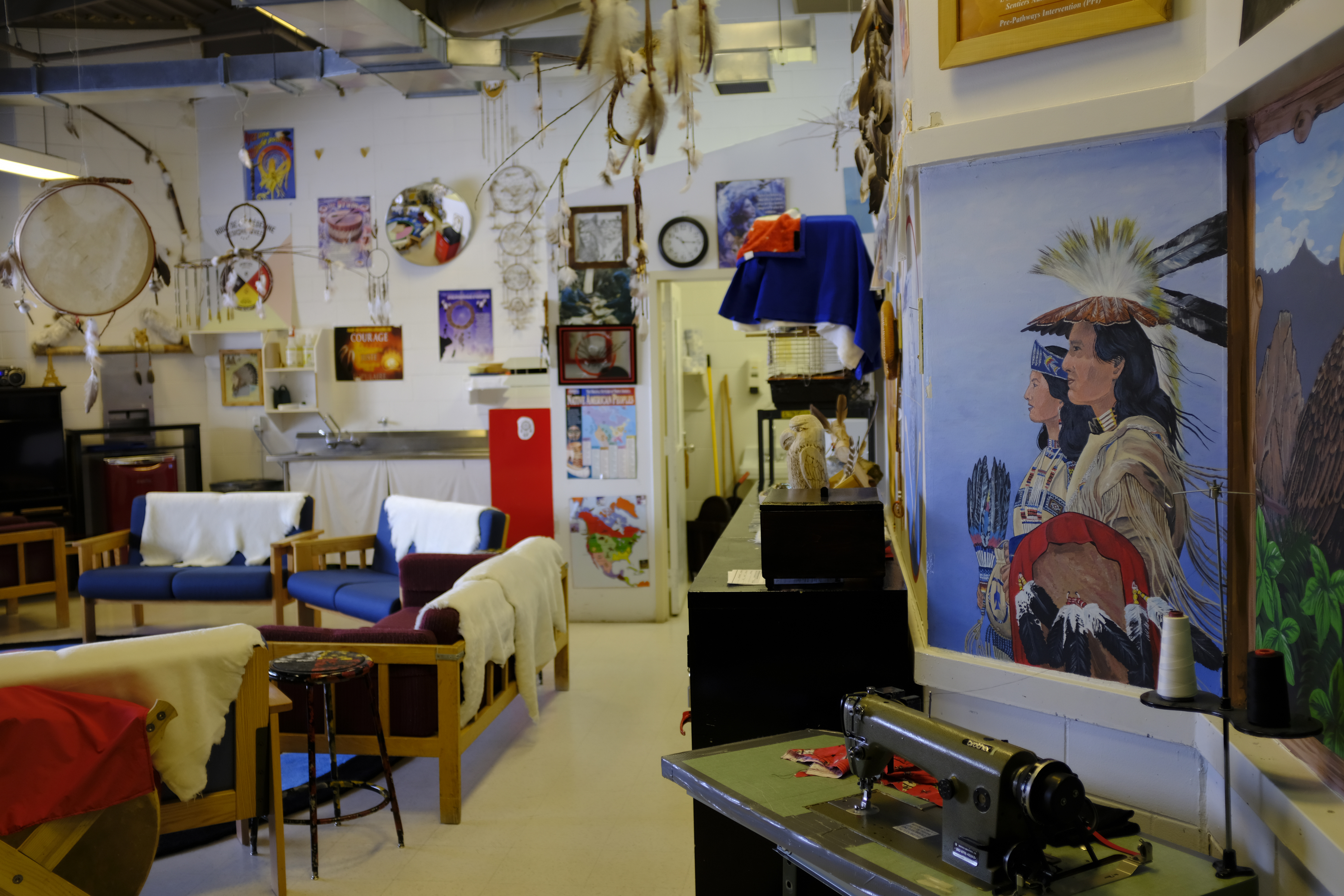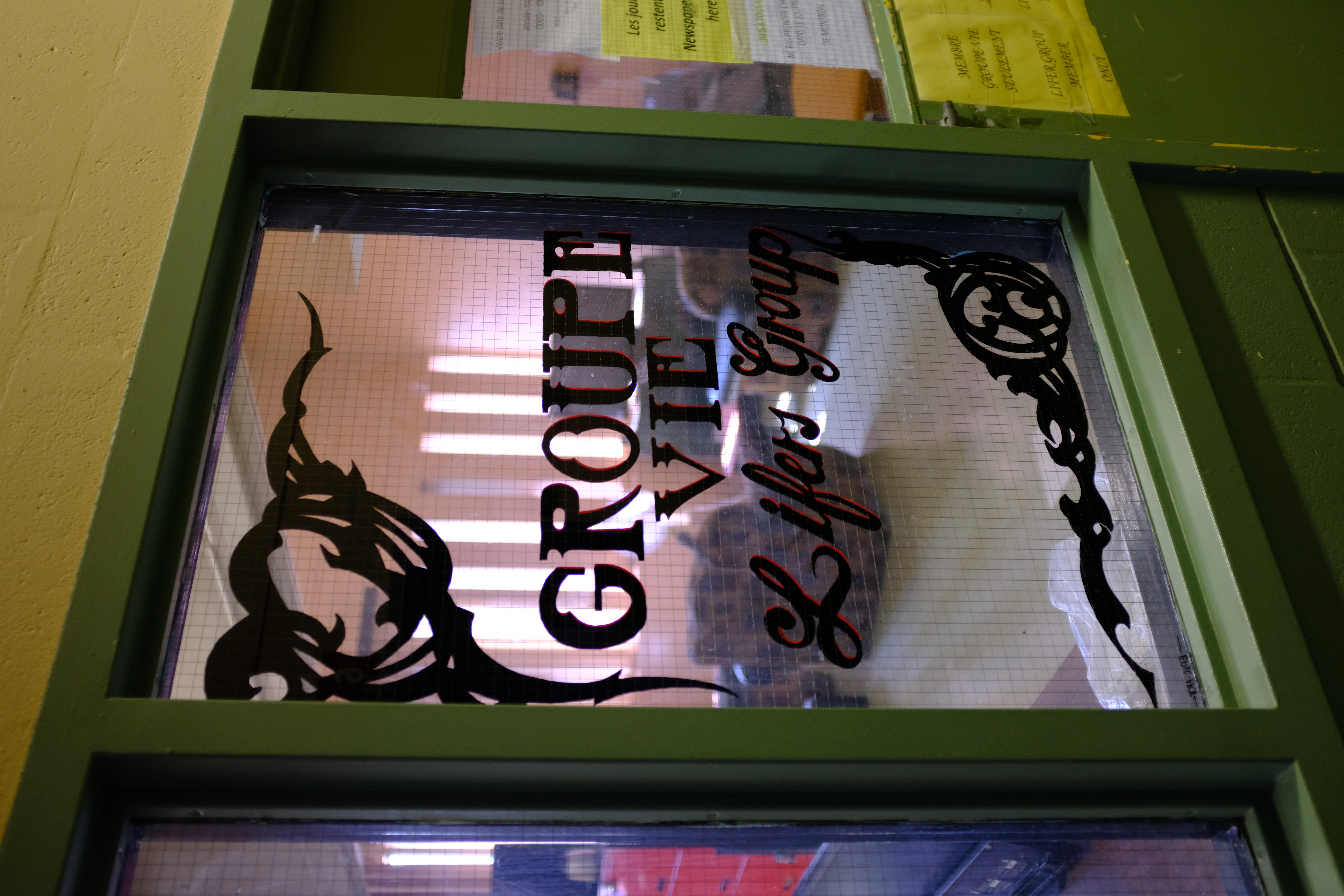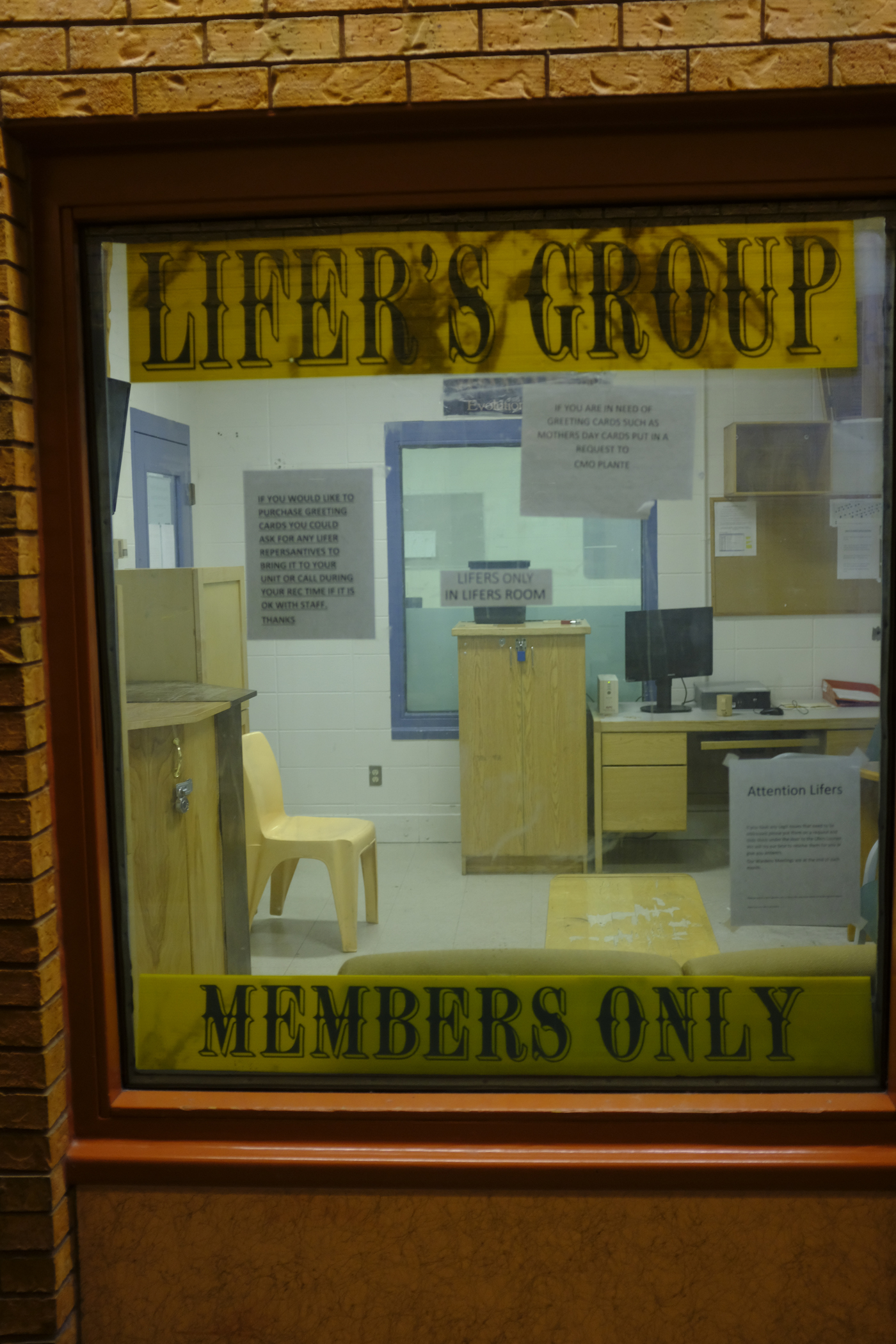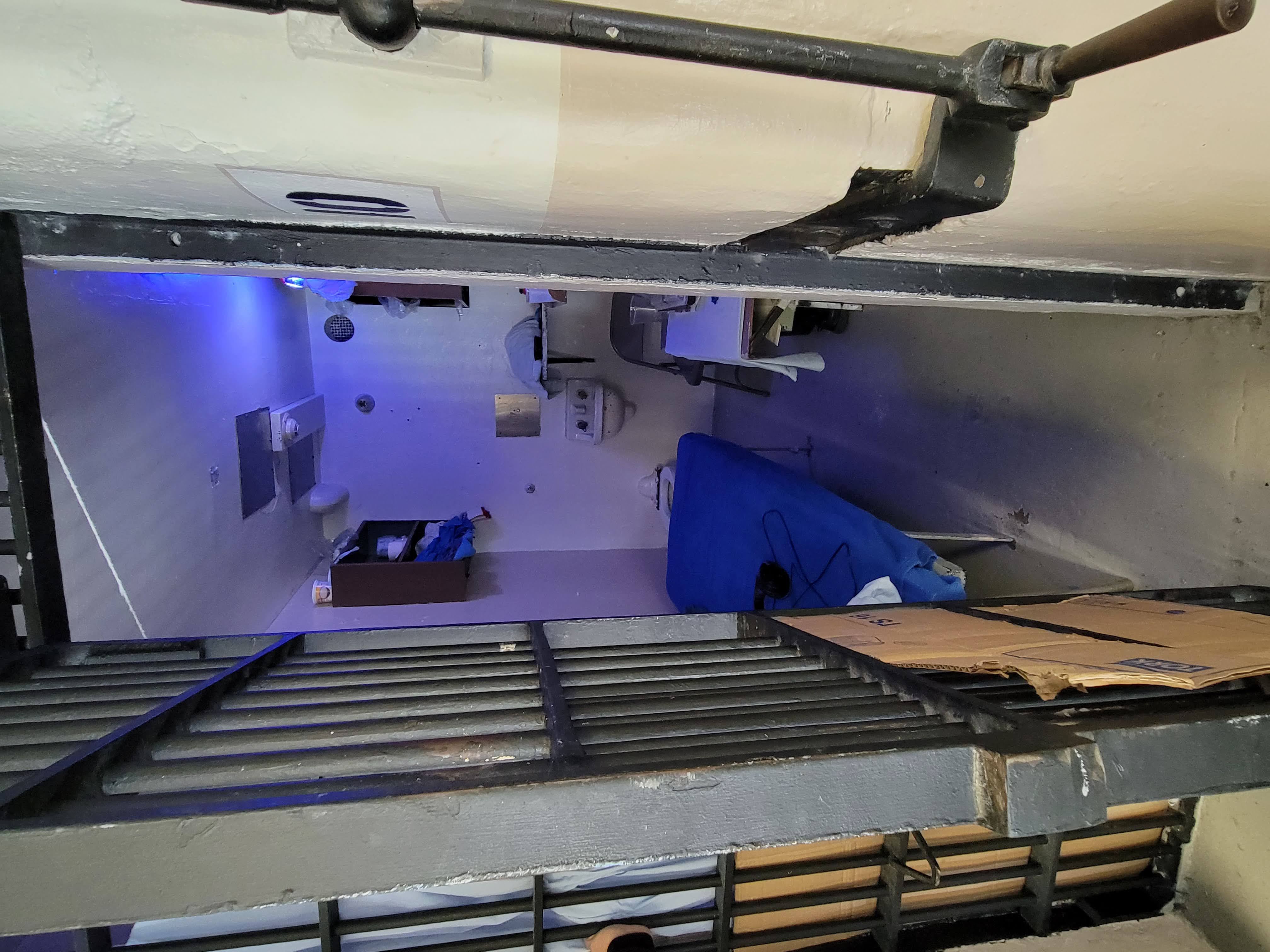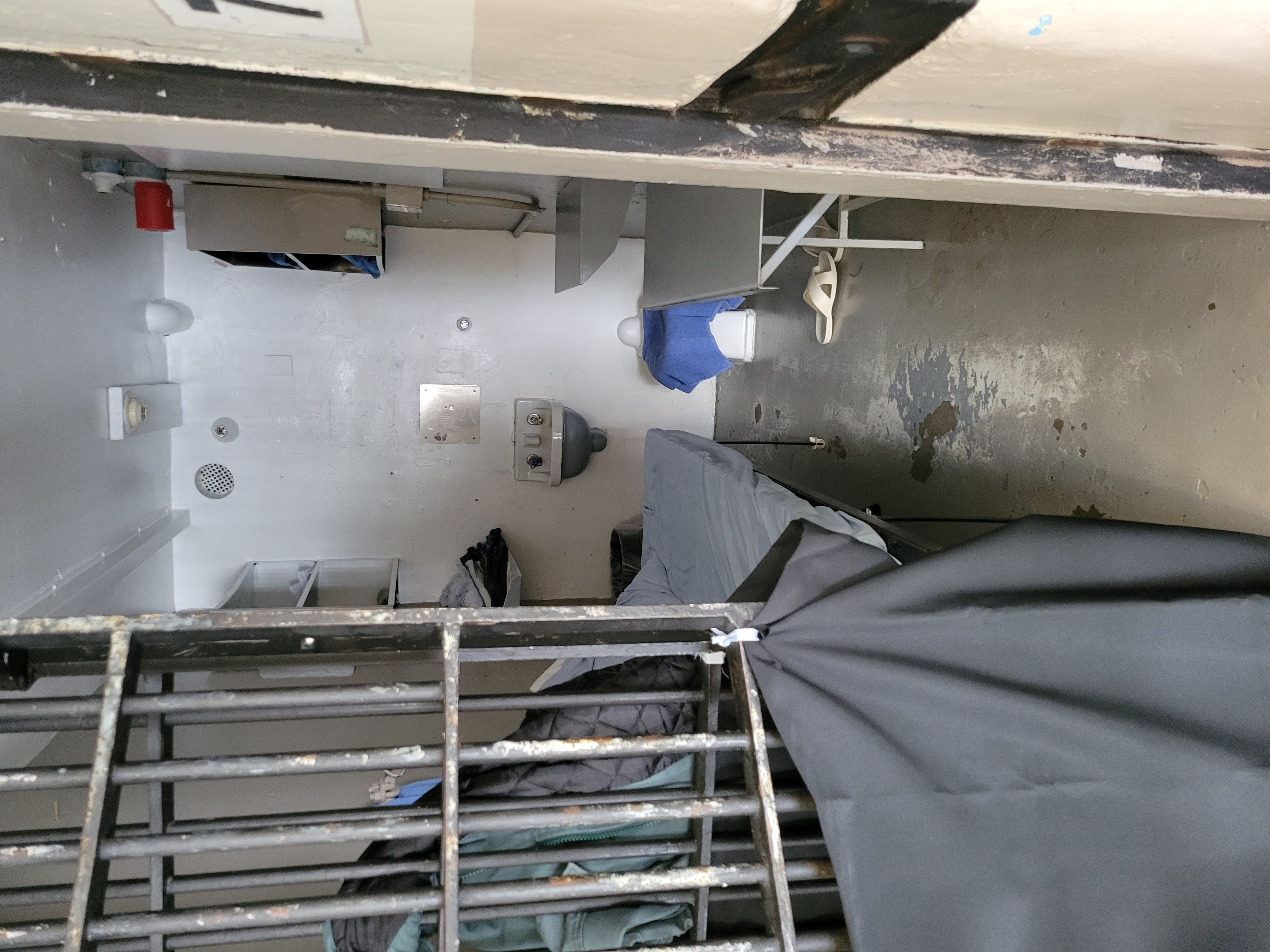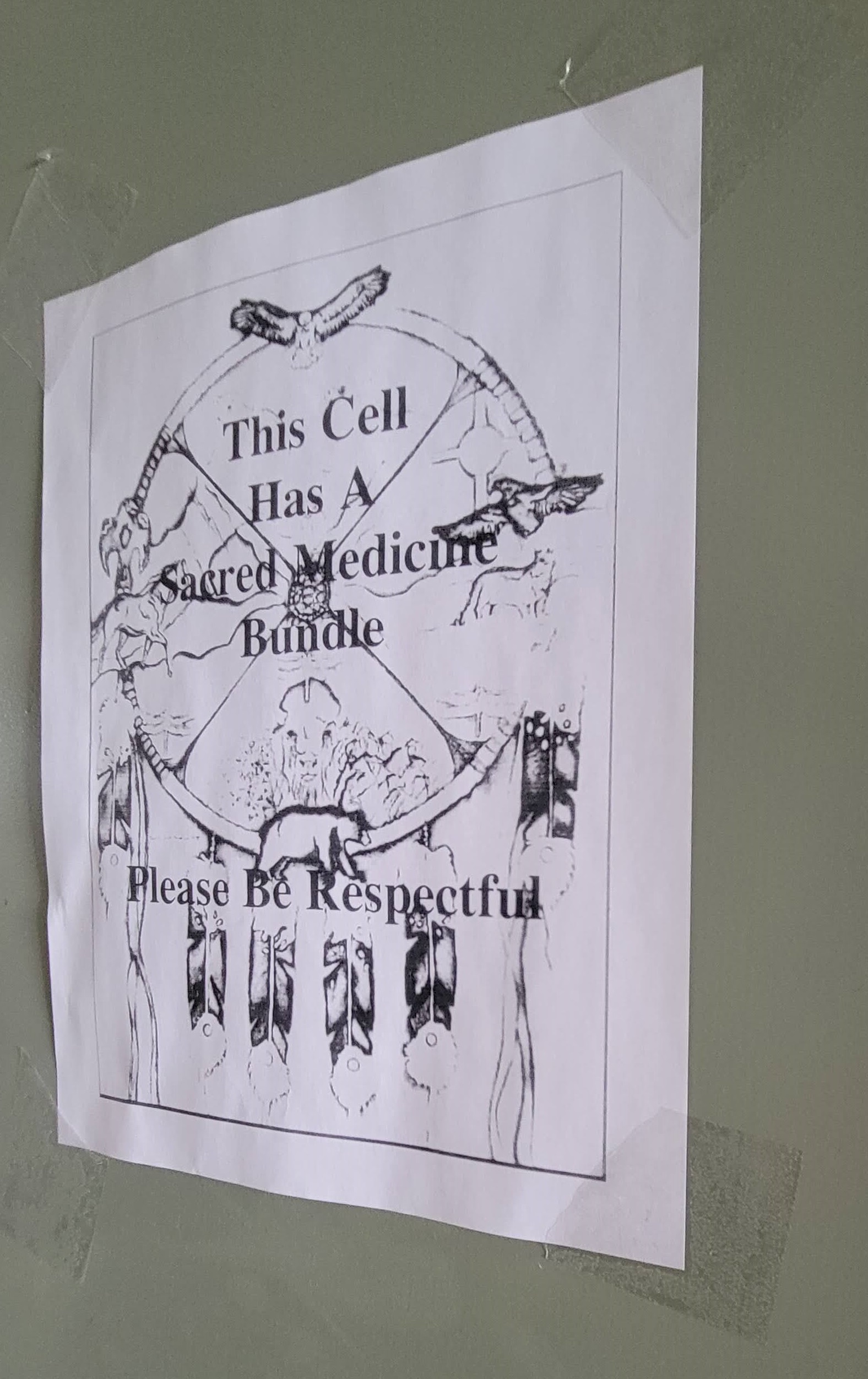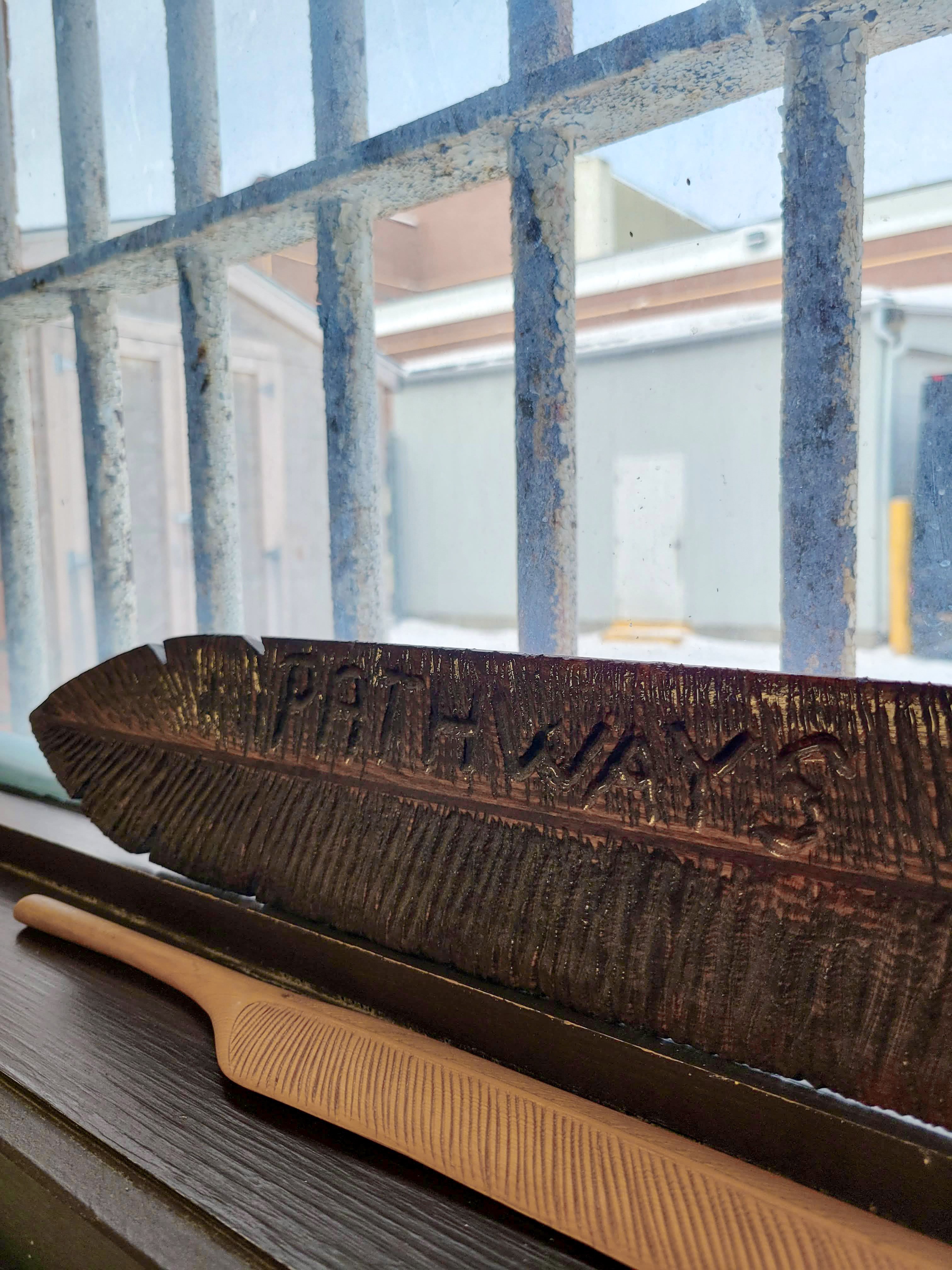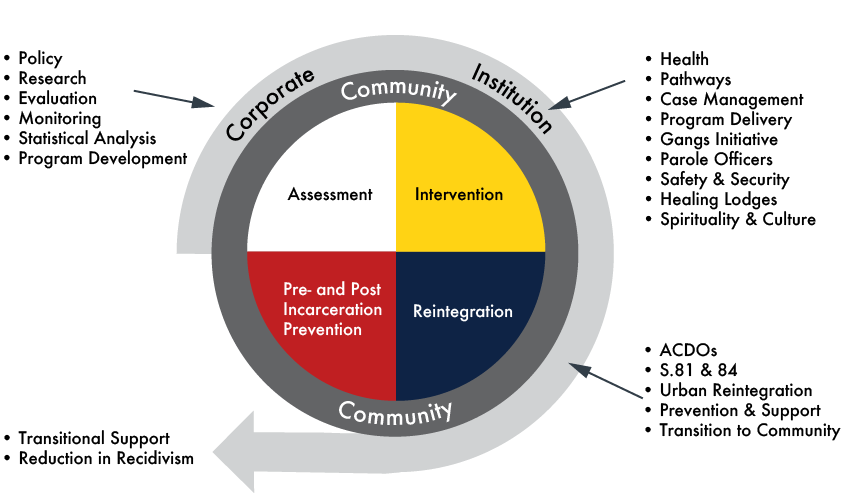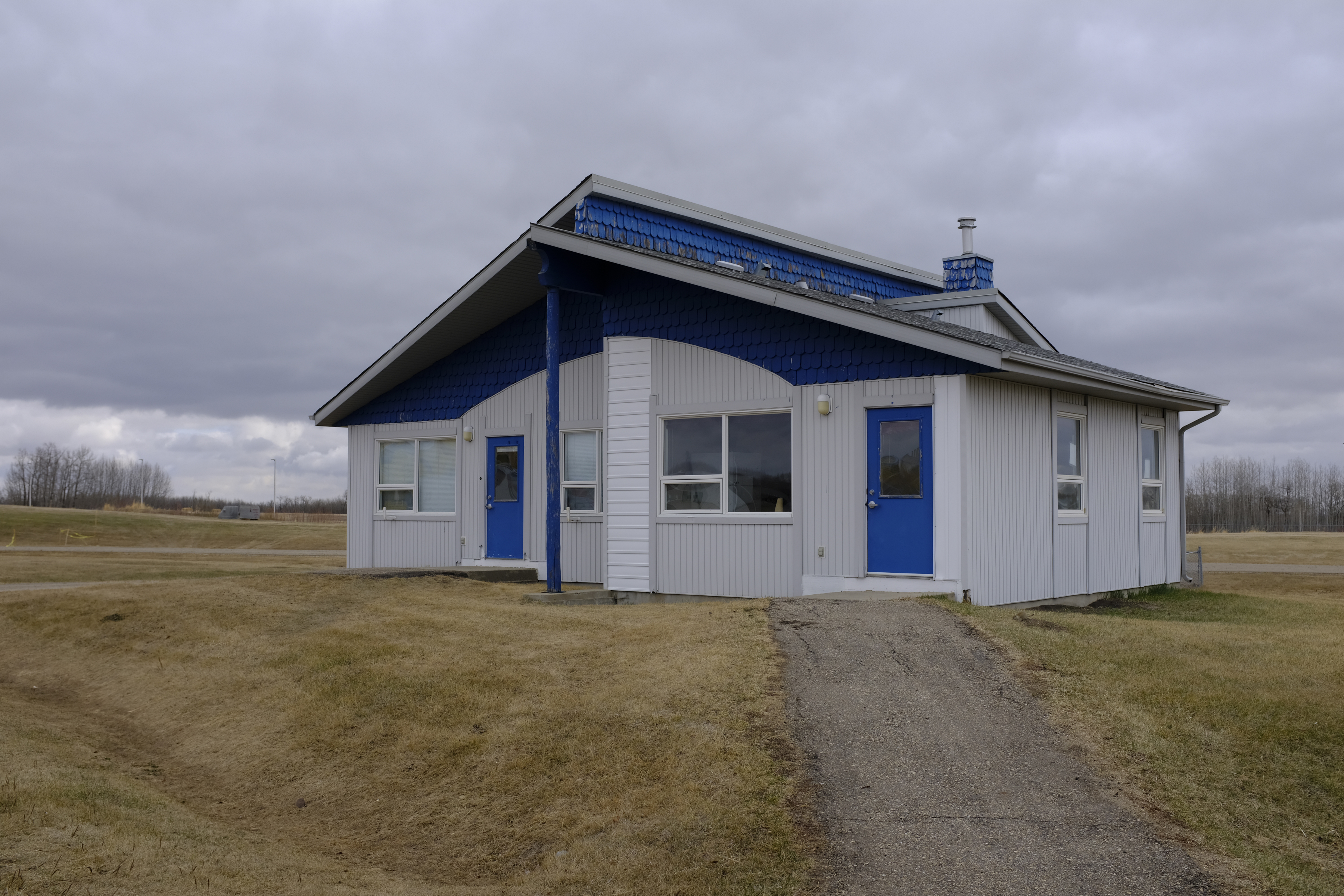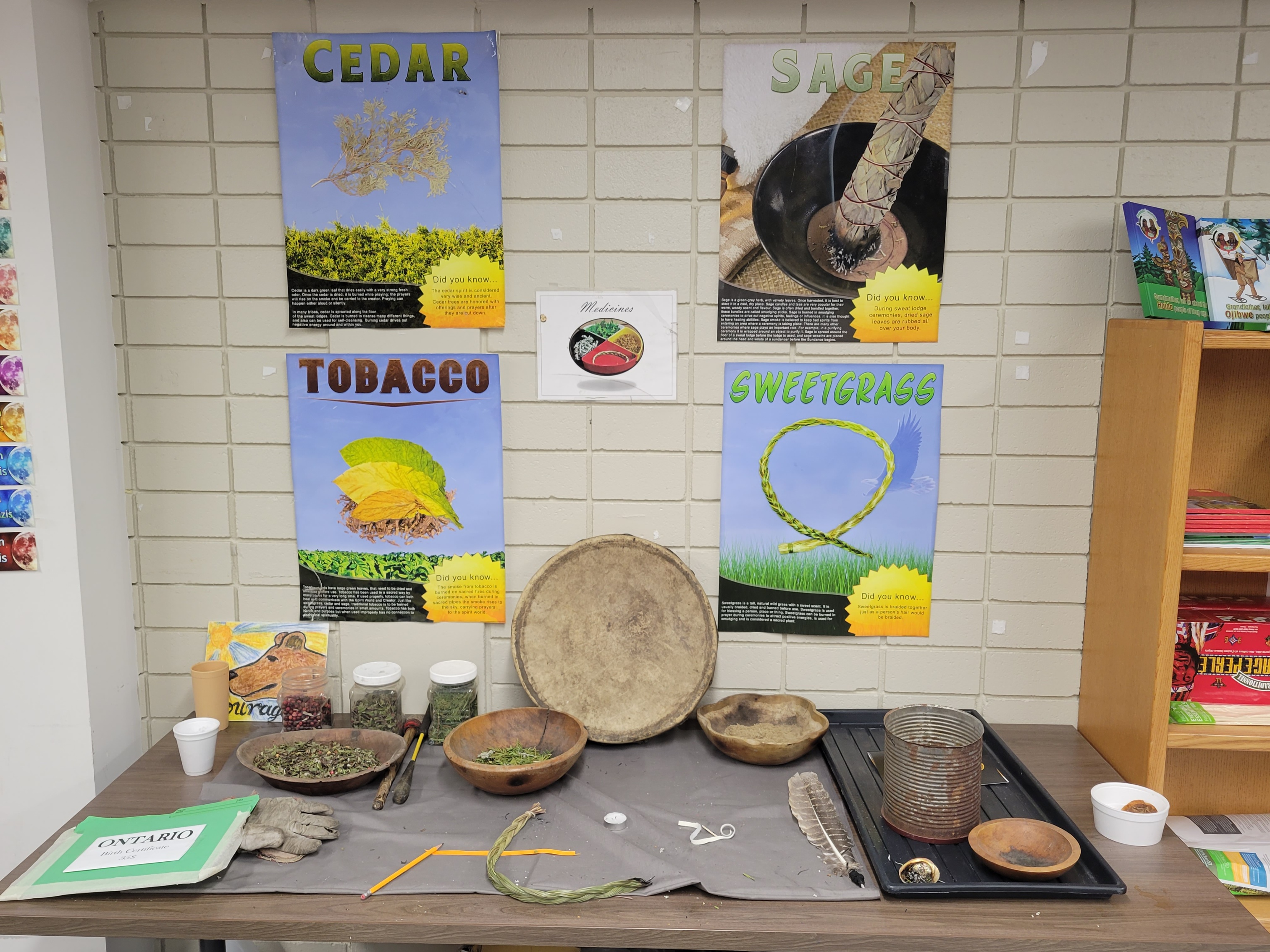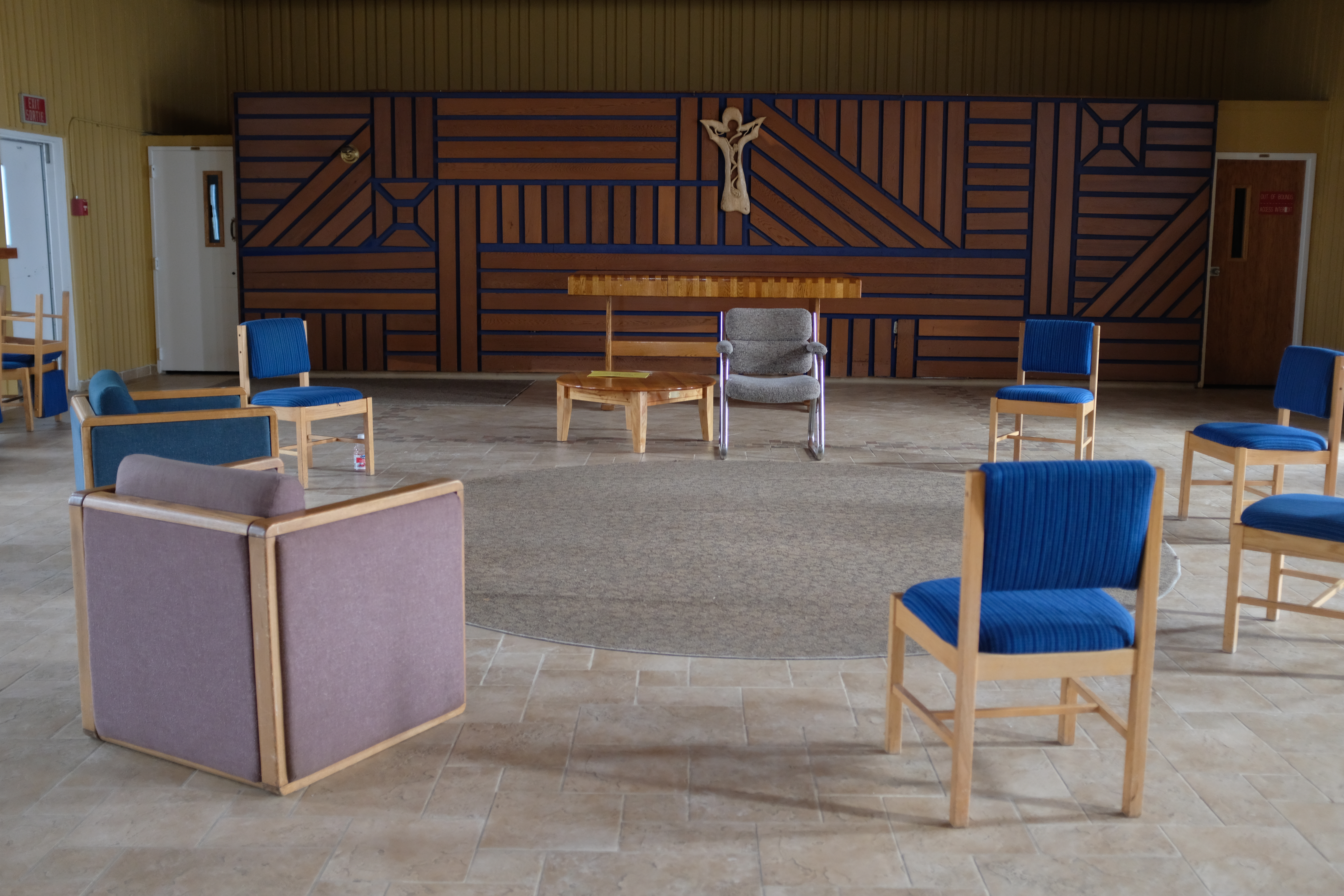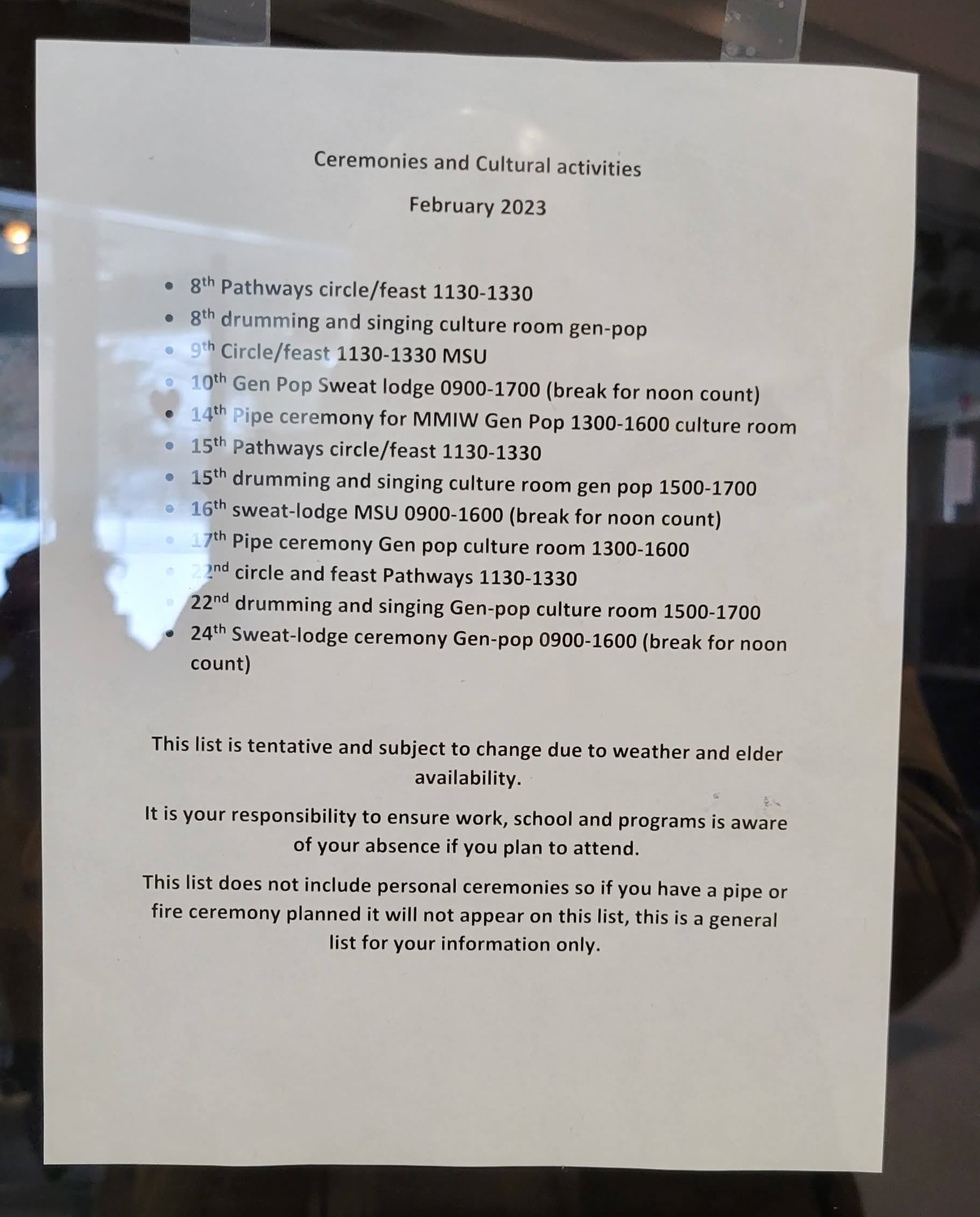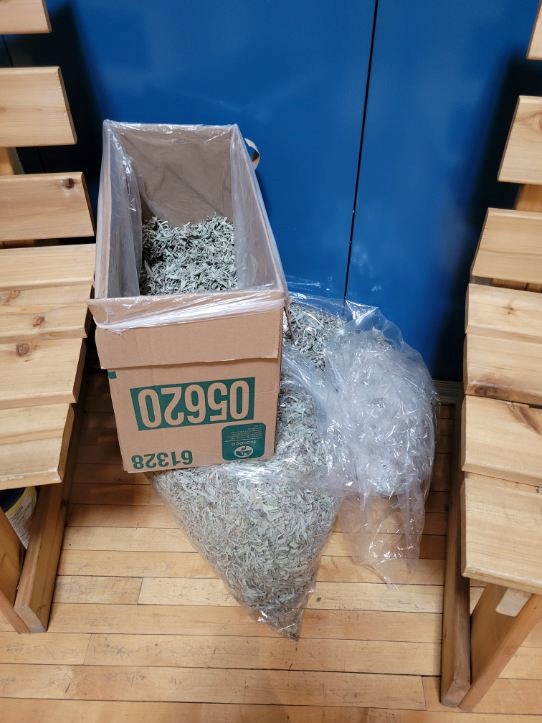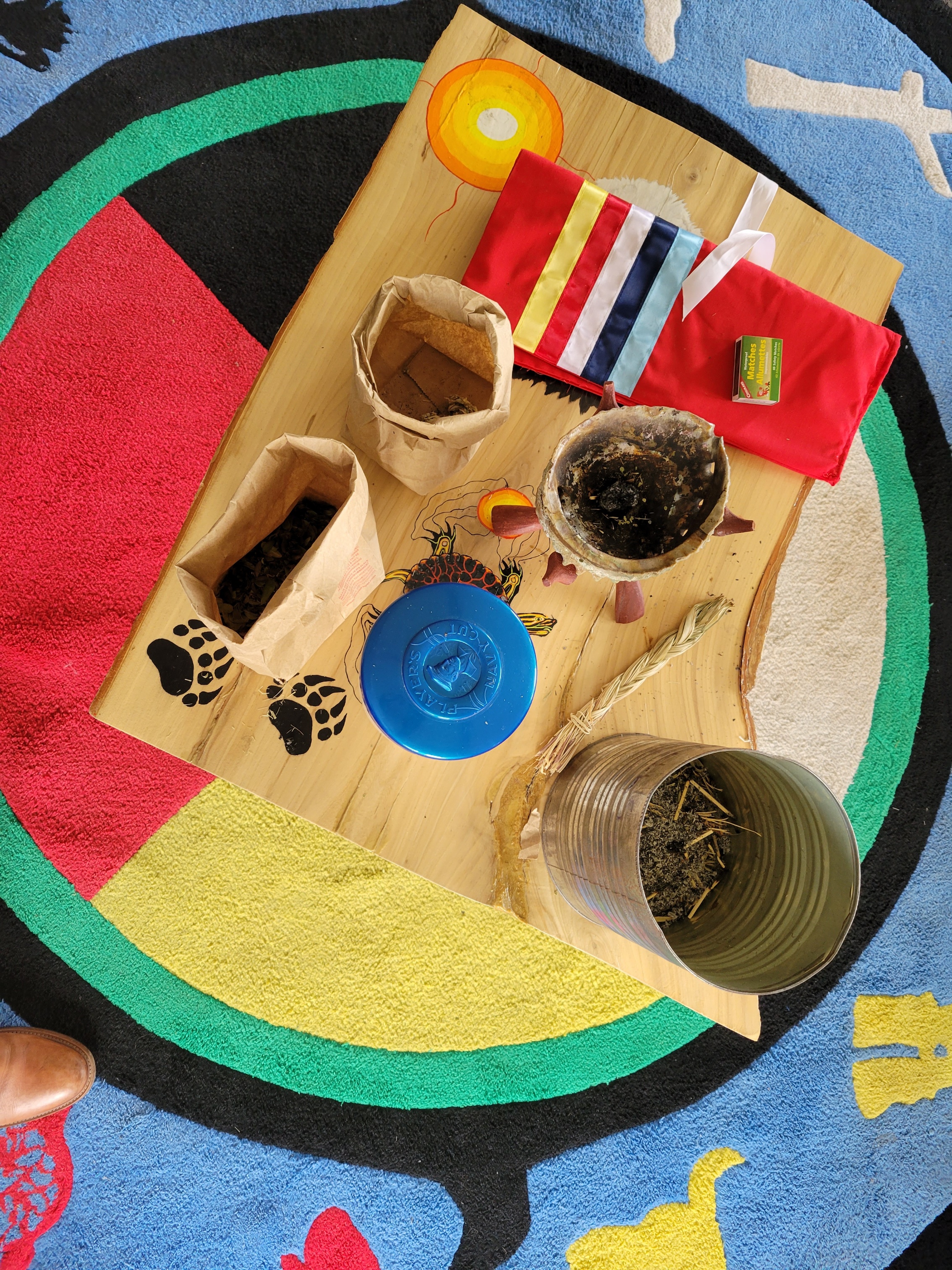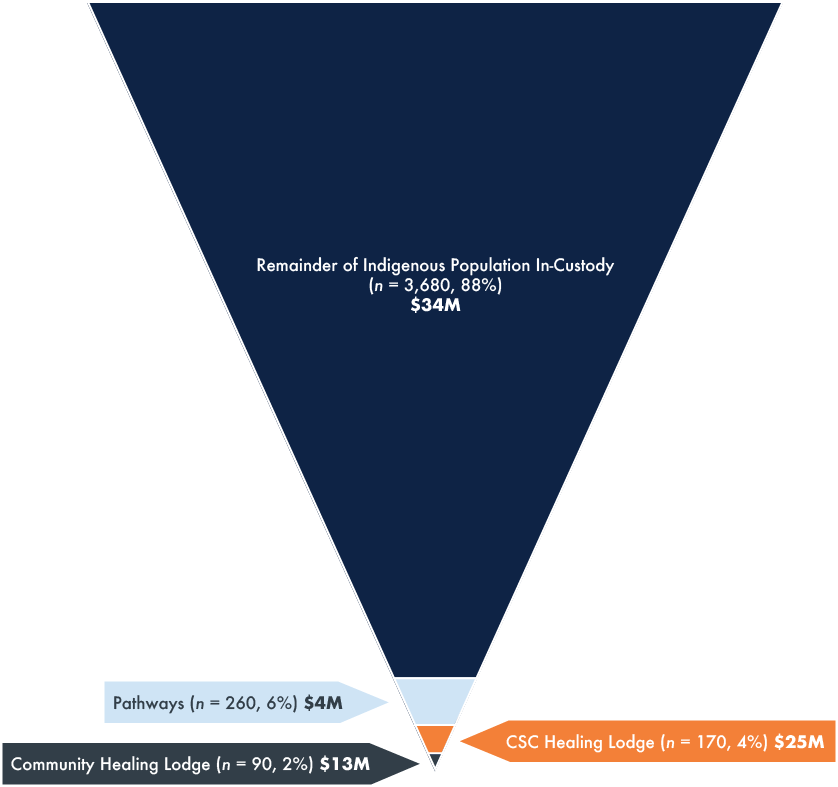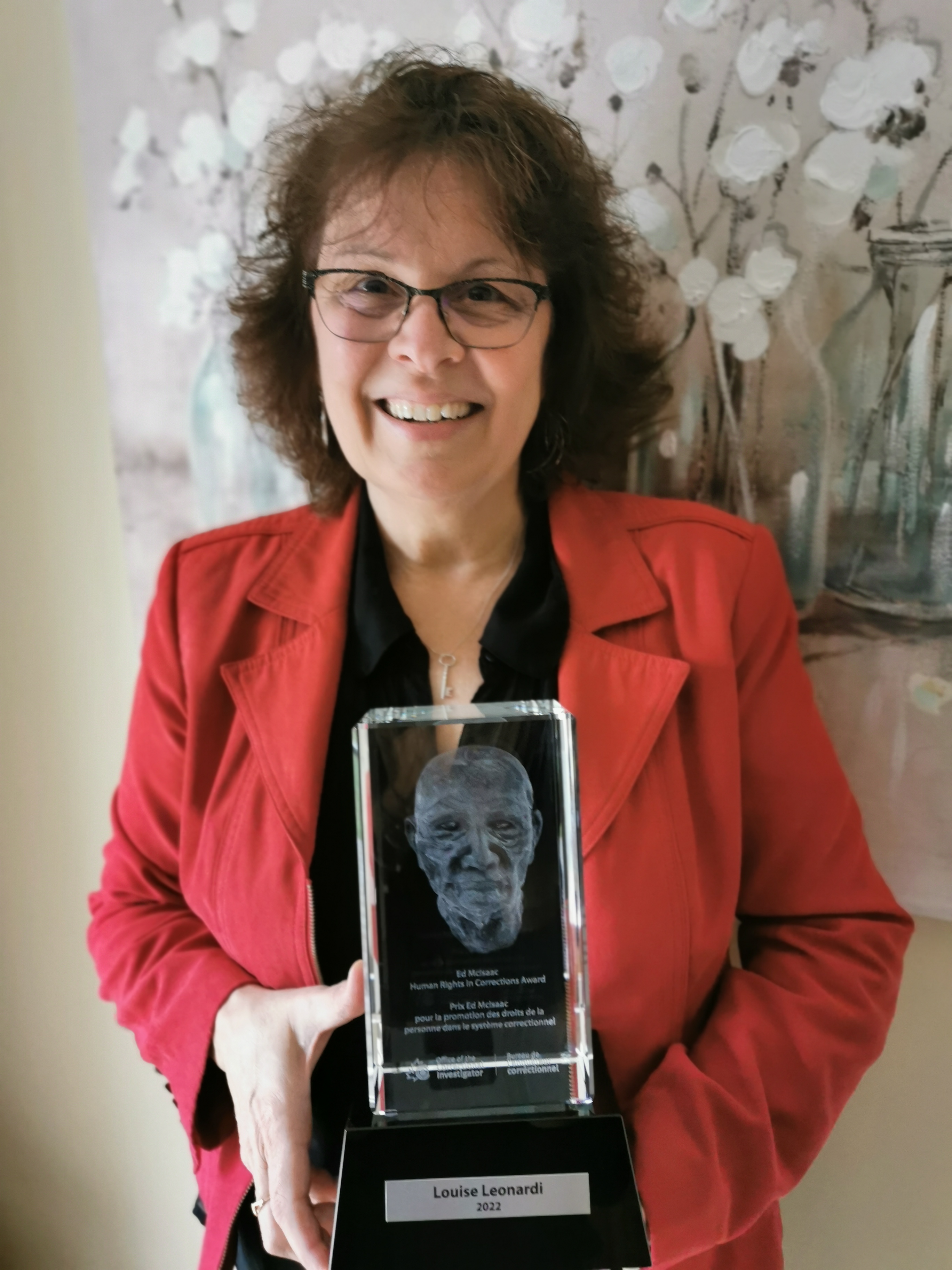June 30, 2023
The Honourable Marco Mendicino
Minister of Public Safety
House of Commons
Ottawa, Ontario
Dear Minister,
In accordance with section 192 of the Corrections and Conditional Release Act, it is my privilege and duty to submit to you the 50th Annual Report of the Correctional Investigator.
Yours respectfully,
Ivan Zinger, J.D., Ph.D.
Correctional Investigator
Table of Contents
Correctional Investigator's Message
Thematic Investigations and Inspections
Thematic Investigation: The Rising Cost of Living Behind Bars
Thematic Inspection: Dry Cells
National Updates
Patient Advocacy Services in Federal Corrections
Gender Diversity Policy Review
Minimal Options for Federally Incarcerated Women in Minimum Security Units
Fifth Independent Review Committee on Non-Natural Deaths in Custody
Ten Years since Spirit Matters: Indigenous Issues in Federal Corrections (Part II)
Unfulfilled Promises: Investigation of Healing Lodges in Canada’s Federal Correctional System
A Straight and Narrow Road: An Investigation into CSC’s Pathways Initiatives
An Investigation of the Role and Impact of Elders in Federal Corrections
Correctional Investigator’s Outlook for 2023-24
Ed McIsaac Human Rights in Corrections Award
Correctional Investigator's Message
The Office of the Correctional Investigator celebrates its 50th Anniversary in June 2023. Anniversaries are moments for reflection and the celebration of achievement. I am extremely proud of the fact that this little office with an outsized mandate has served and stood the test of time for half a century now. I am deeply privileged, in my capacity as Correctional Investigator, to offer a few personal reflections about an extraordinary place that has been my home for most of my professional career.
As I often share with people who are unfamiliar with our work, the Office or OCI, was created out of the trials and tribulations that nearly brought Canada’s penitentiary system to its knees in the early 1970s. The origins of the Office lie in a system that failed to provide incarcerated people with an external and independent outlet to raise and redress legitimate grievances. Today, serving as a prison oversight and ombudsman body for federally sentenced persons, the OCI remains as vital and focused as ever on this core mandate.
Since its creation, the Office has answered hundreds of thousands of calls and resolved tens of thousands of complaints. Cumulatively, over the Office’s half century of operations, our investigative staff has literally spent years inside federal institutions. At a more macro level, the Office is part of an overall network of oversight and accountability that provides some level of assurance that people serving a sentence of two years or more are treated fairly, lawfully and humanely. In a system that has periodically tolerated abuse and impunity, the Office is the eyes and ears of transparency.
I first joined the Office in 2004, then serving as Director of Policy and Legal Counsel. As I recall, the Office was not all that well known and struggled to be heard. A new Correctional Investigator – only the third in the history of the Office up to that point and my immediate predecessor – Mr. Howard Sapers, was appointed in April 2004, a role he would keep for the next 12 years. To his enduring credit, Howard steered the Office through a challenging transition period and into an era of increased visibility and influence. Under his leadership, the Office brought attention to mental health concerns in corrections, initiated public coverage of preventable deaths in custody, raised concerns around safe and humane custody and produced more focused yearly reporting on issues facing federally sentenced Indigenous people and women in federal custody. A series of public interest reports during those years highlighted the experience of a diverse range of incarcerated people including the elderly, young adults, individuals with mental health issues, gender diverse and Black persons. These individual and systemic areas of concern remain some of the hallmarks of Office reporting to this day.
More recently, and since my first appointment as Correctional Investigator in January 2017, the Office has continued to raise and report on issues and incidents of national significance in Canadian corrections. Fatal Response: An Investigation into the Preventable Death of Matthew Ryan Hines was tabled as a Special Report to Parliament on May 2, 2017. Since then, the Office completed a series of major investigations updating findings from previous reports and reviews including:
- Missed Opportunities: The Experience of Young Adults Incarcerated in Federal Penitentiaries (August 2017).
- Aging and Dying in Prison: An Investigation into the Experiences of Older Individuals in Federal Custody (February 2019).
- Update on the Experiences of Black Persons in Canadian Federal Penitentiaries (2021-22 Annual Report).
In the last few years, the Office conducted two ground-breaking investigations: A Culture of Silence: National Investigation into Sexual Coercion and Violence in Federal Corrections (2019-20 Annual Report), followed up by a review of Uses of Force Involving Federally Incarcerated Black, Indigenous, Peoples of Colour (BIPOC) and Other Vulnerable Populations (2020-21 Annual Report). This year’s Annual Report features Part II of our update of the original 2013 Spirit Matters 1, which completes a historic two-year investigation examining the over-representation of Indigenous people in federal corrections.
Along the way, we have published significant compliance reviews, case studies and findings on any number of issues of public interest and concern in federal corrections:
- Quality and Quantity of Prison Food
- Riot at Saskatchewan Penitentiary
- Over-representation of Indigenous Women in Maximum Security
- Alternatives to Incarceration for Seriously Mentally Ill Persons
- Education behind Bars
- Solitary Confinement (Administrative Segregation)
- Medical Assistance in Dying (MAiD) in corrections
- Use of Pepper Spray in Use of Force Interventions
- Prison Needle Exchange Program
- Mother-Child Program in Women’s Corrections
Each of these represents collective achievement and accomplishment. I am fortunate and honoured to lead an Office that, from its earliest days, has strived for excellence in investigative reporting.
Continuing in a rich and proud tradition of producing timely, innovative and compelling public reporting, this year’s collection of issues includes a thematic look at the history of inmate pay in federal corrections from 1981 to the present. As I note in this piece, this topic is an area of perennial concern for incarcerated people reaching back to the Office’s earliest days. Incredibly, a federally sentenced person received a higher real daily wage for participating in prison work in 1981 than the current rate of pay that tops out at $6.90 per day. The contemporary financial and pay system has been stripped of all incentive, bearing little resemblance to its original form or intentions. Earning less than 46 cents an hour, the current pay system keeps people behind bars destitute, demeaned and degraded. Furthermore, it contributes to tensions and violence inside penitentiaries, which has a significant negative impact on both correctional staff and incarcerated persons. It is broken and dysfunctional, serving no redeeming correctional or public safety interest, and is in desperate need of a major overhaul.
Our inspection-based investigation of dry cell detention policy and procedure follows up on last year’s reporting on this issue, and yields some surprising findings, especially in light of recent interventions by the courts, Parliament and even the Minister of Public Safety. Other updates in this year’s report include gaps in gender diversity policy, the under-utilization of minimum-security units in women’s institutions, findings from the fifth Independent Review Committee on non-natural deaths in custody, and the outstanding legislated requirement for the Correctional Service to provide access to external and independent Patient Advocacy Services.
In this year’s Annual Report, a higher than usual number of my recommendations are directed to the Minister of Public Safety rather than the Correctional Service of Canada. This is deliberate and consistent with section 180 of the Corrections and Conditional Release Act (CCRA), which directs that I shall provide notice and report to the Minister of Public Safety whenever the Correctional Service of Canada (CSC) does not, within a reasonable time, take adequate or appropriate action to address findings and recommendations of my Office. To meet this obligation, in this year’s report I am directing a number of outstanding issues to the attention of the Minister, including offender payments, dry cell detention, patient advocacy, convening of independent investigations into incidents and interventions resulting in death behind bars, along with other significant areas that fall under Indigenous Corrections. My expectation is that elevating issues where there has not been adequate response or resolution will result in more measureable and substantive progress.
As mentioned, the major piece of this year’s report is our investigation into the over-representation of Indigenous people in Canadian prisons. It is an issue of documented concern for this Office ever since the appointment of the first Correctional Investigator, Ms. Inger Hansen, in 1973. In this investigation, we deliberately set out to document the often-missing voices, experiences and testimonies of Indigenous people who work or live inside the system. We met with many Elders to hear about their experience with providing ceremony, healing and guidance to their ‘relatives’ behind bars. We visited and heard from participants in Pathways, a penitentiary-based initiative that offers healing to Indigenous people. We visited community Section 81 and state-run Healing Lodges to compare and draw lessons learned. We also engaged with stakeholders, advocates, and leaders of national Indigenous organizations.
In distilling what we heard and witnessed, our findings are many and significant. Despite the diversity of views and perspectives, there was often convergence on a few key points:
- CSC is failing to make the kind of innovative policy and resource changes that are required to address factors within its control to mitigate and reduce the chronic over-representation of Indigenous people.
- State-run Healing Lodges are funded, staffed, resourced and occupied at significantly higher levels than their Section 81 community counterparts.
- The contributions of Elders are under-valued, under-reported and under-supported by their CSC employer.
- Signature interventions in CSC’s Indigenous continuum of care strategy, such as Pathways Initiatives and Healing Lodges, serve such a small minority of federally sentenced Indigenous people that they have no meaningful or measureable impact on over-representation.
- CSC’s pan-Indigenous approach to Indigenous Corrections erases significant historical and cultural differences between and among First Nations, Métis and Inuit leading to significant gaps and omissions.
Looking back on the legacy of over-representation in this country is also an opportunity to anticipate a much brighter future. Canada’s relationship with Indigenous people requires reckoning with the legacy of our colonial past and walking along the path of reclamation and reconciliation in the present. Canada’s federal correctional system needs to get on board and begin to divest itself of the authorities, controls and resources that have kept Indigenous people over-incarcerated for far too long. I believe that the findings and recommendations of this report, if actioned, provide part of the blueprint for change and transformation. In the spirit of reconciliation, it is my intention to compile and publish Part I and Part II of Ten Years Since Spirit Matters into a single compendium following tabling of this year’s Annual Report in Parliament.
Finally, in marking the OCI’s 50th Anniversary, over the coming year we intend to host a few public engagements, relaunch and rebrand our website, develop and share new materials celebrating our history. As we reflect on our many accomplishments over the last half century, in the here and now I must pay tribute to my talented and amazing staff members who share a common commitment to serving our mandate with excellence.
Ivan Zinger, JD., Ph.D.
Correctional Investigator
June 2023
Executive Director’s Message
This past year we have returned a bit more to our regular way of working after three years of a global pandemic. Thankfully, the lockdowns in federal correctional institutions, as a result of Covid outbreaks, are now seen in the rear view mirror. Although the virus is still with us, we are implementing an incremental return to the Office for all employees. As a result, we were able to return to our regular schedule of visits to institutions. We also conducted our systemic investigations with hundreds of interviews with incarcerated persons, staff and stakeholders proceeding in-person. We all acknowledge the positive impact in-person meetings and visits bring, where human connection is enhanced. As we transition back to the Office, we recognize the benefits of face-to-face interactions with our clients and colleagues.
The Office is at a pivotal point in its history as we celebrate 50 years in 2023 since the OCI first opened its doors. The work we do as a correctional oversight agency is as important as it ever was and continues to provide a necessary and invaluable function in a healthy democracy.
We have begun the implementation of the four pillars of our 3-5 year Strategic Plan: 1- OCI Employer of Choice (Health and Well Being), 2- Renewed Organizational Structure (Support nimble organization, career progression and talent management) 3- Systemic Investigations and Inspections (support planning process and inspection model), and 4- Development and Implementation of Data and Performance strategy (support reporting obligations). As part of our organizational modernization, we have worked to redesign and improve accessibility of our Website, which will be re-launched as part of our 50th anniversary celebrations.
The work undertaken to implement our Strategic Plan led us to the conclusion that the Office was in dire need of additional resources. In the last year, we dealt with 4,897 complaints and spent 227 days in institutions where we conducted 1,270 interviews with federally incarcerated persons. Many of our calls and interviews are with individuals who suffer from mental illness, trauma, addictions, and the consequences of childhood abuse. It has become clear that our employees need to be better supported to manage a more complex and challenging caseload, and that our investigative model should better comply with international standards for prison oversight mechanisms, including limiting the number of institutional visits investigators conduct alone. We realized that the current resource allocation also does not allow for a sustainable corporate services structure in a micro agency, with the same number of reporting requirements to Central Agencies as much larger departments. I am happy to say that the Office was successful in its request for new permanent funding which will allow for better support to employees and more effective and accessible services for federally incarcerated individuals. This new funding speaks to the positive impact of this Office and the confidence and credibility it has with Parliamentarians and Canadians alike.
The focus of this year’s Annual Report, Ten Years Since Spirit Matters: Indigenous Issues in Federal Corrections (Part II), speaks to the Office’s continued commitment to address the shameful over-incarceration of Indigenous populations in this country. The systemic racism and discrimination suffered by Indigenous peoples, often baked into policies, programs, and laws is one of the most pressing human rights issue in Canada.
As we all commit to reconciliation as well as fair and humane corrections, I appreciate the collaboration between the Office of the Correctional Investigator and the Correctional Service of Canada. Collaboration is important in flagging and addressing problem areas for the Service, and equally for the Government of Canada, as we all work to ensure better correctional outcomes in this country.
As always, I very much value the team of dedicated experts I have the opportunity to work with each and every day in order to fulfill our important mandate as oversight agency of ensuring the voices of those behind bars are heard, and addressing and bringing attention to unfair treatment and violations of human rights.
Monette Maillet
Executive Director and General Counsel
Thematic Investigation: The Rising Cost of Living Behind Bars
Introduction
My Office has raised the issue of an inadequate and antiquated Offender Program Assignments and Inmate Payments program (Inmate Pay)2 multiple times in previous public and media reporting, including a recommendation that the Minister of Public Safety initiate a review of the system in our 2015-16 Annual Report.3 More recently, I raised the matter in a February 10, 2023 appearance before Parliamentary members of the Standing Committee on Public Safety and National Security.4 At issue here is a payment and allowance system that is so fundamentally flawed that it fails to substantively meet its primary legislative and policy objective, which is to encourage participation in programs, vocational and work opportunities behind bars. Since 1998, the point in time when the former pay program was directly linked to participation and performance in programs specified in a correctional plan, there has been a steady and accelerated erosion of purchasing power behind bars.
Today, the impact of a series of cost of living increases including, the rising costs of canteen and consumer goods, mandatory deductions from pay, elimination of incentive pay for work in prison industries, requirement to purchase items that were previously standard issue and wages not indexed to inflation, has led to an environment of scarcity and insecurity behind bars. Many sentenced individuals live near or in a constant state of impoverishment and destitution, inside and outside prison. Moreover, the deprivations of an inadequate pay system feed a prison underground economy of violence, extortion and abuse that jeopardizes the safety and security of everyone. So far removed in purpose from its original intent, the current payment and allowance system serves no redeeming correctional or public safety interest and demands to be reformed as a matter of urgency and priority.
The ‘New’ Inmate Pay Program of 1981
In understanding how we got to this unfortunate situation, it is perhaps instructive to revisit the contemporary origins of the payment and allowance system in federal corrections.5 The current rates of pay, which tops out at $6.90 per day before deductions, tracks back to 1981 when the forerunner to today’s pay system was introduced in federal corrections.6 At that time, the sliding wage scale for penitentiary work was linked to the daily disposable income of a single wage earner receiving the federal minimum wage, which in 1981 was $3.50 per hour. The daily disposable income rate, which is a measure of the amount of money remaining to an individual after paying income tax, room and board, Canada Pension contributions, clothing, education, transportation, etc., was established at a rate of $3.15 per day. In 1981, this figure became the standard lowest rate of daily pay for a working individual at a maximum-security institution. This minimum rate of pay, linked to disposable income, was considered reasonable and fair at the time given that the costs for items such as shelter, food, medical needs, furnishings and education were already born by the federal Correctional Service. In most cases, the implementation of the new pay program in 1981 resulted in a substantive increase in wages. As it happens, it was also the last time that pay for federally sentenced persons was increased.
Unlike today, the pay scales adopted in 1981 had monetary rewards and incentives baked in, and included a system of incremental increases linked to security level. A similar, but slightly lower daily payment structure was also adopted for those engaged in education and vocational training programs. As depicted below, the 1981 pay program topped out at $7.55 per day for an individual working in a minimum-security institution. In today’s valuation, adjusting for inflation and the consumer price index, that figure stands at $23.07 per day.
Table 1. The 1981 Correctional Service of Canada Pay Program by Security Level
PAY LEVEL | MINIMUM | MEDIUM | MAXIMUM |
1 | $1.60 | $1.60 | $1.60 |
2 | $4.80-5.35-5.90 | $3.70-4.25- 4.80 | $3.15-3.70-4.25 |
3 | $5.35-5.90-6.45 | $4.25-4.80-5.35 | $3.70-4.25-4.80 |
4 | $5.90-6.45-7.00 | $4.80-5.35-5.90 | $4.25-4.80-5.35 |
5 | $6.45-7.00-7.55 | $5.35-5.90-6.45 | $4.80-5.35-5.90 |
Under the system introduced in 1981 it was very possible, and indeed encouraged, for an individual to put money away in a savings account to support their eventual release, and/or to send money out to family or loved ones in the community. Back then, though there were some mandatory deductions taken from earnings (e.g. Inmate Welfare Fund deduction was 10 cents per day and another 30 cents for recreational and entertainment purposes), their overall bite pales in comparison to today. Moreover, as we have seen, the original 1981 pay structure already factored in room and board and phone deductions unlike today where sentenced individuals are required to forfeit 30% of their income to offset these costs.
With the introduction of the Corrections and Conditional Release Act (CCRA) in 1992, the Correctional Service of Canada (CSC) was obliged to align its payment and allowance program to the requirements of the new Act. Given its overall focus on rehabilitation and reintegration, relevant CCRA provisions directed that payments to offenders should encourage their participation in programs (inclusive of correctional, vocational, educational and work opportunities). Accordingly, in 1998, reflecting the CCRA’s more progressive aims, CSC implemented new policy criteria and promulgated a new Commissioner’s Directive (CD), which today is still titled Offender Program Assignments and Inmate Payments (CD 730). In essence, the new CD redefined the criteria and expectations of participation, but mostly retained the former 1981 pay rates, with a few notable exceptions. For example, the new Level C pay rate corresponds with the former Level 3 pay and Level D pay corresponds to former Level 2. The new daily allowance rate for incarcerated persons who are unable to participate in program assignments for reasons beyond their control was increased to $2.50 from the former Level 1 rate of $1.60. A Basic Allowance of $1.00 per day was added for those who refuse to participate in any program assignment.
More controversially, and the source of so much of today’s frustrations, complaints and problems behind bars, the revised pay structure added two entirely new top levels of pay (Levels A and B). In introducing the criteria for these levels, a revoked Policy Bulletin from 1998 indicates that individuals will have to meet “more exacting performance standards to earn pay at the two top levels.” The current and still unchanged assessment criteria for Level A pay are indeed “exacting,” as detailed below:
CD 730 – Offender Program Assignments and Inmate Payments. Annex B, Section 1.
Level A ($6.90) will be awarded to inmates who have been earning level B for at least the previous six months or are already earning level A and have met the following criteria for at least the past six months:
- no unauthorized absences
- no unjustified late arrivals to, or early departures from, the program assignment
- no convictions for disciplinary offences
- a high level of accountability, motivation and engagement […]
- have not been placed in a specialized unit (Special Handling Unit, segregation for disciplinary reasons, etc.)
- are not affiliated with a security threat group […]
- full and active participation in all aspects of their Correctional Plans
- exceeded all expectations of the program assignment
- exceeded expectations for interpersonal relationships, attitude, motivation, behaviour, effort, productivity and responsibility
As outlined in Table 2, only 4.6% of the current incarcerated population makes the maximum daily rate of Level A ($6.90). Due to a sliding scale of restrictive eligibility criteria for the different pay levels, the largest proportion of the population (50%) earns Level C pay, which is $5.80 per day. Although the COVID-19 pandemic has likely had an impact on the unequal distribution of pay, the Office has recorded relatively low proportions of the population meeting the “exacting” behavioural expectations of Level A and B pay grades.7 More recently, I have reported on discrepancies in pay levels specifically for incarcerated Black individuals.8
Table 2. Proportion of the Federally Incarcerated Population at Each Authorized Level of Payment or Allowance (FY 2022-2023)
| PAY/ALLOWANCE LEVEL | AMOUNT PER DAY | PROPORTION OF THE FEDERALLY INCARCERATED POPULATION |
A | $6.90 | 4.6% |
B | $6.35 | 18.0% |
C | $5.80 | 50.8% |
D | $5.25 | 6.8% |
Allowance | $2.50 | 19.0% |
Basic Allowance | $1.00 | 0.1% |
Zero | $0.00 | 0.9% |
Source: CSC Data Warehouse (March 3, 2023).
This history lesson in prison economics is important because it contains insight into how current payment and allowance rates were derived, and how much they have degraded over time. Essentially, rates of pay have not fundamentally changed since 1981, though the eligibility requirements and behavioural expectations associated with them have been substantially altered. Pay levels for the federal incarcerated population have never been adjusted or indexed to inflation, and have never been tied to the Consumer Price Index. As time passes, there has been an inevitable and progressive decline in purchasing power as the costs of goods increase and wages stagnate and erode.
Other policy and politically-motivated decisions have left their own historical legacy, as, for example, when in 2013 incentive pay for overtime and work in prison industries was eliminated, and room and board (22%) and administrative costs of the telephone system (8%) were added to the list of mandatory deductions from pay envelopes. In the example below, we estimate that an individual receiving the most ommon level of pay after mandatory deductions will have net (or “take home”) earnings of about 46 cents an hour. Beyond violating every principle of any labour code, such a miserly amount is an affront to human decency and dignity and may very well contravene Canada’s international human rights standards, including the Nelson Mandela Prison Rules (United Nations Standard Minimum Rules for the Treatment of Prisoners).
As we have seen, the CCRA alignment of pay scales was intended to encourage or incentivize participation in programs (as opposed to paid work). Today, the behavioural expectations and standards that are tied to the top payment allowance levels are so exclusionary and restrictive that the overwhelming majority of the population is effectively disqualified, simply unable, or just unwilling to meet. The assessment criteria is almost entirely subjective and discretionary in nature, and can be used against an individual, with little recourse for appeal. Today, the majority of the population “chooses” to do the bare minimum required (Level C pay – participation in a program assignment) and almost as many effectively opt out or do not meet the criteria. The net “take” home or difference in the “enhanced” pay levels (A and B) is simply not worth the effort to be compliant and it is unrealistically achievable within the context of a federal institution. Perversely, a system that was supposed to encourage participation in programs and other opportunities behind bars, to engage in core components of one’s correctional plan, has become its own singular disincentive to engagement. Over time, other elements of the inmate financial system have become equally subject to neglect. We are left with a system that has digressed from its primary objective and is so distorted and that it serves virtually no correctional purpose.
Deductions
According to CD 860 – Offender Money, the following deductions are to be taken from an individual’s income.
This example uses a 14-day pay period, with a maximum of 10 days of work (at approximately 6 hours a day) for the most common level of pay - $5.80 per day, or $58.00 per pay period.
- 22% for food and/or accommodation = $12.76
- 8% for the administration of the telephone system = $ 4.64
- 1-2% for the Inmate Welfare Fund9 = $0.58-$1.16
- 10% for Court-Ordered Obligations = $5.8010
- 10% for mandatory savings = $5.80
Approximate Net Pay
- $27.84 per pay period
- $2.78 per work day
- $0.46 per work hour11
A Case for Revision and Reform
According to CSC policy (CD 860 – Offender’s Money), the current financial system in place for federally incarcerated individuals is meant to encourage them to budget their income for purchases and payments while incarcerated, and to prepare funds for expenditures upon release. Understandably, part of CSC’s approach to managing the administration of finances behind bars is to control the flow of money in the institutions for safety and security reasons. Accordingly, there is no use of cash in the institutions; all transactions are based on credit via a dual-account system.
As outlined in the Corrections and Conditional Release Regulations (CCRR; Section 111), an ‘Inmate Trust Fund’ is established for each federally sentenced individual, consisting of two different accounts: a current account for regular daily expenditures and a savings account for longer-term budgeting. Using this account system, each individual is responsible for their personal budgeting to ensure availability of funds for a range of purchases, including:
- court ordered obligations
- personal identification (e.g., birth certificate)
- personal expenses and property (e.g., telephone calls, canteen, personal hygiene, personal hobbies)
- correspondence (stamps) and post-secondary courses and related materials
- expenses incurred while on work release or temporary absence
- release or expenses while on release to the community
Ten percent of an individual’s income is automatically deposited into their savings accounts per pay period. Individuals are allowed to transfer money from their savings account to their current account for spending purposes. This normally occurs no more than four times a fiscal year and cannot exceed a total of $750.00 annually, aside from some exceptions that require approval from the Warden (e.g., fees for legal services, use of private family visit units, non-essential medical expenses etc.). The minimum balance for an individual’s savings account is set at $80.00. Upon release, all money credited to an individual in their Inmate Trust Fund is provided to them, following payment of any money owed to the Crown.
Although there are different potential sources of money (e.g., family members can transfer money to their incarcerated loved ones), as we have seen, the primary source of income for most individuals is payments earned from participation in correctional interventions (e.g. programs, employment, vocational training). Since the 1980s, the Consumer Price Index (CPI), which calculates changes in prices in standard goods and services as experienced by Canadians (including costs of food, shelter, transportation, etc.), has increased over 225%.12 According to the Bank of Canada inflation estimates, the maximum pay rate of $6.90 per day now equates to approximately $22.50 in 2023 value terms.13 Adjusting for inflation, this would correspond to $3.75 an hour before deductions. For further comparison, the average minimum wage across Canada in the early 1980s was approximately $3.50-$4.00 an hour; the national average now sits around $15.00 an hour.14 These are clear demonstrations of the substantial gap between pay scales for incarcerated individuals, and the baseline standard of living rate in Canada. Even a small amount of difference can have a large impact on the life of an incarcerated person.
While an in-depth assessment of international practices is beyond the scope of the current analysis, it is worth noting some high-level comparisons. Even though rates of prison pay in Canada may appear better than the United States and somewhat on par with the United Kingdom, we are still behind in comparison to most Nordic and Scandinavian countries.15 Even in comparison to some rates of pay in the provincial/territorial systems in Canada, federal corrections lags behind. For example, in the Quebec provincial correctional system, incarcerated persons engaged in paid employment are remunerated at an hourly rate of approximately 35% of the minimum wage for the province (approximately $5.33 per hour).
In addition to outdated pay levels and restricted eligibility, the policies where pay and monies are implicated (e.g. CD 860 - Offender’s Money and CD 730 - Offender Program Assignments and Inmate Payment) are long overdue for comprehensive review and revision. The former has been in effect since 2014 and the latter since 2016. Moreover, despite some interim policy bulletins that have incorporated some minor updates, the policy suite for the financial system in federal corrections (which includes the Inmate Trust Fund) has remained almost untouched and in force since 1998. In fact, an internal CSC audit of the Inmate Trust Fund, completed in July 2020, recommended that its policy framework (CD 860) be updated.16 Though management agreed to do so, to date it remains an unresponsive and neglected area of CSC interest. In fact, it will likely require the Minister of Public Safety or the Government of Canada, or both, to direct CSC to take much needed action.
COVID 19 – A Special Case?
To its credit, CSC has implemented some offsetting financial measures over the COVID-19 pandemic to ease some of the burden due to work, programming and employment stoppages and/or restrictions. These measures included a pay freeze (April 2020-August 2022) and waiving of fees for food and accommodation and telephone access. CSC also authorized the addition of $5 in funds for phone accounts on several occasions, increased the annual transfer limit from individuals’ savings accounts to their current accounts from $750 to $850, and waived the cost of outgoing faxes to legal counsel. CSC increased total resources for the Small Group Meal Planning (SGMP)17 over the past number of years, and particularly since the pandemic began. Currently, an average of $8.40 per diem is provided (compared to the approximate $5.00 per diem per individual that was provided several years ago).18 I remain fully behind these and other efforts in reducing the burden of cost of living increases. Although these measures were in place at the time of writing, I am concerned that CSC has made it clear that the majority of these offsets are only temporary measures that will eventually be removed.
Cost of Living Increases
To the point of the matter, there is absolutely no denying that Canadians everywhere have felt the sting of cost of living increases and rising inflation, particularly over the past few years.19 Federally sentenced individuals, in prison and in the community, are not immune to the whims of these financial forces. Over the reporting period, my Office has received numerous pieces of correspondence and complaints from incarcerated individuals regarding the rising costs of grocery, personal and canteen items. Given the poor quality and selection of food provided at the majority of correctional institutions that fall under the cook-chill food preparation system,20 individuals continue to rely on purchasing canteen items to supplement their nutritional needs, but even some of these prices are now out of reach. Some more enterprising individuals have made the effort to track prices from the grocery and canteen lists over time to demonstrate cost increases and the impacts of spiraling inflation on their already diminished incomes (see Tables 3 and 4 below).
Table 3. Price Comparison of Selected Items from a House/Pod Grocery List
ITEM | PORTION SIZE | PRICES | PRICES | PRICE INCREASE |
| Chicken Burgers | 2 kg | $9.77 | $14.45 | $4.68 |
| Chicken Thighs | 5 kg | $22.37 | $34.80 | $12.43 |
| Oven Ready Fries | 2 kg | $7.15 | $9.16 | $2.01 |
| Mayonnaise | 890 ml | $4.47 | $9.10 | $4.63 |
| Mustard | 325 ml | $1.10 | $1.50 | $0.40 |
| BBQ Sauce | 455 ml | $1.60 | $2.40 | $0.80 |
| Egg Noodles | 375 g | $2.00 | $2.42 | $0.42 |
| Rice Cakes | 180 g | $1.83 | $3.50 | $1.67 |
| Sweet Condensed Milk | 300 ml | $2.12 | $3.66 | $1.54 |
| Total | $52.41 | $80.99 | $28.58 |
Source: Submitted by an individual from Bath Institution.
Table 4. Price Comparison of Selected Items from a Canteen List
ITEM | PORTION | PRICES | PRICES | PRICE |
| Egg Whites (frozen) | 1 kg | $4.77 | $6.56 | $1.79 |
| Chicken Breast (Halal) | 1 serving | $4.97 | $7.03 | $2.06 |
| Pepper Steak | 1 serving | $5.54 | $7.24 | $1.70 |
| Salted Cod | 1 serving | $7.07 | $10.33 | $3.26 |
| Ground Beef | 400 g | $4.42 | $5.32 | $0.90 |
| Clams | N/A | $1.83 | $3.39 | $1.56 |
| Light Tuna | 170 g | $1.89 | $2.08 | $0.19 |
| White Bread | N/A | $1.89 | $3.10 | $1.21 |
| Tomato Soup | N/A | $1.97 | $2.50 | $0.53 |
| All dressed chips | 150 g | $2.33 | $3.37 | $1.04 |
| Coffee | 200 g | $6.27 | $7.34 | $1.07 |
| Milk | 354 ml | $1.89 | $2.28 | $0.39 |
| Total | $44.84 | $60.54 | $15.70 |
Source: Submitted by an individual from Cowansville Institution.
As previously noted, the incarcerated population is expected to provide or purchase most of their own basic hygiene products (e.g., soap, shampoo) and any additional consumer items (e.g., clothing, footwear, over the counter health and personal products, dietary supplements/vitamins etc.).21 The majority of these products are accessible via the National supplier catalogues that offer a standard list of items. Individuals can buy items with their current account funds, although there are limits to what they can own and the value of all purchased items. The primary national supplier of goods to Canadian penitentiaries is Amazon.22
According to the most recent catalogues (April 2023), incarcerated individuals are offered the same items available in the market at the same prices as any other Canadian citizen. The catalogue also states that prices may change at any given time and it is recommended that individuals account for a minimum of 10% additional funds to their order given the length of processing and the possibility of price changes. My Office conducted a review of the catalogues, and although some items were comparable to general prices on Amazon’s website, the bigger issue is the affordability in comparison to pay. For example, based on the estimates noted above for the average pay at Level C, it would take approximately two full workdays for an incarcerated person to be able to afford a small box of tampons ($5.49 plus taxes and shipping).23 A full pay period would be necessary to cover the costs of shampoo and conditioner ($22.85 plus taxes and shipping).24 and it would take two pay periods to be able to cover the cost of men’s winter gloves ($41.39 plus taxes).25 Prison is already a hardship and though prison life is not meant to be comfortable or easy, deliberately adding to deprivations beyond liberty is counterproductive to rehabilitative aims.
The Deleterious Impacts of Inadequate Pay
Some might ask why persons serving a sentence in a federal penitentiary should be paid at all. There are several reasons to answer this question in the positive and affirmative. Providing work opportunities and adequate compensation provides incentive, helps develop skills and financial literacy, and productively uses their time in the institution. It is, put simply, an investment in rehabilitation and eventual return to the community as a law-abiding person. Reducing the purchasing power of incarcerated persons removes their incentive to work, decreases their quality of life and negatively affects the institutional environment contributing to an underground economy rife with abuse, extortion, muscling and violence. This inevitably leads to spiraling, negative impacts on rehabilitation. Even small debts of $10.00 or $20.00 can have dire consequences in a penitentiary. Limiting access to items for their self-care and the few remaining privileges that make life more tolerable behind bars can further harden and embitter an individual’s outlook on life, inside and beyond prison.
Inadequate offender income also has an impact on the families and loved ones of incarcerated individuals. As we have seen, in the forerunner to the current system, incarcerated individuals were able to save more funds and send income to their loved ones, including support for their children. Part of the purpose was to encourage individuals to budget their income in order to provide financial support to their families. At that time, their wages had comparatively more buying power. This dynamic has shifted considerably in recent years. We have heard several accounts, raised both publicly26 and within my Office, that the families of incarcerated persons, many of whom are struggling themselves financially, have been sending in more money to support their loved one behind bars. In other words, we are now tracking a net flow of monetary contributions into federal facilities, effectively nullifying any of the reintegrative, behavioural or vocational objectives of having a payment and allowance system in the first place.
Beyond life behind bars, an adequate income upon release has clear benefits. Adequate funds for shelter, transportation and necessities can greatly facilitate the transition in the community. Unfortunately, too often, destitution follows individuals from prison to the streets, which serves no public safety interest. Lack of resources upon release remains a significant barrier to remaining crime-free after a period of incarceration.27
In closing, I have appended a letter from the Inmate Welfare Committee at Mountain Institution, which clearly and effectively articulates the ongoing challenges of rising prices and inadequate pay on the incarceration experience. As my Office has always done, I want to highlight the lived experience of individuals struggling on the inside as they provide invaluable insight and perspective. This correspondence included a letter from the Treasury Board Secretariat (TBS) of Canada, outlining that although TBS is the decision-making body responsible for the approval of the pay scale (pursuant to section 78 (1) of the Correctional and Conditional Release Act), any adjustments would need to be initiated by the Minister of Public Safety.
Recommendations
- I recommend that the Minister of Public Safety initiate an immediate and comprehensive review of the Offender Program Assignments and Inmate Payments system in federal corrections. This review should ensure enhanced pay levels are indexed to inflation to reflect current and expected cost of living increases. At a minimum, I recommend a proposed increase to $3.75 per hour, which reflects the hourly equivalent of the current top daily pay rate of $6.90 (or $1.15 per hour, based on a six hour workday) indexed to inflation going back to 1981. Proposed changes arising from this review should be consulted with the incarcerated population and community organizations serving those behind bars and on parole.
- Until a new payment andcrease the purchasing power of federally incarcerated individuals, including:
- Removing all mandatory deductions;
- Adjusting the pay level criteria to allow for a larger proportion of individuals to receive Level A and Level B payment;
- Ensuring goods that are essential to self-care and welfare (e.g., hygiene products) are provided free of charge; and,
- Reviewing the purchasing catalogue and ensuring goods are more affordable and accessible.
Appendix
Letter from the Inmate Welfare Committee at Mountain Institution and the Treasury Board Response
Thematic Inspection: Dry Cells
Under section 51 of the Corrections and Conditional Release Act (CCRA), the Warden may authorize the use of a ‘dry cell’ when a federally incarcerated individual is believed (on reasonable grounds) to have ingested or concealed contraband in their digestive tract. The practice normally involves strip-searching the individual and placing them in conditions of dry cell detention, which is essentially a barren cell, without plumbing, and under constant monitoring and observation. At many institutions, it is common practice to keep these cells illuminated 24/7. An individual may be placed in a dry cell indefinitely with the expectation that they will eventually ‘expel’ the suspected contraband.
The Office has reported on this issue several times, and I have continued to state that dry cell detention is an incredibly restrictive, degrading, and inhumane procedure for those subjected to it and for staff who must oversee these placements. I have repeatedly recommended that any indefinite placement beyond 72 hours should be prohibited. After three continuous days, it is my contention that this procedure is excessive and unreasonable, if not strictly punitive.
On May 6, 2023, at the time of writing, proposed regulations amending the Corrections and Conditional Release Regulations for dry cell detention were published for public consultation.28 The goal of the new regulations is to reflect proposed changes to the CCRA regarding use of body scanner technology and to establish a framework for dry cell detention “specifying admission criteria, duration limits, and oversight, while also ensuring the consideration of health care needs.”
Upon preliminary review of the proposed regulatory amendments, the Office took note of three key proposed changes to dry cell detention:
1. Body scanner technology: The proposed amendments would introduce new provisions outlining the use of dry cell detention by CSC, including how the implementation of body scanner technology would help the institutional head (IH) in determining if there are reasonable grounds to believe an inmate has ingested or is carrying contraband.
2. Limiting the duration of dry cell detention: The proposed amendments would set a 72-hour maximum for detention in a dry cell. However, the IH would be able to authorize up to two 24-hour extensions of the inmate’s detention in particular circumstances. A dry cell placement may reach a total of 120 hours.
3. Data Collection: Proposed regulations would require that CSC set out procedures for the collection, compilation, management and analysis of data with respect to the use of dry cells in order to identify trends.
Source: Canada Gazette, Part I, Volume 157, Number 18: Regulations Amending the Corrections and Conditional Release Regulations. These new regulations were open for a 30-day consultation with the expectation that the final version be released in Fall 2023, and regulations coming into force in early 2024.
While the proposed regulations were under public consultation at the time of the writing of this report, I would like to acknowledge the intent and direction that they signify. The changes being proposed are consistent with concerns this Office has previously raised in Annual Reports, in particular our repeated calls for a 72-hour maximum cap on dry cell placements. Although our preliminary review of the regulations is promising, the Office intends to provide more in-depth commentary via the formal consultation process.
In the meantime, and as I reported last year, in April 2022, in response to a court order, the Correctional Service of Canada (CSC) issued an interim Policy Bulletin (Bulletin 684) intended to provide “enhanced oversight” and further guidance on the practice of dry cell detention in federal corrections. The changes included new reporting requirements for placement durations that extend beyond 48 and 72 hours (including notice to CSC’s National Headquarters for placements exceeding 72 hours). In August 2022, the Minister of Public Safety issued his own Ministerial Direction (MD) to CSC on this issue to ensure the Service “maintains safe and secure procedures surrounding dry cells, while always respecting the dignity and human rights of inmates.”29 More specifically, the Minister directed that CSC should ensure that placements are as short as reasonably possible. He also encouraged the Service to develop guidelines to prioritize the use of alternative, less restrictive means to detect contraband (e.g., body scanners). Additional Ministerial direction called on CSC to provide “adequate bedding, nutritious food in accordance with the Canada Food Guide, clothing, and toiletry articles and, whenever possible […] access to recreation as long as risks can be mitigated.” Finally, and no less importantly, the MD contained instruction for CSC to report placements exceeding 72 hours to National Headquarters, with daily updates past this point to include the rationale for continuing the placement. Intervention of this kind, at this level, is highly unusual in the history of federal corrections and signifies clear Government intent and expectations in an area that has attracted heightened public and Parliamentary scrutiny.
EXAMPLES OF DRY CELL TOILETS
Given our coverage of this issue in last year’s Annual Report and anticipating continuing public and Parliamentary interest in this issue, during this past reporting period the Office conducted a series of thematic inspections and reviews of dry cell placements, criteria, durations and reporting practices. We wanted to assess and report on how newly issued policy and the MD were being operationalized. We made some surprising discoveries based on on-site inspections, review of dry cell placement data, information gathered on institutional practices, as well as documenting the lived experiencesa of individuals who endured periods of dry cell detention extending beyond 72 hours.
Preliminary Review of Dry Cell Data
The Office was able to obtain data on dry cell placements from April 2022 (when the Interim Policy Bulletin 684 was introduced) to December 202230 from Regional Headquarters (RHQ) upon request. Despite CSC implementing changes in 2021-22 to the way in which dry cell placements are documented in the Offender Management System (OMS), the data received was limited with notable gaps, omissions and regional differences in how placements were recorded. Given that institutions did not previously or consistently track and report on dry cell detention placements or durations, this marks the first time the Office has had access to this kind of data. Although we are able to conduct a preliminary review of dry cell detention practices across CSC, it is not possible to compare our findings with previous years or speak to the frequency of usage or duration of placements over time. Our findings are strictly limited in time and context, and must be interpreted in terms of what data and information was provided to us from CSC authorities.
The Office received information on 36 cases of dry cell detention for the eight-month period, from four of the five CSC regions, with one region indicating that there were no placements of 48 hours or more during this timeframe.31 Placement durations ranged from two to 161 consecutive hours. Given that only one region voluntarily provided information for shorter placements (under 48 hours), our analysis was limited to cases where the duration of placements were for 48 hours or more (23 cases in total). Of these, the average dry cell duration across the four regions was 83 hours. More troubling, 13 of the 23 cases involved placement durations exceeding 72 hours. Due to the poor quality and inconsistencies of internal data collection and reporting, it is not clear how accurate or comprehensive this information is. In all likelihood, there are other cases where information about placement duration, rationale, or evidence of contraband were simply never recorded.
Although this information was not initially requested, one region also provided outcome data indicating whether contraband was found or seized for each placement. Results indicated that nearly three-quarters of all cases (including those under 48 hours) did not produce any evidence of contraband, seized or otherwise. Although national conclusions cannot be drawn at this point given the small sample size from a single region, it raises the question of whether this practice has any redeeming value, particularly given the humiliation and degradation for all involved.
Review of Institutional Practices
Since the issuing of the interim policy in April 2022, my team of investigators conducted on-site inspections of dry cell use at ten institutions32 (including representation from all security levels and all five regions). All of the institutions visited had some form of dry celling procedure, including portable methods, static permanent structures, or both. In our findings, investigators noted areas of non-compliance and notable inconsistencies of practices in regards to the availability of Standing Orders33 and the austere conditions of dry cells.
Availability of Standing Orders
All institutions noted the existence of a Standing Order with guidelines for dry cell placements, but few were able to indicate if or when it was last updated and several staff were unclear on standard or expected practices. Based on this finding, my Office reviewed all Standing Orders that were available at the time of writing for 25 institutions and again noted numerous inconsistencies and non-compliance.
Several institutions did not have any Standing Order for dry cell placements, while others were notably out of date (e.g., some were last updated in 2009 and 2013). Multiple Standing Orders provided thorough, detailed information (e.g., specific list of permitted items) while others provided very generic guidance (e.g., ‘adequate’ clothing and bedding) or no instruction at all. There was also inconsistent and incorrect information regarding rules and practices. For example, there were notable differences in instructions around the timing and provision of showers (e.g., daily, every 48 hours or none at all) and only a few Orders mentioned the provision of personal hygiene products, such as toothbrushes. Several Orders specify that telephone contact with family be prohibited, despite this rule not being part of national policy direction.
Overall, the variability in the availability of Standing Orders, the level or lack of detail provided, and the inconsistent and incorrect interpretation and application of guidelines is nothing short of alarming given the especially restrictive nature of these placements.
Austere Conditions of Dry Cells
Given the inconsistencies in institutional Standing Orders, it is not surprising there were considerable differences reported by staff regarding conditions of confinement and provision of mandatory items. Four of the institutions surveyed do not have exterior windows to provide natural light into the dry cells, while half of them are located in the old segregation units. In regards to bedding, some cells are outfitted with a bedframe, while in other cases mattresses are placed directly on the floor. The provision of pillows, bedding and blankets varied from site-to-site, with some only offering security blankets instead of regular bedding, and others not providing pillows. All offenders are required to remove their clothing and are given one of the following options, depending on the site:
- Coveralls
- A security gown
- Underwear and a t-shirt
- Coveralls, underwear, and socks
- Underwear, jeans, t-shirt, and slippers
Staff indicated that individuals receive basic toiletries; however, they are limited in their access to showers, or are not permitted at all.
EXAMPLES OF DRY CELLS
Experiences of Individuals in Dry Cells
The Office heard from or interviewed a number of incarcerated individuals who were dry-celled during the course of this investigation. Their voices have provided valuable insight into the overall experience of dry cell placements. Several individuals referred to their experience as “inhumane and degrading”, noting how humiliating it is to be under constant supervision and monitoring in these facilities. They reported unsanitary and unsafe conditions, describing their cells as “disgusting and repulsive.” Some noted that their cell had not been cleaned prior to their placement (e.g., feces on the walls and toilet, filthy floors under their bare feet, leaking in the cells).
Given the extreme regime imposed by dry-celling, many individuals raised concerns regarding the state of their personal hygiene (e.g., limited or prohibited access to showers, a toothbrush, soap or hand sanitizer), as well as their overall physical and mental health (e.g., inadequate clothing and cold temperatures, sleeping on the floor, no access to recreation and telephones to reach families). Some also noted how their placements seemed unnecessary, excessive or went beyond an acceptable period, despite the presence of mitigating factors (e.g., inconclusive body scans, no indication from drug detector dogs, and multiple bowel movements producing no evidence of concealed contraband).
The Office reviewed an especially egregious case where an individual was placed in a dry cell for more than six days and was subjected to practices that blatantly violated policy. For example, this individual was denied a mattress, and instead was required to sleep on a stack of blankets. They34 were required to wear only a thin security gown but no socks, underwear, or footwear. According to this individual’s statement, they were also required to use the facilities, naked, while under direct supervision of staff, sometimes including staff of the opposite sex. They did not have access to toiletries or hygiene products and they were not permitted to shower throughout the entire six-day placement. Consistent with other complaints, this individual’s cell was freezing, with round the clock artificial lighting that led to sleep deprivation. The conditions were unsanitary and unhygienic (there was no evidence of cleaning or sanitizing prior to or during the cell placement). Among the most troubling aspects was the limited contact with healthcare (limited visits every other day) despite this individual’s requests for medical and mental health assistance, and the institution’s refusal to provide phone access to their lawyer.
DRY CELL TOILETS
Conclusion and Recommendations
Although the newly proposed dry cell regulations offer some promise going forward, for obvious stated reasons reported here, I remain deeply concerned that interim policy and Ministerial directions from 2022 remain, at best, lacking in terms of application and compliance. The prevailing status quo does not bode well for future progressive change in these matters, particularly a time cap on duration of placements. The Office will monitor the implementation of new dry cell regulations and use of body scanner technology as that process evolves. I will also assess how the implementation of new regulations impacts the overall frequency and practice of dry cell detention and how data and information are tracked across the regions. Beyond expectations raised by the proposed regulatory framework, it is clear that some present issues require immediate attention:
- I recommend that the Minister of Public Safety ensure that the new regulations require CSC to report publicly on the frequency, duration and outcomes (whether or if contraband is seized) of all dry cell placements starting in 2023-24, and going forward.
- I recommend that the Minister of Public Safety ensure that the new regulations require the decision to extend a dry cell placement beyond 72 hours to rest with the Regional Deputy Commissioner (RDC). The regulations should state that “under exceptional circumstances” where specific requirements are met, the RDC may extend dry cell placements by each 24-hour period, up to a maximum of 48 hours. Dry cell duration should never exceed five consecutive days.
- I recommend, consistent with the Minister’s Directive, that CSC develop and provide clear, specific, and consistent national guidelines to ensure humane treatment for dry cell placements that includes specific criteria and guidance on items to be provided in terms of bedding and mattresses, food, personal hygiene and toiletries, access to phones, illumination and meaningful human interaction.
National Updates
This section summarizes policy issues or significant individual cases raised at the institutional and national levels over the course of the reporting period. The issues and cases presented here were either the subject of discussions with institutional Wardens, an exchange of correspondence, a follow-up from previous Annual Reports, or an agenda item in bilateral meetings involving the Commissioner, myself, and our respective senior management teams. These areas of unresolved, unaddressed, or updated concerns remain under active investigation. Therefore, this section serves to document progress in resolving issues of national significance or concern.
Patient Advocacy Services in Federal Corrections
On June 21, 2019, Bill C-83 – An Act to amend the Corrections and Conditional Release Act (CCRA), received Royal Assent. In addition to eliminating administrative and disciplinary segregation, Bill C-83 introduced new health care provisions into the CCRA. Section 86.1 of the CCRA formally recognizes the professional autonomy and clinical independence of Correctional Service of Canada (CSC) health care professionals. Section 89.1 requires CSC to provide patient advocacy services to federally incarcerated individuals in order to help patients better understand their rights and responsibilities related to health care. These provisions set out complementary and reinforcing obligations in a correctional health care context.
Recommendations for an independent patient advocacy model within CSC started long before Bill C-83. For example, the concept of an Independent Rights Advisor and Inmate Advocate was outlined in the Ontario Coroner’s inquest into the preventable death of Ashley Smith (December, 2013). My Office has also been calling for the appointment of independent patient advocates for a number of years now, beginning in 2013 and again in 2017-18, “whose role and responsibilities include providing inmate patients with advice, advocacy and support and ensuring their rights are fully understood, respected and protected.” More recently, the Office recommended that, “CSC review independent Patient Advocate models in place in Canada and internationally, develop a framework for federal corrections and report publicly on its intentions in 2020-21 with full implementation of an external Patient Advocate system in 2021-22.”35
Corrections and Conditional Release Act
Patient advocacy services
89.1 The Service shall provide, in respect of inmates in penitentiaries designated by the Commissioner, access to patient advocacy services
- to support inmates in relation to their health care matters; and,
- to enable inmates and their families or an individual identified by the inmate as a support person to understand the rights and responsibilities of inmates related to health care.
Health care obligations
Section 86.1 When health care is provided to inmates, the Service shall
- support the professional autonomy and the clinical independence of registered health care professionals and their freedom to exercise, without undue influence, their professional judgment in the care and treatment of inmates;
- support those registered health care professionals in their promotion, in accordance with their respective professional code of ethics, of patient-centred care and patient advocacy; and,
- promote decision-making that is based on the appropriate medical care, dental care and mental health care criteria.
CSC Actions and Responses to Date
Four years have passed since Patient Advocacy Services were enshrined in law and funding committed for their creation. According to previous CSC responses, implementation of its Patient Advocacy Framework was anticipated to occur by the end of the fiscal year 2022-23, with a commitment towards full implementation by the end of fiscal 2023-24.36 The timeline for the framework has now expired and I have received little indication from CSC that it is willing to move ahead with an independent and external patient advocacy model. Additionally, CSC has previously committed to reviewing Commissioner’s Directive (CD) 800 – Health Services, the organization’s primary health policy document, with the goal of clarifying and strengthening the role of patient advocacy in CSC. I have also yet to see extensive, concrete updates to the policy, despite it being due for review in 2017.37
As I have noted multiple times, independent advocacy is the community standard and patient advocates should be external and functionally independent of the CSC. This is an essential measure for an effective patient advocacy model in a community hospital setting and even more important in a correctional context. An independent advocacy model provides assurance that the rights of patients are protected, patients are provided assistance in exploring available treatment options, and that they fully understand the implications of their decisions.
In response, CSC has consistently stated that all health services staff act as advocates for their patients: “Healthcare professionals, including those providing services under contract, will use their expertise and influence to advocate on behalf of patients for provision of care that advances their health and well-being.”38 CSC has also noted that it facilitates access to provincially appointed patient advocates for incarcerated persons and encourages engagement with non-governmental agencies (e.g., John Howard Society). It is unclear how this works in practice, with some examples noting the challenges of provincial bodies having to take on an oversight role with federal authorities.39 Nevertheless, this does not suffice. A permanent, independent model is necessary.
While I respect that it is the role of every health care provider to be an advocate for their patients, the current health services delivery model is not sufficiently independent and creates an inherent conflict of interest that does not meet the legislative intent of Bill C-83.40 I agree that health care professionals are advocates for their patients and I recognize their tireless work and efforts with a specialized, high-needs population in such a challenging environment. The point of the matter is that CSC health professionals ultimately still work for the Service, even if their clinical independence and professional autonomy are now formally recognized in legislation. An additional layer of oversight is still required to provide support not only for incarcerated individuals, but also for CSC health care staff. A functionally independent patient advocate model is the standard in community hospitals and is a widely accepted domestic and international health care practice. CSC should adopt this essential community standard.
Justifications for Independent Patient Advocacy
Challenges of Informed Consent in a Prison Environment
There are several reasons supporting the need for Patient Advocates to be independent of the Correctional Service. As I have noted before, issues with free, voluntary and informed consent are magnified in a correctional setting. There are numerous scenarios that may impede the independence and capacity of individuals to make informed health care decisions.
In addition to having more demanding physical health needs (higher rates of chronic illness, mental health issues, an aging population), the federally sentenced population is also more likely to struggle with cognitive deficits and learning disabilities (e.g., dementia, Alzheimer’s, ADHD, FASD, intellectual impairment), the impacts of substance abuse, and lower levels of formal education.41 The terms ‘voluntary’ and ‘consent’ can become blurry in an institutional environment where individuals do not have access to other options or other providers, may not fully understand their medical and legal rights and may experience perceived or real undue influence from staff as figures of authority.
Dual Loyalties and Medical Ethics
Whenever health care professionals have to deliver services under correctional authorities, there is an inevitable conflict between the operations of the institutional environment and the medical needs of the patient. Health care professionals in correctional institutions regularly deal with assessing or monitoring individuals who have been subject to use of force, placed in dry cells, or subject to strip searches, etc. These situations put providers in challenging positions of dual loyalty.42
An independent Patient Advocate could provide support to CSC health care professionals in navigating these and other complex issues in corrections, such as the controversial practice of MAiD (medical assistance in dying), or recommending alternatives to incarceration for those in need of palliative or long-term care or whose complex mental health needs cannot be met in a correctional context.
The Office first suggested appointing Patient Advocates to CSC’s Treatment Centres as these are designated psychiatric hospitals where patients can be involuntarily committed, physically restrained for health care purposes, or treated against their will. A penitentiary that can also serve as a hospital is a reminder that consent in the context of corrections is not always free or informed. Many incarcerated patients, such as those at treatment facilities, may not have the required capacity to consent and make decisions about their medical care. A Patient Advocate could help patients and staff navigate these complexities.
Issues with Trust in Health Care Providers
There are also the problems of trust as incarcerated individuals have expressed concerns with, and a mistrust of, prison health care providers. Patient privacy and autonomy is essential in establishing trust between patients and health care professionals.43 However, in a correctional environment, patient-provider confidence is not always practiced as medical staff may need to disclose information or work closely with security staff and prison authorities. It is understandable that a patient may have issues of trust with health care staff who are employed by the same system that imprisons them. This puts an inevitable strain on the therapeutic alliance between patient and caregiver and may exacerbate individual health care needs if incarcerated persons are hesitant to seek medical help or disclose information. Once again, an independent patient advocacy role would help to navigate some of these challenges by supporting incarcerated individuals, from an external perspective, in understanding their rights and options. It would also facilitate health care staff in ensuring the practice of informed consent with third party support.
National and International Models
Although Bill C-83 acknowledges CSC’s obligation to support professional autonomy and clinical independence and that health care professionals should be able to practice without undue influence – these are not clear, enforceable standards. Multiple countries have chosen to transfer the responsibility of health care services in correctional institutions from their judicial authorities to their health authorities, including Norway, France, Australia, and Finland, for example. Despite some ongoing debates as to the placement of authority, some jurisdictions have reported benefits of this independence, such as improved clinical standards and greater transparency and trust.44 Several provinces (e.g., British Columbia, Nova Scotia, Newfoundland, Alberta) have also shifted governance of healthcare in prisons from correctional authorities to their respective provincial health ministries. Alberta also established the Office of the Alberta Health Advocates in 2014 to provide independent advocacy to all Albertans for mental and physical health needs. The Mental Health Advocate (MHA) role, for example, falls under the Mental Health Act to help people who are, or have been, detained in hospital under admission or renewal certificates and people under community treatment order.45
Given the issues raised here, an external and independent patient advocacy model would help bridge gaps in several ways, including supporting incarcerated individuals navigate their health care rights and needs, facilitating CSC health care staff by reducing the burden of dual loyalties and ethical dilemmas and adding an essential layer of advocacy and oversight.
- I recommend that the Minister of Public Safety ensure that CSC take immediate action to develop and implement an external and independent patient advocacy model to provide access to health care advocacy services for all federally incarcerated individuals.
Gender Diversity Policy Review
On June 19, 2017, the Canadian Human Rights Act (CHRA) was amended to add “gender identity or expression” to the list of prohibited grounds of discrimination. Consequently, the Corrections and Conditional Release Act (paragraph 4[g]) provides that the Correctional Service of Canada (CSC) has the duty to accommodate federally sentenced persons based on their gender identity or gender expression,46 regardless of an individual’s physical anatomy or ‘sex marker’ on their identification documents.
The treatment of federally incarcerated gender diverse47 individuals is an issue of increasing importance for the Office and a topic that has been the subject of previous reporting.48 We have voiced concerns regarding institutional placements based purely on anatomy, the need for more consideration for the safety and rights of gender diverse individuals, and the need for a more comprehensive, single point of policy direction on issues related to gender identity and expression.
Since the last time the Office reported on gender diversity issues (2018-19), CSC promulgated Commissioner’s Directive (CD) 100 – Gender Diverse Offenders, in May 2022. The purpose of this CD, which replaced the Interim Policy Bulletin 584, is:
To provide direction on procedural changes that reflect the Correctional Service of Canada’s (CSC’s) commitment to meeting the needs of its gender diverse offender population in ways that respect their human rights and ensure their safety and dignity as well as the safety of others in the institutions and community.
As we have noted, this stand-alone directive is an important step towards recognizing and addressing the needs of incarcerated gender diverse individuals. Its promulgation signifies significant policy, cultural and operational adjustments for CSC’s traditionally ‘sex-assigned’ institutions.
In the coming year, the Office will closely monitor the implementation of CD-100, with the goal of reviewing how these changes translate into action and, most importantly, how they impact on the lived experiences of incarcerated gender diverse individuals. In the meantime, there remain some outstanding areas of concern, specifically:
- need for external expertise on issues of gender diversity in corrections;
- balancing of individual rights and security considerations; and,
- need for safe mechanisms for reporting abuse.
The Need for External Expertise and Specialized Leadership at all Levels
In September 2020, CSC created the Gender Considerations Secretariat (GCS) at National Headquarters (NHQ) to support policy development, implementation, monitoring, and ongoing change management in the areas of gender diversity. Some of their activities include the development of guidance, tools, and training on gender-related issues, and providing recommendations on the management of gender diverse individuals to leadership. Although the GCS has served an advisory role on these issues to a certain extent, there are opportunities to enhance the role of external expertise at the national level. The CD makes no mention of accessing or developing specialized staff on matters related to gender diversity at regional or institutional levels.
Management of issues related to gender diversity requires specific training, skills and experience. Individuals with external expertise on this subject matter should, at the very least, be brought into CSC at the national and regional levels, and designated roles for specialized staff should be established at the institutional level. Greater reliance on external expertise would offer a more informed perspective and help to reconcile the inherently ‘sex-segregated’, operational nature of corrections. For example, the CD currently outlines that all transfers of gender diverse individuals to women’s institutions are to be managed by the Women Offender Sector, while transfers to men’s institutions are managed by the Correctional Operations and Programs Sector. Although the Secretariat is referenced for support on this practice, an established role at NHQ with the appropriate specialization and more decision-making authority would help to bridge that gap, provide a more balanced approach, and ensure consistency of practices.
General staff training is also mentioned in the CD, but there is sufficient research to suggest that basic staff training (particularly in the areas of bias and discrimination)49 is not sufficient to translate into significant cultural and attitudinal changes. Again, we acknowledge the efforts of the Secretariat at the National level; however, implementation of specialized staff at the regional and working levels would better facilitate a ‘trickle-down’ effect that would contribute to cultural change and practices that are more respectful of gender diverse individuals.
Individual Rights vs. Security and Risk Aversion
As the Office has previously raised, one of our primary concerns with this policy and the corresponding decision-making guide,50 is the balance of weighing security concerns with individual rights. In reviewing the policy, we noted that all decisions are to be made with gender identity and expression in mind, unless there are “overriding health or safety concerns.” This statement is used extensively throughout multiple CSC documents relating to gender diversity without clear parameters of what constitutes a “health or safety concern.” CSC mentions the ‘threshold’ of undue hardship as part of the decision-making process, with little context or concrete examples. For example, the Office has received several complaints from individuals noting challenges with being transferred to an institution that aligns with their gender diversity needs. They have also provided examples of being denied access to certain clothes and items, despite there not being a clear security justification.
More clarity and definition is required, as denying someone a transfer from a men’s to a women’s institution (or vice versa), due to “overriding” health or safety concerns, could in turn mean jeopardizing the individual’s safety at their current institution. Vagueness in the definition and parameters around justifiable use of overrides leaves the decision-making process vulnerable to over-use of overrides, potentially in favour of a risk-management approach, which can conflict with individual needs and rights.
Protection and Mechanisms for Reporting Abuse
The CD does not outline any efforts for establishing dedicated safe spaces or reporting mechanisms for gender diverse individuals to report abuse. As the Office has previously reported, gender diverse individuals in a prison environment are at higher risk for being victims of violence, bullying, harassment and sexual assault, particularly if the institution in which they are placed does not align with their gender identity or gender expression.51
Over the past year, the Office has received multiple complaints of discrimination, harassment and abuse experienced by gender diverse individuals at the hands of staff and other incarcerated individuals. Several individuals were concerned for their physical safety, some choosing to self-isolate to protect themselves. We have heard cases of physical assault and sexual harassment, strip searches where staff do not follow appropriate protocol, inappropriate uses of force, and derogatory terminology being used by both staff and other incarcerated persons. We have also heard several instances where individuals have reported problematic staff behaviour through regular mechanisms, only to be subject to further harassment. There is a clear need for policy to outline concrete practices for ensuring enhanced protection and for developing mechanisms for reporting abuse, and safe spaces for this population. For example, the United States’ federal Prison Rape Elimination Act acknowledges, in federal law, that gender diverse individuals are at higher risk for violence and sexual coercion, recommending institutions provide enhanced protection mechanisms to reduce this risk and provide safer spaces.
Moving Forward
In addition, the Office intends to monitor evolving areas of practice including: the roles, responsibilities, and standards of care for healthcare services; awareness and competency of gender diversity issues, including language and terminology; and, considerations of intake assessment procedures, security classification and programming needs for gender diverse individuals. The Office recognizes these are complex issues with no simple solutions, particularly within the context of environments that are inherently built on sex-segregation. Meeting the needs and fulfilling the rights of gender diverse individuals who are serving federal sentences will require cutting-edge problem-solving, leveraging of knowledge and promising practices from international partners, and listening to experts and those with lived experiences, as they are best placed to guide solutions.
- I recommend that CSC take further action to address the needs and protect the rights of gender diverse individuals, including:
- Creating an external advisory role to inform decision-making regarding gender diverse individuals.
- Clarifying the practice of “overriding health or safety concerns” by establishing parameters, further guidelines, and clear examples.
- Establishing new institutional mechanisms for gender diverse individuals to safely report abuse.
Minimal Options for Federally Incarcerated Women in Minimum Security Units
In 2014-15, stand-alone Minimum-Security Units (MSUs) were opened in four of the five regional52 women’s institutions, with a goal of providing the least restrictive environment in order to enhance safe and timely reintegration. With an increased focus on independence and gradual, supervised release, MSUs were intended to provide opportunities for women to access the community and to secure post-release community supports. Unfortunately to-date, these goals have not been fully realized. Based on institutional visits and complaints received from the women, it is apparent that these units are under-utilized and under-supported. In fact, at the time of writing this report, the overall occupancy rate for MSUs was only 66%. In addition to the vacancy issue, excessive idleness in the units, a lack of access to case management staff, and a lack of opportunity to access the community in meaningful ways are among the most significant impediments to the timely and safe reintegration of incarcerated women.
An Environment Inconsistent with Creating Choices
Creating Choices, the blueprint for women’s corrections, offered five guiding principles: 1) empowerment; 2) meaningful and responsible choices; 3) respect and dignity; 4) supportive environment; and, 5) shared responsibility. From an environmental and physical perspective, the following shortcomings at the MSUs impede the realization of these principles:
- Not all MSUs have dedicated sacred grounds outside the fenced perimeter of the institution, which can limit access to sweats and other cultural ceremonies;
- Some visiting areas do not allow for privacy;
- Opportunities for leisure activities are significantly reduced (i.e. the gym and library are smaller with less resources);
- The surrounding outside grounds are not spacious;
- Facilities for the Mother-Child Program are not sufficient; and,
- Offender telephones have restricted access and are located in open areas, allowing very little privacy.
Excessive Idleness in the MSUs
As I reported in my 2015-16 Annual Report one year after their opening, women residing in MSUs were reporting extreme idleness with few opportunities to leave the unit for meaningful purposes. This unfortunate reality has not improved in the years since. Staff also share the same concerns.
“We call this unit the Forgotten Land”
– MSU staff
Boredom in the MSUs is seemingly a significant barrier to reintegration. My investigative staff have witnessed a general malaise first-hand. Upon entry into an MSU, the silence is deafening; but, this is not because women are off-unit participating in productive activities that contribute to rehabilitation or their reintegration process. Instead, women can often be seen loitering or walking the halls aimlessly, talking on the telephone, or watching television. In fact, it is rare to see women actively engaged in work, programming, or other activities.
Warehousing of Women
An MSU resident that was interviewed in the summer of 2022 reported that she felt she was “being warehoused” and had very little to do. In the absence of meaningful activity, she reported that she spent her days sun tanning in the MSU yard. Furthermore, she reported feeling depressed, hopeless and generally unmotivated.
Given that there are so few opportunities offered within the MSUs, some minimum-security women choose to reside in the main, medium-security compound (inside the fence). Currently, at three of the four sites with an MSU, there are minimum-security women residing in both the MSU and in the multi-level compound. The very fact that some women voluntarily opt to stay in a more secure and institutionalized environment is a red flag that these units are not operating as intended. Moreover, my office has heard that the desire and motivation to work towards minimum-security classification and a more transitioned return to the community just does not happen for women at some institutions. Because MSUs are perceived as an unappealing option, many women do not see value in working towards securing a minimum-security rating. Instead, some choose to wait in the medium security environment until their statutory release date. They report that opportunities provided in the MSU do not outweigh the work required, nor the stressors and challenges associated with the change of residence.
Occupancy Rates at Women’s Healing Lodges are Disturbingly Low
Forty-one per cent of all minimum-security women are Indigenous; yet, the three Healing Lodges for Women are only at 52% capacity. As reported more fully in my Ten Years since Spirit Matters (Part 2) investigation, Healing Lodges offer an opportunity for women to restore hope, dignity and a sense of worth, while connecting them to culture, family, and community. Their role in reintegration is crucial and their under-utilization is highly concerning. CSC’s own research supports that Healing Lodge residents are more likely to complete correctional and other programs, and participate in more Escorted and Unescorted Temporary Absences, as well as work releases – all of which are indicators for successful release. Every effort should be made to increase the use of Healing Lodges for Indigenous women.
Inadequate Access to Case Management Team and Preparation for Community Release
Fundamental to effective case management in a woman-centered environment are the elements of engagement, frequent and effective communication, healthy relationship building, and support.53 Yet, three of the four MSUs do not have case management staff working on site. This means that Institutional Parole Officers, Social Program Officers, Program Officers, and Elders work primarily out of the main medium-security compound at the institutions. With meetings scheduled by request only, many women face challenges in accessing members of their case management team. On a day-to-day basis, many minimum-security women see mostly correctional staff. The women report that this leaves them feeling institutionalized in an environment that is supposed to be supportive and conducive to growth. Consistent with Creating Choices, women require support, not control. Women report feeling powerless and that their case management teams do not make concerted efforts to get to know them.
“I have had to basically harass my parole officer to get information about halfway houses”
– MSU resident
Some sites have recognized that having few staff in the MSU leaves the women feeling disconnected and isolated. At one site, the Warden committed to working in the MSU each Wednesday – an effort that was dubbed “Warden Wednesday”. Although a step in the right direction, this practice has reportedly ceased and certainly did not address the ongoing need for minimum-security women to develop rapport with staff, nor did it provide the support and feeling of inclusiveness they require.
Part of being supported for reintegration opportunities, such as temporary absences, work releases, and parole, involves a recommendation from an individual’s parole officer. Without regular contact, gaining this support and a positive recommendation unsurprisingly requires more time. Consequently, women report difficulty “proving themselves” to their case management team and report being told to wait until their parole officer “gets to know them better” – a trend that has regrettably existed for years. The process of gaining support for conditional release requires proper assessment of needs and risk via frequent communication, and rapport and trust building. To achieve this, parole officers and other case management staff should have a consistent presence and therefore be working at least part-time from the MSU or visit the unit on a regular basis.
Few Temporary Absences and Work Releases
The creation of stand-alone MSUs was part of an effort to increase opportunities for escorted temporary absences (ETAs), unescorted temporary absences (UTAs), and work releases for minimum-security women. Temporary absences (TAs) play an important and effective role in the gradual reintegration of women into the community. Generally, the more TAs the individuals participate in, the greater the benefits. The Correctional Service of Canada’s (CSC) own research has found that the more TAs an individual receives, the lower the likelihood of returning to custody.54
Despite these benefits, the use of temporary absences and work releases have been significantly under-utilized. For example, over the past year, most sites could only average one non-medical ETA per week for all minimum-security women. While there is no doubt that the COVID-19 pandemic drastically reduced opportunities for TAs and access to the community, the low numbers of TAs and work releases are not strictly a result of the pandemic. When this Office reported on the issue in 2015-16, we noted the following issues related to TAs:
- Significant delays associated with case management decisions;
- Difficulty securing escort staff;
- Difficulty securing volunteers;
- Lack of community partners to support TAs; and,
- Last-minute TA cancellations.
Obstacles to Safe and Timely Reintegration
The minimum-security experience translates differently for women who are serving either a determinate or an indeterminate sentence. Of the current 133 women classified as minimum security, 73% are serving a determinate sentence, while 27% are serving a life sentence. With no mandated release dates, women serving a life sentence are likely to spend more time in minimum security, with the goal of preparing for eventual day parole and full parole. When there are few resources and activities to assist with this preparation, this process is rendered stagnant and women end up spending more time incarcerated than required.
Of the 97 women with a statutory release date (SRD), one-third have an SRD that falls within the next year and two-thirds have an SRD that falls within the next two years. Timely and successful release preparation for those approaching release is vital and should include a period of parole supervision. Delays in accessing parole means that women have less time to benefit from community supervision and supports before their SRD and the end of their sentence. This inevitably diminishes the chances of safe and successful reintegration, as well as increases the likelihood of reoffending.
Currently, a significant portion of minimum security women remain incarcerated past their day parole and full parole eligibility dates. In fact, for those women serving a life sentence, 39% and 25% are past their day parole and full parole eligibility dates, respectively. For the women serving determinate sentences, the rates are even more alarming, with 52% and 28% beyond their day parole and full parole dates, respectively. This means that, instead of profiting from a gradual, supervised release and accessing programming, vocational training, and other resources in the community, they remain perhaps unnecessarily incarcerated.
Conclusion
It is clear that MSUs are not operating in the spirit and intent of Creating Choices. Moreover, when the one-third of empty beds in MSUs is juxtaposed with the over-capacity occupancy rates in some maximum-security units – causing women to be unduly transferred from their home communities – it is clear that there are larger, systemic issues at play. Security classification, timely cascading to lower security, and the ability of CSC to strategically manage the population of federally sentenced women are issues that require improvement.
The transition to the community can be a difficult one, particularly for those women who have been incarcerated for a prolonged period of time. Although successful reintegration depends largely on an individual’s intrinsic effort and motivation, it also depends on the opportunities and resources available to them. Because women represent such a small percentage of incarcerated individuals overall, services and supports within the community can be difficult to secure. We know that women have unique needs, ranging from residential services, programming and maintenance programming, mental health needs, trauma counselling, substance abuse support, child and family services. It is imperative that CSC makes every effort to ensure timely, appropriate and safe release planning, with proper resources and means to meet the diverse needs of women. This requires a dedicated resource at every site to enhance partnerships with volunteers and community groups and organizations, and to work closely with all women on a structured and germane plan for their release.
- I recommend that CSC conduct a review of MSUs with the goal of reallocating resources to ensure that minimum-security women benefit from community programs, services, and activities so that they are prepared at the earliest date possible to return to the community.
- I recommend that the Minister of Public Safety direct CSC to significantly increase the use of temporary absences and work releases for women in minimum security, to ensure they can regularly access the community to provide more options and enhance their opportunities for successful reintegration.
Fifth Independent Review Committee on Non-Natural Deaths in Custody
In my 2017–2018 Annual Report, I raised serious concerns with the Correctional Service of Canada’s (CSC) investigative process and report into the December 2016 riot at Saskatchewan Penitentiary.55 My Office’s findings stemming from a visit and interviews conducted in the immediate aftermath of the riot differed considerably from CSC’s National Board of Investigation (NBOI) conclusions. Moreover, the minimal public findings that CSC published on its website about this incident did not accurately reflect or represent the conclusions of its own investigation. Admittedly, my findings went beyond the immediacy of the causes and aftermath of this deadly riot, and included some serious criticisms that call into question the adequacy and appropriateness of CSC investigating itself following a serious incident. In summary, my findings on the report and process CSC used to investigate this riot were as follows:
- Findings, lessons learned and recommendations from National Boards of Investigation rarely match the seriousness of the incidents under review – major disturbances, assaults, riots, serious bodily injury and deaths in custody.
- The National Board of Investigation process is not free, impartial or independent from the Correctional Service of Canada, in form, function or appearance.
- Investigative standards – credibility, rigour, integrity, thoroughness, quality – are not consistently met from one Board of Investigation to the next.
- There is no requirement for Board of Investigation reports to be disclosed publicly or even distributed internally.
- The BOI focus on policy and procedural compliance often fails to address the underlying cause(s) of recurrent incidents, impeding learning and limiting improvement.
I concluded my investigation of the Saskatchewan Penitentiary riot by issuing this recommendation:
I recommend that the Minister of Public Safety conduct an independent review of the National Board of Investigation section 19 process to enhance transparency, credibility, integrity and accountability of investigations convened and conducted by the Correctional Service of Canada. This review would consider an option for the Minister to authorize an external and independent investigation into major disturbances (riots) resulting in injury or death, suicides in segregation and use of force interventions leading to serious bodily injury or death.
The Minister of Public Safety’s initial response to my recommendation was positive, indicating that CSC was, at that time, about to convene the fifth Independent Review Committee (IRC) on deaths in custody and that this anticipated review process might yield some future suggestions into how to enhance CSC’s investigative process. In fact, as it turned out, in addition to assessing the independence and impartiality of CSC’s investigative process, the Committee was specifically tasked to review my Office’s findings in the Saskatchewan Penitentiary riot, as well as the resulting recommendation made to the Minister.
The fifth IRC was to begin its work in 2019. My Office was informed that a draft of the Committee’s report was provided to CSC’s Incident Investigation Branch in Fall 2020, but it had not yet been finalized. It took another full year and many requests through formal correspondence for a final copy of the report (November 2021) to be provided to my Office. The report makes 31 recommendations, including a number of suggestions intended to strengthen the functional independence and integrity of the Service’s investigation process and structure. Although my Office expects that IRC reports be made public, it was not released until February 2023.56 At time of writing my current Annual Report, the Service has not yet responded to the IRC’s recommendations, and, from what has been observed to date, has not yet moved to fully implement them either. Such delays in responding to or implementing recommendations, reaching as far back to my original 2017-18 reporting, are unreasonable and unacceptable.
On the specific point about how and by whom incidents resulting in serious injury or death should be investigated, the IRC report recommends “appointing Independent Observers in instances contemplated by the recommendation made in OCI’s Annual Report 2017–2018 (riots, suicides in segregation, use of force causing death or serious injury).” Although the IRC agrees there should be a greater degree of independence in the system for investigating these incidents, ultimately it was “not convinced that there is a pressing need, at this point in time, to appoint an external, independent investigator to conduct such investigations.”
Though I am disappointed by the Committee’s conclusion in these matters, I still believe my original recommendation, restricted in scope to the circumstances I previously identified, remains reasonable and justifiable. Further, it is my view that international standards set out by the Nelson Mandela Rules and the Minnesota Protocol on the Investigation of Potentially Unlawful Death (2016) require more careful consideration, particularly with respect to the perceptions of the independence of investigations when a person dies or is seriously injured in the custody of the state under questionable circumstances. Accordingly, if and when a rare and exceptional incident of that nature occurs, CSC should not be investigating itself. Instead, I will request to the Minister that an external investigation be convened under the federal Inquiries Act.
- I recommend that the Minister of Public Safety convene independent investigations under the Inquiries Act into prison riots resulting in death, suicides in Structured Intervention Units, use of force interventions involving death and murder committed by a federal parolee in the community.
Ten Years since Spirit Matters: Indigenous Issues in Federal Corrections (Part II)
“Our over-representation bothers me. We didn’t need prisons pre-contact! We knew when people needed us and supported each other.”
– Elder
“We feel that as First Nations Inmates, the treatment we are receiving …is on a level of colonial residential school treatment. We have been put down, we have been lied to! Our culture and spirituality has been taken away, yet again, by abuse. This is not fostering relationships.”
– Incarcerated Indigenous individual
“Corrections is a strong example of a bigger problem. They make decisions without a cultural understanding and its being done under the guise of being ‘Indigenous-led’.”
– Community-run Healing Lodge staff
“There is a break in CSC’s continuum of care – and there is no real continuity of cultural care.”
– Staff
Introduction and Context
The over-representation of Indigenous peoples in federal penitentiaries has been an area of documented concern since the creation of the Office fifty years ago. Addressing Indigenous disadvantage and discrimination behind bars were among the inaugural set of issues brought forward to the very first Correctional Investigator, Ms. Inger Hansen. The concerns of federally sentenced Indigenous peoples have been part of Office reporting ever since, though the calls for reform have become more pointed and more urgent with the release of each successive Annual Report. In the context of Canada’s troubled and entangled relationship with First Nations, Métis and Inuit, I am deeply frustrated and disappointed each time I report on reaching or surpassing yet another sad milestone in the unrelenting over-representation of Indigenous peoples under federal sentence.
Of course, my Office has not been alone in raising repeated alarm bells. As far back as 1999, Canada’s highest court, in the seminal decision of R. v. Gladue observed that Indigenous over-representation reflected a “crisis” in Canada’s criminal justice system. When the Office’s original Spirit Matters investigation was tabled as a Special Report to Parliament in March 2013 the rate of representation of Indigenous peoples in federal prisons stood at just under 25%. Ten years later, the rate stands at just under 33%, representing more than 4,200 Indigenous individuals. The steady and unabated increase in the disproportionate representation of Indigenous peoples under federal sentence is nothing short of a national travesty and remains one of Canada’s most pressing human rights challenges.
Proportions of Indigenous Peoples (First Nation, Métis, and Inuit) in Federal Custody
| % OF INCARCERATED POPULATION | % OF INCARCERATED INDIGENOUS PEOPLES | |
| First Nations | 22.6 | 70.1 |
| Métis | 8.6 | 26.8 |
| Inuit | 1.0 | 3.1 |
| Total | 32 | 100 |
In releasing the original Spirit Matters report (2013), my predecessor, Mr. Howard Sapers, concluded that Indigenous-specific provisions of the Corrections and Conditional Release Act (CCRA), articles of intention that were deliberately enacted by Parliament in 1992 to reduce over-representation, were “chronically under-funded, under-utilized and unevenly applied by the Correctional Service. In failing to fully meet Parliament’s intent … the federal correctional system perpetuates conditions of disadvantage for Aboriginal people in Canada.” As my updated findings make clear, a decade later and more than 30 years since the promulgation of the CCRA, the plight of Indigenous peoples behind bars has become steadily and progressively worse. Indeed, Canada’s correctional population is becoming disturbingly and unconscionably Indigenized.
Others have more thoroughly and exhaustively documented the circumstances and conditions that contribute to over-incarceration than can be captured here. Still, the general causes of over-representation are worth reiterating, both to understand how we got to this point, and, perhaps more importantly, how the legacy of colonialism continues to drive contemporary forms of racism, discrimination and apathy towards Indigenous peoples. Arising from the impacts of colonialism, the offending circumstances of incarcerated Indigenous peoples are often related to socio-economic, political and cultural disadvantages, inter-generational trauma and abuse, Residential Schools, the Child Welfare System, and the Sixties Scoop, among other factors. There are higher rates of poverty, substance abuse, and homelessness in Indigenous communities and lower rates of formal education and employment, among other factors, reflecting the intergenerational and present-day effects of colonialism and systemic racism. Problematic substance abuse is linked to high rates of poverty and unemployment, and family and community breakdown among First Nations, Métis and Inuit. These socio-economic and historical factors result in increased Indigenous contact (and re-contact) with Canada’s criminal justice system, a proverbial revolving door that keeps Indigenous peoples criminalized, marginalized and over-incarcerated.
Public awareness of the lingering effects of colonization – such as the intergenerational impacts of Residential Schools and the 60s scoop – has increased over the last decade since the release of the Office’s original Spirit Matters report. As documented last year, in Part I of our update on Spirit Matters, the federal government has recently recommitted to advancing reconciliation and building nation-to-nation relationships with Indigenous peoples. Other contemporary drivers of change include: the Calls to Action of the Truth and Reconciliation Commission (TRC); the Calls to Justice from the National Inquiry into Missing and Murdered Indigenous Women and Girls (MMIWG); and, the United Nations Declaration on the Rights of Indigenous Peoples (UNDRIP).
The most relevant of these still mostly unanswered calls to action and justice to reduce Indigenous over-representation in the federal corrections system include:
- TRC Recommendation # 30 – calls upon federal, provincial, and territorial governments to commit to eliminating the over-representation of Indigenous people in custody over the next decade.
- TRC Recommendation # 35 – calls upon the federal government to eliminate barriers to the creation of additional Indigenous healing lodges within the federal correctional system.
- TRC Recommendation #37 – calls upon the federal government to provide more supports for Indigenous programming in halfway houses and parole services.
- TRC Recommendation #42 – calls upon the federal, provincial and territorial governments to commit to the recognition and implementation of Indigenous justice systems.
For its part, the National Inquiry into Missing and Murdered Indigenous Women and Girls (MMIWG) highlights the need to address the over-representation of Indigenous women in correctional facilities, now hovering around 50% of all women in-custody, and ensure culturally appropriate programming and services for incarcerated Indigenous women. The report calls upon the government to implement the Indigenous-specific provisions of the CCRA, including establishing more Healing Lodges, applying Indigenous social history factors in all decision-making concerning Indigenous women and 2SLGBTQQIA people; and ensuring the role of Elders in decision making for all aspects of planning for Indigenous women and 2SLGBTQQIA people.
Significantly, Office reporting on Indigenous Corrections over the last decade has either inspired or echoed virtually all of these directions for reform. Five years ago, in my very first Annual Report as Correctional Investigator, I suggested that the heavy lifting to address the enormity of the challenges of Indigenous over-incarceration had hardly begun, and that swifter, intentional and bolder actions were required:
[Correctional Service of Canada] and the Government of Canada must more fully devolve responsibility, but most of all resources and control, back to Indigenous people. In practice, this could entail a reallocation of spending to match the proportion of Indigenous people with a federal sentence. Reallocated funding would be re-profiled to create new community bed space capacity, especially in urban areas, and additional Section 81 facilities, truly Indigenized programs and services run by and for Indigenous communities. Loosening the levers and instruments of correctional (some might say) colonial control is consistent with the path toward reconciliation between Canada and its First Nations. Of course, devolution of correctional power will only happen if there is courageous and visionary leadership at the top of the Correctional Service – a vision and commitment that must be duly supported and directed by the Government of Canada.
The overall thrust and direction of these comments still apply. Making good on repeated calls and commitments to reduce Indigenous over-representation will undoubtedly require coordinated strategies and intentional actions. In fact, it seems readily apparent that Government of Canada efforts need to shift toward a focused Indigenous decarceration strategy, the general aims of which would include to:
- Create and utilize alternatives to incarceration for Indigenous peoples.
- Increase culturally relevant supports and services for Indigenous peoples under federal sentence.
- Reallocate significant resources and expenditures from penitentiary to community-based reintegration efforts, including community-run Healing Lodges (Section 81) at both minimum and medium security levels.
The Current Investigation
Ten Years Since Spirit Matters (Part II) is inspired and informed by renewed public awareness and interest in advancing reconciliation with Indigenous peoples. In revisiting and updating some of the key issues and findings of our original report, the objectives of the current investigation are somewhat more modest and relatively straightforward:
- Assess progress and developments in Indigenous Corrections since the release of Spirit Matters over a decade ago.
- Document the perspectives, experiences and voices of federally sentenced Indigenous peoples, parolees, staff and Elders/Spiritual Advisors.
- Conduct in-depth reviews of three signature interventions in the Correctional Service’s Indigenous “continuum of care” model – Healing Lodges, role and impact of Elders and Pathways initiatives.
Perhaps the most significant feature of the current investigation is our intention to publish first-hand accounts and insights of the Indigenous incarceration experience. Our interviewees and site visits were national in scope. Themes emerging from these engagements are informed by qualitative, quantitative and investigative methods and analysis. In conducting this investigation, the Office’s team of investigators and researchers conducted 223 interviews with incarcerated Indigenous individuals, Elders/Spiritual Advisors, Elder Helpers and assistants, Correctional Service of Canada (CSC) staff and management, Executive Directors of Healing Lodges and Community-based Residential Facilities. We visited or spoke to numerous individuals working or residing in 30 different federal penitentiaries, CSC-run and Section 81 Healing Lodges across the country.
Further, the Office conducted a series of engagements with a number of national and local Indigenous organizations. This was an effort to exchange knowledge and, more importantly, for the Office to listen and learn from the perspectives of these organizations who have a unique vantage point on the issues that affect Indigenous peoples who come through the correctional system. Consultations took place with the following organizations: Congress of Aboriginal Peoples, Native Women’s Association of Canada, Métis National Council, Inuit Tapiriit Kanatami, Native Counselling Services of Alberta, and the John Howard Society of Manitoba.
The report itself is structured and presented in three distinct parts, each corresponding to the substantive area under investigation:
- Unfulfilled Promises: Investigation of Healing Lodges in Canada’s Federal Correctional System
- A Straight and Narrow Road: Investigation into the Pathways Initiative in Federal Corrections
- Investigation of the Role and Impact of Elders in Federal Corrections
As might be expected, the range and diversity of experience and the feedback we gathered from semi-structured and open-ended investigative interviews was resoundingly insightful, often profound, and, at times, emotional and difficult to process. That said, the sorting and summaries of interview notes led to a compilation and convergence of themes pointing to several areas of systemic concern. For instance, in the Healing Lodge context, we recorded that there continues to be too few Healing Lodges to meet their original vision and intent. What has resulted is a two-tier Healing Lodge system, where community-run (Section 81) lodges continue to be pitted against those that are state-run, in constant competition for residents, funding, staff, and authority. We heard that while community-run lodges face numerous challenges, they are a largely under-utilized yet promising model, closer to the original vision, in which corrections should make greater investment.
From Pathways interviewees we learned about the high threshold for participation, how most institutions are non-compliant with key elements of the initiative, and the lack of corporate recognition for the hard work achieved along one’s Healing Path. And from Elders working inside CSC facilities we heard about their experience in trying to bridge Western and Indigenous understandings of behavioural change and healing in a correctional context. Elders related narratives and experiences of trying to de-colonize corrections and to provide advice and counsel to their ‘relatives’ behind bars. They shared immediate and personal stories about struggling to have their own voice heard, represented and respected within CSC decision-making circles.
Our update of Spirit Matters ten years later represents a two-year investment of Office resources. In distilling both what we heard and witnessed, cumulative findings from a series of investigations include:
- Pathways interventions inside federal penitentiaries and Healing Lodge placements in the community serve too small of an Indigenous cohort to have any meaningful or measureable impact on Indigenous rates of over-representation.
- Lack of Indigenous cultural awareness and competence at all levels within CSC undermines its capacity to deliver on its so-called Indigenous First strategy.
- CSC’s pan-Indigenous approach to Indigenous Corrections erases significant historical and cultural differences between and among Indigenous peoples and First Nations, Métis and Inuit leading to significant limitations, gaps and omissions.
- Narrow and restrictive eligibility criteria for admission to Pathways and most Healing Lodge placements effectively prohibits access to all but a minority of Indigenous peoples under federal sentence.
- State-run Healing Lodges are funded, staffed, resourced and occupied at significantly higher levels than their Indigenous-run Section 81 counterparts.
- The contributions of Elders/Spiritual Advisors working inside federal institutions are under-supported, under-valued, under-reported and under-appreciated by their employer.
- CSC’s repeated attempts to “transform” its Indigenous Corrections framework and strategies, including its latest iteration (National Indigenous Plan), have yielded few appreciable gains ten years after the original Spirit Matters investigation.
- CSC has failed to innovate and take full advantage of Indigenous-specific provisions of the CCRA intended to address Indigenous over-representation.
- The Service lacks clear public accountability indicators for Indigenous Corrections and fails to meaningfully report on performance indicators and progress in reducing Indigenous over-representation.
- Total discretionary spending on Indigenous Initiatives within CSC, inclusive of Healing Lodges, Pathways and Elders, amounts to $75M annually, representing approximately just 3% of its total annual budgetary allocation.
Though I acknowledge that CSC does not solely control or decide who enters federal penitentiaries, it does control access to the levers of reintegration, rehabilitation and eventual release from prison. On this very same and significant point, the Office’s original 2013 Spirit Matters report concluded, “CSC has failed to make the kind of systemic, policy and resource changes that are required in law to address factors within its control that would help mitigate the chronic over-representation of Aboriginal people in federal penitentiaries.” Unfortunately, in the present context I found no divergent or compelling evidence to change or counter this conclusion. Increasing rates of Indigenous representation in federal prisons, the persistently high number of Indigenous peoples who only gain release from prison at mandatory or warrant expiry, and the overall disparate and distressing outcomes on nearly every measure of correctional performance affirms the very stubborn reality that Canada’s federal correctional system continues to fail Indigenous peoples.
Until very recently, CSC has been somewhat circumspect to speak directly or acknowledge any role or responsibility in contributing to or addressing Indigenous over-representation in federal corrections. Ministerial and Commissioner mandate letters now speak more candidly and constructively to reducing over-representation, setting Government expectations and establishing CSC priorities in these matters. The appointment of the first Deputy Commissioner for Indigenous Corrections in Canada is a welcomed, if long overdue step in acknowledging the need for change and reform. It is my expectation that Government action and this appointment will establish a senior and dedicated point of contact, accountability, and leadership on Indigenous Corrections within CSC that has been frankly missing for far too long. It is also my hope that this report provides inspiration in renewing CSC’s relationship with Indigenous peoples.
At the same time, it is important to acknowledge that there are limitations to what may be accomplished within the federal correctional system as it currently exists. Penitentiaries are historically and inherently colonial institutions. One of Canada’s first and most imposing symbols of colonial power, Stony Mountain Penitentiary in Manitoba, began operations in 1877 and is now Canada’s oldest and largest continuously operating penitentiary. It was used to imprison Indigenous peoples taking part in the North-West Rebellions of 1885. Today it still holds an overwhelming percentage of Indigenous peoples. Given this history and legacy, to expect “healing” to take place inside the walls of some of these unmistakably Indigenous facilities seems a somewhat forced and paternalistic conceit.
It bears noting that today, like yesteryear, most Indigenous persons serving a court sentence in a federal penitentiary are not involved in any of CSC’s Indigenous “continuum of care” interventions. As documented in this report, selection and participation in CSC’s signature continuum of care initiatives, such as Pathways and Healing Lodges, seem reserved for only the most motivated, compliant and engaged Indigenous person. The overwhelming majority of Indigenous peoples in CSC custody do not benefit from early or timely conditional release and reintegration, contributing to shockingly high rates of reoffending and returns to prison. The system is simply and largely unresponsive to their needs, realities and potential. Even my Office had to stretch to reach these largely forgotten and abandoned people, some accounts of which are embedded throughout this report. They are part of the unheard, unseen, and often excluded Indigenous majority languishing inside federal prisons.
While CSC must be held accountable to defining and meeting measurable targets to improve outcomes for Indigenous peoples in corrections, the inherent limitations of the corrections system also point to the need to support Indigenous criminal justice efforts and systems outside federal corrections. On the road to ameliorating over-representation, there is not just one path forward, but many, and the more promising among them may actually reside outside the reach of federal corrections.
Unfulfilled Promises: Investigation of Healing Lodges in Canada’s Federal Correctional System
“My life chances as a young Indigenous boy were not handed to me. I was in the 60s scoop, I didn’t have an outlet for my anger. At one point, I made a decision that I’m gonna beat these walls, they were not going to beat me – I knew I had the capability to do good for this world. At first, I couldn’t get to the healing lodge because of my scores. They never actually explained to me why. Then I had to train my parole officer on how to do my transfer. I had to know my stuff because my PO was so green and the transfer was in his hands... If you want to make an impact. It’s about ceremonies. It’s that unseen connection, we understand it’s there…My recommendation is: Believe in us.”
– Former Healing Lodge Resident
Introduction and Context
The origins of Healing Lodges in the Canadian correctional system can be traced back to the late 1980s, when prison and community advocates, including the Native Women’s Association of Canada, the Aboriginal Women’s Caucus of the Elizabeth Fry Society, and the Native Sisterhood, proposed the concept of a Healing Lodge as a way forward towards decolonizing the correctional system. Not simply as an alternative to mainstream prisons, these women put forward a vision for Healing Lodges, founded on the Medicine Wheel and the Four Directions in the Circle of Life – Spiritual (East), Emotional (South), Physical (West) and Mental (North) – guided by the original teachings, ceremony, and instructions. Healing Lodges were envisioned as places where Indigenous peoples serving federal sentences could feel safe to heal, on the land, ideally near pure natural running water, with the support from Elders, community, and families. Most importantly, they would be located away from the oppressive and punitive penitentiary environment.
Section 81 of the Corrections and Conditional Release Act
81. (1) The Minister, or a person authorized by the Minister, may enter into an agreement with an Indigenous governing body or any Indigenous organization for the provision of correctional services to Indigenous offenders and for payment by the Minister, or by a person authorized by the Minister, in respect of the provision of those services
(2) Notwithstanding subsection (1), an agreement entered into under that subsection may provide for the provision of correctional services to a non-Indigenous offender.
(3) In accordance with any agreement entered into under subsection (1), the Commissioner may transfer an offender to the care and custody of an appropriate Indigenous authority, with the consent of the offender and of the appropriate Indigenous authority.
After years of discussions and planning, the first federal Healing Lodge to open was Okimaw Ohci, in November of 1995, on Nekaneet First Nation in Saskatchewan. This marked the beginning of what many optimistically hoped would usher in a new era for Indigenous corrections. It would be one that acknowledged that the over-representation of Indigenous peoples in the prison system was in-part a consequence of the failures of conventional correctional practice. Furthermore, the enactment of the Corrections and Conditional Release Act (CCRA) in 1992, which included specific provisions relating to the custody, care, and release of Indigenous persons serving federal sentences (e.g., Section 81) allowed the Minister to enter into agreements with Indigenous communities for the provision of correctional services. While these agreements do not transfer jurisdictional responsibilities for corrections, the manner in which this section of the Act was written enabled a broad degree of control by Indigenous communities or organizations, or at least participation in, an individual’s full sentence. Furthermore, it gave communities the flexibility to negotiate the number and profile of those individuals they were prepared to accept into their communities. It also allowed for services and programming, including care and custody, to be negotiated and delivered by Indigenous communities and organizations for payment by the Crown. Given that Section 81 does not stipulate how Indigenous communities are to manage individuals, the flexibility allowed for the funding of Healing Lodges as either facility-based centres, such as Healing Lodges, or through “non-facility” funding agreements with Indigenous communities that accept to provide custody, programming, and care to individuals, without a formal, brick-and-mortar healing centre.
In the decade that followed the opening of Okimaw Ohci, an additional seven Healing Lodges for men would open across the country, with two additional Healing Lodges for women established in 2011 and most recently in 2019. Today, there are a total of ten Healing Lodges available to individuals serving federal sentences – four that are funded and managed by CSC (i.e., state-run) and six that are funded by CSC, but managed by a community partner organization through a Section 81 Agreement (i.e., Community-run). As will be documented later in this report, there are only 139 Healing Lodge beds managed by Indigenous communities and many of those are under-utilized.
Spirit Matters (2013)
Twenty years after the enactment of the CCRA, by way of Spirit Matters, this Office assessed the extent to which CSC had fulfilled the government’s intent, with specific interest in the use of Section 81 agreements, which along with other provisions, was intended to reduce the over-incarceration of Indigenous peoples. The findings from the 2013 investigation revealed that CSC had not met Parliament’s intent with respect to Section 81 of the CCRA, which in turn, had contributed to the deterioration of the correctional outcomes and increases in the over-representation of Indigenous peoples in federal prisons. Specifically, the investigation found that CSC had not sufficiently exercised Section 81, with only five agreements having been put in place in those twenty years. Furthermore, the investigation revealed other major gaps, barriers, and vulnerabilities, including:
- the short-term and temporary nature of contribution agreement cycles with community-run Healing Lodges;
- major discrepancies in funding between CSC-run and Section 81 lodges, with lower funding to the community-run lodges;
- low community acceptance of Healing Lodges;
- restrictive eligibility criteria applied at Section 81 Healing Lodges; and,
- significantly poorer working conditions and salaries at Section 81 Healing Lodges compared to CSC-run lodges.
Since the opening of the first Healing Lodge, this Office has made ten formal public recommendations, including those issued through Spirit Matters, specifically on the need for more, better-funded community-run Healing Lodges that more closely align with the original vision. In the years since Spirit Matters, through the findings, recommendations, and calls-to-action of various reports, parliamentary studies, and key commissions, such as the Truth and Reconciliation Commission and the National Inquiry into Missing and Murdered Indigenous Women and Girls, there has been a groundswell of recognition and pressure on the government to increase access to community-run, Section 81 Healing Lodges.
Current Investigation
The current investigation examined what progress has been made in the last ten years since Spirit Matters was tabled in parliament. Through a combination of documentation review, data analysis, site visits, and interviews with 50 current and former Healing Lodge staff and residents, we gathered invaluable insights. The following are key themes, findings, and recommendations that emerged in the course of the investigation. While this investigation reveals that many of the fundamental challenges and deficiencies identified in Spirit Matters remain today, this Office would like to acknowledge and express gratitude to the many individuals – Healing Lodge staff, residents, and members of the community alike, who were willing to share their experiences and perspectives. Furthermore, we acknowledge the important work of the people at the front lines. These individuals, who largely shoulder the daily challenges, with limited resources, and are often required to generate creative, local solutions in order to create meaningful differences in the lives of the people with whom they work and support.
OCI Public Recommendations on Healing Lodges
1995/96 – Recommendation #15: That the Commissioner of Federally Sentenced Women vigorously exercise the authority provided for within Section 81 to expand the provision of correctional services provided by aboriginal communities to ensure that timely conditional release is a viable option.
2005/06 – Recommendation #6: I recommend that in the next year the Correctional Service build capacity for, and increase use of, section 84 and section 81 agreements with Aboriginal communities.
2009/10 – Recommendation #21: The Service should increase its use of Sections 81 and 84 of the Corrections and Conditional Release Act to their fullest and intended effect.
2012/13 – Recommendation #2: CSC should develop a long-term strategy for additional Section 81 agreements and significantly increase the number of bed spaces in areas where the need exists. Funding for this renewed strategy should either be sought from Treasury Board or through internal reallocation of funds and amount to no less than the $11.6 million re-profiled in 2001 and adjusted for inflation.
2012/13 – Recommendation #3: CSC should re-affirm its commitment to Section 81 Healing Lodges by: (a) negotiating permanent and realistic funding levels for existing and future Section 81 Healing Lodges that take into account the need for adequate operating and infrastructure allocations and salary parity with CSC, and (b) continuing negotiations with communities hosting CSC-operated Healing Lodges with the view of transferring their operations to the Aboriginal community.
2012/13 – Recommendation #5: CSC should re-examine the use of non-facility based Section 81 agreements as an alternative to Healing Lodges, particularly in those communities or regions where the number of Aboriginal offenders may not warrant a facility. The results of this examination would form part of CSC’s overall strategy for Section 81.
2012/13 – Recommendation #10: CSC should work with Aboriginal Christian, Inuit and other identifiable communities to develop Section 81 agreements where warranted.
2016/17 – Recommendation #12: CSC review its community release strategy for Indigenous offenders with a view to increase the number of Section 81 agreements to include community accommodation options for the care and custody of medium security inmates; and, address discrepancies in funding arrangements between CSC and Aboriginal-managed Healing Lodges.
2017/18 – Recommendation #13: CSC re-allocate very significant resources to negotiate new funding agreements with appropriate partners and service providers to transfer care, custody and supervision of Indigenous people to the community. This would include creation of new section 81 capacity in urban areas and section 84 placements in private residences. These new arrangements should return to the original vision of the Healing Lodges and include consultation with Elders.
External Recommendations on Healing Lodges in the Ten Years since Spirit Matters
Truth and Reconciliation Commission – Calls to Action (2015)
Recommendation #35: We call upon the federal government to eliminate barriers to the creation of additional Aboriginal Healing Lodges within the federal correctional system.
Standing Committee on Public Safety and National Security, Indigenous People in the Federal Correctional System (June 2018)
Recommendation #2: That Correctional Service Canada increase the number of agreements with Indigenous communities under section 81 of the CCRA.
Recommendation #3: That the Government of Canada increase funding to Indigenous communities for agreements under section 81 of the Corrections and Conditional Release Act in order to address the funding gap between healing lodges operated by Indigenous communities and those operated by the Correctional Service Canada.
Standing Committee on the Status of Women, A Call to Action: Reconciliation with Indigenous Women in the Federal Justice and Corrections Systems (June 2018)
Recommendation #66: That the Government of Canada, in consultation with Indigenous peoples and communities, provide additional resources to Correctional Service Canada and Indigenous communities to increase the use of sections 29, 81 and 84 of the CCRA.
National Inquiry into Missing and Murdered Indigenous Women and Girls – Calls to Justice (2019)
Recommendation #14.1: We call upon Correctional Service Canada to take urgent action to establish facilities described under sections 81 and 84 of the Corrections and Conditional Release Act to ensure that Indigenous women, girls, and 2SLGBTQQIA people have options for decarceration. Such facilities must be strategically located to allow for localized placements and mother-and-child programming.
Recommendation #14.2: We call upon Correctional Service Canada to ensure that facilities established under sections 81 and 84 of the Corrections and Conditional Release Act receive funding parity with Correctional Service Canada-operated facilities. The agreements made under these sections must transfer authority, capacity, resources, and support to the contracting community organization.
Standing Senate Committee on Human Rights – Human Rights of Federally-sentenced Persons (2021)
Recommendation #19: That the Correctional Service of Canada increase its use of section 81 of the Corrections and Conditional Release Act with a view to ensuring that federally-sentenced persons, particularly federally-sentenced Indigenous women and men, are able to build and/or maintain ties with their families, communities and culture.
Recommendation #51: That the Correctional Service of Canada increase the number of section 81 agreements by raising awareness of this section and guiding communities through the process as well as funding the establishment of individualized options as well as group Healing Lodges.
1. The Issue of Too Few Community-run Healing Lodges Remains
As raised in Part 1 of this investigation last year, the insufficient number of Healing Lodges and bed spaces has been a long-standing issue, one that has become more pressing as the over-representation of Indigenous peoples has continued to increase. In at least six different public reports, this Office has made recommendations to the Service that they should increase the use of Section 81 agreements and create more Healing Lodges for federally-sentenced persons. As described in Spirit Matters, the shift in momentum that occurred in the early 2000s, with CSC moving away from investing in and expanding the Healing Lodge model, to instead re-profiling Healing Lodge funds to prison-based interventions, remains as true today as it was ten years ago.
Over the last ten years, the growth in the Indigenous prison population has far out-paced the growth of Healing Lodges. Specifically, while the number of incarcerated Indigenous individuals has increased by nearly 700, the number of Healing Lodges has increase by only one (i.e., Eagle Women’s Healing Lodge in Winnipeg, in 2019). Furthermore, the number of beds in community-run Healing Lodges has increased by a total of 53. At present, with only ten Healing Lodges in Canada, there is a total of 389 beds for federally-sentenced individuals (271 for men and 118 for women). Of particular concern however, is how few of these beds are in community-run Healing Lodges. While there are more Section 81 Healing Lodges, they in fact only account for 35% of the total bed count. There are therefore only 139 Healing Lodge beds managed by Indigenous communities.
Proportion of Incarcerated Indigenous Population in Healing Lodges
Given the large number of Indigenous individuals in federal custody (4,216), the number of Healing Lodge beds available today could only ever accommodate a maximum of 9% of the Indigenous in-custody population. Put differently, even under a full-occupancy scenario, 91% of incarcerated Indigenous persons would not have the option, even if they are eligible, but to remain incarcerated in a mainstream prison system. With the current complement of Healing Lodges, and only 6% of incarcerated Indigenous individuals currently severing a portion of their sentences in a Healing Lodge, the vast majority of Indigenous persons serving federal sentences will never have access to, or benefit from a Healing Lodge, let alone a community-run Healing Lodge.
Location of CSC-run and Section 81 Healing Lodges in Canada
Table 1. Names, Locations, and Designations of the Ten Healing Lodges
| HEALING LODGE | CSC-RUN OR SECTION 81 | CITY, PROVINCE |
| 1 – Stan Daniels Healing Centre | Section 81 | Edmonton, Alberta |
| 2 – O-chi-chak-ko-sipi Healing Lodge | Section 81 | Crane River, Manitoba |
| 3 – Waseskun Healing Centre | Section 81 | St-Alphonse-Rodriguez, Quebec |
| 4 – Buffalo Sage for Women | Section 81 | Edmonton, Alberta |
| 5 – Prince Albert Grand Council Healing Lodge | Section 81 | Wahpeton First Nation, Saskatchewan |
| 6 – Eagle Women’s Healing Lodge | Section 81 | Winnipeg, Manitoba |
| 7 – Kwìkwèxwelhp Healing Village | CSC-run | Harrison Mills, British Columbia |
| 8 – Pê Sâkâstêw Centre | CSC-run | Maskwacis, Alberta |
| 9 – Willow Cree Healing Centre | CSC-run | Duck Lake, Saskatchewan |
| 10 – Okimaw Ohci Healing Lodge | CSC-run | Maple Creek, Saskatchewan |
The gaps in the Healing Lodge model are evident not only by the insufficient number of lodges and beds, but also by how they are distributed across the country. As was the case ten years ago, currently, there are still no Healing Lodges in the Ontario and Atlantic regions, none in the North, and no community-run Healing Lodges in the Pacific region. Given that the Ontario region has the second largest number of federally-incarcerated Indigenous persons, and is where many of these individuals have their families and home communities, there is clearly still a significant need for Healing Lodges in this region. For Indigenous women, all three Healing Lodges for women are located in the Prairie region. While there is indeed a considerable need in the prairies, where more than half of incarcerated Indigenous women are located, women from communities outside of the prairies – particularly Ontario and the Pacific regions – have no options to reside at a Healing Lodge closer to their families and home communities. This, in turn, forces many Indigenous women to choose between an isolated traditional healing path far away from home or to be close to family in a CSC prison setting.
With essentially no progress made on expanding the Healing Lodges in remote communities, it is unsurprising, albeit disappointing, that there has been little progress on establishing new Section 81 agreements, be they facility or non-facility-based, with organizations in urban centers where there is arguably the greatest need. The reality is that most individuals will seek release to urban centers. It affords them increased opportunities to access employment, educational or vocational training, and in many cases can facilitate access to their families and children that may otherwise prove to be more difficult and costly in remote communities. One of the benefits of Section 81 is that it also allows for the creation of non-facility agreements, in urban or rural communities. At the time Spirit Matters was written, there had been only two communities with which CSC had entered into non-facility agreements (in 1999 and 2001) under Section 81; however, at the time, records showed that the transfer of only one individual had ever been completed. Requests made to the Service seeking the number of non-facility or Exchange of Service Agreements (ESA) of Indigenous individuals under Section 81 over the last decade revealed that there have been no additional non-facility agreements or ESAs with communities or organizations under Section 81.
In July 2022, CSC promulgated “new” policy documents to guide the process for Section 81 agreements. By dividing what had been Commissioner’s Directive (CD) 541 into now two separate CDs, along with guidelines, the Service created CD 541 – Interjurisdictional Exchange of Service Agreements and a new CD 543 – CCRA Section 81 Agreements.57 The goal, particularly for the latter, was to provide internal “direction for reaching mutually developed formal proposals with interested Indigenous communities and organizations…allowing CSC to be better positioned to support Indigenous communities interested in section 81 agreements, including those with existing section 81 agreements.” While the nature of the changes appear to be largely in the clarification and definition of roles, creation of new timeframes, etc., time will tell whether these new policy documents in fact translate into new Section 81 agreements – be they agreements with Healing Lodges, or as non-facility agreements – with communities.
Over the course of this investigation, this Office sought updates on any plans currently underway to create new Healing Lodge agreements. In April 2023, CSC provided a response indicating that, “no formal submissions are being considered but all regions are actively engaging possible partners to enhance Section 81 opportunities”. Meanwhile, in a March 31st, 2023 in response to an Access to Information request by Aboriginal Peoples Television Network (APTN) News, the Service shared with them that they are “negotiating with 15 communities to create healing lodges for Indigenous prisoners”.58 Setting aside the perplexing secrecy on the part of the Service to share such details with our Office, again, a monitoring of how – or if – these negotiations progress will reveal how invested the Service is in expanding the use of Section 81 agreements.
In May 2022, the Minister of Public Safety issued a mandate letter to the Commissioner of Corrections, the very first objective of which directs the Commissioner to: “Prioritize working with and funding Indigenous organizations and communities to create additional section 81 and 84 agreements in accordance with the CCRA to ensure that Indigenous offenders have access to culturally-relevant programming and supports in the community.”
This Office is aware that there are a myriad of challenges and barriers to establishing agreements with Indigenous communities or groups. Some are reluctant to accept individuals who committed serious offences into their communities. Others see great value in the Healing Lodges, but are deterred by the bureaucratic and resource-intensive application processes, or by the understandably unappealing prospect of negotiating with a government agency that has played a central role in the mass imprisonment of Indigenous peoples. While communities indeed play an active role in the Section 81 process, they should not be made to wear the blame for the lack of progress on the creation of new agreements over the last decade. The Service’s lack of meaningful and coordinated community outreach and engagement is beyond excuse, given the trajectory of over-representation and the dozens of calls-to-action on this very issue. In prioritizing prison-based initiatives, the Service’s demonstrable inertia regarding Section 81 reveals an unwillingness to utilize it to its fullest extent, even at the behest and direction of the Minister. An agency that has otherwise shown both the interest and ability to think ambitiously about custodial practice must be expected to apply such thinking to community-based alternatives, particularly when they already have such tools for the job sitting idly in their toolbox.
2. Vacancy Rates Remain High at Healing Lodges
With the small number of Healing Lodges, the considerable need and demand for bed spaces, and the large proportion of Indigenous peoples in prison, it stands to reason that Healing Lodge beds should be full. Yet, at the time this report was written, and despite lengthy waitlists at many of the Healing Lodges, the average occupancy rate of the ten Healing Lodges was only 65% – meaning, more than one-third of available bed spaces are sitting vacant. For community-run Healing Lodges, the vacancy rates are even higher, with some sitting at three-quarters empty.
Average % Occupancy of Healing Lodges Per Fiscal Year
Source: CSC’s CRS-M Institutional Counts – Institutional Population Compared to Rated Capacity.
Over the last decade, occupancy rates at Healing Lodges have been on a downward trend, with the average rates in steady decline since 2017.59 While the Covid-19 pandemic indeed had a significant negative impact on occupancy rates in recent years, high vacancy rates were an issue identified as far back as the Spirit Matters investigation. In the last fiscal year, there appears to have been efforts made, largely at the local level, to fill beds at some of the lodges and bring the vacancy rate down from 50%, where it stood at this time last year. There still however does not appear to be a longer-term strategy in place to systematically, and more permanently, address the root causes of what has been a long-standing issue.
Table 2. Ten-Year Comparison of Capacity and Occupancy Rates by Healing Lodge
| 2012/13 | 2022/23 | ||||||
| FACILITY | RATED CAPACITY | ACTUAL CAPACITY | % OCCUPIED | RATED CAPACITY | ACTUAL CAPACITY | % OCCUPIED | 2-YEAR PRE-COVID AVERAGE OCCUPIED %* |
| Community-run s.81 Healing Lodge | |||||||
| Stan Daniels Healing Centre | 30 | 19 | 63.33 | 30 | 22 | 73.3 | 53.3 |
| O-chi-chak-ko-sipi First Nation Healing Lodge | 24 | 22 | 91.67 | 24 | 26 | 108.3 | 81.3 |
| Waseskun Healing Centre | 15 | 15 | 100 | 15 | 10 | 66.7 | 80 |
| Buffalo Sage | 12 | 16 | 133.33 | 28 | 25 | 89.3 | 91.1 |
| Prince Albert Grand Council Healing Lodge | 5 | 0 | 0 | 12 | 3 | 25 | 83.3 |
| Eagle Women’s Healing Lodge** | – | – | – | 30 | 6 | 20 | – |
| s.81 Total | 86 | 72 | 83.7 | 139 | 92 | 66.2 | – |
| CSC-operated Healing Lodge | |||||||
| Kwìkwèxwelhp Healing Village | 50 | 44 | 88 | 50 | 28 | 56 | 81 |
| Pê Sâkâstêw Centre | 60 | 47 | 78.3 | 60 | 59 | 98.3 | 66.9 |
| Willow Cree Healing Centre | 40 | 40 | 100 | 80 | 51 | 63.8 | 66.9 |
| Okimaw Ohci Healing Lodge | 40 | 33 | 82.5 | 60 | 31 | 51.7 | 85.6 |
| CSC-run Total | 190 | 164 | 86.3 | 250 | 169 | 67.6 | – |
| GRAND TOTAL | 276 | 236 | – | 389 | 261 | – | 77.97 |
Note: Occupancy data was obtained from CSC’s CRS-M Institutional Counts report; nr = not reported.
*2-year average % occupancy is based on the rated vs. actual capacity counts from 2018/19 and 2019/20, to get a sense of pre-pandemic occupancy.
**Eagle Women’s Healing Lodge opened as a s.81 facility in 2019.
What is contributing to the vacancies?
Based on our interviews with Healing Lodge staff and residents, there appear to be numerous factors contributing to the long-standing issue of vacancies at the Healing Lodges. Among these, five key factors emerged: 1) barriers to cascading; 2) strict admission criteria; 3) low numbers of transfers; 4) delays in the transfer process, and, 5) practices that favour transfer and occupancy rates at CSC-run Healing Lodges.
Barriers to Cascading: Over-classification, Insufficient Services & Programs
The most that non-Aboriginal people can do, is to be sensitive to the issues so that they do not create unwitting obstacles to the development of Aboriginal programs by Aboriginal people for Aboriginal people.
– Task Force on Federally Sentenced Women (April 1990)
One of the major barriers to filling Healing Lodges is imposed long before an individual may even consider applying to become a resident. From the point of admission, Indigenous individuals under federal sentence face systemic barriers that make it difficult, if not impossible, to ever apply for a transfer to a Healing Lodge. Through the course of this investigation, we heard time and time again about the numerous obstacles, many of the Service’s own creation, that lead to a significant culling of individuals who could qualify for Healing Lodge placement. The most common barrier we heard was security classification.
Upon admission, Indigenous individuals receive disproportionately higher security ratings compared to other groups. As the May 2022 report from the Office of Auditor General (OAG) found, when they examined all admissions to federal corrections between April 2018 and December 2021, out of all race groups, Indigenous men were the group with the lowest proportion to receive a minimum-security rating. Specifically, only 19% of Indigenous men were rated as minimum security, compared to 36% of White men, and 30% of admissions overall. Conversely, Indigenous men, as well as Black men, were placed at maximum-security institutions at twice the rate of other groups and made up 51% of maximum-security placements. For Indigenous women, they were placed at maximum security at more than three times the rate of their nonIndigenous counterparts and made up nearly 70% of maximum-security placements during that time period.60 As one individual put it:
“[They] have no idea of our communities, the people who do intake, they don’t know about our trauma or our culture. For the assessments being done, we have non-Indigenous people making decisions about ratings that will follow them throughout the entire system.”
Given that most Healing Lodges require a minimum-security rating, very few Indigenous individuals will receive a penitentiary placement directly to a Healing Lodge. The large proportion of maximum-security ratings in turn means that it will take years before an individual can cascade down to minimum security (if at all) and be eligible to apply to a Healing Lodge, likely only near the end of their sentence. As long as CSC continues to use tools that are insufficiently validated with Indigenous populations to determine their classification – such as the Custody Rating Scale, that takes into account largely static, historical factors that serve to perpetuate this over-classification – there will continue to be too few Indigenous individuals reaching minimum security to qualify for a Healing Lodge.
Related to the classification issue, other barriers to cascading we heard about included the overuse of identifying individuals as affiliated with a Security Threat Group (STG), which is used largely for those who are “suspected” of gang-affiliation. The STG designation is extremely difficult to have terminated once it is on an individual’s file. With approximately 20% of Indigenous individuals in prison with these flags on their file, these designations create significant barriers. Specifically, they impede or slow the process of cascading to lower security levels, accessing programs and services, and applying to Healing Lodges, as many lodges will not accept individuals with suspected ties to organized crime groups. In addition to the questionable practices used to determine who gets an STG flag and who can get it removed, without a gang disaffiliation strategy, the Service has created a major barrier to cascading to a Healing Lodge, without any route towards a solution for these individuals. As one person we interviewed put it:
“The STG rating is wrong – if your boyfriend was affiliated with a gang, you can get flagged. If you pissed off a cop, he can put you down as a ‘gang associate’. Now, in CSC you can’t cascade down because of your STG rating…Gangs give Indigenous peoples a sense of family. We are raised on the streets, it can be a source of love and support, and so it makes sense that we have a lot of Indigenous gangs. CSC needs a gang exit strategy for Indigenous peoples – we are not gangs that turn into organized crime, we join because of family and addiction – CSC needs a way for Indigenous individuals to be released from the gang and to be able to be released to a Healing Lodge.”
In addition to the barriers created by classification tools and administrative flags, we heard that the lack of relevant programs and services that could help Indigenous individuals was a significant barrier to cascading. For example, at one of the women’s lodges, we heard the following:
“The low bed count at the Healing Lodges across the board are because women are not cascading. There is zero programming and the women are being kept at max because of behavioural issues – they have undiagnosed mental health issues.”
This concern was expressed by many of the individuals we interviewed. In addition to the lack of relevant programming, the complex mental health and addictions needs of a large proportion of this population requires trauma-informed care and proper diagnosis. This is something that institutions are not adequately providing, and that Healing Lodges are not resourced to provide, particularly those that are community-run. We heard that some of the Healing Lodges, as a rule, will simply not accept individuals who require significant psychological or medical care, and others face the reality that they will need to send individuals back whose needs are too complex and costly to manage. As one individual put it:
“It’s a cycle. People are ending up doing their full sentence, not cascading down because of mental health issues, often undiagnosed, they get released at end of sentence, end up homeless, fail to report and come back.”
Strict Criteria for Healing Lodge Admission
A significant challenge to filling bed spaces at the Healing Lodges is created by the criteria for who can qualify for admission. While the Healing Lodges vary in some of their acceptance criteria, a few Healing Lodges have created the flexibility to accept medium security individuals; however, the vast majority accept only those with a minimum-security rating. While restricting access to only minimum-security was never articulated as part of the original vision for the Healing Lodges, nor was it a criteria set out in Section 81 of the Act, it is a practice and a rule that has seemingly proliferated and solidified over time. Furthermore, there is nothing in the CCRA that prevents Healing Lodges from accepting or managing medium security populations. Again, as reported by the OAG, only a small proportion of the incarcerated Indigenous population have such a rating – at the time of the writing of this report, only 15% of Indigenous individuals behind bars had a minimum rating, making 84% essentially automatically ineligible. This barrier is compounded by the fact that the vacancy rates at minimum-security prisons are also high, which consequently creates competition between the Healing Lodges and the minimum-security CSC institutions, for residents.
Related to security rating criteria, many of the Healing Lodges have had a long-standing practice of not accepting individuals with certain offence profiles (e.g., sex offences), those who have ongoing issues with substance use, have a medium or high risk rating, have a history of escape, or have suspected links to organized crime/gangs. From our interviews, many staff expressed concern that the criteria at both CSC and community-run Healing Lodges are simply “not current” and do not reflect the realities of a changing population. As one person put it, “People are being denied because of risk aversion and outdated views”. We heard that in some cases, there has been considerable pressure from the local community to not accept individuals with serious offence histories or ongoing challenges, as they present a risk to the safety of the community. We also heard however, that with recent pushes to fill the many empty beds, it has forced an evolving mindset at some of the Healing Lodges, where attempts are being made to revisit these criteria in order to broaden the pool of potential applicants. For example, in recent years, some Healing Lodges have started to accept individuals with more serious offence histories (e.g., sex offenders and Dangerous Offenders) and some have started to offer Opioid Agonist Treatment for individuals struggling with substance abuse. As one individual summarized it, “At one time, there were no sex offenders – that’s changed. At one time there was no methadone – now we’re taking suboxone. The times have changed.”
In addition to the tangible barriers, a more intangible barrier to getting admission into a Healing Lodge has emerged over time. That is, there is a system-wide notion, that underlies policies and practices, that individuals must prove their way to a Healing Lodge. Not only is this exemplified by the lengthy process of cascading, it can also be seen in the various requirements individuals must first complete or obtain before graduating to the next stage, such as correctional programming, possibly Pathways, have a completed Elder review, and in many cases have an established healing plan, before ever getting accepted to a Healing Lodge. It is a process emblematic of a mentality that individuals must earn their placement.
People we spoke with were of differing views on whether this is the way the system should be operating. On the one hand, some viewed the approach of earning your way to a Healing Lodge as necessary, as it weeds out those who are less committed to a healing path and creates an environment inclusive of only people who are ready to do the hard work. Others we spoke with shared that some residents are just not ready when they get to them, they are caught up in substance use, it can have a negative impact on others who are there “for the right reasons”, and they need to be sent back.
Alternatively, we heard that this approach to only accepting what one individual called “the best of the best”, is counter to the purpose of Healing Lodges altogether. As one person put it, “It’s that idea of having to earn access to your culture, and in return, it can be taken away as punishment”. It misguidedly characterizes the process of healing as unidirectional and linear. In turn, it sets punitive and unattainable parameters on a progression toward healing that is out of step with a truly trauma-informed approach. Others took issue with the implication of this process in designating some people as “healable” and others as not. In addition to the fundamental problems this poses, many of those who held this perspective challenged the process of a model that makes people, as one person put it, “wait too long to start the most important part of their healing journey”. In essence, under this model, you are screening out those who may need this support, guidance, and environment the most. As one staff member put it, reflecting on those who never reach the Healing Lodges: “These guys are still our people. They are our relatives. They need our help.”
Low Numbers of Transfers to Healing Lodges
One of the simplest explanations for the vacancy rates is that too few individuals are being transferred to Healing Lodges overall, and particularly to those that are community-run. Based on data from CSC’s National Indigenous Plan, in 2021-22, there was a total of 171 successful transfers to Healing Lodges, only 49 of which were to a Section 81 lodge. In the context of the large Indigenous population behind bars, transfers to a Healing Lodge represented only 4% of the total incarcerated Indigenous population and only 1% were transferred to a community-run Healing Lodge. With only 28% of all successful transfers going to a community-run lodge, and the vast majority of transfers (72%) going to one of the four CSC-run lodges, it is clear that CSC Healing Lodges are being given priority, and have been for years.
Recognizing that the Covid-19 pandemic had some impact on the ability to conduct transfers, over the last five fiscal years, the number of successful transfers to Healing Lodges has been declining.61 This could be in-part due to the low numbers of Indigenous peoples being transitioned to lower security levels. For example, in 2021-22, CSC made only 395 successful transitions of Indigenous persons from “maximum or medium security to a lower offender security level”.62 Only 12% of these transitions resulted in a transfer to a community-run Healing Lodge. Clearly, bigger, structural changes need to be made to increase the number of Indigenous individuals cascading to lower security levels and increase transfers going to Healing Lodges, in particular to Section 81 lodges. This will require addressing the many barriers to cascading.
Total Number of Successful Transfers to a Healing Lodge by Fiscal Year
Source: CSC’s National Indigenous Plan (2022).
Lengthy Transfer Times to Healing Lodges
Another notable reason for the vacancies, particularly at the community-run Healing Lodges, is the amount of time it takes, not only to cascade down to minimum-security, but also to literally transfer to a Healing Lodge. The following was shared by one staff member at a Section 81 lodge: “I would love it if we were full. We have an extensive waitlist, and yet, we’ve never been full. Many of the guys get stat release before they even get to us.” At some of the community-run lodges, we heard that it often takes three to four months between when a Healing Lodge sends an applicant a letter of approval, to when the actual transfer is scheduled to take place by CSC. By that point, usually late in an individual’s sentence, many will be released directly from prison when they could have benefited from the better environment and community reintegration process of the Healing Lodge. Other than citing possible bureaucratic delays on CSC’s end, none of the individuals interviewed could offer any insights or reasons for such problems with providing more timely transfers.
In addition to the delays in getting individuals from prison to the Healing Lodges, we also heard that CSC-run lodges in practice appear to get priority for residents over community-run lodges, which is corroborated by the fact that CSC-run lodges have consistently higher occupancy rates and more transfers. We were told by some residents and staff that, as part of the earn-your-way approach to accessing the Healing Lodges, an unwritten prerequisite to getting to a community-run Healing Lodge is first a stay at a CSC-run lodge. Many of the residents we spoke with said they “had to” go to CSC-run lodge before getting to a Section 81. This has presented a problem for the community-run lodges, in that it reduces the number of residents coming their way. As one staff told us, “I think they just want to keep their numbers – they are holding on tight to their guys, they just don’t want to give them up to us”. Many Healing Lodge residents told us that the path for them was to cascade to medium, then minimum, then transfer to a CSC-run lodge, and finally a Section 81. This graduated approach and unwritten rule that the CSC-run lodges get priority, is serving to disadvantage community-run lodges in many ways and is unnecessarily lengthening the time it takes for residents to get to the community. Furthermore, these practices send a more fundamental message, and illustrate some entrenched thinking, for why CSC has created and maintained this “two-tiered” Healing Lodge system, with some run by community and some run by the state.
3. Straying from the Vision – The Fundamental Problem of the “two-tier” Healing Lodge system
The time has come to return to the Sacred Laws. The healing of Aboriginal People has begun and must continue. The way back to restored dignity is with our unique humanity. The door to authentic development and healing is unlocked from within. An opportunity exists through the Vision of the Healing Lodge… Through the teachings of the Elders’ Circle, Sacred Laws of Women will be rekindled to provide a spiritual base for life’s challenges. This responsibility to federally sentenced women and the Seven Generations to come will be an overall objective of the Healing Lodge.
– Excerpt from the Healing Lodge Vision
The lack of progress on growing the Healing Lodge model can be seen not only in the few new lodges and agreements that have been established in the last decade, but also in the creation, and seeming permanence, of a “two-tier” system. It is possibly the clearest example of how CSC has failed to deliver on its responsibilities under Section 81 of the CCRA, and how it has quietly reneged on its commitments to Indigenous communities by retaining control and authority over the majority of individuals occupying Healing Lodge beds.
When Okimaw Ohci opened nearly thirty years ago, CSC’s commitment was to retain authority as merely a transitory step, and that ownership and operation would eventually be handed over to the local community, as intended under the original vision for the Healing Lodges. This transition never came to pass. With the recent 25-year renewal of the Memorandum of Understanding between CSC and the Nekaneet First Nation in July 2021, a transition of Okimaw Ohci to community, in the short or even long term, seems unlikely. The three additional Healing Lodges operated by CSC that opened in the decade that followed – one of which was converted from an existing men’s prison – appear to have suffered a similar outcome, with no indication of plans or intentions to designate them under Section 81 and transfer local control to the community.
What has paradoxically resulted are state-run Healing Lodges, a concept inherently antithetical to the original vision, and which by policy and practice, has rendered them more closely resembling mainstream minimum and medium security prisons, in contrast to what was expected of a Healing Lodge run by community. These “institutions”, as CSC refers to them on its website, operate under the same policies as other prisons, with little in the way of formalized flexibility to operate differently. The Covid-19 pandemic highlighted this fundamental reality. As we heard through our interviews, when access to community, programs, and ceremony were restricted early on in the pandemic, CSC-run lodges were by all accounts largely operating as minimum-security prisons. This is not to denigrate the important work and good intentions of many of the individuals working in these Healing Lodges and there is indeed variation in how CSC-run lodges operate. On the contrary, CSC’s decisions to privilege its own power and control has put limits on these lodges to more freely exercise as the decolonized places they were intended to be, where Indigenous governance, self-determination, and community were to be the prevailing ethos – not mainstream corrections with a twist. What has resulted are two classes of Healing Lodges. We have well-funded state-run lodges with the resources that favour their ability to flourish, but whose success is limited by the very fact that they are state-run and not as responsive to the unique needs of Indigenous residents. Alternatively, we have community-run lodges whose fundamental promise has been limited by the practices of relegation imposed on them by the Service.
The solution to the two-tier system however does not lie in the creation of a new policy suite granting more flexibility within the existing model of state-run lodges. Rather, CSC must go back to the original intent and philosophy of the Healing Lodges to see how far they have strayed off course. As long as the Service continues to operate state-run lodges, it will continue to engage in an age-old colonial game of carceral clawback – perpetuating itself and its own authority, and making tweaks to the system in an effort to neutralize external criticisms and demands. True reconciliation in the correctional system will only come from making-good on old promises and taking earnest steps towards Indigenous sovereignty and decolonization of the Healing Lodges.
Elements from the original Healing Lodge Vision
The Healing Lodge will enable federally sentenced women to:
- restore their pride and dignity as women and mothers;
- restore a sense of worth, dignity, and hope;
- rebuild their families and their communities;
- build bridges between Aboriginal and non-Aboriginal societies; and,
- promote the healing of the Earth and all her creatures.
The Healing Lodge will be a place to:
- Have seasonal gatherings for the celebration of the Four Directions.
- Conduct ceremonies, including the Sweat lodge, Fasting, Pipe Ceremonies, Feasts, U-Wipi Ceremonies, Shaking Tent, Cedar Bath Ceremony, Give-A-Way Ceremonies, Sun dances, Rain Dance Ceremonies, and all other ceremonies related to Spiritual and Cultural well-being.
- Share the teachings of oral traditions where ceremonies can be protected, where rebirth of language, customs, beliefs and traditional methods of teachings and healing can take place in a natural way.
- Redevelop relationships with all creatures who share the Earth.
- Promote traditional methods of teaching and learning.
- Provide on-site accommodation for children of parents who are residents of the Healing Lodge.
- Provide a setting for shared learning experiences for Aboriginal and non-Aboriginal people.
- Create an economic base that will provide for agriculture and self-sufficiency of the land, and gathering of herbs and plants for food and medicine, and organically grown green house produce.
- Create an economic land base that will provide for self-sufficiency and encourage Aboriginal crafts such as hide tanning, etc. that would result in an authentic craft store.
4. Community-run Healing Lodges Continue to be Grossly Under-resourced
One of the clearest differences between community-run and CSC-run Healing Lodges can be seen in how they are resourced. Proper funding has always been an issue, specifically for the Section 81 Healing Lodges. While the particulars of each funding arrangement vary, in general, they operate on a per-diem funding model, with lodges billing CSC for their costs based on pre-approved rates. These agreements are temporary, operating on five-year cycles, and are subject to change and approval by CSC. Consequently, this offers these Healing Lodges, communities, and organizations no sense of permanency and very little control. Furthermore, these arrangements afford community-run lodges very little flexibility to fund daily expenses, and even less to cover unexpected costs.
While such a precarious funding model carries inherent disadvantages under normal circumstances, the impacts of the Covid-19 pandemic in particular emphasized its vulnerabilities. With dwindling occupancy rates, which impact per-diem rates of funding, CSC was forced to establish a temporary funding formula to keep the community-run Healing Lodges afloat. To CSC’s credit, we heard from one community organization that they were provided with an emergency injection of funds to keep the lights on during the height of the pandemic, only to have CSC claw back nearly half of the amount given, the following year. These consistent, temporary, Band-Aid solutions demonstrate not only CSC’s reluctance to formalize the transfer of control and resources to community organizations, but an inherent lack of trust in communities to manage and allocate funds based on their own assessment of needs.
By way of the Spirit Matters investigation, this Office noted in particular, the considerable discrepancies in the funding of Section 81 Healing Lodges compared to those that are CSC-run. Specifically, it was found that the annual cost per resident at CSC-controlled Healing Lodges was approximately $113,450 compared to the annual cost of $70,845 at community-run lodges, or about 62% of the CSC rate. Ten years later, while the overall funding allocated to Healing Lodges has increased, the disparity between CSC-run and Section 81 facilities had become even more troubling.
Comparison of Annual Costs of Healing Lodges (FY 2023-24)
According to budget allocation data provided by CSC, in 2023-24, CSC’s spending on Section 81 Healing Lodges accounts for only 34% of their total spending on Healing Lodges. Furthermore, for the six community-run Healing Lodges, they are spending half of what they spend on the four CSC-run lodges. Put differently, CSC is currently spending approximately two times more on CSC-run lodges compared to those that are run by community. When examined at the level of costs per-person, CSC is still spending on average approximately 40% less – approximately $100K less per person – per resident who is serving their sentence at a community-run Healing Lodge compared to a resident at a CSC-run lodge. In other words, as was the case in 2013, CSC is continuing to pay just under 62 cents on the dollar to Section 81 Healing Lodges compared to what they spend on residents at state-run lodges.63 Through an examination of overall funding alone, it is clear that CSC has not only continued to privilege the funding of its own CSC-run lodges, it has widened the gap that already existed ten years ago. Furthermore, as our Office heard through our interviews, the Service has kept communities in the dark regarding what sources of funding are available and how to secure such funding. As one individual told us,
“CSC is not telling Healing Lodges what money is available. No one knows what money is there. There is a lot of money in Health Care and Indigenous Corrections…money goes unspent. Where is it going? And they want us to take [Indigenous people] with complex needs, but we need more money, we need to be able to pay for higher-skilled staff to deal with them, and CSC tells no one about what money is available. Why?”
The chronic under-funding of community-run lodges, particularly in comparison to state-run lodges, exemplifies how CSC has in effect pitted these lodges against each other and waged a quiet war of attrition that has set Section 81 lodges up for struggle.
Unsurprisingly, the consequences of such discrepancies in funding have an impact on all aspects of how Healing Lodges operate. Based on the various site visits and interviews conducted in recent years, our Office has noted significant differences between CSC and community-run lodges, including, but not limited to the following:
- aging infrastructure of facilities;
- ability to recruit, train, and retain staff;
- disparities in staff wages for equivalent jobs;
- funding for the daily basics, such as bedding and hygiene products;
- funding to run programs, activities, or ceremony;
- ability to transport residents to community programs and services; and,
- ability to support individuals with complex mental and physical health needs.
The disparity in funding for staff salaries and training was by far the most commonly cited concern raised when discussing the financial burdens placed on community-run lodges. Some of these sites shared that their staff can make as little as half the salary of what a correctional officer earns at a comparable CSC institution. “We get paid like a person in retail”, one staff member told us, sharing that she works three jobs to make ends meet. Another staff member at a Section 81 lodge shared that the she earns $30,000 less a year than what she would be making doing the same job for CSC.
One of the major consequences of not offering competitive wages is that it creates challenges both for the initial recruitment, as well as the retention of staff, after they have learned the ropes. As one individual told us, “The starting wage is a huge deterrent. Staff come here for the right reasons, but you can’t live off their wages”. Staff turnover, and specifically losing staff to CSC facilities who can pay a significantly higher wage, has been a long-standing challenge at the community sites, one that creates a sense of instability amongst staff and residents alike. One staff member told us that the first question she received from a resident upon starting her job was, “Are you going to stay long enough to learn our names?”
It is an expensive responsibility for communities to run a Healing Lodge, the costs of which are a significant disincentive to enter into an agreement, particularly when CSC is not adequately compensating them to take on such a responsibility. For decades now, community-run lodges have been forced to stretch the value of a dollar beyond what should be reasonably expected and asked of them, seemingly capitalizing on their dedication, good will, or “calling” to do this work. As one staff member put it, “It’s not money; it’s the residents that keep me here. Love is what keeps me here.”
5. Community-run Healing Lodges are a Worthwhile Investment
On the surface of it, the trajectory of last thirty years with respect to Healing Lodges in Canada’s correctional system does not look to be a resounding success story. And in retrospect, the move by CSC to abandon their push for new agreements, refocus funds away from Healing Lodges toward prison-based initiatives (at one point, even arguing against the Healing Lodge model), was an early sign that the light was dimming on hopes for their expansion. Nevertheless, CSC’s failure to invest in Healing Lodges is not evidence that Healing Lodges are not indeed worthy of investment.
Many of CSC’s own studies have demonstrated the promise of Healing Lodges as an effective community alternative to corrections. For example, a recent study conducted by CSC’s research branch on the impacts of Healing Lodges on reintegration and community outcomes were positive.
They found that, compared to a matched sample of individuals at mainstream prisons, Healing Lodge residents were more likely to complete correctional and other programs, and participate in more Escorted and Unescorted Temporary Absences as well as work releases. When comparing CSC-run to Section 81 resident outcomes, over the course of their sentence, residents from community-run lodges showed greater improvements in most need areas (e.g., family/marital issues, substance use, and community functioning). While there were no significant differences in the rates of suspensions or revocations, those released from a community-run Healing Lodge spent more successful time in the community prior to their first suspension or revocation, compared to individuals released from CSC-run lodges.64
The success and benefits of Healing Lodges, however, does not simply rest in counting the number of new agreements or looking at returns to CSC custody following release. The Service has a long-standing habit of measuring the success of its initiatives by using existing, available data and performance indicators that can be easily extracted from its own internal data warehouse system. While these measures can be informative, they have inherent limits and biases, particularly when it comes to capturing progress on healing, in a culturally-informed way, no less. Instead, a look at what takes place inside these lodges and what it means for the lives of the residents, staff, and community, tells a more compelling story of why they are not simply a better alternative to prisons, but a more humane model worthy of greater investment. Everything from the physical environment, staff mentality and culture, quality of programs, and access to community, during our visits and interviews, both residents and staff from community-run Healing Lodges shared with us some of the key elements that have the greatest impact on their lives and demonstrate their significant value.
Environment & Staff
First, the Healing Lodge environment – both in the physical sense as well as the atmosphere or feel – was cited as among the most powerful features of the Healing Lodge. From the reduced emphasis on security and separation, to the manner and even dress of staff, community lodges make very intentional and genuine efforts to set a tone for a place that is indeed different from a prison. We observed staff and residents interacting with each other in communal spaces, at times exchanging jokes, in a manner and style that showed above all else a prevailing sense of warmth, mutual respect, and dignity. Furthermore, we heard and observed how staff make a point of trying to ease the power imbalance, instead sending the message that staff and residents are to be perceived and treated as being on a more equal footing. As one staff member told us, “When you treat them like a number, they get completely swallowed up by that. Taking them out and treating them like humans, it’s giving them back their identity”. One resident reflected on his experience at the Healing Lodge compared to his previous institution, “They provided me a space where I could be me – and I didn’t have to heal fast”.
Indeed, the rapport between staff and residents was among the most compelling differences between prisons, CSC-run lodges, and the community-run Healing Lodges. One resident at a community-run lodge who had recently been transferred from a CSC-run lodge shared with us, “They have more productive staff here – they go out of their way, sometimes pay out of their own pockets, to show you they care”. At Buffalo Sage Wellness House, one of the Section 81 Healing Lodges for women, one staff member summed it up as, “This work is really about relationships and building rapport with staff and each other. There is a lot of mutual respect and the women feel very safe.”
In addition to the physical space and disposition of staff, the availability of cultural supports – specifically the support provided by Elders – and access to more consistent ceremony, were highlighted as some of the greatest strengths of these lodges. “The culture and the Elders – that’s what saved me”, one resident told us. Far and away the benefit that was raised the most was the importance of the role of Elders in providing guidance to residents, teaching them about their culture, helping them gain insights into their own lives, introducing them to ceremony – the first time in their lives, for some – in a place and space that is more consistent with healing. As one former Healing Lodge resident shared with us:
“Healing Lodges are the best way to go – they need to get away from that prison subculture. They have low self-confidence; young guys are influenced by others, because they have no identity. A group of Elders – real traditional people who know the culture – should be asked to teach the people…but you have to give it away from the prison system.”
Availability of Better Programs
In spite of the difficulties with funding, the availability, flexibility, and types of programs and activities available to the residents was also raised as a significant benefit. For example, programs like Spirit of a Warrior and In Search of Your Warrior, among other programs that were abandoned by CSC in 2010 seemingly in favour of a new Integrated Correctional Program Model, continue to run at some of the community-run lodges. Many of the residents and staff expressed their frustration that the men and women in the mainstream institutions can no longer benefit from these programs. One staff member summed up her views on the suite of ‘Indigenous correctional programs’, that currently run in CSC prisons as follows:
“The content pays lip service to pan-Indigenous concepts, glosses over them quickly, checks a box that they covered Indigenous teachings in some way, and you move on. It doesn’t delve deeply enough to have an impact.”
While a fulsome review and comparison of CSC’s correctional programming is outside the scope of the current investigation, the residents were unequivocal in their condemnation of the quality of the current suite of “Indigenous” correctional programs. Furthermore, those who had been in the correctional system long enough to have experienced the different approaches to programming expressed gratitude and relief that the community-run Healing Lodges recognize their value and still offer the older Indigenous-specific programs to their residents. In comparing the old to the new program model, one resident shared, “It’s harder, but this is where the real healing happens”.
Access to Community
Other benefits of the community-run lodges raised during our interviews included the significant role and involvement of community. For the residents, we heard that positive community engagement – everything from formal volunteering activities to help give back, to simply taking walks and being in community – has helped them progressively find a place and a role in community, in a way that is simply not available to those serving their sentence in a prison. As one staff member put it, “It gives them the opportunity to actually work on themselves. They leave here with a sense of belonging”. The benefits also translate to members of the community, not only as opportunities for employment at the lodges, but it also affords them the opportunity to uniquely participate in the process of reintegration and community-building.
Taken together, while there is ample empirical and anecdotal evidence to suggest community-run Healing Lodges are working, despite being under-resourced and insufficiently supported, there is a more compelling reason to invest: because Indigenous peoples have said so. They present a promising yet under-utilized model that has been available to corrections for decades now, and one that could have a significant impact on over-representation. While over-representation is not solely the consequence of the correctional system itself, it is crystal clear that the various initiatives, strategic plans, and frameworks developed by corrections to “address” this long-standing issue have done essentially nothing to affect the over-incarceration of Indigenous peoples.
Furthermore, while they have helped chart the course of history, record human experience, and serve as instruments to hold us accountable, we do not need more commissions, studies, reports, or calls-to-action on Indigenous corrections to know that solutions will not result from dressing the existing correctional system with the outward trappings of culture. We need concrete actions and measureable results. To guide these actions, Corrections needs to go back to the original vision of the community-run Healing Lodges and deliver on its unfulfilled promises. It is not only in the best interest of those in the correctional system, it is also an opportunity for corrections to demonstrate real leadership among the various Canadian institutions who have struggled, foot-dragged, or outright ignored the blueprints drawn for them by Indigenous peoples of the past and present.
Conclusion and Recommendations
“You always told me it takes time. It has taken my father’s time, my mother’s time, my uncle’s time, my brothers’ and my sisters’ time, my nieces’ and my nephews’ time. How much time do you want for your ‘progress’?”
– James Baldwin
One of the most troubling findings of this investigation is that, since this Office conducted the Spirit Matters investigation, not much has changed, for the better, for the Healing Lodges and those who could benefit from them. Many of the gaps that existed ten years ago remain today and in some cases have seemingly widened. The proportion of the Indigenous peoples behind bars has increased by 11% in the decade since the original Spirit Matters report, with Indigenous peoples now accounting for nearly one-third of the federal prison population, and for Indigenous women, who now represent approximately half of all women behind bars. Only 2% of all Indigenous individuals currently serving their sentence at a community-run Healing Lodge is a figure far lower than what the drafters of the Healing Lodge Vision or Section 81 of the CCRA would have expected. Thirty years later, what can be learned from this is that the status quo has not, and will not, work to reverse this trend.
The overall stagnation, and reversals in the development of Healing Lodges in particular is demonstrative of a system that has chosen to not capitalize on the mechanisms, resources, and advice it has been given to change the trajectory of Indigenous over-incarceration. This has been in large-part a consequence of keeping Indigenous peoples and communities at the periphery of decision-making. To add insult to injury, it has sent the same message that colonial institutions have been sending to generations of Indigenous peoples: continue to wait for our progress. While the system continues to fiddle with the dial, how much longer should Indigenous communities have to wait while their relatives, neighbours, and loved ones continue to languish behind bars? As the Ombuds for federal corrections, my powers are limited to making recommendations and raising the voices of those who often feel voiceless. But I concede that yet another report will do little to bring people home. It is hoped, however, that an exercise in looking backwards to assess what promises and recommendations remain un-kept and unfulfilled can inform the concrete actions that need to take place now in order to achieve real change.
To close with words that ring as true today as they did when they were written in March 1992, the following is excerpted from the report of The Healing Lodge Planning Committee and Elders Circle:
At a time when our country’s leaders are attempting to find new ways to work together, and to chart a different course for Canada, we see our commitment to partnership on the Healing Lodge as a small, clear example of that same effort. If we succeed, the impact will be significant. Aboriginal women in prison are among the most disadvantaged and disenfranchised people in Canada. To improve their situation is to better our country.
Further to the findings of the investigation into Healing Lodges, I recommend that the Minister of Public Safety direct CSC to:
- Fund an external, Indigenous-led national engagement initiative to create capacity, interest, and innovation among Indigenous communities and organizations (urban and rural) to enter into Section 81 and 84 agreements for the care, custody, and supervision of Indigenous Peoples under federal sentence.
- Develop and publicly report on clear actions, timelines, measureable targets and deliverables to:
- more effectively engage Indigenous communities and organizations to establish more Section 81 agreements, particularly in areas where there are noted gaps (e.g., Ontario and Atlantic region, for Indigenous women, and individuals from northern locations; urban settings);
- establish section 81 agreements in urban and rural areas; and,
- transfer control and ownership of existing CSC-run Healing Lodges to the local community, or an Indigenous group or organization, under Section 81 of the CCRA within three years.
- Work with the Section 81 Healing Lodges to identify the main causes of vacancy rates and identify actions that will be taken to increase and maintain higher occupancy rates, with specific attention to:
- Developing new and rigorously validated security classification tools for Indigenous peoples, from the ground up, that reduce their over-representation in medium and maximum security, consistent with the Supreme Court of Canada decision in R. v. Ewert, 2018;
- Reviewing and modifying the policies and practices for Security Threat Group (gangs) flags with a view to facilitating the removal of these flags, where appropriate;
- Developing and implementing a gang-disaffiliation and exit strategy that is run by Indigenous community-based individuals and/or organizations;
- Increasing the availability of trauma-informed care at women’s and men’s facilities and the ability for incarcerated Indigenous persons to receive proper mental health diagnoses and treatment; and,
- Increasing the number of Indigenous persons who cascade to lower security levels (e.g., accepting medium security populations) and expediting transfers to Healing Lodges, particularly Section 81s.
- Co-develop, with communities and organizations, a new funding model for Section 81 agreements and significantly increase funding to Section 81 Healing Lodges to better support their specific needs and to address the existing disparities with state-run lodges, in order to achieve resourcing parity.
A Straight and Narrow Road: An Investigation into CSC’s Pathways Initiatives
“I wanted to be on Pathways to connect to the culture I was denied.”
– Pathways participant65
“Most of us are there for Pathways, but many guys are not there for culture. Their conduct is not becoming of people on a healing plan. They’re just there because it looks good on paper for them.”– Pathways participant
“A lot of these guys have been affected by colonialism, I believe in resiliency. I believe, as sure as I’m sitting here, these guys can change. Parole might think that past predicts future, but I disagree.”
– Pathways Elder
“They think culture is what brought me in here. It was alcohol and pain that brought me in here.”
– Pathways participant
“They say we have to be engaged, but every one of those guys are willing to be engaged if you do it right. CSC shouldn’t have discretionary power to determine who qualifies for healing …”
– Pathways participant
Introduction and Context
The Pathways Initiative is considered a signature intervention in Correctional Service of Canada’s (CSC) Indigenous Corrections approach, though its overarching objectives are not at all clear and have gone through several iterations since its launch in 2001:
Ever-Changing Objectives of the Pathways Strategy
The Healing Lodge will enable federally sentenced women to:
2001 … [to] contribute to the reduction of the incarceration rate of Aboriginal offenders.66
2003 … to reduce their [Aboriginal offenders] re-incarceration rates, and to increase the probability of successful reintegration into the community.67
2013 Pathways is first and foremost an Elder-driven intensive healing initiative, that reinforces a traditional Indigenous way of life … consistent with Indigenous traditional values and beliefs.68
2017 … to support healing so that men return to the community as contributing members of their families and communities.69
2019 … [an] initiative that promotes holistic healing and reinforces a traditional Indigenous way of life by providing intensive and culturally-responsive healing interventions to a dedicated and committed group of offenders.70
2023 … to provide offenders who are committed to a healing path an opportunity to engage in increased cultural and spiritual interventions in order to address criminogenic risk factors.71
With no single policy document reference and ever-changing guidelines that do not appear to agree on a fundamental objective, the investigation into CSC’s Pathways Initiatives presented a unique challenge. At a general level, we understand that Pathways:
- is an initiative that facilitates the provision of intensive programs, interventions, and other activities for individuals following a “Healing Plan”;
- intends to offer more than the regular services CSC’s delivers to the rest of Indigenous individuals in-custody;
- is designed to be an Elder-driven, intensive environment where participants are expected to maintain a high-level of engagement in a traditional healing path, 24-hours a day, 7-days a week; and,
- is offered at all three security-levels to provide a Continuum of Care:72
- Maximum-security institutions have a small number of beds dedicated to preparing participants to move to medium-security Pathways. These are sometimes referred to as “Pre-Pathways.”73
- Medium-security institutions are where the most intensive Pathways interventions and programming are delivered to address Healing and Correctional Plan objectives. Medium-security Pathways have a dedicated unit/range.
- Minimum-security institutions house individuals who have cascaded from higher security Pathways Initiatives, and are preparing for community release.74
- As multi security-level environments, Women’s institutions offer the full continuum of Pathways Initiatives, which are integrated with other women offender specific interventions.
PATHWAYS UNITS/RANGES
The first living or residential style Pathways Units (or ranges) were opened in 2002 at three men’s medium-security institutions. At that time, the goal of Pathways was to provide a Healing Lodge-type environment for Indigenous offenders within a mainstream institutional setting. The original and subsequent expansion of Pathways from three to seven in 2006 was, in fact, funded from Treasury Board resources diverted from community Healing Lodge development to penitentiary-based interventions.75 Additional funding in 2009-10 expanded the number of Pathways Initiatives to 25 (before clustering).
Today, with a total budget of $3.6M (2022-23) representing 5% of CSC’s budget allocations for all Indigenous Initiatives, there are roughly 350 Pathways beds spread across 22 federal institutions. As of January 2023, 262 individuals were assigned to Pathways (75% of bed capacity) and 72 were waitlisted. In total, those waitlisted for or participating in Pathways represent 8% of the total Indigenous in-custody population.76 At CSC’s standalone maximum-security facilities,77 pre-Pathways has a total bed capacity of 21 of which 12 (57%) were occupied as of January 2023. These twelve individuals represent 3% of all Indigenous people at CSC’s standalone maximum-security institutions (N = 400).
Total waitlisted, assigned, and bed capacity for Pathways Initiatives by region (Snapshot from January 2023)

Adding to overall complexity, each Pathways initiative is adapted to the needs and capacity of the site and security level. There are, however, certain standard criteria that inform the selection of candidates, progress reviews, and assessments to determine readiness for lower-security transfers:
- Engagement with Elders/Spiritual Advisors;
- Abstinence from illicit substance use;
- No violence;
- No institutional charges;
- Commitment and engagement with their Healing Plan/Correctional Plan;
- Program participation;
- Respectful behavior to staff and other offenders;
- Consistent participation in ceremonies, circles, and counseling; and,
- Connection to community and a plan for the future.
As documented here, though compliance with and application of these criteria vary from site-to-site, it is clear that Pathways participation is not for everyone and excludes most. The bar seems to be set so high in fact that only the most compliant, engaged, and committed candidates are admitted. Accordingly, given the small number of beds dedicated to Pathways, its overall impact on addressing, much less reducing, over-representation is negligible.
The original Spirit Matters investigation did not examine the Pathways Initiative in any detail. In its 2014-2015 Annual Report, the Office reported that positive outcomes attributed to Pathways78 are likely due to the unique profile of the participants themselves and “those who succeed in Pathways would benefit from earlier supervised community release.” In a similar vein, the Office’s 2017-18 Annual Report made a few passing references to Pathways, suggesting that:
Just as there are several pathways into prison for Indigenous people – poverty, family violence, addiction, intergenerational trauma and abuse … – so too must there be more than one way out. … To expect a person of Indigenous ancestry to follow an Aboriginal healing path or cultural traditions when imprisoned is one thing, but to make that a determinant for release is quite another. … The approach to Pathways … seems somewhat parochial, if not patronizing.
Pathways has expanded and received considerable external and internal resourcing for more than 20 years. However, there has been very little external scrutiny on how it operates, who it serves, or even whether it works. As a correctional intervention within CSC’s continuum of care for Indigenous persons, Pathways has not been independently validated or externally evaluated.
Current Investigation
The objectives of this investigation are threefold:
- Review Pathways policy, procedures, and practice, focusing on eligibility criteria, objectives, and outcomes.
- Examine the day-to-day operation of Pathways Units/Ranges, primarily at men’s medium-security institutions.
- Document the lived-experiences of Pathways staff and participants in their own words.
Before we launch into this report, we wish to acknowledge all the individuals who continue to strive to make Pathways work. Despite the many barriers and challenges they face, the Pathways staff, Elders, and Helpers persevere to support incarcerated Indigenous individuals. We also extend our gratitude to the many Indigenous individuals serving federal sentences who met with our Office in good faith, to share their stories and experiences with the hopes that their voices might make a difference. In writing this report, we are mindful of the responsibility entrusted to us to share their lived experiences.
In addition to a review of CSC documentation pertaining to Pathways, semi-structured, in-person interviews were conducted with incarcerated individuals and staff at eight institutions with a total of 124 individuals.
| INSITUTION (SECURITY LEVEL) | PROVINCE | PARTICIPANTS | STAFF | ELDERS, SPIRITUAL ADVISORS & HELPERS |
| Springhill Institution (Med) | NS | 5 | 4 | 1 |
| Dorchester (Min/Med) | NB | 7 | 2 | 1 |
| Archambault (Min/Med) | QC | 7 | 4 | 1 |
| Grand Valley Institution (Multi) | ON | 3 | 1 | 1 |
| Stony Mountain (Min/Med) | MB | 29 | 11 | 3 |
| Saskatchewan Pen. (Min/Med) | SK | 14 | 7 | 1 |
| Grande Cache (Med) | AB | 9 | 5 | 2 |
| Pacific Institution (Med) | BC | 3 | 2 | 1 |
| Total | 8 | 77 | 36 | 11 |
Over the course of this investigation, my Office found that a minority of participants shared favourable views of Pathways. We also observed that, from the selection of participants to the involvement of Elders and access to cultural activities, there was a great deal of variation and inconsistency in the implementation and operation of Pathways. Most importantly, we found that Pathways is serving too small of a cohort to make any difference and that those who most benefit from this initiative could be equally or better served in non-custodial settings.
The following is a summary of what we heard from staff, Elders, and participants across the regions and the recommendations that emerged over the course of the investigation. The main findings are grouped by five broader themes, each identifying the gaps, challenges, and shortcomings of the intervention.
1. Compliance Issues with Key Elements of the Pathways Guidelines
Rarely an Elder-driven Initiative
As per CSC’s GL 702-1 – Establishment and Operation of Pathways Initiatives, Pathways is “first and foremost an Elder-driven79 intensive healing initiative.” In practice, we found only one Pathways Initiative that could claim to be Elder-driven.80 The rest, due to either the absence of Elders or an institutional culture that diminished their value, were not compliant with what is arguably the initiative’s most innovative and central feature.
“Pathways should be Elder-driven, but they use us when it’s convenient. … decisions usually neglect the cultural perspectives of the Elders.”
– Pathways Elder
A number of institutions struggled to retain Pathways Elders or their availability was inconsistent. At one institution, staff cited Elder shortage on the lingering effects of COVID-19 that forced Elders to find “other means of income” as they were “struggling to fulfill their contracts.” Others offered a different explanation. One staff member explained, “Many Elders have been fed up with not being listened to, so there’s low motivation to return and engage.” Interviewees frequently spoke about the “blatant disrespect” that Elders experience. Participants expressed frustration at witnessing Pathways Elder’s being dismissed and overruled by CSC staff:
“Elders have their own mandate. They would like to see more interaction, more singing, and ceremony. Elders and inmates on Pathways are aligned in their vision, but management is creating barriers and restrictions.”
– Pathways participant
At sites where Pathways Elders were inconsistently available, virtually all the participants raised concerns about the lack of sweat lodges, morning smudges, one-to-one counselling, and evening activities. As a result, participants said they felt neglected.
“We need some Elders to talk to or community to do things with. The Elder stopped coming. I thought we were in Pathways to learn about our culture and stuff, but there’s nothing going on in here.”
– Pathways participant
Gaps in the Provision of Cultural Services
Pathways was designed to provide “more intensive one-to-one counselling, increased ceremonial access, and an increased ability to follow a more traditional Aboriginal healing path …” (GL 702-1). Further, the guidelines state, “services available must be above and beyond the services that CSC is required to make available to all Indigenous offenders.” During institutional visits, we observed that – for the most part – Pathways does provide more cultural services and supports than what is available to non-Pathways participants. However, cultural services for non-Pathways participants are often insufficient to satisfy even a modest interpretation of sections 4 (g), 80, and 83 of the Corrections and Conditional Release Act (CCRA).81 This is echoed in the Office of the Auditor General’s Fall 2016 report, which states:
Overall, we found that Indigenous offenders did not have timely access to Correctional Service Canada’s correctional programs, including those specifically designed to meet their needs. … Correctional Service Canada had not examined whether it provided enough access to culturally specific correctional interventions to meet the needs of the Indigenous offender population.82
Despite Pathways participants receiving more services compared to non-Pathways individuals, participants raised multiple concerns around the provision of cultural activities and services, including conflicts with correctional programs, lack of space, and the availability of cultural foods.
One older participant who was initially looking forward to engaging in a traditional healing path decided he had enough, “I asked my [Parole Officer] to move me out of Pathways because I’m not getting anything out of this.” This sentiment was commonly expressed at most of the sites we visited.
At some sites, although cultural activities and services were available, they often conflicted with the schedule for core-correctional and vocational programs. As an organization, the Service seems to systematically attach less priority to Indigenous services. During interviews, we frequently heard that Indigenous Healing Path activities took a back seat to core programs, which are the established markers of progress and rehabilitation for decision-makers. As a result, Pathways participants are often caught between conflicting priorities: better one’s self by engaging with ceremony, culture, and the Elder, or better one’s chances for release by participating in correctional programs:
“Programs trumps everything. Guys’ time is taken up in programs. Ceremony and healing plan activities compete with programs. If a guy participates in one and not the other, they’re penalized by the other.”
– Pathways participant
“I work at the craft shop, and sometimes the sweats or ceremonies are happening while we’re working. We feel torn between correctional programs and the Pathways healing plan.”
– Pathways participant
Where Elders are absent and supports to keep the participants engaged are lacking, Pathways relies heavily on filling time with other interventions, such as correctional programs, employment, school, and vocational training. However, as one staff member explained, “there are only so many spots in programs and so many jobs for people to have, so if people get bored that’s when we start to see problems.” For an initiative that expects its participants to “follow their healing path 24-hours a day, seven days a week” and makes mandatory, “participation in Pathways activities, ceremonies and counseling,” there really is no excuse for involuntary or excessive idleness.
During interviews, Pathways participants, Elders, and staff offered a number of suggestions to improve cultural services for all Indigenous individuals behind bars (not just for Pathways). For example, many interviewees identified the need for more spaces, opportunities, and material resources for cultural hobby-crafts. Other requests included more locations for smudging (smudging sites are limited by the availability of smoke detectors and appropriate ventilation), more access to and communication with community supports, and more in-reach by community groups.
A number of participants requested more language learning, “Some of us want to learn our language. We want books, classes, or even to have the Elder come teach us the basics – hello, goodbye, sit down – but we get no response.” The relationship between culture, spirituality, and language is inseparable. As writer Bob Joseph explains, the loss of language “severs the connection between a people and their culture.”
“In oral societies, when the words are gone, so are the histories, the value systems, the spiritual, ecological knowledge, the worldviews, the stories and the songs. It is an irreplaceable loss.”83
Cultural foods and food traditions was frequently on the menu of demands. During interviews, Pathways participants and Elders spoke about access to cultural foods and the importance of food in ceremony. One participant reported, “Feasts after sweat lodges were cut out – there are too many rules and restrictions on ceremonies. Some Elders would rather not have the sweat if they can’t have a Feast.” An Elder at another site spoke about the importance of food and food traditions to the healing process: “We need more emphasis on food preparation, food sharing, eating together and the concept of family. This is very symbolic and many participants did not experience it as children.”
Seasonal ceremonies, communal meals, potlatches, medicine walks, powwows, qulliq lighting, feasts and giveaways, Métis réveillons, and Inuit community celebrations are all activities that promote healing through positive relationships.
– Truth and Reconciliation Commission84
At some sites, however, Pathways participants had drawn similar connections between the lack or denial of food traditions and the colonial deprivations they were subjected to in Indian Residential Schools. As one individual put it, “My mother was in residential school – we get the same treatment here as in residential schools. No feast. No culture. No country food.”
Here, yet again, is an example of a colonial institution dictating the terms of engagement with Indigenous peoples, forcing them to adapt their ways to the dominant culture. If CSC’s intention is to offer “increased ceremonial access” and opportunities to follow a more traditional healing path, then it must recognize the importance of sacred spaces and medicines, the role of communities and extended families, and the centrality of language and food in Indigenous conceptions of health and well-being.
“I was in residential school and I feel like I’m going through that again. I’m being scolded and told what to do. I’ve been dealing with anxiety since I was a child and coping through drugs and alcohol. … I don’t have the anxiety in the Sweat Lodge, but when the cell doors crash closed it makes me so anxious. After my [RELATIVES] died, I made a commitment to go dance for them, but I needed help to be prepared for that. I’m trying to stay clean and positive, but there’s nothing here for us.”
– Pathways participant
Zero Tolerance for Drug and Alcohol Use
According to GL 702-1, “There is zero tolerance for the use of intoxicating substances of any kind.” In practice, however, we heard differing views regarding the abstinence requirement and observed a great deal of discretion in the application of this guideline. The matter of drug use among Indigenous individuals who are following a healing path demands a much more nuanced and balanced approach than simple abstinence.
On the one hand, there was general agreement around the need for clear admission criteria and firm expectations for those residing in a Pathways unit. Pathways provides a safe space and opportunity for individuals to stabilize, reorient, and recommit to teachings, spirituality, and a traditional way of life. The presence of drugs within such a space can disrupt this.
“Would be good to hold guys accountable. It’s to weed out the guys who don’t want to be here. If guys are using on the unit, you’re not helping out your brothers. People can see the drug and smell it. You’re triggering what leads to our downfall.”
– Pathways participant
“Zero tolerance works the best. When we’re lenient and on case-to-case basis, it leaves too much room for issues to arise and hard to manage if guys are allowed to get away with it. How can risk be managed if individuals in Pathways are using? We need to keep the expectations clear.
– Pathways staff
“The increase in drugs is affecting interactions with staff and other inmates. We do our work with a clean mind, clean body, and good conscience. Not supposed to be under the influence of drugs during ceremony and lodge, but when they are it interferes with our work and is draining.”
– Spiritual Advisor
On the other hand, a zero tolerance approach is inherently punitive and inconsistent with evidence-based addiction treatment. The whole spirit behind Pathways is one of restoring relationships, making reparations, and building capacity. For the most part, the staff we interviewed recognized the merits of a more realistic approach to drug use in Pathways. One individual spoke of substance use as a “social history factor” along with gang involvement – the aftereffects of intergenerational violence.
“I believe in case-by-case. I would give Indigenous People a chance given that substance abuse is a main dynamic factor. It’s not fair to exclude people on this factor. Others can complain about the fairness of case-by-case assessments, but that is the decision of the Elder. Zero tolerance is like a mandatory-minimum sentence. To those who oppose the case-by-case system, I say, part of recovery is relapse. Pathways is a healing unit, not a ‘healed’ unit.”
– Pathways staff
The reality is that Indigenous individuals under federal custody struggle a great deal with substance use and abuse. According to research conducted by CSC85, 97% of federally sentenced Indigenous women reported problematic substance use in the year prior to their arrest, compared to 71% of non-Indigenous women. Compared to 49% of non-Indigenous women, 80% of Indigenous women had a moderate to severe substance use issue. CSC research has also found that 84% of Indigenous men were identified as having a moderate or high substance use need in comparison to 55% of non-Indigenous men.86 We were confronted with this reality during interviews.
“I was in residential schools, day schools, and twelve foster homes. A lot of us who have been to jail came out of residential schools, so prison is nothing for us. I’ve been breaching ever since. Drinking, failing to comply. I’m not a criminal I’m an alcoholic!”
– Pathways participant
In fact, we found that substance use does not preclude admission into Pathways. Virtually all of the institutions we visited are aiming to address problematic drug use on Pathways while also being responsive to individual and collective needs. Staff explained, “Those with prescriptions can be monitored. If we see they are struggling we refer them to a Doctor. When the guys are doing good we need to be more forgiving of relapses.” One participant related:
“I failed two urinalysis tests, but wanted to get onto Pathways to get back to my cultural ways. I met with the Elders in resolution circles. … They know that I’m struggling with addictions. I made a commitment to the Elders that day and to my healing journey.”
– Pathways participant
SPACE AT SASKATECHEWAN PENITENTIARY WHERE PROGRAMS, CEREMONIES, AND CIRCLES OCCUR
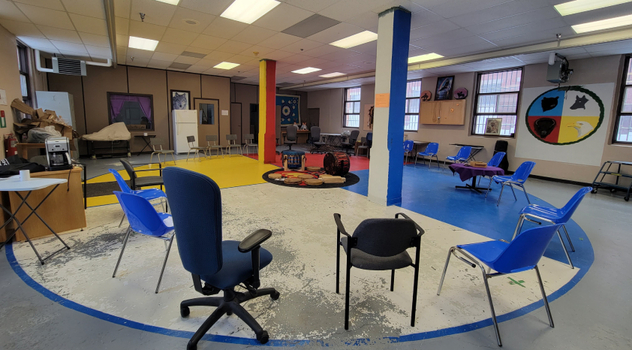
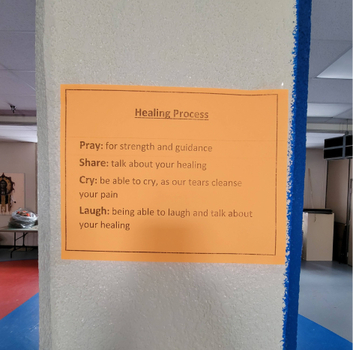
There was some consensus on the value of mediation in “circles” with the Elders and the importance of regular and randomized drug testing: not for the purpose of punishment, but to regulate the presence of drugs on the unit and to support the healing process. Some system of regular urinalysis testing, counselling, and treatment co-led by Health Services and the Elders seems warranted. The point of contention appears to be whether drug use should result in an automatic removal from Pathways, as illustrated in the following statement:
“Mediation is important in circle to determine commitment to the path. Under the zero tolerance policy, we would have one circle to discuss but the inmate would be out of Pathways. Now in the lenient model, a circle is triggered to make a decision.”
– Pathways staff
In reality, the absence of Elders and activities can increase idleness, aggravating drug use on the Pathways unit. The majority of interviewees reported that during the COVID-19 pandemic, Pathways initiatives across the country were severely disrupted, which staff and participants claimed led to increased drug use. As one participant explained, “COVID came around and there was no progress to work towards, so we all lapsed and used.” This was also the case at Stony Mountain Institution (SMI). However, in the fall of 2022, SMI’s Elders met with institutional management to evaluate the zero tolerance approach, and eventually decided to rescind abstinence in favour of a model that dealt with relapse on a case-by-case basis. Other institutions appear to be following suit, and CSC’s newly revised guidelines seem poised to remove this requirement altogether.87
2. Restrictive Entrance Thresholds for Participation in Pathways
During the investigation, my Office found significant variation in how admission guidelines and criteria were interpreted and applied between sites, with half of participants saying that the process is fair and the other half saying that it is not. Despite relatively straightforward national guidelines88 (i.e., Elder engagement, commitment to traditional path, readiness to abstain from illicit substance use, violence, and gang activity) we found a great deal of variance in how applicants were actually screened for Pathways. While some sites admitted virtually anyone expressing interest in Pathways, others increased the threshold. The bar was sometimes set so high that only the most compliant, engaged, or committed candidates89 could hope to gain entry.
Further, it is unclear that there is any substantive difference between Pathways “ready” and Healing Lodge “ready.” The normative assessment of behaviour requirements for selection, participation, and placement seem more or less the same for both – motivated, engaged, committed. What we are suggesting is that, in all likelihood, Indigenous individuals who meet the criteria for admittance into Pathways do not really need to be kept in penitentiaries at all, and could likely do just as well pursuing their healing path in a community-based Healing Lodge. Replicating a Healing Lodge environment within a penitentiary setting seems not only redundant, but also patronizing.
Pathways Initiatives and Healing Lodges seem to operate on the basis of exclusivity rather than inclusivity – places for the most promising, deserving, or “manageable inmates” to reside. The statistics would seem to support the convergence of these two conclusions. On average over the past fives years, 6% of Indigenous individuals under federal custody participate in Pathways and another 6% participate in Healing Lodges on any given day.
Single-Day Snapshot of Indigenous Individuals in Pathways, Healing Lodges, and Federal Custody (2019 to 2023)
Another way of framing the issue is in the language of rights and privileges. Should a pathway to healing and reclamation only be available to a subset of Indigenous peoples in-custody, those who earn their way and prove themselves eligible for this privilege? On the other hand, is healing and reclamation a right entitled to Indigenous peoples under federal sentence? In practice, it appears that Pathways – and the road to healing and betterment it promises – is offered as some kind of perk or privilege. Some of the interviewees we spoke with insisted that this is a detrimental approach.
“We are told that the [healing unit] is a privilege, but to me it’s my right as a Métis, Indigenous person … Every Indigenous person should automatically qualify for healing by virtue of the fact that they’re Indigenous. Pathways is weaponized to allow and deny a person’s healing … they’re using Pathways to reward and punish us in the guise of healing and betterment.”
– Pathways participant
By creating a system wherein a handful of individuals who commit to a traditional lifestyle can accelerate access to release options, while the vast majority are never offered or excluded from such a choice and continue to linger in prison, CSC may be perpetuating conditions of disadvantage and discrimination that lead to the over-retention of Indigenous prisoners. Failing to engage with or effectively disqualifying the majority of Indigenous peoples leads to further entrenchment in gangs, drugs and violence behind bars. CSC should continue to identify promising candidates for accelerated reintegration options, but also needs to cast a much wider net and offer the benefits of Pathways to all federally incarcerated Indigenous people, including the 90% who are currently not participating.
Pathways is not for Everyone
“Not everyone wants to live in Indigenous culture and we can’t shove it down their throats. By saying to Indigenous inmates that they need to do this and think like that, etc. it’s like we are recreating residential schools in reverse order.”
– Pathways staff
Although some welcome the opportunity to engage in a traditional healing path and others view Pathways as a safe and attractive alternative to general population, the vast majority of Indigenous individuals under federal custody are not involved with CSC’s Indigenous Continuum of Care. In considering the question of what may be holding back eligible candidates, we learned that for some, the behavioural expectations are truly daunting. As one participant put it, “If you don’t really identify with the culture, it can be a lot.”
There are also those who have no interest in the “Red Path” or have no intention of disaffiliating from gangs. The requirement to refrain from using drugs or to avoid involvement with gangs can be perceived as too high of a threshold. As such, some Indigenous individuals are of the mind that they will inevitably breach if released with conditions, and frame their sentence as “Life, on the installment plan.” We heard that some (especially younger) Indigenous individuals have resigned themselves to an inevitable return to custody.
“Some guys find it easier to go out and breach, come back and then go out at [Warrant Expiry Date] with no conditions.”
– Pathways participant
“Guys that have an upcoming release date are less likely to participate in Pathways. They don’t want to half-ass the program because they respect it and don’t want to pretend to be living a life they won’t continue on the streets. Staying sober is too difficult of a threshold. They know themselves.”
– Pathways participant
Individuals who subscribe to this worldview can often be found among individuals identified as Solids outside of special living units like Pathways. For these individuals, participating in Pathways can been seen as a sign of weakness. As one long-time incarcerated individual explained:
“On a regular range you don’t talk to COs [Correctional Officers] or Elders, you don’t take advantage of support systems. Everyone does solid straight time. Just do their time and nothing else, and gain a reputation of being ‘solid’ … There’s a stigma among young guys or other gang guys about Pathways as being for bitches, weak people, and when you’re on a ‘solid’ or [Gang] unit you don’t want to be seen as weak, but as powerful as you can appear.”
– Pathways participant
Finally, many incarcerated Indigenous individuals may prefer better access to higher education and meaningful vocational opportunities rather than following a traditional path to healing.
What Benefit is Pathways to “Lifers”?
Indigenous individuals account for slightly more than one-quarter of those in-custody with a life and/or indeterminate sentences.90 In practice, individuals with life and/or indeterminate sentences (henceforth, Lifers) in federal custody are not expected to participate in correctional programs that aim to accelerate cascading to lower security levels and community reintegration. This expectation is even entrenched in the correctional culture as Lifers have a harder time getting access to programs and other correctional activities earlier in their sentence. In light of this, initiatives like Pathways that facilitate cascading and prepare individuals for community release within a narrow window of time are generally not deemed suitable for Lifers – unless they are close to parole eligibility or a review for minimum reclassification. As one Pathways staff put it:
“A Lifer who just came to medium should not be on Pathways for six years – not appropriate to do this program for years at a time. The six-month review is redundant for Lifers. When I do reviews for these guys [Lifers] I hardly change anything, unless they’ve completed programs. They are not getting reclassified.”
Unsurprisingly, Lifers experience different outcomes as Pathways participants compared to (often younger) individuals with determinate sentences.91 Ideal participants are described by CSC as those, “who would stay no longer than one year prior to movement to lower security” (GL 702-1). As one interviewee put it, “Long term guys and DOs [dangerous offenders] are often looked over, while the young guys, intake guys, or short sentence guys are moved quickly.” Another participant shared his experience as follows:
“Been here at the medium for two years, and in Pathways for six months. As a lifer, we get bumped and it takes longer to cascade. Getting assessments is hard, like for psych assessments to cascade. Unless there’s a parole date coming up, you’re getting bumped.”
However, despite poorer outcomes and fewer incentives, during interviews we found that Indigenous Lifers – whether due to older age or a greater affinity to culture and spirituality – were often more intrinsically motivated to pursue a traditional healing path. Yet, by design, the Pathways admission process is more restrictive for Lifers. As per CSC’s GL 702-192:
Lifers or other offenders who do not have the potential to transfer to lower security or be conditionally released within three years may be admitted to Pathways where appropriate. The available bed space for Lifers should not normally exceed 20% of available bed space.
Making matters worse, motivated Lifers who demonstrate progress along their healing plan, who are engaged, and on “good behaviour” are still being passed over for transfers to lower security placements. Instead of cutting Lifers off at the three-year mark, CSC could recognize their engagement with more meaningful rewards (e.g., ETAs, lower security transfers, and transfers to Healing Lodges).
Using Pathways Units to Relieve Population Pressures
During interviews, we learned that institutional staff do not always respect the admission and placement criteria for Pathways. When empty cells are available on the Pathways unit, they may be used just like any other cell. Overflow issues at some institutions are relieved by placing non-Pathways (often non-Indigenous) individuals into beds reserved for Pathways. In these situations, the priority appears to be “filling beds” rather than identifying eligible participants for Pathways. When we presented this problem to senior operations staff at the same institution, they offered this explanation:
“There are difficult offenders who are put on the range because we have nowhere else in the institution to put them. They are Indigenous, but they do not meet the criteria for Pathways. It’s an alternative place to put the guys when nothing else works. These individuals are given priority over offenders who might be on a wait list already. Sometimes it has worked and the guys have fit in. Sometimes it doesn’t.”
At another institution, a senior Pathways staff member talked about how inmates are “dumped on the unit … to relieve population pressures.” As of December 2022, twelve of the individuals residing on the medium-security Pathways unit (funded for 40 beds) were found not to be participants in the intervention. Though this situation has improved, the non-Pathways individuals are not easily removed. The staff member complained, “I have to swap them with someone else, and that person might not always be a good fit.” Another staff member described the situation as follows:
“If bed space opens, someone is dumped in there. …Everyone is mixed, which contaminates Pathways. But we also have [legitimate] requests for Pathways through letters and applications, so we have to maneuver to get them in the program when the bed opens up.”
Warehousing of non-Pathways inmates and difficulties with moving non-Pathways individuals off the unit has resulted in a bottleneck. As one participant put it, “There are other guys out there who want to be on Pathways, but can’t participate because there’s no room.”
With already low participant numbers, the fact that Pathway beds are being used to warehouse non-Pathways individuals puts the integrity of the initiative into question. It also demonstrates how institutional initiatives aimed at supporting Indigenous individuals are vulnerable to obtrusion by operational staff.
PATHWAYS CELLS AT SASKATCHEWAN PENITENTIARY
3. Mistreatment at the Hands of Operational Staff
“The [Pathways] participants are not treated as healing Indigenous women by CSC staff. They are always inmates. There should be an effort to change the narrative. The word ‘inmate’ equates to colonization.”
– Elder
By far, the most common complaint we heard from Pathways participants and staff at all institutions pertained to the cultural insensitivity and disrespect of some correctional officers. Although a minority, the presence of culturally insensitive correctional officers is highly disruptive to the stability of Pathways.
“There’s racism with the guards. They just assume that we get everything, that we’re special. [GUARD] always calls me ‘chief’ and thinks that because I’m ‘Native’ that I’m getting everything, and I don’t deserve it. In regards to the bathroom renos [sic], they say we don’t need the place renovated and painted. They think we’re acting entitled. I would say that eight out of ten guards have this attitude.”– Pathways participant
During interviews, we learned that some operational staff – in particular, officers involuntarily93 assigned to Pathways units – show a lack of understanding and willingness to learn about Indigenous culture, history, and the trauma carried by Indigenous individuals. These attitudes are also reflected in how they treated Pathways staff and Elders. Some operations staff also make disparaging or derogatory remarks about the Pathways Initiative demonstrating insensitive, discriminatory, and ill-informed views:
“Officers are our biggest challenge; sometimes they don’t understand or lack cultural sensitivity.”– Pathways staff
Many interviewees spoke about how some officers would express disgust with the smell of smudging or would prevent Elders from accessing Pathways when they did not have the discretion to do so.
“Guards come in with attitudes, like when we’re smudging they complain about smell and these situations challenge our cultural healing. Many view it as racism. When we complain about their attitudes we get charged for verbal assaults.”
– Pathways participant
“CX staff are so disrespectful, we need staff who care about us. They were holding their noses when they walk by us doing smudges.”
– Pathways participant
At one institution, in response to ceremonial smudging that was occurring on the unit, correctional officers raised a complaint under section 127.1 (1) of Canada’s Labour Code citing concerns with “second hand smoke.”94 The Elders, ILOs, and participants are now required to smudge outside. When asked why officers are not more carefully selected, the Correctional Manager (CM) responsible for this Pathways unit offered:
“No CX [correctional officer] wants to work here because working with Indigenous inmates is hard. You know, they play the race card, and I get it, they’re triggered by uniformed officers in positions of authority, so it’s hard for CX’s to work here.”
Although CSC has repeatedly made commitments to provide “cultural competency” training to its staff, our investigation into the Pathways initiative suggests that there is ample room for improvement. This would include the recruitment, retention, and promotion of more front-line and management staff with shared lived experiences.
4. Case Management and Reporting
Inflexible and Often Redundant Reporting Requirements
In its 2016 audit of CSC operations titled, Preparing Indigenous Offenders for Release, the Office of the Auditor General (OAG) issued the following recommendation:
CSC should ensure that Indigenous offenders are assessed for a possible reduction in their security level following a significant event – such as the successful completion of a correctional program – to support their reintegration.
In response, CSC said that it would “ensure that each offender’s initial correctional plan clearly outlines the significant events … that will require a reassessment of an offender’s security level…” Two years later in January 2018 (see Policy Bulletin 586); CSC added the following to sections 8 and 9 of Commissioner’s Directive (CD) 710-6 – Review of Inmate Security Classification:
8. For Aboriginal inmates, a Security Classification Review … will be completed within thirty days of an inmate’s successful completion of a main program (based on the final Program Report date) for inmates classified at maximum or medium security level.
9. For Aboriginal inmates participating in Pre-Pathways interventions/Pathways units, a Security Classification Review … will be initiated at least every six months and completed within thirty days of the Pathways Progress Review Meeting.
Note: Text bolded by our office.
Senior Pathways staff shared that because of the OAG report and recommendation, there has been increased demand for regular reporting, tracking, and reviews – including the six-month Offender Security Classification (OSL) review. Pathways staff across all sites expressed frustration with the inflexible and often redundant six-month OSL reviews.
“Good case management requires spending time with inmates to do meaningful interventions, talking about trauma, but my time is wasted with these reviews. I’d like to know what good comes from these.”
“That’s a lot considering that [Parole Officers] already have to complete OSLs after program completion. There is no leeway in the deadline if, for example, the inmate is one month away from program completion. It would make more sense to be able to wait for that to happen.”
With limited resources, large caseloads, multiple corporate reporting requirements, and the operational realities of working in a prison, staff reported feeling pulled away from their important case management responsibilities. One staff member said, “Reporting every six-months with limited staff takes away from important interactions we should be having.” Another senior staff member spoke about the arbitrariness of timeframes written into policy, “Timeframes should be more flexible. Healing is a lifelong journey – it doesn’t happen in a specific period of time.”
Staff do not object to the principle that regular OSL reviews are required for Pathways participants. The concern with the six-month review has to do with its utility in cases where change cannot be demonstrated over a six-month period, or when the six-month review occurs before a correctional program concludes. One senior Pathways staff member explained the situation as follows:
“[OSL] reviews are occurring both post-program and following six-months of engagement in Pathways. It is unfortunate that we often come across situations where a six-month Pathways review is required, then 30 to 40 days later a correctional program concludes. This has resulted in [Case Management Teams] completing two separate Correctional Plan updates and [Assessment for Decisions] regarding the OSL in order to ensure compliance with timeframes and reporting …
There are numerous examples of directions to ‘track and report’ areas of concern, including conducting quarterly reviews of site OSL override stats, developing and maintaining a Section 81 and Day Parole spreadsheet, and to increase Work Releases and ETAs for Indigenous offenders by 25% over the 2019-20 fiscal year. These reporting requirements, again, appear to fixate on reporting and corporate monitoring, and not necessarily developing and implementing meaningful strategies to positively impact the successful reintegration of Indigenous offenders.”
Healing Path does not Map onto Corporate Reporting Requirements
Within CSC,95 Pathways is considered an Elder-driven intensive healing initiative, “based on the Indigenous Medicine Wheel, also known as the four Directions Medicine Wheel.” The Medicine Wheel at the centre of CSC’s Indigenous Continuum of Care aims to illustrate the holistic nature of this model by linking individuals to their history, culture, and spirituality. The Healing Path described by the Continuum of Care is available to individuals “who show genuine motivation and commitment” to make progress along four quadrants of change: emotional, mental, physical, and spiritual.
Corrections Continuum of Care
It is recognized that Pathways participants generally receive more support from their case management team than non-Pathways individuals do. Pathways assigned staff are expected to write more reports and to make more recommendations to ensure that Pathways participants make rapid progress as per the initiative’s guidelines.
However, virtually all the staff we interviewed reported that the progress made on Healing Plans does not easily map onto CSC’s assessment and classification tools. For example, changes to dynamic factors that occur through ceremony, cultural activities, and one-to-one counselling or any equivalencies to core-programs that are addressed in Pathways are not adequately captured in casework records. As one Indigenous Pathways staff member explained:
“The culture helps the men and our People. It’s a struggle to put it on paper in a way that persuades the decision makers, parole officers, and PBC that these guys are making some ‘progress.’ It’s hard to capture and document ‘change’ along a healing path in a Western way. At the end of the day, we [Indigenous Peoples] are in a system, and we have to learn to work in the system imposed on us. I want to show how dynamic factors link to progress made in Pathways.”
Another senior Pathways staff member shared the following:
“Translating Indigenous results and the progress of Indigenous interventions via spreadsheet tracking and corporate monitoring tools, is problematic. Recently, at a Pathways Progress Review Board, [the Elder] commented that entering the Sweat Lodge, in itself, is progress and will result in change. He opined that this change cannot be measured by CSC standards, tools and scales, as the change is slow, internal and deeply personal. From what I have learned in working with the Indigenous staff and partners here … , CSC’s constant attempts to measure progress via spreadsheets and rigid review timeframes do not align with the principles of Indigenous spirituality and tradition.”
Progress Made along the Healing Path does not inform Reintegration Planning
Staff and participants both agreed that Pathways (at least, in theory) offered more support to Indigenous individuals than what was offered in the general population. Some markers of success are supposed to include quicker cascading to lower levels of security, more Healing Lodge placements, increased temporary absences, securing early parole, and community reintegration with an adequate support structure. With resources in place and the initiative running as intended, interviewees believed it would be possible to achieve these outcomes. However, these outcomes are not necessarily fulfilled. As one Pathways participant put it:
“Since I’ve been here, I’ve only seen a handful of guys cascade down. One of the Elders said the goal of this program was to get everyone down, but the guys I’ve seen go to minimum are one’s who were already minimum. Since I’ve been here, none of that’s been happening.”
Participants explained that although they are committed to their healing path, case management staff appeared fixated on assessing and managing risk. Interviewees shared that there is a lack of understanding among some decision makers around Indigenous Social History (ISH) assessments, which are often misused to reinforce negative perceptions of risk.96 As one Pathways staff member put it:
“There remains a divide between progress in Pathways and risk assessment by the CMT [Case Management Team]. Often there is a view that the CMT does not weigh the inmate’s progress in context of their ISH [Indigenous Social History] and solely focuses on an analysis of risk.”
One participant we spoke with described how correctional assessments are used against Indigenous individuals and the systemic racism experienced by Indigenous peoples throughout their lives:
“Your paperwork is always more negative than a White offenders. They talk about the indigenous social history, and all of this stuff gets written down about poor family support and living on the rez – and they are supposed to take that into account for sentencing and stuff, but how do they take that into account? Do they use that to uplift you? Most of the time they write it down, but they don’t seem like they read it or anything. Of course growing up in that environment, you are way more likely to have criminal stuff when you are young; stuff no White kid would get hassled about because it’s kids stuff. We get it on our records and then you’re eighteen with a bunch of charges, and right off the start you’re getting more time for the same offence because you have the history. It should be a focus on a pro-social history, not just writing stuff down.”
In fact, in its 2016 report, the OAG reported, “offender casework files did not document the impact of the interventions provided to offenders or the extent to which the interventions contributed to the offenders’ successful reintegration into the community.” The report goes on to say:
… we found that the assessments prepared for conditional release by parole officers contained no documentation of the benefits of an offender’s participation in culturally specific correctional interventions, such as Pathways Initiatives or Healing Lodges.
At some institutions, we also observed a disconnect between Pathways and case management staff. Specifically, Pathways staff are not consulted in relation to correctional planning and case management decisions (as mentioned before, the sole focus appears to be security and risk management). Elders and staff can engage and provide teachings, but it is not clear how these interventions are considered in correctional planning and case management decisions. Some interviewees reported that participants deemed “engaged” will obtain good feedback from the ILO and Elder, but Parole Officers continue to assess them as high or even increased risk. As a result, they are not supported for Escorted Temporary Absences97 (ETAs), security reclassification, transfers to Healing Lodges, etc.98
“I don’t think the ILOs are getting a say into who’s getting ETAs … If ILOs were making the decisions, there might be more ETAS for more guys.”
– Pathways participant
Despite the fact that the vast majority of Healing Lodge placements reportedly occur directly from Pathways99 and one-third of Healing Lodge beds are empty, many participants we spoke to had been in Pathways for over a year and have not yet received support for security reclassification. It is not clear to them what they must do in order to cascade. Some are considering leaving the initiative, stating that Pathways is merely a façade to show how CSC is delivering on its National Indigenous Plan. As one senior staff member put it:
“There is a national push for results and to collect data on inmates who successfully complete Pathways, to have more inmates go through Pathways and successfully complete the program. However, the integration of CMT into this plan can be challenging when their focus is solely risk analysis. The goal should be to reduce incarceration time and support progress through sentence planning …. This is often not the case.”
Unreasonable Timeframes
Policy requires that participants complete the Pathways Initiative within a given timeframe. As per GL 702-1100, section 15 (o):
Ideally, a participant in Pathways would stay no longer than one year prior to movement to lower security (with the exception of lifers who may require a longer intervention).
Many staff expressed frustration with the timeframes built into the Pathways model. One senior staff member explained, “It’s too fast to expect change in most inmates, sometimes they take steps backwards before they make progress.” Others described the timeframes built around what is essentially a healing path as “unrealistic” and “insensitive.” Virtually all interviewees agreed that the timeframe set out in the guidelines are too rigid and do not allow the time required to address trauma, or even to begin the healing journey. This is another example of CSC imposing its own timelines and targets on a process that requires flexibility, understanding, and patience.
5. Lack of Continuity and Support in the Community
“Following the spiritual path inside is not that difficult. Once outside, the pressures are different.”
– Community Stakeholder
“You can teach us whatever you want in Pathways, but when we need you most is on the streets.”
– Pathways participant
In CSC’s own words, the Indigenous Continuum of Care “ends with establishment of community supports to sustain progress beyond the end of the sentence and prevent re-offending.” However, in interviews with staff and incarcerated individuals we learned that support mostly ends upon release. As one staff member put it, “the Indigenous continuum of care should be continuous until warrant – we support them for years, but then when released they’re on their own.”
“Guys need to know that people are there for them when they’re out. When guys get out sometimes, they’re forgotten about. We’re expected to function up here [gestures ‘high’ with hands], but they can’t do that. Everything is handed to us here, and that’s not how it will be in the community.”
– Pathways participant
One interviewee spoke about institutionalization and the trouble with becoming habituated to receiving supports in Pathways. He explained how difficult it would be to find the same supports in the community, and then went on to speak about his anxiety when contemplating reintegration:
“I don’t think there’s a good model in place to ensure continuity into community release and support. … It’s hard to get over the nervousness and anxiety before going to community. Especially in getting a job with the criminal justice system hanging over my head. I’m really worried. … Living in a minimum security prison is easier than going into the community.”
Despite the above apprehensions around release and reintegration, there was a pattern of thought among both participants and staff that the “offender” is ultimately responsible for their own success. Indeed, CSC’s correctional model presumes that “reforming individuals” should mitigate recidivism.
“We had one guy go out and come back, but that’s because he didn’t take advantage of his supports. He had the Elder’s cell number. Elders clearly tell us that they are available to us in the community. They give us a cell number. They will take you to ceremony and support you, but you have to reach out – it’s on you.”
– Pathways staff
“If a person is serious about their healing journey, then they take these tools with them. The ILOs and Elders will help set up the supports in the community, but its up to the IM to prioritize and commit to this, engage with it.”
– Pathways staff
Conclusion and Recommendations
Our investigation yielded the following findings into CSC’s Pathways Initiative, as it currently operates:
- Compliance with corporate guidelines has proven difficult at most sites; Elders are rarely leading the initiative, which has an impact on the quality and provision of cultural and spiritual services;
- Pathways participants across all sites have experienced regular mistreatment by some operations staff involuntarily assigned to the initiative;
- CSC systematically deprioritizes or outright ignores Indigenous ways of being and knowing, and often cannot translate progress on healing plans into case management reports and results; and,
- Participants experience significant disruptions in the continuity, quality, and intensity of services upon release to the community.
On their own, these findings could be addressed by tweaking parts of the existing system through, for example, enhanced training, more compliance, expanded case management criteria, increased community supports, etc. However, our Office has a more fundamental concern that goes beyond enhancements to the existing Pathways Initiative. Namely, the threshold for entrance into Pathways is so unreasonably high, that it screens out the vast majority of the Indigenous population. Less than 10% of incarcerated Indigenous individuals benefit from Pathways; therefore, the vast majority of the Indigenous population simply does not qualify to participate and their needs are largely neglected.
In April 2023, CSC shared an updated Pathways National Handbook with our office for review. In this document, it states that Pathways participants should “demonstrate success in the following areas”:
- Increased reduction in security;
- Increased transfers to a minimum or healing lodge;
- Increased program completion;
- Higher levels of education upgrading prior to reaching full parole eligibility;
- Increased discretionary release (day or full parole) upon 1st release;
- Increased Section 84 releases; and,
- Increased ETA/UTAs for Community Engagement and Personal Development purposes.
It is our view that the “Success Indicators” listed above are practically guaranteed given the high threshold for entrance into Pathways. Arguably, individuals who are assessed as likely to meet these outcomes within six to twelve month of admittance into Pathways should be fast-tracked to Healing Lodges, or released into the community.
Simply put, the cohort currently eligible for Pathways could likely be managed at lower-security institutions or non-custodial placements. The Pathways Initiative is quite literally a penitentiary-based Healing Lodge, and many of the staff and Elders we spoke with believed they could achieve even better outcomes outside prison walls.
“If we had our own location, like a Healing Lodge, that was protected from the drugs and violence, where high need and risk inmates can be managed in an environment protected from triggers, temptations, provocations, that would be ideal.”
– Pathways staff
Institutional initiatives targeting Indigenous individuals should focus more on improving outcomes for those who fail to meet the high threshold for entrance into Pathways. Federal corrections needs more and wider pathways out of prison.
- I recommend that CSC enhance the impact and reach of institutional Indigenous initiatives by:
- Conducting a review of current Pathways participants to identify and recommend individuals for Healing Lodge placements and other non-custodial alternatives (e.g., section 84 agreements).
- Developing an overarching culturally responsive approach that comprises of institutional initiatives for Indigenous people who do not benefit from the current Pathways model. This would include expanding the benefits offered by the Pathways Initiative (e.g., access to Elders, ILOs, Healing Plans, one-to-one counselling) to a larger number of individuals.
- Developing clear and concrete Correctional Plan objectives that guide sentence planning for offenders serving sentences of 10 years to life, and providing more meaningful incentives to Indigenous Lifers (e.g., ETAs, lower-security transfers, and Healing Lodge placements).
- Collaborating with Indigenous Initiatives at the regional and institutional levels to develop yearly national action plans that increase in-reach by First Nations, Métis, and Inuit communities, community based organizations, non-profits, post-secondary institutions, and other stakeholders to establish ties and support systems with incarcerated individuals that begin at intake and continue post-Warrant Expiry.
An Investigation of the Role and Impact of Elders in Federal Corrections
Voices of Elders
“After having spent years decolonizing myself, I was hesitant to work for this very colonial institution.”
“Our people who work in CSC need to be taken care of. Some of us carry the trauma of the guys, and they can’t carry that. They get sick.”
“I’m here to teach the inmates about life really, where life originates through all our medicines and our ceremonies and our prayers and taking responsibility, as [a] father or community member. We’re trying to get them back into our society, to the ceremonies … to try to help them out to make changes in their life.”
“They told us [this] place is supposed to be Elder-run. But man, it sure isn’t Elder-run. I think it’s Corrections run.”
“I’m a quiet First Nations man. We learned to be quiet from residential schools.”
“You guys (CSC) use case records to judge and know the men, that’s not how we know them and work with them … CSC is dealing with them as bad criminals, but we’re offering them medicines … Guys will tell me that CSC didn’t help me, the Elders helped me.”
Introduction and Context
In the original Spirit Matters (2013) report, released more than a decade ago, the Office made the following observations concerning the role and impact of Elders (Spiritual Advisors) working under contract in federal correctional institutions:
Elders are at the centre of any healing process, be it through ceremony, teaching or counselling. They are an invaluable resource … Unless and until Elders are able to focus their work on addressing the healing needs of offenders, have manageable caseloads and are properly compensated, [Correctional Service of Canada’s] Continuum of Care Model will not meet its full potential of successfully reintegrating Aboriginal offenders into their communities. (p. 31-32).
At that time, as the Office noted, Elders faced significant barriers, including workload, operational and contractual limitations, challenges that impeded their ability to provide their unique services within the Correctional Service. The report, released in Parliament, called on the Correctional Service of Canada (CSC) to “set realistic standards of service, caseloads and payments for Elder services,” and for CSC to report on progress made in achieving those standards.
In updating our original Spirit Matters report, throughout 2022-23 the Office planned and conducted a series of engagements and investigative interviews with Elders. We were looking to document what they had to say about their current relationship with CSC. To assist us, the Office contracted with Archipel Research and Consulting agency.101 A total of 55 Elders/Spiritual Advisors and Elder Assistants were interviewed in the course of this investigation, which also included a series of sharing circles and one-on-one interviews conducted by the contracting agency. A number of staff members and participants in Elder-led initiatives were also interviewed. Finally, a review of corporate CSC documentation – Commissioner’s Directives and Guidelines; internal reports, audits and evaluations; terms of reference and statements of work; minutes of relevant Regional and National committee meetings102 – complemented the insights and perspectives shared by participants.
National in scope, the aim of this investigation was to capture, collect and synthesize the views, experiences and advice of Indigenous Elders working within Canada’s federal correctional system. In updating Spirit Matters, we purposefully sought to solicit Elder voice and experience recognizing that they are in closest and most frequent contact with the Indigenous populations they guide, instruct and counsel, inside and outside prison. Elders know their ‘relatives’ best and they are intrinsically motivated to serve and advocate their welfare. As such, Elder views and insights are indispensable in forging stronger relationships between CSC and Indigenous peoples and communities in the spirit and direction of reconciliation.
The findings emerging from this investigation provide important context from which to illustrate a subset of long-standing “Elder Vulnerability” issues within federal corrections.103 Personal and first-hand accounts also lend practical insight into CSC’s management and oversight of contracted Elder services.104 Throughout this investigation, the Office was able to identify several unresolved issues in the relationship between CSC and Elders – workload and working conditions; contractual issues; treatment, respect and recognition; pay and compensation; self-care, wellness, safety and support. Resolution of these issues is essential in creating a space of trust and confidence where an Elder-driven approach to Indigenous Corrections could truly take root and flourish. Addressing these issues would truly benefit the care and custody of Indigenous incarcerated people.
The Office thanks Elders for their participation and generously sharing their perspectives and experiences. What follows is a thematic and interpretive summary of what we heard in several engagements with Elders from across the country. Four core themes emerged from these engagements, each pointing the way forward to a better appreciation of the invaluable, but often over-looked, role and impact of Elder work within CSC.
- Role and Management of Elder Services within CSC
- Workload and Working Conditions of Elders
- Respect and Recognition of Elders
- Elder Vulnerability Issues
The concluding section of this investigation includes a discussion, summary of concerns and practical recommendations to support the work of Elders within CSC, and in turn support Indigenous peoples under federal sentence.
1. Role and Management of Elder Services within CSC
The Role of the Elder
The term “Elder” means any person recognized by the Indigenous community as having knowledge and understanding of the traditional culture of the community, including the ceremonies, protocols, teachings and healing techniques, according to the beliefs and social traditions of their communities and teachers/Elders, and may also be known as a spiritual advisor. Knowledge and wisdom, coupled with the recognition and respect of the people of the community, are the essential defining characteristics of an Elder. Elders achieve these gifts by following a traditional way of life, and following the teaching of Elders and healers over a significant period of time. Some Elders may have additional attributes, such as those of traditional healer. Elders may be identified as such by Indigenous communities, other Elders, and their teachers.
Source: CSC, Statement of Work for Elder Services.
By bringing Elders into programming for Indigenous offenders, CSC is affirming the critical role Elders play in Indigenous communities as leaders for future generations. In First Nations, Inuit, and Métis cultures, Elders are revered as Knowledge Keepers, wisdom holders, cultural and spiritual leaders. Elders have historically been advisors to their communities and have provided support and guidance to their peers and the younger generations.105 Elders utilize Indigenous approaches to wellness, which understand the interdependence between the individual’s wellness and larger social contexts including family, community, nature, and the Creator. In turn, Elders are highly respected and supported by their communities, receiving care and help in facilitating ceremonies.
CSC’s policy and governance framework for Elder Services seems to respect these understandings, for example, acknowledging that only an Indigenous community can define who is, in fact, an Elder. Elders are responsible for preparing, coordinating, and conducting traditional ceremonies and some cultural activities in federal prisons. Depending on what Nation they come from and what honours they carry, Elders might be involved in leading sweat lodges, morning prayers, memorials, language teaching, Grandfather teachings, Pipe ceremonies, dances, baths, Longhouse ceremonies, Blanket ceremonies, drumming circles, and others. Today, there are approximately 130 Elders/Spiritual Advisors contracted to provide spiritual, ceremonial, counseling and programmatic services at CSC facilities across the country.
CSC Elders can be assigned to programs, such as Pathways, or work in designated areas of the institution, such as Structured Intervention Units, the Secure Units at women’s regional facilities and general population ranges in mainstream institutions. Elders also work in CSC run Healing Lodges. While not every incarcerated Indigenous person will seek to work with an Elder, with approximately 4,200 Indigenous peoples in federal custody these numbers translate into an overall ratio of approximately 30 Indigenous prisoners for every one Elder, a ratio that does not meet needs or demand.
With respect to policy, CSC does not have a specific Commissioner’s Directive (CD) dedicated solely to the provision of Elder Services, though CD 702 (Indigenous Offenders), its associated Guidelines and numerous other policy instruments set out expectations for Elders, including their involvement in Indigenous initiatives and interventions. Contractually, Elders are expected to participate in CSC case management, and, upon request, provide CSC with advice and guidance on regional or national issues affecting Indigenous peoples under federal sentence.
The Corrections and Conditional Release Act provides that: (i) Elders are afforded the same status as other religious leaders, including Chaplains; (ii) Elder services are to be made available to all Indigenous persons under CSC care and custody and; (iii) CSC is to seek advice from Elders when providing correctional services to an Indigenous inmate. Reflecting the contractual nature of the relationship, CSC is to provide Elders (and their Helpers) with the appropriate supports, resources, confidential facilities (indoor and outdoor sacred spaces), authority and training (orientation) to conduct their activities. Considered together, a combination of law, policy and contractual expectations set out the governance framework for CSC’s engagement with Elders.
As documented here, there is reason to be concerned that CSC is not meeting these obligations as completely or as intentionally as designed. In fact, as will become clear, there are any number of deficiencies in CSC’s relationship with Elders. As a recent (August 2022) internal audit of the Management of Elder Services found:
- There is limited oversight of the delivery and management of Elder Services within CSC.
- There is no strategic plan outlining resourcing, funding or requirements for Elder Services at the site level.
- Beyond Elder Reviews, other Elder Services such as ceremonies, counseling and advice to CSC management are not measured or reported upon.
- The resource indicator that allocates funding for Elder positions within CSC has not been updated since its initial creation in 2006.
- Elders are too few in number and are spread too thin to serve the growing population and needs of Indigenous persons under federal custody.
- CSC’s processes to identify, select and hire Elders is insufficient.
Most astonishingly, what the audit essentially reveals is that CSC is unable to provide any reasonable assurance that it is properly and consistently providing Elder services from one site to another. It is also not clear who is responsible or accountable for ensuring Elders provide services as per their contractual expectations. On these findings alone, there is every reason to believe that the provision of Elder Services within CSC is under-funded, under-valued, under-reported and under-appreciated.
2. Workload and Working Conditions of Elders
Throughout this investigation, Elders repeatedly raised concerns about the hiring, employment and compensation structure within CSC. With respect to the latter, Elders explained that the structure of contract work means that they do not get sick days, vacation pay, pension, or health benefits:
“When you’re a contract, you don’t get sick days, you don’t get pension, you don’t get vacation. Basically, you got to figure it out on your own. At the end of the day, here we are, we don’t have anything, we don’t have a pension. It kind of keeps us in a poverty state of mind. Because we’re not benefiting from our job. We’re not in the long run. I mean, we’re helping people, yes. But, you know, on a financial level, it doesn’t work very well.”
In addition to inadequate compensation, Elders noted that a major shortcoming of the hiring process was lack of job security.
“There’s no job security, that’s one of my biggest fears. I don’t feel secure here at all, when it comes to the employment here. Every two years, we sign a contract and if they’re going to get rid of you, they just don’t sign your contract. That’s how they do it and everybody had that fear, all the Elders that that worked here in [this] region.”
Due to a lack of job security, many Elders felt that their employment with CSC was precarious, especially if they were to voice concerns or speak up against CSC practices or staff.
“We don’t have any job security as Elders in the institution. I remember when I first started here, I was really afraid of being walked out. Because I’ve heard so many of my other Elders being walked out of the institution, really without cause. I know a few Elders that have experienced that, getting walked out. That’s one thing that as Elders, we need that protection from the institution. […] There should be a system if an Elder [i]s going to get walked out there should be an appeal process. There is no appeal process whatsoever.”
For many Elders, the risk of being fired, or “walked off the job,” kept them from speaking up against unfair labour practices or inappropriate workplace behaviour. Some shared stories of retaliation from CSC staff when they spoke out. One Elder who participated in this project was told that their contract was not going to be renewed, after criticizing CSC programming:
“You know [t]hat cancel culture is prevalent these days and when someone speaks out against an organization they are cancelled. And they informed me that my contract come March 31, will not be renewed. So, I said, ‘Well, if it’s in the best interest of the offenders to get rid of me, then so be it.’ But I think that’s a huge mistake.”
Understandably, participants felt that the lack of job security was detrimental to their health and wellbeing. As one Elder related, “I really I have massive issues, but I don’t want to file a complaint. I don’t want to rock the boat. I know how fragile my income is and I really need this job.” Others felt that the lack of an appeal process for Elders who were let go was decidedly unfair.
Many Elders felt that the contract system was designed to benefit their employer, not them. They explained that they are subject to the same rules and oversight as CSC employees, but did not have access to the same benefits, entitlements and pensions like CSC employees. At the same time, some interviewees acknowledged that they prefer the flexibility of the contract system. Still others refused to dichotomize the matter so long as their independence and autonomy were protected. However, when queried, the majority of participating Elders were clear that they wanted to be given the option to work as permanent employees so that they could access advantages and protections like increased pay, job stability, sick days, health benefits, and pensions. Currently, there is no choice offered in the matter.
Several Elders compared their treatment and position within CSC to that of chaplains. They noted that many of their spiritual advisor counterparts have a union and therefore receive better pay and have access to other employment benefits like a pension. Effective April 2023, depending on years of experience, the current range of pay for an Elder/Spiritual Advisor in CSC is $72.6K to $83.8K. Contracts do not exceed 1,717.5 hours per year. It is not clear how, or if, this pay scale recognizes honours and competencies conferred by Indigenous communities to perform certain spiritual and cultural ceremonies.
The suggestion was that Indigenous Elders were not being treated with the same respect accorded to other religious leaders or Spiritual Advisors, as guaranteed in law:
“I want to know [if] the chaplains get a better package than we do. Because that is discrimination. They have a union, and their union negotiates. They have sick time, they have vacation time, and the union negotiates the contract.”
Relatedly, many participants rightfully noted that they were paid significantly less than most other CSC staff, despite providing what even their employer considers an invaluable and irreplaceable service. For example, the top annual pay rate for Chaplains in the federal government ranges from $82,223 to $89,892. Moreover, several Elders pointed out that their work was full-time, but they were designated (or regarded) as casual or part-time contractors by regional administrators.
On the point of hiring and selection, Elders wanted to see a process that was consistent, clear and faster, suggesting that the current process is anything but efficient or transparent. As one Elder related:
“… (W)e have so many good Elders out there, really good Elders. However, they’re not working in the institutions because of the process of abuse that the Elders go through in this system.”
A number of respondents noted that the various pressures on Elders and conflicting expectations result in high turnover rates, even at seemingly well-functioning and well-resourced facilities. Internal audit findings conclude that Elders found the regional contracting process to be lengthy and onerous, and felt uncertainty about their job security given the yearly contracting schedule. As one staff member indicated, “It’s hard for Elders to work here. To fill positions. Sometimes when an Elder applies, it takes months to get cleared.” It is not uncommon that qualified candidates end up taking other jobs. Other obstacles in Elder selection and recruitment include unwillingness to work for CSC, reluctance to leave their home community, inadequate pay and the uncertainty of job security. These are far from insurmountable barriers, and the point remains that CSC has to do a much better job in supporting, valuing, attracting and retaining Elders.
In addition to issues with employment precarity and inadequate compensation, numerous Elders raised concerns about their capacity to meet the demands and expectations placed on them. Several Elders saw bureaucracy within CSC as a major impediment, noting that too much of their time is consumed by administrative duties to the detriment of their primary responsibilities:
“Over time, the amount of paperwork that has been allocated to us is starting to take us away from the ceremonial aspects. And worse, for myself, I write Elder reviews, and I’m really involved in all with the POs [parole officers] and everything like that. It seems like that was starting to take up more and more time, and less and less time for ceremonies and individuals. What I was originally intended to do got off track.”
“(H)ere it’s paperwork, paperwork, paperwork.”
“The Elders come in do a sweat. The Elders work really really really hard at a sweat, and he’s expected now to finish the sweat and then go to the office and write all these reports to keep CSC happy. ‘How many were in the sweat?’ ‘How many problems?’ Why can’t the Elder just go home and relax, come back the next day with their mind clear and write that?”
Elders felt that their ability to provide quality care is compromised by the burden of administrative tasks that have been added to their workload. Many felt that CSC could offer better supports to Elders facing unnecessary mission-creep, higher or more demanding workloads.
Virtually all the Elders we spoke to expressed gratitude for their oscapio (helpers), Elder’s Assistants, and Indigenous Liaison Officers (ILOs). Elder’s Assistants provide support by leading smudges and helping to facilitate cultural activities. The ILOs provide critical support to the Elders by conducting one-to-one sessions with residents, responding to the ongoing needs, and handling administrative tasks that would otherwise fall on the shoulders of Elders. Their responsibilities can also include bringing resident concerns to management, preparing memos for sweat lodges, coordinating sharing circles, helping with feasts, assisting in Elder Reviews. An interviewee at one site said that Pathways “runs best when there is a good working relationship between the Elder and ILO.” However, as we also heard from Elders, ILOs are not being properly compensated for their value either. As an entry-level position with a challenging workload, the turnover among Indigenous staffing is high. We learned that many of them seek promotions in CSC’s programs sector.
Elders routinely brought up how a lack of access to dedicated program, ceremonial and confidential spaces impede their ability to provide ceremony, gatherings and one-on-one counseling. This applied equally to their Office accommodations (or lack thereof) and spiritual spaces, both inside and on the grounds of federal institutions. Some Elders described the situation as a “constant battle” for appropriate, dedicated and confidential space to deliver services, as reflected in the following observations:
“[My institution] doesn’t have ceremonial grounds. Like they do but it’s not fenced in like at other institutions. There isn’t like designated place to change in the winter like whereas in a lot of the other institutions.”
“Of course, the room that’s not usable is the one that was set aside for Elder services.”
“Chaplains have their own dedicated space but Elders don’t.”
“I’m sharing an office with the ILO that was just hired. That’s not always the best situation for [inmates] to come in and do a one to one.”
“The space for our offenders to do their programs, when I first got here was absolutely disgusting. It was filled with brown recluse spiders, and some of our men got bitten. And it had ticks, it had pigeon feces, and I shouted to the mountain top as hard as I could to get them to come in and to clean. To at least have our environment that they were expecting us to do our programming in to be as healthy as it possibly could be.”
“The Indigenous programs are being delivered in a room that were infested with mosquitoes, flies, they have no air conditioning, they have locked windows. They have no windows that open properly. You have to find a stick or something to open them and keep them propped open. […] So there’s no real spot for the Indigenous people to have their ceremonies, to have their Elders come and do traditional cultural teachings with them.”
“Why am I sitting in a little shed with the roof half falling in and the doors an inch short of the bottom so the birds and the mice are coming in?”
A number of Elders noted how lack of prioritized access to spiritual and ceremonial spaces hinders their ability to provide care to their relations. In one institution, the space provided for Elders to do sweat lodges does not have running water available nearby, which can be a major challenge for Elders and presents potential health and safety concerns as well. The lack of dedicated space for Elders to undertake their work and to adequately support Indigenous inmates adds to Elders’ workloads, as they often must improvise to hold their activities.
With respect to Elder involvement and participation in case management conferences and representation at decision-making tables, the experience of Elders was decidedly mixed. Elders generally related stories of having to work very hard for their seat and voice at decision-making tables. At some institutions, Elder involvement is embedded in the case management model and some reported regular and direct access to management, including attendance at morning management meetings or participation in Warden’s Intervention Boards. Others shared that their input and participation is sought or solicited only when convenient or useful to staff. Overall communications and trust were most often described as lacking, with pushback being a commonly reported experience. A number of Elders spoke of meetings with staff that were routinely canceled.
One Elder recounted the not uncommon experience of being pulled into endless report writing, which takes away from primary duties:
“Indigenous social history and intergenerational trauma are the big things that are being trained to staff. Everything that’s written has to be linked to those. So all the staff are being trained about it. But in that training, they always say, ask the Elder for their input, ask the Elders to comment, ask the Elder for..., so then you get pulled into all the report writing or the programs. So that’s what happens, when they want to write something, it has to have the Elder input. So, we’re not really spending time with inmates as much.”
On the general points about administrative duties and report writing, Elders shared various stories. Working within oral traditions, some Elders are not particularly adept at report writing or computer literate. Navigating CSC’s bureaucracy, working within its rigid corporate structure or even learning the specialized language of corrections poses significant challenges, particularly in the absence or deficiency of any orientation training prior to stepping foot in a correctional setting.
Indeed, when it comes to influence, Elder views and voices are in constant danger of not being heard or listened to in a system that relies on written records, hierarchy and structure. On a substantive level, concerns were raised about how progress reports and Elder Reviews are used (or not) in CSC or Parole Board decision-making. Some spoke of the frustration of cultural perspectives being neglected, ignored or dismissed by case managers. One Elder spoke about the importance of Elder-assisted parole hearings, saying that “it’s important that I can sit with relatives when they appear before the PBC (Parole Board Canada). I can draw attention to their successes and progress – otherwise, it is missed.”
More general concerns were expressed about Elder progress reviews being forced into Western models and methods. Participation in a healing circle may not seem that big of a deal or worthy of a notation in casework records, but for an Indigenous person incarcerated at a maximum-security institution it could be a transformational moment. A person following an Indigenous healing path may not translate very well into checking off a program completion box or meeting some far removed or illusory parole eligibility date. There is not much room in an Assessment for Decision record to translate what a “clean body, clean spirit and clean mind” means for reintegration potential/readiness. CSC has yet to find a way to effectively bridge these experiences and worldviews, even though Elders walk these two paths every day.
Many Elders commented on Western-based concepts that infuse Indigenous programming where the focus is on behaviour rather than healing. Others noted a tendency within CSC to use Indigenous participation in cultural or spiritual activities as a means to evaluate engagement or progress in the Correctional Plan. Some referred to the widespread but erroneous assumption within CSC that all Indigenous individuals will want to follow some variation of the so-called “Red Road.” As one Elder described in some detail:
“In 2017, they were really pushing culture and spirituality. Based on what I was seeing and what’s going on there with staff and offenders the push for culture and spirituality is kind of forced on them. They’re saying ‘You need to get back to your culture, you need to get back to your spirituality, and then you’ll be healed.’ It’s an approach that I think is questionable. I told management too that culture [and] language are good, but [they] need more than that to succeed in today’s society. And I’ve heard inmates tell me that they’re kind of forced to get into their culture and spirituality, although they don’t really want to. They have to sign up for this, sign up for that. And if they’re not signing up and engaging with the culture, then I think they get written up. Even with the parole board, the hearings that I’ve been in they always ask ‘What’s going on with your culture and your spirituality?’ If an inmate is not engaging in that it’s somewhat of a negative towards their granting over their day parole or full parole.”
Needless to say, choosing not to access traditional cultural and spiritual supports (or follow a “Healing Path”) should not be used against an Indigenous offender insofar as sentence administration decisions are concerned. The same expectation would never be condoned in a non-Indigenous, Christian, or Caucasian context.
Most Elders noted a need for more Indigenous-centric programs, including teaching of Indigenous languages, Indigenous health and well-being interventions, such as Spirit of Your Warrior, Mending of Broken Hearts, Mothers of Tradition, WellBriety. Similarly, Elders spoke of the need to offer a more extensive range of traditional activities, such as country foods, seasonal and traditional feasts, land-based harvesting and gathering activities and other group outings. Nearly all advocated for more Indigenous staffing at all levels.
3. Respect and Recognition of Elders
The roles of Elders are multifaceted and complex and the workload is demanding and heavy. From crisis management to cultural education to individual counselling, report writing and mentoring, Elders fulfill many needs within CSC. Yet many of the Elders we interviewed indicated that there was little or no formal orientation training, mentoring or direction provided to them. A number of Elders could not recall whether anyone within CSC provided orientation to their contractual expectations, safety and security considerations or relevant policies prior to assuming their position. One Elder recounted her experience of literally wandering the grounds of the penitentiary for a few days before she stumbled into a unit that required her assistance.
While the impact of Elders on inmates’ lives is the focus of their work, their influence transcends this boundary, positively impacting on the lives of their relatives. We heard many positive stories from Indigenous inmates we interviewed about their experience of working with Elders. As one resident put it, with the help of an Elder, “We dig deep and work on stuff.” Interviewees often drew parallels between the work of Elders and mental health professionals. Residents told us about how the Elders approached the work of healing:
“They help us with our feelings, our psychology. They’re spiritual counsellors, but their training is from their experience with culture, community, ceremony, and traditions. They can help us overcome our fears and deal with our emotions, to go deep down (to) address our issues.”
“Elders never push us to say nothing. They’re just listening, no criticism, nothing. Just let me know they were there for me.”
“In jail, your spirit is all broken. Your spirit is constantly drawn to submission. Seeing an Elder always pulls me up. The Elder is like in boxing the guy who puts cream on your face and help you continue the fight until you win eventually.”
It bears noting that the impact of Elders extends beyond the walls of institutions and even the length of an inmate’s stay there. Many Elders reported that they offer ongoing support upon release to those in their circle of care.
“We have our own sweat, but we don’t open it up just to everybody. It’s more of a family-based sweat because it’s at our home. What happens is mainly with the lifers, when they get out, then I give them our number, they can call us when they need someone to talk to, or just to check in and say, ‘Hey, I’m doing [this, or] I got a job or, you know, I’m doing this, I’m doing that.’ So, I created some links with the inmates that have been released or [are] in [a] healing lodge or halfway house.”
Elders’ work has a positive impact within and outside CSC institutions, for both Indigenous and non-Indigenous staff. As one Elder shared: “I’ve been fortunate that I’ve spent quite a number of years working in CSC. You know, some of the positive things that I’ve seen, I think that we as Elders have a positive impact on the guys that we work with.” Elders directly support CSC’s mission to “change lives.”
Across CSC, however, there is fundamental lack of understanding of Indigenous cultures, ceremony and the role of Elders within institutions. Lack of understanding has resounding consequences, often manifested in discriminatory, derogatory or disrespectful treatment. Many Elders shared that they had experienced resistance to their teachings and interventions within CSC. They shared experiences about cultural insensitivity and pushback that they have received from staff. Elders traced these attitudes to a lack of understanding about the issues that face Indigenous peoples and the broader Indigenous community. It is challenging to know if resistance to Elders lessons, teachings, and activities are due to a lack of understanding or awareness on part of CSC staff or broader racist and discriminatory attitudes in society. In any case, the following examples of disrespectful encounters were shared:
“We don’t have a great relationship with our security in the secure unit. I’ve been here several years. This is just not my experience. “
“This (disrespect) is an ongoing consistent problem that I’ve seen for the past seven years, general attitude towards our women, [and] general attitude towards our involvement with our women down here.”
“We get complaints from the rest of the institution about the smell of smudge. It just leaves a really uncomfortable feeling around [here]. Consistent year after your complaints about our medicines.”
“My experience is that it’s good to get a thick skin. Gotta have a thick skin in here with all of the politics that takes place.”
“The way I look at it, I think the First Nations are at the bottom of the pit when it comes to the Correctional Service, because we’ve got no protection, no union protection or anything.”
“Elders are treated like children or infants. Same with Indigenous inmates.”
Most Elders had stories to relate about how they have tried to combat apathy and insensitivity through education, awareness and cultural competency sessions:
“I’ve tried to engage with management on the need for more awareness and education on Aboriginal history and issues of today, but I’ve always got a negative response. I wanted to create that kind of a program […] where there was a lot of activities that created awareness of education on who we are today. But they’ve always said no, we want none of that. They haven’t given me a reason. But I did offer those, those services. In the end, I guess it’s really not my role based on my contract and how it’s written as far as creating awareness and education on Indigenous issues. But I think it would be a really good idea to move forward with staff and management on understanding who we are.”
Others reported more positive and successful experiences:
“Last week, I did a sweat lodge ceremony for the staff of [Institution name]. The warden and 10 other participants came. They’re all new to our ways, they don’t know nothing about it. The warden got the ball rolling three months ago about having a sweat lodge ceremony for the staff just to introduce them to the types of work we do. So, I took it upon myself to run a sweat lodge ceremony for them last Friday… It started from nine o’clock in the morning until four in the afternoon, I had them for a full day. I was basically educating them on our ways. [The] results were very positive. Now when I come to work, I am hearing from other guards that the ceremony that one has went to has had a positive impact on them, and now they’re all wanting to come. So, you know, that makes me happy to see, to hear that they want to learn, like even the staff here at [institution name] do want to learn our ways and what we do, and how we help our men in these institutions. They’re starting to understand it. It gives me hope. I’m working with the warden who’s in full support of what I do, [that] makes a huge difference. He sets the tone [and] everybody else follows.”
“This one correctional officer said, ‘now, I’m going to treat these guys differently.’ You know, in a unit, that was so good to hear. Each one of us, whether you’re an Elder, or parole officer, or [a] bar for bar, each one of us are in this extraordinary position to make a difference in someone’s life. Each one of us has that opportunity every day.”
Elders indicated that staff participation and interest in learning Indigenous ways is dependent on the receptivity and unity of non-Indigenous staff, and the support of senior management, especially the Warden. The value of engaging and educating staff makes a huge difference, as one participant explained: “before I enter any institution, I should be doing a teaching inside the big case conference, where I can actually explain to the guards and the staff what I’m doing there and what my intentions are.”
Despite the diversity of Indigenous traditions and ceremonies, Elders spoke of a pervasive pan-Indigeneity within CSC. Indeed, one would be forgiven for assuming that federal corrections endorses many cultural practices, teachings and ceremonies that are largely Cree-inspired. Although Elders acknowledge a certain universality to their Teachings, there are also clear distinctions from one nation to another, and from coast-to-coast-to coast. As one participant put it: “Some Elders are from the Prairies and do Sweats and Pipe ceremonies, but us Coast Salish will have other ceremonies, like our baths.” Another Elder opined: “Lots of Pan-Indianism at CSC. They want us to take shortcuts to conduct ceremonies in a CSC setting and it doesn’t work.” Still another Elder lamented that, “Their management system hasn’t got room to record if this young person is status, non-status, Métis, or Inuit. They make everyone First Nations because they don’t know what First Nations means.”
This conflation of cultural difference has important consequences, as one Inuit interviewee related:
“In the very beginning, when I started work there, the management and so on, I think [they] assumed that we [Inuit] were to the same as First Nations with all the ceremonies, the sweat, lodging, and the smudging and the pipe ceremonies. A couple of weeks into my role, they were asking me what’s going on? You’re not holding any ceremonies or anything like that. I said, you know what? We’re not all the same! Don’t ever make that assumption. I’m going to create some awareness and education on who we are as Inuit because in our culture there are no such thing as ceremonies like the First Nations have.”
Non-nuanced understandings of Indigenous ways of knowing and being are compounded by institutional rules and protocols that can seriously distort or disrupt traditional practices or teachings. Several experiences were shared about how CSC staff impose themselves or enforce rules that interfere with ceremonies:
“I find sometimes the security got involved in some of our ceremonies, and now they’re imposing on our sweats [...] And what I found over time is that our ceremonies are starting to be changed, it’s in a certain room based on the security [for example]. [...] Then they’re imposing all the rules, and we have to follow these rules. So, I’m thinking, man, this is really changing a lot of things in our ceremonies and we aren’t supposed to change anything, how we do our sweats, we’re not supposed to change any ceremonies [by] adding or taking away. And I find this is a real problem.”
Outside interference can be particularly challenging when the enforcement of CSC security policies force the Elders to make compromises in the delivery of their services. “I have only been here 5 years, I see changes where non-Indigenous people are trying to tell us how to do our ceremonies, there are not enough people above us who know how to do these things.” Several Elders recounted the need to get “permissions” to conduct ceremony: “We have to get security approval for larger ceremonies and then water them down, so now I just do smaller ceremonies.” Another Elder spoke about the need to do ceremonies “when we need to do ceremonies, not when it’s convenient for operations.” With some humour, one interviewee spoke about the importance of preserving the integrity and authenticity of the Teachings:
“I try to make sure that I’m sharing good Teachings, not ones from Grandfather Google. We need to maintain the integrity of our teachings and ceremonies; otherwise, we’ll go the way of the Wendat people. Our ceremonies will be watered down. CSC needs to give us the room to maintain the integrity of the ceremonies.”
At the higher security levels, Elders spoke of population movement and association restrictions that hinder access to the living units and their ability to provide and conduct interventions. On this point, Elders serving in maximum-security general population ranges provided examples where their presence alone has a calming effect. They pointed to instances of being called in to defuse situations before they can get out of hand. There was a sense among a few Elders that they were being used by security staff who seem to have little regard for their work beyond crisis management and de-escalation of tensions.
Several Elders related stories about tobacco, which is considered contraband inside federal institutions. They spoke of controls put on their medicines and ceremonial supplies, including the requirement to “witness” the distribution or use of medicines on an as-needed basis. In some institutions, Elder access to traditional medicines, such as tobacco, is restricted, locked up or prohibited outright. Several Elders shared stories of having cultural or ceremonial items confiscated by security staff and not having them returned. A few noted a lack of safe places to store sacred and ceremonial items like drums, pipes and medicines. The controls on access to traditional items can sometimes border on the side of ridiculousness, such as the rationing of smudge kits or the counting out of matches on a weekly basis.
In a number of cases, Elders spoke of the need to be adaptive and creative to get around the myriad of rules when conducting ceremony: “Sometimes we have to make little changes because we’re not allowed to have tobacco here so we can’t make those tobacco offerings into the fire. We can’t use tobacco at the sweat lodge ceremony. So, we use sage instead of tobacco.” When confronted with staff grievances about smudging, one Elder was particularly blunt about the reality faced by his relations: “When staff complain about the smell of smudge then maybe they should move because our relatives cannot.”
There is a wider and far more important point to be noted here. First and foremost, access to and participation in Indigenous culture and spirituality is not a program, privilege or just another intervention, as some within CSC would have it. These are rights. Medicines for spiritual practice, including use and offerings of tobacco, should not be denied, if these are felt to be required for ceremony. Access to Elders or Indigenous spirituality cannot be cancelled, withdrawn or removed at the discretion of correctional authorities. Elders outside CSC are revered, honoured, respected and trusted, as per their status in the community. They need the space and autonomy to do their work within a system that understands, embraces and accommodates spiritual and ceremonial practices consistent with their role and status.
4. Elder Vulnerability
Though Indigenous Elders are not defined by age, it is undeniable that the gifts of wisdom, knowledge, spiritual and cultural competence are accumulated through lifetime experience. The fact of the matter is that many of the Elders serving in CSC are older or even elderly individuals, often retired and often reaching well beyond pensionable age. This very fact alone suggests the need for better, more comprehensive and compassionate levels of support from their employer.
Many Elders expressed that the nature of their work created an environment where they often felt isolated and unsupported by their employer:
“Sometimes it’s pretty lonely. I think just having this [conversation] today, it means a lot to me to be able to hear the others and know what they’re experiencing.”
“I think I’m doing a great job; I try my best. I cry. I have rough days, when most people would be in a foetal position after a day with me. After what I listen to and what these other Elders listen to.”
“We need to be supported. We need Indigenous-led staff, we have to stop hiring just people that are interested in our culture. It’s good to have allies, but we really need Indigenous led.”
Many Elders expressed need for Elders to gather more often, in a confidential and safe setting, to share and to take care of one another:
“We don’t have enough face-to-face meetings, or conferences with the other Elders, we need, I feel it’s really important because the work that we do is very specialized. We don’t really have team building opportunities to really to get to know each other and interact. To understand we’re not alone in the work that we’re trying to do.”
“Elders need to collectively get together to support each other. Here, we come together, but at other institutions it wasn’t so. We need more sharing and gathering between Elders at Regional and National levels.”
“Us Elders need to be able to take time off to get together, medicine each other, eat together, support each other.”
“It would be good to meet with other Elders across the country to understand what Elders are doing and to tell CSC what we need.”
“Elder gatherings once a year at least would be great. I’m just a young guy and could learn a lot from the others who have more knowledge.”
A few Elders noted that the only gatherings seem to happen when there is conflict or discord amongst them.106 Elders also felt that there needed to be better training, specifically around trauma. Many of the issues that Elders work to address with inmates are troubling and can deeply impact them as fellow Indigenous people. The point was often made by Elders that they have to carry the trauma that is brought to them and there is a cost to their own well-being:
“Some of the barriers I see is we need more training in trauma. More training in mental health issues. Mental health issues are staggering here at [Institutions]. And I don’t have the tools to help them. I’m dealing with depression, anxiety, and being institutionalized. Those are some of the barriers I face.”
Proper training in dealing with trauma, both in helping inmates address their trauma and how to prevent harm to themselves, would be an impactful way to support Elders working for CSC.
The combined effect of Elder vulnerability issues raised in this investigation – lack of supports, mismanagement, inadequate compensation, disrespect, heavy workloads – leaves many Elders feeling stressed, exhausted, isolated and burned out.
“What’s the incentive for me to even work for. Everybody quits. Every Elder I know. I know so many Elders across Canada and even my own father for 14 years on and off. He said this is the worst job in Canada. We should have the parking spot next to the warden, but instead we’re the subcontractor in the back, treated like scab workers with nothing to secure us.”
“We get burned out if we don’t work with each other. If we need to take a day, a mental health day, why can’t we do that without getting docked pay? […] Why can’t we just take that afternoon and talk to another Elder?”
One final concern raised by participating Elders that requires some reflection on part of CSC is the issue of Indigenous self-identification.107 Non-Indigenous people claiming to be Indigenous is a phenomenon that has grown in Canada recently, and there are limited institutional guides on how to verify Indigeneity. The lack of controls in this area results in additional workload for Elders who must attend to individuals who have a tenuous connection to Indigenous heritage. The practice of non-Indigenous persons identifying as Indigenous to access supports earmarked for Indigenous inmates takes away necessary supports for actual Indigenous inmates and impedes the ability of Elders to offer full support to them.
Navigating this issue, with little or no direction from within CSC, adds to the challenge and stress of Elder workloads, as the comments below illustrate:
“The second biggest problem we have is the self-identification issue when inmates are coming into the institution, they’re clicking the Métis box. It’s so disheartening. […] I’m trying to build a group and everybody’s fighting. The French self identifies are fighting with the real Cree guys that are not real. I’m just saying there’s massive issues with self-identification.”
“Everybody tells me their problems but half of these people don’t even have an Indigenous social history. Half these people are just saying they’re Indigenous because they want the free buffalo burger once a month.”
“By the time they get to me, they should already be Indigenous. I shouldn’t be teaching these people how to be an Indian.”
“We’ve been working inside for 20 years, what has changed is the influx of self-identified inmates. They’re not really native but they’re saying they have roots from a long, long time ago. And they come into the group, but they don’t have that same link to communities. They create some challenges for the group.”
“They [CSC] just ask them ‘are you Indigenous’ and they [inmate] just say ‘I don’t know, well maybe my great-great grandmother was. So, they decide they’re Indigenous. […} These kids that come in here grew up white, they didn’t know they were Indigenous growing up. But they were told if they say they’re Indigenous, they’ll get special privileges.”
One Elder noted that their contract only mentioned that they would be providing services to Indigenous men, but some people in their institution expected them to work with all the population. In some cases, non-Indigenous prisoners were so frustrated they could not access support intended for Indigenous persons that they resorted to yelling at the Elder and accusing them of racism. Further, some Elders noted that they would be happy to provide services to the wider incarcerated population, provided that it is done in a good way and does not take away from the services they provide to Indigenous inmates:
“I’m willing to come in and see you and meet with you and find out if you’re following our path or our Indigenous ways. If you are, then I would like to have you come participate in a sweat lodge ceremony with us.”
“I try to be open-minded and not impose one way. Teach the teachings by example, respect, kindness, open-mindedness. You don’t have to say anything. You just lead by example with how you carry yourself and treat people, and they learn.”
Conclusion and Recommendations
The findings of this investigation are not entirely new or even ground-breaking, although the engagements and methods by which the views of Elders were collected is. In giving voice to Elders and relating their experiences, participants in this investigation raised some fundamental concerns and unfulfilled commitments:
- Lack of understanding of the roles and contributions of Elders within CSC.
- Lack of a consistent and national approach to engaging Elders.
- Lack of Elder representation within CSC’s decision-making structures.
- Inadequate recognition, compensation and support of Elders at all levels.
It is not clear that any of these systemic issues will be resolved through yet another review of the Elder contracting model or clarification of the resourcing indicators for Elder services, though CSC seems stubbornly intent on doing more of the same. No amount of effort to ensure proper support and management of Elder services within CSC will be successful in the absence of deciding how and where oversight, valuation and monitoring of these activities fit within the agency. Put more directly, if Elders are not given a seat at the table, if their Nations are not represented or welcomed as equal partners at CSC’s senior decision-making tables, if correctional expenditures continue to be detached from Indigenous representation rates, then there is every chance that Indigenous initiatives within CSC will never be Indigenous-led, much less Indigenous-driven.
Elders have wisdom and knowledge to share, but CSC must be much more willing to accept and integrate these gifts and put Elder’s vast experience of Indigenous ways of knowing and being to better use. CSC has integrated Elders into its Indigenous Corrections plan and framework, but it is nowhere near realizing an Indigenous First approach. Indigenous corrections combines Western-style knowledge with Indigenous perspectives. Elders are the bridge between these two worldviews and the most important resource for Indigenous inmates. They were hired to provide spiritual and cultural support to Indigenous men and women under federal sentence. The integrity of their teachings and practices should be honoured and respected. CSC has a duty to give Elders a safe space to conduct their work, free from harassment, discrimination and disrespect.
CSC rightfully acknowledges that it needs Elders to meet the needs of Indigenous peoples in custody. However, a key finding of this investigation is that it does not seem to know where or how Elder interventions fit within its overall corporate and reporting structures. Elders who agreed to participate in this investigation often spoke of their confusion and uncertainty about who they report to, who supervises and oversees them, or how their contributions are integrated within CSC. At all levels within the organization, there seems to be a fundamental lack of understanding of the role of Elders. As Elders themselves related, there is very little consistency in how CSC engages in their work, how it selects, hires and retains their services or how the agency recognizes or supports their work. Sadly, this widespread maladministration and mismanagement leaves many Elders feeling extremely vulnerable, isolated, marginalized, excluded, unsupported, disrespected and burned out.
Within CSC, Elder services are often referred to as “additive,” as if in small doses Elder interventions contribute to some bigger or more complete whole. Perhaps a better way to look at it is to view Elder services as substantive, having an independent and meaningful value on their own, not to be subordinate to or seen only in relation to CSC interventions. As it stands, there is little room within CSC’s world to treat Elders as complementary and equal partners in “changing lives.” This must change.
While CSC often publicly acknowledges the importance of Elders, those participating in this engagement shared that they constantly deal with barriers, interference and pressure from within CSC, a workplace that exacerbates their vulnerability in their roles. Elders reported increased responsibilities, particularly administrative duties, without additional support, which takes away from their primary obligation to attend to the cultural and spiritual needs of Indigenous offenders. Lack of cultural awareness and competence within CSC undermines Elders’ authority over Indigenous interventions, like Pathways, they are assigned to lead. Elders described facing discrimination and disrespect at all levels within CSC, largely attributed to lack of understanding of their contribution and roles. These working conditions can make them susceptible to exhaustion and burnout.
When Elders felt supported and valued, these sentiments were contingent on the culture and leadership at the specific institutions where they were employed. Virtually all Elders cited national and regional headquarters as a hindrance and barrier to their work; few could understand the logic or reasoning behind Regional authorities acting as their contract “holders” and “overseers.” Elders feel much more valued working in collaboration with their home institutions:
“People way over here (gestures with hand to show distance) in Ottawa are always giving us direction, but don’t know our ways. The situation hasn’t been better with RHQ (Regional Headquarters). Head office asked if we want our contracts to be handled by NHQ or institution, we wanted the institution but the contract was sent to National anyways.”
“(Institutional) Management understand us, and listen to us and they want to let us do things, the office in (REGION) says, ‘No.’ Sometimes RHQ and institution agree, but then Ottawa says, ‘No.’ Ottawa is so far away and the way they do things over there in Ontario is not how we do things here.”
“Nobody feels supported by the region. One part of this is that RHQ is responsible for the whole region, they’re too busy for us!”
Elders highly value (and fiercely defend) their autonomy and independence, which adds to the complexity of the relationship, but it is manifestly unhelpful to have their work overseen by Regional authorities who are far removed or incapable of resolving issues at their local worksites.
Additionally, because many Elders employed by CSC do not remain in their roles for a long period of time, their memory and perspectives on change over time within these structures (including back to the original Spirit Matters report) are limited. It is important that CSC work to develop monitoring indicators and feedback mechanisms to ensure Elders can share concerns and make recommendations for improvement moving forward without fear of reprisal.
Longer-term, sustainable changes that support the wellbeing of Indigenous people in federal corrections – including by supporting Elders working within CSC to provide cultural and spiritual healing, advice, guidance and leadership – will require more transformational actions. Some of these actions may occur within CSC, such as giving Elders more control over cultural programming for Indigenous offenders, offering employment retention incentives such as increased job security and compensation rather than contract employment, and integrating Elder and other Indigenous people’s leadership within CSC’s governance structures and strategic planning.
This investigation details the experiences of Elders working within correctional institutions across Canada. The insights shared offer guidance and a path forward to better acknowledge and support Elders within CSC. The recommendations correspond with the thematic analysis of this report.
- I recommend that CSC create job security and additional financial supports for Elders:
- Elders should be compensated comparably to CSC staff, as well as those in similar roles, such as federal government employees working as chaplains.
- Elders should be offered and have access to a benefit scheme that will foster their long-term wellness, including access to mental health and trauma supports and resources, sick days, vacation, retirement contributions and savings and self-care, equivalent to federal government employees.
- CSC should do away with onerous Statements of Work that place an undue administrative burden on Elders.
- CSC should rethink how and to whom Elders report.
- CSC should ensure Elder insights are properly reflected and integrated into case management records and decisions.
- I recommend that CSC integrate Elders within CSC’s leadership and governance structures respectful of Elder autonomy and independence with the same reverence, recognition, and status accorded Elders in Indigenous communities.
- I recommend that CSC develop a standardized onboarding training for Elders that outlines the expectations, rules, and reporting practices of CSC. CSC should work to reduce the gaps and differences between institutions and their practices towards Elders. This could include the development of national guidelines or policies when working with Elders, as well as peer support.
- I recommend that CSC provide Elders with appropriate, prioritized and dedicated indoor and outdoor spaces to conduct ceremonies and programs and for confidential counseling as part of their conditions of work. Elders should maintain control over all items used for cultural and spiritual ceremony, including sacred medicines. For greater clarity, CSC should not interfere with Indigenous peoples’ right to ownership, control, access, and possession (OCAP) of Indigenous intellectual property, including curriculum, ceremony and knowledge shared by Elders as a part of their work with CSC.
Concluding Message
Considered together, this two-part, two-year investigation reveals some common themes and fundamental problems in CSC’s Indigenous First framework. Based on the voices of more than 200 people living and working within the federal correctional system, as well as perspectives from external Indigenous organizations and groups with whom we met along the way, it is clearer than ever that components of CSC’s Indigenous Continuum of Care (i.e., Healing Lodges, Pathways, and Elders) are not working as intended, and that more of the same will do little to address the underlying issues. It has become abundantly clear that a sea change is required at the institutional, structural, cultural, and even philosophical levels of federal corrections, in order to recast the role the Service has been playing in perpetuating over-representation, to instead contributing to its resolution.
By our estimations, the culmination of our investigations and their findings provide compelling evidence of broader, prevailing issues within corrections, suggestive of:
- organizational paternalism and the risks of engaging in recognition politics;
- homogenization and prescription of Indigeneity;
- use of culture as program;
- exclusionary criteria and short-reaching investments of the Indigenous Continuum of Care; and,
- the need to better leverage existing opportunities for ways forward.
Organizational Paternalism & Recognition Politics
Corrections cannot deny its history. It has deep roots as an inherently colonial institution, one among many that have played a central role in the marginalization and criminalization of Indigenous peoples in this country. Now, at a time when public institutions are seemingly making deliberate efforts towards reconciliation with Indigenous peoples, corrections too must navigate these tides of change. While public and social pressures have indeed ratcheted up in recent years, as described throughout this report, the expectations for corrections to right the course, particularly concerning Indigenous over-incarceration, have literally been decades in the making. As we have suggested, lack of innovation and inertia have led to an unbroken legacy of unfulfilled promises.
At the best of times, there is an inclination within CSC towards the retention of power, authority, and control, placing limits on its ability to accomplish its own form of reckoning with decolonization. This incapacity for self-reflection has come at the expense of its engagement with Indigenous peoples Intentional or not, CSC has used the plight of Indigenous peoples to increasingly resource itself, and invest those funds into tired models of mainstream correctional practice under new names (e.g., Pathways, state-run healing lodges, continuum of care, Indigenous-driven, Indigenous-led).
The legislative tools and policy supports that have been available to corrections for decades now, which have offered new and novel ways to build bridges with communities (e.g., Healing Lodges, Section 81 and 84 agreements), or opportunities to elevate and empower a different set of voices and leaders such as Elders, have been neglected and their potential squandered. Under the guise of being “Indigenous-led”, CSC has consistently placed itself squarely in the driver’s seat, keeping Indigenous peoples at bay – near, but not at – the decision-making tables locally, regionally, and nationally. Disappointingly, the Service has retained the vestiges of a colonial institution – hoarding the authority, the resources, and the ability to dictate what gets done, how, and for whom. In so doing, the role and reach of Indigenous individuals and communities is so marginalized and insufficiently resourced that it has hard to ignore the conclusion that they have been set up to fail. The deck is stacked in favour of traditional, mainstream corrections, in a way that guarantees the house always wins.
More troubling yet, there is sense that the Service has been playing a game of recognition politics, where it has learned to talk the talk of reconciliation to increase its resource base, quell the concerns of detractors and advocates, and stall for yet more time. This has been of no service to Indigenous peoples behind bars, nor their families at home. Furthermore, as was made abundantly clear in our interviews, it has served to damage the credibility of reconciliation efforts writ-large, by inspiring suspicion among those who see corrections as living “off the backs of Indigenous people”. One of the greatest risks of hollow recognition is that it gives the system an excuse to further bide its time, by sending the message that it is in a constant process of awareness, learning and transformation. It is safe to say that time is up on further pleas for the patience of Indigenous peoples in this country, particularly those who are living out that time behind bars.
There is great responsibility in engaging in recognition. The recognition of a problem creates the expectation that you will do something to address it. Thus, this understandably invites public scrutiny and accountability to commitments. Feigning the efforts of reconciliation will not only set corrections back further with Indigenous peoples, it also risks marring the reputation of other public institutions attempting to more seriously engage in earnest nation-to-nation relationship building.
Prescribing Indigeneity
As described, there are risks in taking on the work and responsibility of genuine reconciliation. There is both the danger of doing it disingenuously (or as a guise to further other motives), as well as the danger in doing it poorly. Part of that work is deciding who is best placed to lead the charge. Consequently, these risks further highlight why it should not be in the hands of corrections to lead this type of work at all. As an example of the latter risk, one of the over-arching findings of all three investigations is that corrections has ventured into the tenuous territory of defining what it means to be singularly Indigenous. Using a largely pan-Indigenous approach and predominantly non-Indigenous lens, CSC has taken to prescribing a particular brand of Indigeneity, requiring people to subscribe themselves to it in order to gain access to any kind of “culturally-informed” services, programs, or more timely forms of release. We heard this time and time again during our interviews. What has resulted are often crude, exaggerated and homogenized conceptualizations of culture, superimposed onto mainstream correctional interventions. CSC’s brand of pan-Indigeneity ignores the fact that most Indigenous peoples walk two worlds, and that diversity of Indigenous culture exists along a rich spectrum of cultures and individual identity. Moreover, one-size-fits-all is grossly unresponsive to significant cultural differences that exist between First Nations peoples, Métis, and Inuit.
Corrections should not be in the business of choosing or foisting a brand of culture or identity onto anyone. Nor should it be making the acceptance of such a brand the price of admission to accessing services, programs, and timely release. If we have learned anything from the past, requiring Indigenous peoples to assimilate or enfranchise themselves in order to gain access to justice is nothing less, and tantamount to, the violation of human rights.
Culture as Program
One of the many risks of defining and prescribing culture is that it opens the door for culture to be used as some kind of ‘soft’ program that can be packaged, dosed, and delivered like any other correctional intervention. Based on the findings from the investigations, there is a sense that CSC has grafted its own language, expectations and criteria – adherence to correctional plan, reintegration potential, behavioural modification – onto these initiatives and then renamed them as if they were somehow Indigenous-led, Indigenous-driven or Indigenous-first. Culture is not a program. Further, in treating culture as program, it mischaracterizes the experiences of culture, identity formation, and healing as a simplistic, linear, additive, or graduated process, for which signs of regression can be penalized, as with other correctional programs (e.g., kicked out of the program, sent back to prison). Access to or participation in one’s culture or healing should not have to be earned. One should not have to demonstrate readiness or potential to follow a traditional healing path. Culture should not be used as an incentive or reward to a more favourable placement. There appears to be little recognition within CSC that access to culture, ceremony, and traditional healing are in fact rights not privileges. As we have documented, there are few observable consequences when staff impede, obstruct, deny, disrespect or interfere with the integrity or authenticity of Indigenous ceremony or access to these rights in a correctional context.
Exclusionary Criteria & Short-reaching Investments
As evidenced by the rules placed around access to programs and initiatives such as Healing Lodges and Pathways, the Service has set largely unattainable standards for most Indigenous peoples to meet in order to benefit from provisions afforded under the law. Of their own making, CSC has set barriers and criteria that intentionally exclude those who most need those supports. There are obvious benefits to setting a high bar to Pathways or Healing Lodge placements – it screens in those who seem most likely to do well, which in turn makes these interventions appear “effective” by their own narrow metrics and measurement, and frankly these individuals may be more compliant and easier to work with. However, the pool of prospective recipients has been made so small that well over 90% of Indigenous peoples behind bars are effectively denied access. Furthermore, while the funding that has been allocated to Indigenous Initiatives is small relative to their large population it is purportedly serving, it is actually only being used to support a minority among the most promising individuals. Too much effort and resources are reserved for such a small group of people who likely don’t need that level of support as much as the excluded majority, helps explain why these initiatives have accomplished so little in moving the yardsticks on the bigger problem of over-representation.
Existing Opportunities for Ways Forward
Ten years after Spirit Matters it is clear that there has been minimal progress in improving outcomes for the majority of Indigenous peoples serving federal sentences. There are fundamental shifts that need to occur first in order to enable such systemic transformations. This will largely be dictated by, if, and when, a significant amount of control and resources are turned over to Indigenous communities. Herein lies cause for some cautious optimism. As we found, a more promising road lies in greater investment in communities – for example, through community-run Healing Lodges, Section 81 agreements with both communities and organizations – as a path towards reconciliation and reducing the over-incarceration of Indigenous peoples.
One of the most promising practices we heard across all three investigations was the importance of Elders and the pivotal role they play in supporting individuals, incarcerated persons and staff alike, in deeply meaningful ways. For many people we met, it was the Elders who made all the difference in helping them find a path to their culture, identity, and purpose. Ultimately, corrections does not necessarily need to understand what Elders do, nor should they strive to package and deliver what Elders do en masse via another correctional program. CSC simply needs to trust that Elders provide something intangible that corrections cannot and should not; and so, the Service is best placed to listen to, respect, protect, and invest in the Elders in ways they and so many others have been asking them to do.
There is a lot to be said for turning over resources to locally grown initiatives that show promise. In the course of our investigations, we heard many examples of tested and untested ideas, largely conceived at the local levels, that were developed in an effort to solve problems that are likely not unique to a particular site, group, or region. For example, we heard about the Traditional Healing Program at Okimaw Ohci Healing Lodge. It is a program that has sought to blend western and traditional approaches to medicine by incorporating Traditional Healers, medicines, and ceremonies, to better address the health needs of the residents in more culturally-responsive ways. What started as a two-year demonstration project, the Traditional Healing Program has been supported for an additional five-year period to continue operating at this lodge.
Others shared with us their ideas, including suggestions for Indigenous mobile clinics to better support sites that are either under-funded or remotely located. We heard ideas of how to diversify the cultural experiences of individuals, with for example, the creation of a Visiting Elder Program. This initiative would bring in Elders with specializations in various medicines, ceremonies, who are keepers of history, family clans, political structures, or Great Laws. It would give individuals greater opportunities to interact with Elders from their respective Nations or linguistic groups. It could serve as a way of countering pan-Indigenization within CSC. There are many creative and thoughtful ideas that exist locally, but they lack the platform, the seed funding, and/or the belief by leadership to test or implement. Creating opportunities for locally developed ideas to be shared and explored could offer more credible solutions to local, regional, or national problems. Again, this requires investment and respect for autonomy at the local community level.
Closing Message
Considerations regarding the redistribution of authorities and reallocation of resources are not issues unique to federal corrections. Many other public institutions are currently contending with learning how to engage in nation-to-nation work, without inadvertently repeating the mistakes of the past. This Office itself experienced a great deal of learning throughout the process of conducting this investigative work, by way of the guiding support, voice, and tutelage of various Indigenous partners. Systemic change within the DNA of an institution is by no means an easy feat. Change is inherently uncomfortable. But the reality is that there has been a far greater discomfort borne by Indigenous peoples for generations. Therefore, we not only recommend, we challenge corrections to confront this discomfort. This change work will require not only a shift in manner, but in institutional identity, as corrections will need to resituate itself at a different place along the problem-solving spectrum than it has been used to occupying. We challenge the Service, as we have built into our recommendations, to divest itself of many of the authorities, controls and resources it has retained for far too long and have yielded far too little in the way of progress for Indigenous peoples and communities. Instead, we ask the Service to invest in and trust the Indigenous peoples, communities, and organizations who stand a greater chance at creating meaningful and long-lasting changes for the better, for today, and the generations to come.
To conclude the Office’s update of our original Spirit Matters report from 2013, I issue three summative calls to action:
- I recommend that CSC ensure that all staff undergo mandatory and annual Indigenous cultural safety and awareness training, provided by an external agency. Training should recognize the diversity among First Nations, Métis and Inuit to avoid perpetuating pan-Indigenous assumptions.
- I recommend that CSC report yearly and publicly on measureable performance indicators, results and outcomes to reduce Indigenous over-representation in federal corrections. These indicators and outcomes should be co-developed with Indigenous stakeholders, including Elders and community leaders, and reflect Indigenous concepts of healing and progress.
- I recommend that the Minister of Public Safety work jointly with the Ministers of Crown-Indigenous Relations and Northern Affairs Canada and Indigenous Services Canada, as well as the Minister of Justice and Attorney General of Canada, to develop and implement a national Indigenous decarceration strategy.
Correctional Investigator’s Outlook for 2023-24
As we officially move into a post-pandemic reality, my Office has no shortage of priorities for our work in the coming year. Supported by new funding, we will be working towards building and strengthening the organization with a view to long-term sustainability. Our focus in the next year will be on proactive inspections and systemic investigations, as well as increasing capacity across corporate services and other programs.
Upon reflection, there is still a considerable amount for federal corrections to accomplish, particularly with respect to the Minister of Public Safety’s Mandate Letter to the Commissioner from May 2022. For our part, my Office will closely monitor progress on key mandate items, among other areas still requiring attention. We will continue to push for reforms and progress on issues including: the Service’s response to sexual coercion and violence in federal prisons, the barriers affecting the cost of living for those behind bars, dry cell regulations and practices, and the implementation of new directives with respect to gender diverse individuals serving federal sentences. My Office will be looking to advance targeted investigations and explore partnerships on issues that impact federally-sentenced women, individuals living with mental health issues and cognitive deficits, among other under-served populations who face unique challenges. We also intend to conduct a series of in-depth visits and inspections of male maximum-security institutions throughout 2023-24.
Given my Office’s considerable focus on Indigenous corrections over the past two years, and in the context of larger government initiatives, such as the Indigenous Justice Strategy and Federal Recidivism Reduction Framework, we will continue to monitor progress on recommendations issued through Ten Years since Spirit Matters (Parts 1 and 2), among others that have been issued by this Office on Indigenous corrections. I look forward to engaging directly with the newly appointed Deputy Commissioner of Indigenous Corrections to support and inform how the Service can make these recommendations a reality.
In closing, on a personal and professional note, I was deeply honoured to have been reappointed as Correctional Investigator for another five-year term, as of January 2023. My commitment to enhancing human rights for those serving federal sentences remains unwavering. As I embark on this new tenure, it is with a sense of renewed energy and dedication. Together with my Office, I intend to meet the responsibilities of this role with the urgency, courage, and perseverance required in order to make progress on long-standing issues, and effect lasting changes, for the benefit and protection of those serving federal sentences, and thus, for the benefit and protection of all Canadians. Finally, as Chair of the Expert Network on External Prison Oversight and Human Rights, I will continue to promote and champion leadership in these matters, domestically and internationally.
Ed McIsaac Human Rights in Corrections Award
The Ed McIsaac Human Rights in Corrections Award was established in December 2008, in honour of Mr. Ed McIsaac, long-time Executive Director of the Office of the Correctional Investigator and strong promoter and defender of human rights in federal corrections. It commemorates outstanding achievement and commitments to improving corrections in Canada and protecting the human rights of incarcerated persons.
The 2022 recipient of the Ed McIsaac Human Rights in Corrections award was Louise Leonardi. For the past ten years, Ms. Leonardi has served as the Executive Director of the Canadian Families and Corrections Network (CFCN), a national organization that provides research, support, resources, and programs for family members of incarcerated individuals. Recognizing the collateral impact of incarceration on children in particular, Ms. Leonardi’s efforts have included a project with Nova Institution for women, where CFCN helps to maintain family ties between incarcerated women and their children. Additionally, she spearheaded the Dad HERO (Helping Everyone Realize Opportunities) project to address the needs of incarcerated fathers. Her efforts have helped to ensure that the families of incarcerated people are not left behind.
ANNEX A: Summary of Recommendations
- I recommend that the Minister of Public Safety initiate an immediate and comprehensive review of the Offender Program Assignments and Inmate Payments system in federal corrections. This review should ensure enhanced pay levels are indexed to inflation to reflect current and expected cost of living increases. At a minimum, I recommend a proposed increase to $3.75 per hour, which reflects the hourly equivalent of the current top daily pay rate of $6.90 (or $1.15 per hour, based on a six hour workday) indexed to inflation going back to 1981. Proposed changes arising from this review should be consulted with the incarcerated population and community organizations serving those behind bars and on parole.
- Until a new payment and allowance model is adopted and put in place, I recommend that CSC immediately implement a series of interim measures that will help to offset costs and increase the purchasing power of federally incarcerated individuals, including:
- Removing all mandatory deductions;
- Adjusting the pay level criteria to allow for a larger proportion of individuals to receive Level A and Level B payment;
- Ensuring goods that are essential to self-care and welfare (e.g., hygeine products) are provided free of charge; and,
- Reviewing the purchasing catalogue and ensuring goods are more affordable and accessible.
- I recommend that the Minister of Public Safety ensure that the new regulations require CSC to report publicly on the frequency, duration and outcomes (whether or if contraband is seized) of all dry cell placements starting in 2023-24, and going forward.
- I recommend that the Minister of Public Safety ensure that the new regulations require the decision to extend a dry cell placement beyond 72 hours to rest with the Regional Deputy Commissioner (RDC). The regulations should state that “under exceptional circumstances” where specific requirements are met, the RDC may extend dry cell placements by each 24-hour period, up to a maximum of 48 hours. Dry cell duration should never exceed five consecutive days.
- I recommend, consistent with the Minister’s Directive, that CSC develop and provide clear, specific, and consistent national guidelines to ensure humane treatment for dry cell placements that includes specific criteria and guidance on items to be provided in terms of bedding and mattresses, food, personal hygiene and toiletries, access to phones, illumination and meaningful human interaction.
- I recommend that the Minister of Public Safety ensure that CSC take immediate action to develop and implement an external and independent patient advocacy model to provide access to health care advocacy services for all federally incarcerated individuals.
- I recommend that CSC take further action to address the needs and protect the rights of gender diverse individuals, including:
- Creating an external advisory role to inform decision-making regarding gender
diverse individuals. - Clarifying the practice of “overriding health or safety concerns” by establishing parameters, further guidelines, and clear examples.
- Establishing new institutional mechanisms for gender diverse individuals to safely
report abuse.
- Creating an external advisory role to inform decision-making regarding gender
- I recommend that CSC conduct a review of MSUs with the goal of reallocating resources to ensure that minimum-security women benefit from community programs, services, and activities so that they are prepared at the earliest date possible to return to the community.
- I recommend that the Minister of Public Safety direct CSC to significantly increase the use of temporary absences and work releases for women in minimum security, to ensure they can regularly access the community to provide more options and enhance their opportunities for successful reintegration.
- I recommend that the Minister of Public Safety convene independent investigations under the Inquiries Act into prison riots resulting in death, suicides in Structured Intervention Units, use of force interventions involving death and murder committed by a federal parolee in the community.
- I recommend that the Minister of Public Safety direct CSC to fund an external, Indigenous-led national engagement initiative to create capacity, interest, and innovation among Indigenous communities and organizations (urban and rural) to enter into Section 81 and 84 agreements for the care, custody, and supervision of Indigenous Peoples under federal sentence.
- I recommend that the Minister of Public Safety direct CSC to develop and publicly report on clear actions, timelines, measureable targets and deliverables to:
- more effectively engage Indigenous communities and organizations to establish more
Section 81 agreements, particularly in areas where there are noted gaps (e.g., Ontario
and Atlantic region, for Indigenous women, and individuals from northern locations;
urban settings); - establish section 81 agreements in urban and rural areas; and,
- transfer control and ownership of existing CSC-run Healing Lodges to the local
community, or an Indigenous group or organization, under Section 81 of the CCRA
within three years.
- more effectively engage Indigenous communities and organizations to establish more
- I recommend that the Minister of Public Safety direct CSC to work with the Section 81 Healing Lodges to identify the main causes of vacancy rates and identify actions that will be taken to increase and maintain higher occupancy rates, with specific attention to:
- Developing new and rigorously validated security classification tools for Indigenous
peoples, from the ground up, that reduce their over-representation in medium and
maximum security, consistent with the Supreme Court of Canada decision in R. v.
Ewert, 2018; - Reviewing and modifying the policies and practices for Security Threat Group (gangs)
flags with a view to facilitating the removal of these flags, where appropriate; - Developing and implementing a gang-disaffiliation and exit strategy that is run by
Indigenous community-based individuals and/or organizations; - Increasing the availability of trauma-informed care at women’s and men’s facilities
and the ability for incarcerated Indigenous persons to receive proper mental health
diagnoses and treatment; and, - Increasing the number of Indigenous persons who cascade to lower security levels
(e.g., accepting medium security populations) and expediting transfers to Healing
Lodges, particularly Section 81s.
- Developing new and rigorously validated security classification tools for Indigenous
- I recommend that the Minister of Public Safety direct CSC to co-develop, with communities and organizations, a new funding model for Section 81 agreements and significantly increase funding to Section 81 Healing Lodges to better support their specific needs and to address the existing disparities with state-run lodges, in order to achieve resourcing parity.
- I recommend that CSC enhance the impact and reach of institutional Indigenous initiatives by:
- Conducting a review of current Pathways participants to identify and recommend
individuals for Healing Lodge placements and other non-custodial alternatives (e.g.,
section 84 agreements). - Developing an overarching culturally responsive approach that comprises of
institutional initiatives for Indigenous people who do not benefit from the current
Pathways model. This would include expanding the benefits offered by the Pathways
Initiative (e.g., access to Elders, ILOs, Healing Plans, one-to-one counselling) to a
larger number of individuals. - Developing clear and concrete Correctional Plan objectives that guide sentence
planning for offenders serving sentences of 10 years to life, and providing more
meaningful incentives to Indigenous Lifers (e.g., ETAs, lower-security transfers,
and Healing Lodge placements). - Collaborating with Indigenous Initiatives at the regional and institutional levels to
develop yearly national action plans that increase in-reach by First Nations, Métis,
and Inuit communities, community based organizations, non-profits, post-secondary
institutions, and other stakeholders to establish ties and support systems with
incarcerated individuals that begin at intake and continue post-Warrant Expiry.
- Conducting a review of current Pathways participants to identify and recommend
- I recommend that CSC create job security and additional financial supports for Elders:
- Elders should be compensated comparably to CSC staff, as well as those in similar
roles, such as federal government employees working as chaplains. - Elders should be offered and have access to a benefit scheme that will foster their
long-term wellness, including access to mental health and trauma supports and
resources, sick days, vacation, retirement contributions and savings and self-care,
equivalent to federal government employees. - CSC should do away with onerous Statements of Work that place an undue
administrative burden on Elders. - CSC should rethink how and to whom Elders report.
- CSC should ensure Elder insights are properly reflected and integrated into case
management records and decisions.
- Elders should be compensated comparably to CSC staff, as well as those in similar
- I recommend that CSC integrate Elders within CSC’s leadership and governance structures respectful of Elder autonomy and independence with the same reverence, recognition, and status accorded Elders in Indigenous communities.
- I recommend that CSC develop a standardized onboarding training for Elders that outlines the expectations, rules, and reporting practices of CSC. CSC should work to reduce the gaps and differences between institutions and their practices towards Elders. This could include the development of national guidelines or policies when working with Elders, as well as peer support.
- I recommend that CSC provide Elders with appropriate, prioritized and dedicated indoor and outdoor spaces to conduct ceremonies and programs and for confidential counseling as part of their conditions of work. Elders should maintain control over all items used for cultural and spiritual ceremony, including sacred medicines. For greater clarity, CSC should not interfere with Indigenous peoples’ right to ownership, control, access, and possession (OCAP) of Indigenous intellectual property, including curriculum, ceremony and knowledge shared by Elders as a part of their work with CSC.
- I recommend that CSC ensure that all staff undergo mandatory and annual Indigenous cultural safety and awareness training, provided by an external agency. Training should recognize the diversity among First Nations, Métis and Inuit to avoid perpetuating pan-Indigenous assumptions.
- I recommend that CSC report yearly and publicly on measureable performance indicators, results and outcomes to reduce Indigenous over-representation in federal corrections. These indicators and outcomes should be co-developed with Indigenous stakeholders, including Elders and community leaders, and reflect Indigenous concepts of healing and progress.
- I recommend that the Minister of Public Safety work jointly with the Ministers of Crown-Indigenous Relations and Northern Affairs Canada and Indigenous Services Canada, as well as the Minister of Justice and Attorney General of Canada, to develop and implement a national Indigenous decarceration strategy.
ANNEX B: Annual Statistics
Table A: Total Complaints
| ACTIVE | RESOLVED | GRAND TOTAL | |
| Total Complaints108 | 210 | 4,687 | 4,897 |
Top Five Most-Frequently Identified Complaint Categories by Priority Populations
TOTAL IN-CUSTODY
| CATEGORY | # | % |
| Conditions of Confinement | 644 | 13.2% |
| Health Care | 587 | 12.0% |
| Staff | 444 | 9.1% |
| Cell Effects | 355 | 7.2% |
| Transfer | 261 | 5.3% |
INDIGENOUS
| CATEGORY | # | % |
| Health Care | 192 | 12.7% |
| Conditions of Confinement | 185 | 12.2% |
| Staff | 141 | 9.3% |
| Cell Effects | 121 | 8.0% |
| Transfer | 94 | 6.2% |
WOMEN
| CATEGORY | # | % |
| Conditions of Confinement | 59 | 17.6% |
| Health Care | 35 | 10.4% |
| Staff | 29 | 8.7% |
| Transfer | 27 | 8.1% |
| File Information | 15 | 4.5% |
Table B: Cases, Individual Complainants, and In-Custody Population by Region
| REGION | CASES | INDIVIDUALS 109 | IN-CUSTODY POPULATION110 |
| Atlantic | 377 | 188 | 1,194 |
| Quebec | 1,198 | 419 | 2,794 |
| Ontario | 875 | 413 | 3,628 |
| Prairies | 1,171 | 596 | 3,778 |
| Pacific | 831 | 286 | 1,660 |
| Total111 | 4,452 | 1,902 | 13,054 |
Table C: Individual Complainants and Cases by Institution Type
| INSITUTION TYPE | CASES | INDIVIDUALS |
| Institutions for Men | 3,904 | 1,636 |
| Multi-Level | 1,670 | 815 |
| Maximum | 1,142 | 323 |
| Medium | 1,084 | 492 |
| Minimum | 8 | 6 |
| Institutions for Women | 300 | 165 |
| Community | 110 | 80 |
| CCC-CRC | 103 | 75 |
| Treatment Centres | 208 | 73 |
| Healing Lodges | 34 | 22 |
| Unspecified | 8 | 7 |
| Grand Total112 | 4,667 | 2,058 |
Table D: Complainants and Cases by Self-Reported Ethnicity
| WOMEN | MEN | |||||
| ETHNICITY | CASES | INDIVIDUALS | CASES | INDIVDUALS | TOTAL | |
| White | 134 | 90 | 2,069 | 901 | 991 | |
| Indigenous | 168 | 76 | 1,348 | 603 | 679 | |
| Black | 15 | 11 | 614 | 215 | 226 | |
| Other Visible Minority | 7 | 5 | 213 | 94 | 99 | |
| Multi-ethnic or Unspecified | 11 | 11 | 88 | 52 | 63 | |
| Total113 | 335 | 193 | 4,332 | 1,865 | 2,058 | |
Table E: Disposition of Cases
| ACTION | # |
| Internal Resolution | 3,169 |
| Investigation | 2,035 |
| Total | 5,204114 |
Toll-Free Contacts in 2022-23
Federally sentenced individuals and members of the public can contact the OCI by calling our toll-free number (1-877-885-8848) anywhere in Canada. All communications between federally sentenced individuals and the OCI are confidential.
Number of toll-free contacts received in the reporting period: 19,132
Number of minutes recorded on toll-free line: 55,489
Table F: Mandated Reviews115 by Type of Incident (2022-23)
| INCIDENT TYPE | REVIEWS |
| Death (Natural Cause)116 | 59 |
| Assault | 14 |
| Overdoses Interrupted | 4 |
| Accidental Injuries | 4 |
| Attempted Suicide | 3 |
| Suicide | 7 |
| Murder | 0 |
| Alleged Sexual Assault | 1 |
| Use of Force | 4 |
| Death (Overdose) | 5 |
| Total | 101 |
Table G: Use-of-Force Reviews Conducted by the OCI in 2022-23117
| ATL | QUE | ONT | PRA | PAC | NATIONAL | |
| Reported Incidents Reviewed by the OCI | 87 | 181 | 127 | 198 | 52 | 645118 |
| Most Common Measures Used119 | ||||||
| Physical Handling | 62 | 124 | 79 | 139 | 41 | 445 |
| Restraint Equipment (handcuffs, leg irons) | 49 | 57 | 82 | 110 | 28 | 326 |
| Inflammatory Spray (IS) or Chemical Agent (CA)120 | 38 | 69 | 48 | 91 | 21 | 267 |
Table H: OCI Complaints by Category and Resolution Status121
| COMPLAINT CATEGORY | ACTIVE | RESOLVED | GRAND TOTAL |
| Case Preparation | 38 | 38 | |
| Cell Effects | 7 | 348 | 355 |
| Cell Placement | 4 | 57 | 61 |
| Claims against the Crown | 29 | 29 | |
| Community Supervision | 17 | 17 | |
| Related to Conditional Release | 4 | 105 | 109 |
| Conditions of Confinement | 18 | 626 | 644 |
| Death of Inmate | 7 | 3 | 10 |
| Diets | 1 | 50 | 51 |
| Discipline | 2 | 55 | 57 |
| Discrimination | 4 | 74 | 78 |
| Employment | 62 | 62 | |
| File Information | 2 | 167 | 169 |
| Financial Matters | 5 | 135 | 140 |
| Food Services | 3 | 41 | 44 |
| Grievance | 1 | 11 | 12 |
| Harassment by Inmate | 1 | 11 | 12 |
| Harm Reduction | 11 | 11 | |
| Health and Safety | 1 | 47 | 48 |
| Health Care | 21 | 566 | 587 |
| Structured Intervention Units (SIU) | 5 | 40 | 45 |
| Inmate Request Process | 1 | 16 | 17 |
| Legal Access | 3 | 104 | 107 |
| 3 | 84 | 87 | |
| Mental Health | 3 | 100 | 103 |
| Mother-Child Program | 3 | 1 | 4 |
| Official Languages | 8 | 8 | |
| Outside Jurisdiction122 | 2 | 125 | 127 |
| Programs | 4 | 85 | 89 |
| Release Procedures | 2 | 42 | 44 |
| Safety and Security | 8 | 205 | 213 |
| Search | 3 | 39 | 42 |
| Security Classification | 7 | 88 | 95 |
| Sentence Administration | 15 | 15 | |
| Staff | 19 | 425 | 444 |
| Telephone | 3 | 133 | 136 |
| Temporary Absence | 2 | 26 | 28 |
| Transfer | 19 | 242 | 261 |
| Urinalysis | 8 | 8 | |
| Use of Force | 7 | 41 | 48 |
| Visits | 7 | 118 | 125 |
| Voluntary Limited Association Ranges (VLAR) | 3 | 3 | |
| Other | 25 | 3 | 3 |
| Total Complaints | 210 | 4,687 | 4,897 |
Table I: Interactions and Interviews by Region and Institution
| REGION / INSTITUTION | INTERACTION | INTERVIEWS123 | DAYS IN INSTITUTIONS |
| Atlantic | 393 | 136 | 28 |
| Atlantic | 113 | 36 | 6 |
| Dorchester | 105 | 46124 | 10 |
| Nova Institution for Women | 46 | 11 | 2 |
| Shepody Healing Centre | 16 | – | – |
| Springhill | 83 | 43 | 10 |
| CCC-CRC125 | 10 | – | – |
| Community | 20 | – | – |
| Quebec | 1,180 | 334 | 66 |
| Archambault | 133 | 67126 | 10 |
| Centre régional de santé mentale | 19 | – | – |
| Cowansville | 130 | 73 | 10 |
| Regional Reception Centre | 62 | 42127 | 11 |
| Donnacona | 117 | 25 | 6 |
| Drummond | 23 | 21 | 5 |
| Federal Training Centre | 101 | 34 | 7 |
| Joliette | 39 | 16 | 4 |
| La Macaza | 173 | 16 | 3 |
| Port-Cartier | 173 | 40 | 10 |
| Special Handling Unit | 142 | – | – |
| CCC-CRC | 35 | – | – |
| Community | 33 | – | – |
| Ontario | 880 | 222 | 45 |
| Bath | 106 | 69128 | 12 |
| Beaver Creek | 169 | 50 | 8 |
| Collins Bay | 31 | 9 | 4 |
| Grand Valley Institution for Women | 90 | 45 | 7 |
| Joyceville | 23 | 9129 | 3 |
| Joyceville Assessment Unit | 35 | – | – |
| Millhaven | 197 | 19130 | 6 |
| Regional Treatment Centre - Bath | 5 | – | – |
| Regional Treatment Centre - Millhaven | 18 | – | – |
| Warkworth | 134 | 18 | 4 |
| Community | 46 | – | – |
| CCC-CRC | 26 | 3 | 1 |
| Prairies | 1,116 | 386 | 62 |
| Bowden | 102 | 40 | 6 |
| Buffalo Sage Wellness House | 1 | 11 | 1 |
| Drumheller | 91 | 49 | 8 |
| Eagle Women’s Lodge | 1 | – | – |
| Edmonton | 172 | 62 | 9 |
| Edmonton Institution for Women | 74 | 17 | 2 |
| Grande Cache | 183 | 40 | 5 |
| Grierson | 3 | 0 | 1 |
| Okimaw Ohci Healing Lodge | 2 | – | – |
| Pê Sâkâstêw Centre | 19 | 12 | 1 |
| Regional Psychiatric Centre | 97 | 34 | 8 |
| Saskatchewan | 200 | 51 | 9 |
| Stan Daniels Healing Centre | 2 | 6 | 1 |
| Stony Mountain | 109 | 64 | 11 |
| Willow Cree Healing Lodge | 13 | – | – |
| Community | 27 | – | – |
| CCC-CRC | 20 | – | – |
| Pacific | 850 | 195 | 27 |
| Fraser Valley Institution for Women | 46 | 6 | 2 |
| Kent | 194 | 49 | 9 |
| Kwìkwèxwelhp Healing Village | 1 | – | – |
| Matsqui | 39 | 23 | 3 |
| Mission | 304 | 62 | 5 |
| Mountain | 67 | 18 | 4 |
| Pacific | 78 | 37131 | 4 |
| Regional Reception Centre - Pacific | 29 | – | – |
| Regional Treatment Centre - Pacific | 50 | – | – |
| William Head | 6 | – | – |
| CCC-CRC | 12 | – | – |
| Community | 24 | – | – |
| Unspecified Institution132 | 83 | – | – |
| Grand Total | 4,502 | 1,273 | 228 |
Footnote 1
Office of the Correctional Investigator (OCI). (2013). Spirit Matters: Aboriginal People and the Corrections and Conditional Release Act. Ottawa: ON.
Footnote 2
The Office is consciously trying to move away from certain vocabulary, such as inmates, offenders, and prisoners. In this case, the majority of the literature, including Correctional Service of Canada policy documents and legal terminology refer to the Inmate Pay Scale/System, Inmate Trust Fund, or the Offender Money System. Where possible, we have replaced these terms, but sometimes the official designations are used.
Footnote 3
OCI. (2016). 2015-2016 Annual Report.
Footnote 4
Canada, Parliament, House of Commons, Standing Committee on Public Safety and National Security (SECU), Minutes of Proceedings and Evidence, 44th Parl, 1st Sess, No 056 (February 10, 2023) at 850; Also, see, Fraser, D. (2023, Feb. 11). Federal watchdogs, MPs slam corrections official on treatment of prisoners. Canadian Broadcasting Corporation.
Footnote 5
Correctional Service of Canada (CSC). (April 1981). The new inmate pay program. Ottawa, ON: Communications Branch. Archived document retrieved on May 4, 2023 at https://www.publicsafety.gc.ca/lbrr/archives/hv%208931.c2%20n4%201981-eng.pdf
Footnote 6
Historically, federal inmates have received some form of payment for their labour. However, before the 1981 reforms, inmate pay was used mostly as a reward for good institutional behaviour and conduct. Before 1981, the inmate pay system consisted of five levels, with Level 1 pay equaling $1.30 per day and topping out at $2.30 per day at Level 5.
Footnote 7
OCI. (2016). 2015-2016 Annual Report.
Footnote 8
OCI. (2022). 2021-2022 Annual Report.
Footnote 9
Inmate Welfare amounts vary by institution. Amount shown is based on an average-sized medium security institution.
Footnote 10
Court-Ordered Obligation and Reimbursement for indebtedness to the Federal Crown: this estimate includes court orders, Canada Revenue Agency “request to pay”, costs awards to the Federal Crown, and other monies owed to the Federal Crown. For fines and restitution resulting from a disciplinary process, the rate of payment is a maximum of 25% of the total income to be deposited in the Inmate Trust Fund (this percentage will take into account the amount to be deposited), unless the Independent Chairperson of the disciplinary hearing specifies otherwise.
Footnote 11
CSC notes that while hours are not specifically tracked, the typical workday is usually six hours.
Footnote 12
Statistics Canada (2023). Consumer Price Index Data Visualization Tool – Price Trends: 1914 to Today. Website.
Footnote 13
Calculated using the Bank of Canada online Inflation Calculator.
Footnote 14
Government of Canada (2022). Minimum wage database - General hourly minimum wage rates in Canada since 1965. Website.
Footnote 15
See, American Civil Liberties Union (ACLU) and the University of Chicago Law School Global Human Rights Clinic (GHRC). (2022). Captive labor: Exploitation of incarcerated workers; Mantouvalou, V. (2022, Dec. 12). Pay for work in prison. UK Labour Law Blog; and, Sawyer, W. (2017, April 10) How much do incarcerated people earn in each state? The Prison Policy Initiative.
Footnote 16
CSC. (2020, July 9). Audit of the Inmate Trust Fund. Ottawa, ON: Internal Audit Sector.
Footnote 17
The Small Group Meal Planning Program (SGMP) operates in men’s minimum and some medium security institutions, as well as all women’s institutions. Individuals who participate in this program live independently in housing units where they are responsible for budgeting for their own groceries and preparing their own meals. Offenders are allocated a per-diem to order food items from their Institutional Grocery List. Each housing unit places orders weekly, and food items are distributed to the units through a grocery store style operation. Institutional grocery list prices are frozen each fiscal year to align their per-diem allocation with the food costs used to determine the SGMP per-diem.
Footnote 18
Based on a review of CSC’s internal Resource Allocation Reports from 2012-2013 to 2022-2023.
Footnote 19
Macklem, T. (2022, Oct. 6). What’s happening to inflation and why it matters. Remarks made at the Halifax Chamber of Commerce. Halifax, NS: Bank of Canada.
Footnote 20
OCI. (2016). 2015-2016 Annual Report; OCI. (2019). 2018-2019 Annual Report.
Footnote 21
During the factual review exercise, CSC provided the following clarifications: (i) “dietary supplements are provided at no cost when recommended by a CSC registered dietitian following a nutritional assessment.” (ii) “inmates are provided with a $4.00 credit per payment period for personal hygiene products.” (iii) CSC has recently introduced a yearly price freeze on grocery items.
Footnote 22
CSC. (2022). National Inmate Purchasing Program – Summary of year activities. Unpublished document.
Footnote 23
CSC. (2023 April). Amazon Canada Catalogue – Dietary supplements and alternatives remedies, over the counter (OTC) medications and health and personal. Retrieved from CSC’s intranet, The Hub.
Footnote 24
Ibid.
Footnote 25
CSC. (2023 April). Amazon Canada Catalogue – Clothing, footwear and accessories for men. Retrieved from CSC’s intranet, The Hub.
Footnote 26
Brownwell, C. (2017 April). Prisoners making $1.95 a day want a raise. Taxpayers want a break. Financial Post; Dorson, D. (2022 March). Work, pay in Canadian prisons, part one. Law360 Canada.
Footnote 27
Babchishin, K.M., Keown, L.A., & Mularczyk, K.P. (2021). Economic outcomes of Canadian federal offenders. Ottawa, ON: Public Safety Canada; Boyce, J., Te, S., & Brennan, S. (2018). Economic profiles of offenders in Saskatchewan: Highlights. Juristat. Statistics Canada.
Footnote 28
Canada Gazette. (2023, May 6). Part 1, Volume 157, Number 18: Regulations amending the Corrections and Conditional Release Regulations.
Footnote 29
Public Safety Canada. (2022, Aug. 29). Ministerial direction to the Correctional Service of Canada: Use of dry cells.
Footnote 30
The Quebec region only provided data from September 2022 to December 2022.
Footnote 31
The requirement to track the placement only begins once the 48-hour mark is reached.
Footnote 32
Due to operational limitations, short-form questionnaires and inspections were conducted at two of the ten institutions. Only men’s institutions were surveyed.
Footnote 33
A Standing Order is a document created to operationalize a Commissioner’s Directive or Guidelines where there is a need to specify rules and processes unique to the operational unit (as defined in Commissioner’s Directive 200 - Policy Framework).
Footnote 34
“They” is being used here to ensure confidentiality.
Footnote 35
OCI. (2020). 2019-2020 Annual Report.
Footnote 36
By way of the errors and omissions review exercise, CSC provided the following comment: “To clarify, although CSC had indicated in the outfacing CSC Response to the OCI Annual Report the dates of 2023-24, upon confirming dates of CSC receiving funding to support this initiative, a commitment date of March 2025 for the full implementation of the Patient Advocate Framework [sic].”
Footnote 37
While CSC issued Interim Policy Bulletin 638 to address the question of Patient Advocacy, this Office fundamentally disagrees with its approach. Under this interim policy, CD 800 was amended with the following statement: “Consistent with the requirements of their professional health regulatory colleges, health care professionals, including those providing services under contract, will use their expertise and influence to advocate on behalf of patients for provision of care that advances their health and well-being.” It also states, “The policy now makes clear that health care professionals, including those providing services under contract, are responsible for patient advocacy.” It is the Office’s view that patient advocates for federally incarcerated individuals must be independent and external of CSC’s administration, which includes CSC’s Health Services.
Footnote 38
OCI. (2020). 2019-2020 Annual Report. See, CSC’s responses to OCI recommendations.
Footnote 39
Latimer, C. (2020, Feb. 18). Canada’s universal health care stops at the gates of federal prisons. Ottawa Citizen.
Footnote 40
By way of the errors and omissions review exercise, CSC provided the following comment: “To clarify, the legislation does not require independence, it requires access to patient advocacy services.” CSC’s interpretation of section 89.1 of the CCRA is far too literal and seemingly privileges its own understanding. Further, the Legislative Summary of Bill C-83 points to recommendation #22 of the Coroner’s Inquest into the death of Ashley Smith when describing Patient Advocacy services. This recommendation states that inmates must have access to “an independent patient advocate system.”
Footnote 41
Stewart, L. A., Wilton, G., & Sapers, J. (2016). Offenders with cognitive deficits in a Canadian prison population: Prevalence, profile, and outcomes. International Journal of Law and Psychiatry, 44, 7-14.
Footnote 42
For an overview of the concept of dual loyalties, see Pont, J., Stöver, H., and Wolff, H. (2012). Dual loyalty in prison health care. American Journal of Public Health. 102(3), 475-80.
Footnote 43
Eichelberger, M., Wertli, M. M., & Tran, N. T. (2023). Equivalence of care, confidentiality, and professional independence must underpin the hospital care of individuals experiencing incarceration. BMC Medical Ethics, 24(1), 1-5.
Footnote 44
McLeod, K. E., et al. (2020). Global prison health care governance and health equity: a critical lack of evidence. American Journal of Public Health, 110,(3), 303-308.
Footnote 45
For more information, visit website at: https://www.alberta.ca/alberta-mental-health-advocate.aspx
Footnote 46
For an overview of appropriate terminology and definitions, see Coleman, E., et al. (2022). Standards of Care for the Health of Transgender and Gender Diverse People, Version 8. International Journal of Transgender Health, 23(S1), S1-S260.
Footnote 47
Gender Diverse: a term used to describe people with gender identities and/or expressions that are different from social and cultural expectations attributed to their “sex” assigned at birth. This may include, among many other diverse identities, people who identify as non-binary, transgender, gender expansive, gender nonconforming, two-spirit, and others who do not identify as cisgender.
Footnote 48
See OCI’s Annual Reports: 2015-2016, 2016-2017, and 2018-2019.
Footnote 49
Atewologun, D., Cornish, T., & Tresh, F. (2018, March 23). Unconscious bias training: An assessment of the evidence for effectiveness. Equality and Human Rights Commission; National Institutes of Health. (2021, Sep. 27). Scientific workforce diversity seminar series: Is implicit bias training effective?
Footnote 50
Correctional Service Canada (2023 Feb.). Gender diverse offenders: A decision-making guide. Ottawa, ON: The Gender Considerations Secretariat.
Footnote 51
OCI. (2020). 2019-2020 Annual Report.
Footnote 52
Joliette Institution in the Quebec region does not have a stand-alone MSU. Minimum-security women reside in the multi-level compound.
Footnote 53
CSC’s Women-Centred Training Orientation Program (WCTOP).
Footnote 54
Helmus, L., & Ternes, M. (2015). Temporary absences reduce unemployment and returns to custody for women offenders (Research Report R-354). Ottawa, ON: Correctional Service of Canada.
Footnote 55
OCI. (2018). 2017-2018 Annual Report. See, Special Focus: Investigation into the Riot at Saskatchewan Penitentiary.
Footnote 56
Fifth Independent Review Committee on Non-Natural Deaths in Custody that Occurred between April 1, 2014 to March 31, 2017.
Footnote 57
According to CSC, Exchange of Service Agreements are established between the Minister of Public Safety and provincial/territorial governments regarding the temporary detention, transfer, and community supervision of offenders. They detail the roles and responsibilities of each jurisdiction and include specific protocols regarding per diem rates, offender information sharing, and invoicing.
Footnote 58
Blackburn, M. (2023, April 25). Can Kathy Neil fix Canada’s prison system for Indigenous inmates? Some people aren’t so sure. APTN News. Retrieved April 26, 2023 from https://www.aptnnews.ca/national-news/indigenous-corrections-kathy-neil-correctional-service-of-canada-section-81/
Footnote 59
While occupancy rates have been steadily declining since 2017, there was an increase in 2022-23 to 67% occupancy. More follow-up time is required however to determine whether this increase will hold as a trend, or whether this is simply a one year increase.
Footnote 60
Office of the Auditor General (2022 May). Report 4—Systemic Barriers—Correctional Service Canada. Ottawa, ON.
Footnote 61
While transfers have been steadily declining in the last five fiscal years, there was an increase in 2022-23 to 240. More follow-up time is required to determine whether this increase will hold as a trend or whether this is simply a one-year increase.
Footnote 62
CSC. (2022). National Indigenous Plan – 2021-2022. Ottawa, ON: Performance Measurement and Management.
Footnote 63
CSC. (2022). Costs of Maintaining and Offender – 2021-22.
Footnote 64
Hanby, L., Ridha, T., Sullivan, R., & Farrell MacDonald, S. (2022). Indigenous healing lodges: Impacts on offender reintegration and community outcomes (Research Report R-437). Ottawa, ON: Research Branch.
Footnote 65
Throughout this report, individuals participating in Pathways will often be referred to as “participants.”
Footnote 66
Green, N. (2002). Aboriginal pathways in federal corrections. FORUM on Corrections Research. Ottawa, ON: Correctional Service of Canada.
Footnote 67
CSC. (2004). Final Report – Effective Corrections Initiative – Aboriginal Reintegration.
Footnote 68
CSC. (in effect, November 2013). Guidelines 702-1: Establishment and Operation of Pathways Initiatives. Note: CSC has since reviewed GL 702-1 and shared draft revisions with the OCI and other stakeholders in April 2023, for consultation. Unless otherwise specified, all references to GL 702-1 refer to the 2013 version.
Footnote 69
CSC. (2017). Pathways to Healing: A Guide for Medium Security Pathways at Men’s Institutions.
Footnote 70
CSC. (2019, Sep. 5). The National Indigenous Plan – A National Framework to Transform Indigenous Case Management and Corrections. Website. Accessed on April 27, 2023.
Footnote 71
Draft revision of GL 702-1 – Pathways Initiatives. Shared with our office in April 2023.
Footnote 72
The Indigenous Corrections Continuum of Care (see, CSC’s 2006-2011 Strategic Plan for Aboriginal Corrections) begins at intake through the Indigenous Intervention Centres, or initial engagement with Elders and pre-Pathways in maximum-security. It then continues through the levels of security as described here. In theory, throughout this process support should be provided to ensure continuity of care and successful community reintegration.
Footnote 73
Waitlisted applicants at medium-security sites reside in general population and are considered “Pre-Pathways.”
Footnote 74
CSC’s ultimate goal with Pathways is to transfer medium-security participants directly to Healing Lodges, but this is not always possible. Minimum-security movements are considered “transitions” until a suitable Healing Lodge can be identified.
Footnote 75
CSC. (2004). Final Report – Effective Corrections Initiative – Aboriginal Reintegration. Initial expenditures for Pathways from 2000 to 2005 equalled to $2.9M.
Footnote 76
This is assuming that all Pathways participants are Indigenous; however, we know that a minority are non-Indigenous. Therefore, this proportion is an overestimate.
Footnote 77
Atlantic Institution, Edmonton Institution, Kent Institution, Port Cartier Institution, and Millhaven Institution. In 2022-23, Millhaven Institution had no beds assigned to pre-Pathways though it did in the past. Donnacona Institution did not have a Pathways Initiative on the date that data was obtained.
Footnote 78
See, for example, CSC’s Indigenous Corrections Accountability Framework Annual Report, (2019-2020), which reports that Pathways generates “positive results for Indigenous offenders, including higher education upgrading, fewer serious institutional charges, a lower rate of involvement in security incidents, fewer positive random-sample urinalysis results, and a higher rate of discretionary release, compared to Indigenous offenders who do not participate in Pathways.”
Footnote 79
In its revised GL 702-1 (2023), CSC explained what is meant by Elder-driven: “The Elder/Spiritual Advisor is the spiritual leader of Pathways, and thus they are responsible for the spiritual and cultural integrity of the Initiative. There must be full-time Elder/Spiritual Advisor involvement in the Pathways Initiative as it is an Elder-driven Initiative. The Elder/Spiritual Advisor determines, with an offender, the spiritual/healing path required of the offender during their participation in the Pathways Initiative. The Elder/Spiritual Advisor establishes the schedule of circles, ceremonies, and one-to-one sessions with the offender, in collaboration with institutional management. The Elder/Spiritual Advisor is the best person to determine if an offender is ready to be accepted into a Pathways Initiative and no offender should be placed on Pathways or on the waiting list without consulting the Elder/Spiritual Advisor and obtaining their agreement.”
Footnote 80
Stony Mountain Institution (SMI). In fact, despite being one of CSC’s oldest facilities, our Office found SMI to be the most responsive, progressive, and well-run in terms of Indigenous Initiatives overall. However, it is difficult to compare SMI to other federal penitentiaries. SMI is a clustered institution where all three-security levels are located at the same prison, and some variation of Pathways or pre-Pathways can be found at all levels. SMI is also unique in that it benefits from being close to a large urban centre (Winnipeg), allowing for greater access to human resources and a workforce stability uncommon at federal penitentiaries. Furthermore, the leadership at SMI is relatively forward-thinking, creating frequent opportunities for stakeholders and community-based organizations to offer services to prisoners. Replicating this sort of activity at CSC’s more remote institutions would be difficult, if not impossible.
Footnote 81
Section 4 (g) of the CCRA states, “correctional policies, programs, and practices” will respect the differences and identities of federal inmates and will be “responsive” to the special needs of Indigenous persons. Section 80 requires CSC to “provide programs designed particularly to address the needs of Indigenous offenders”. Finally, section 83 provides Indigenous inmates with “the services of an Indigenous spiritual leader or elder…”
Footnote 82
Office of the Auditor General. (2016). Report 3 – Preparing Indigenous Offenders for Release – Correctional Service of Canada. Ottawa, ON.
Footnote 83
Joseph, B. (2018). 21 Things you may not know about the Indian Act: Helping Canadians make reconciliation with Indigenous peoples a reality. (pp. 67). Indigenous Relation’s Press.
Footnote 84
Truth and Reconciliation Commission of Canada. (2015). Canada’s Residential Schools: The Legacy: The Final Report of the Truth and Reconciliation Commission of Canada, Volume 5. (pp. 171). McGill-Queen’s University Press.
Footnote 85
Cram, S., & Farrell MacDonald, S. (2019). Substance use patterns of Indigenous and non-Indigenous women offenders (RIB-19-08). Ottawa, ON: Correctional Service of Canada.
Footnote 86
Stewart, L., Wardrop, K., Wilton, G., Thompson, J., Derkzen, D., & Motiuk, L. (2017). Reliability and validity of the Dynamic Factors Identification and Analysis – Revised (Research Report R-395). Ottawa, ON: Correctional Service of Canada.
Footnote 87
In its place, new text was added emphasizing the importance of providing clear expectations and “that offenders participating in Pathways Initiatives will remain substance free.” It goes on to say that there may be consequences for violating the substance-free policy, but these would be “determined on a case-by-case basis, and consider the offender’s Indigenous social history.” It concludes by underlining “Urinalysis testing is not a specified criteria for admission to, or participation in, a Pathways Initiative.”
Footnote 88
Even with the revised GL 702-1 (2023), the model continues to cater to a small cohort of motivated, self-disciplined, and compliant individuals ready to engage in traditional healing approaches.
Footnote 89
Though we were not able to complete a participant profile for all of Pathways, we analyzed a few of the larger initiatives and found that Pathways serves a diversity of individuals with varying correctional profiles. However, the vast majority of those who were included in our analysis were scored high on, Engagement in Correctional Plan.
Footnote 90
Motiuk, L., & Hayden, M. (2021 May). Federal offenders serving life sentences: 2015-16 to 2019-20 (RIB-21-08). Ottawa, ON: Correctional Service of Canada. Also, see: Public Safety Canada (2022). 2020 Corrections and Conditional Release Statistical Overview.
Footnote 91
Some of these younger individuals find their way to Pathways through the Indigenous Intervention Centres (IICs). According to CSC (Hanby & Beauchamp, 2022), the IICs were designed to “meet the needs of individual Indigenous offenders through an integrated and culturally responsive approach to case management.” Through the IIC process, candidates are identified and fast-tracked into the Indigenous Continuum of Care, typically via Pathways. Unofficially, we found that IICs also aim to circumvent gang recruitment in general population. Between April 2018 and March 2020, 21% (477 / 2,263) of Indigenous men and 64% (172 / 267) of Indigenous women admitted to federal corrections were identified as IIC participants. A further 297 men and 32 women were “eligible but did not participate for various reasons.” Although individuals recruited through IICs are thought to cascade and/or secure conditional release quicker than others are, this is typically due to their shorter sentences rather than any commitment to the Healing Path. In fact, we found that IIC residents appeared to be characteristically less committed to traditional teachings, ceremonies, and cultural interventions.
Footnote 92
Section 7 of Annex B in CSC’s revised GL 702-1 proposed to remove the following language pertaining to Lifers, i.e., the available bed space for Lifers should not normally exceed 20% of available bed space. Later in this policy document, under Annex C, it states, “Offenders who have an indeterminate sentence or are serving life sentences may be placed in Pathways for a specific period not exceeding three years.”
Footnote 93
During interviews, we also learned that there are many operations staff who volunteer to work on Pathways units, and wish to do so for the right reasons. These individuals are willing to take training and are fully committed to the Pathways model/vision, but reported facing barriers in their efforts to secure assignments on these units.
Footnote 94
There was an opportunity to mitigate the second-hand smoke issue with the installation of a new ventilation system, but at the time of our investigation this plan was not moving forward.
Footnote 95
Retrieved on April 19, 2023, from: https://www.csc-scc.gc.ca/002/003/002003-0002-en.shtml. Date modified timestamp reads: 2019-09-05.
Footnote 96
Though CSC Research denies that this is a concern, they did admit that Indigenous Social History factors do not appear to influence assessments for decisions relating to security classification and discretionary release. For example, see: Keown, L. A., Gobeil, R., Biro, S., & Beaudette, J. N., (2015). Aboriginal social history factors in case management (Research Report R-356). Ottawa, ON: Correctional Service of Canada.
Footnote 97
Escorted Temporary Absences are used in corrections to facilitate the gradual and timely reintegration of federally sentenced individuals. ETAs are an opportunity for individuals to make connections in the community and to demonstrate their readiness for release. In the context of Pathways, ETAs are a required step before cascading to minimum security or being moved to Healing Lodges. ETAs can involve visiting loved ones and community supports or participating in cultural activities. One staff member explained how residents “often do an ETA to a Healing Lodge or minimum to participate in ceremonies and to have first hand knowledge of how it works.” In sum, the purpose of ETAs is to make progress on ones healing and correctional plans, and to prepare for gradual release back into the community. However, at the time of interviews, ETAs had been stalled (or altogether stopped) at many institutions for months due to the lingering impacts of COVID-19, and the absence of Elders and case management staff. As a result, Pathways residents could not make progress along the continuum of care.
Footnote 98
It seems that this is especially the case for Lifers.
Footnote 99
Based on comments made by staff and Elders at Pathways Initiatives and Healing Lodges.
Footnote 100
When CSC’s shared its revised Guidelines in April 2023 with my Office, they also shared a draft “Pathways National Handbook” for review. On page 12 of said Handbook, it states, “After six months participation in Pathways, participants have usually made significant progress in their healing, and this is demonstrated by their behaviour.” In our response, we said that setting a timeframe for “healing” Indigenous individuals affected by both direct and intergenerational trauma is unrealistic and culturally insensitive. We suggested removing this timeframe or changing the wording so that it does not appear that CSC expects an Indigenous individuals to “heal” over the course of six months, in a prison.
Footnote 101
As an integral part of this investigation, the Office acknowledges the support, background report and research conducted by Archipel Research and Consulting Inc., an Indigenous-owned and women-led company. The team of OCI and Archipel researchers worked collaboratively in sharing insights, developing questionnaires and refining methodologies. Although Elder gatherings and interviews were conducted separately and concurrently by each agency, the findings of this report represent a joint and consensus-based compilation of internal and external data collection and thematic analysis. Through this partnership, the Office benefited and learned a great deal about doing business rooted in Indigenous methods and pedagogies.
Footnote 102
These included review of the notes and minutes of the National Aboriginal Advisory Committee (NAAC) and the National Elder Working Group (NEWG).
Footnote 103
CSC. (2017). Elder vulnerability within CSC: A summary of discussions with Elders, recommendations and action plans.
Footnote 104
CSC. (2022, Aug. 5). Audit of the Management of Elder Services.
Footnote 105
Rowe, G., Straka, S., Hart, M., Callahan, A., Robinson, D., & Robson, G. (2020). Prioritizing Indigenous Elders’ knowledge for intergenerational well-being. Canadian Journal on Aging, 39(2), 156-168.
Footnote 106
A number of Elders spoke about the experience of lateral or horizontal violence (a form of bullying or harassment or other harmful behaviours directed against other co-workers). Beyond the scope of this investigation, these experiences often involve the work duties and relationships between Elders and other Indigenous staff. Some of this violence relates to improper hiring and selection practices or perceived lack of cultural competence (such as holding proper titles to perform certain ceremonies). Not surprisingly, the differences and politics, both within and between different Nations, sometimes spills over creating tension and “in-fighting” among co-workers. As one astute interviewee observed, “There’s a lot of lateral violence that happens also, because of the colonial history between all of us. Even the Native initiatives.”
Footnote 107
Indigenous self-identification refers to the self-reporting process by which any person in federal corrections can self-identify as Indigenous without any vetting process to ensure their claim to Indigeneity is authentic and legitimate. This practice was seen as problematic by some Elders because they felt that some individuals were claiming to be Indigenous when they had no demonstrable claims to Indigenous identity in order to access supports intended for Indigenous inmates.
Footnote 108
The data reported in these annexes are a snapshot of the OCI’s internal data from the week of May 29, 2023. Future reporting may be different as cases are updated.
Footnote 109
The number of individuals who contacted our office to make a complaint (i.e., complainants).
Footnote 110
Year-end count of in-custody population broken down by Region for fiscal year 2022-23, according to the Correctional Service Canada’s Corporate Reporting System – Modernized (CRS-M).
Footnote 111
Totals do not include Community Correctional Centres and Community Residential Centres (CCC-CRCs), or Parolees in the community. There were 155 unique contacts from the community. In addition, 230 cases were removed because the complainant(s) wished to remain anonymous, and one case with an unspecified region was removed.
Footnote 112
Totals do not include 230 cases from anonymous complainants.
Footnote 113
Ibid.
Footnote 114
A case may be reopened and re-resolved more than once, each with its own reasons for why it is closed. This is the reason that the total in this table is larger than the actual number of complaints reported in Table A.
Footnote 115
As per the Corrections and Conditional Release Act (CCRA), the Office of the Correctional Investigator reviews all CSC investigations involving incidents of inmate serious bodily injury or death.
Footnote 116
Deaths due to “natural causes” are investigated under a separate Mortality Review process involving a file review conducted at National Headquarters.
Footnote 117
The data in this table represents only incidents reviewed by the OCI in 2022-23, which is a subset of all use-of-force cases received during the same period. The Correctional Service of Canada provides all use-of-force documentation to the Office, which typically includes: a use-of-force report; copy of the incident-related video recording; the checklist for Health Services’ review of the use-of-force; a post-incident checklist; the officer’s Statement or Observation Report; and an action plan to address deficiencies.
Footnote 118
Of these, 23 incidents were from women’s institutions.
Footnote 119
A use-of-force incident can involve more than one measure.
Footnote 120
Inflammatory Sprays commonly referred to as OC (oleoresin capsicum) or “pepper spray,” contain a natural active ingredient capsaicin derived from pepper plants. Chemical Agents contain an active chemical ingredient, and result in extreme irritation of the eye tissues, producing the involuntary closure of the eyes.
Footnote 121
The OCI may commence an investigation on receipt of a complaint by or on behalf of a federally sentenced person, or on its own initiative. Complaints are received by telephone, letters, and during interviews with the OCI’s investigative staff at federal correctional facilities.
Footnote 122
Includes Parole Board of Canada decisions, Provincial/Territorial matters, issues pertaining to Immigration/Deportation, and Outside Court.
Footnote 123
Between fiscal years 2020-21 and 2021-22, the Office pivoted to a virtual visit model, which guided how investigators conducted business during the pandemic. These visits involved a combination of videoconferencing and telephone interviews. Readers should keep this in mind when comparing the data in this table to that of previous Annual Reports. For the purposes of this table, “Interviews” only include those conducted in-person.
Footnote 124
Includes Shepody Healing Centre.
Footnote 125
Community Correctional Centres and Community Residential Centres.
Footnote 126
Includes Centre régional de santé mentale.
Footnote 127
Includes the Special Handling Unit.
Footnote 128
Includes the Regional Treatment Centre at Bath.
Footnote 129
Includes Joyceville’s Assessment Unit (AU) and Temporary Detention (TD) Unit.
Footnote 130
Includes the Regional Treatment Centre, AU, and TD Unit.
Footnote 131
Includes the Regional Treatment Centre and Regional Reception Centre.
Footnote 132
Includes 75 cases where the complainant requested to remain anonymous. Of the remaining eight, 3 concerned matters outside of the OCI’s jurisdiction.
